My most current blog entry:
Entries in Flowers (84)
Road Trip USA: Bonneville, Utah to Swall Meadows, California
 Thursday, January 31, 2019 at 5:08AM
Thursday, January 31, 2019 at 5:08AM In early September 2018, after camping/spectating at the World of Speed land speed event on the Bonneville Salt Flats, I drove at a 45 degree angle across the state Nevada to get to Swall Meadows, California in the Eastern Sierras.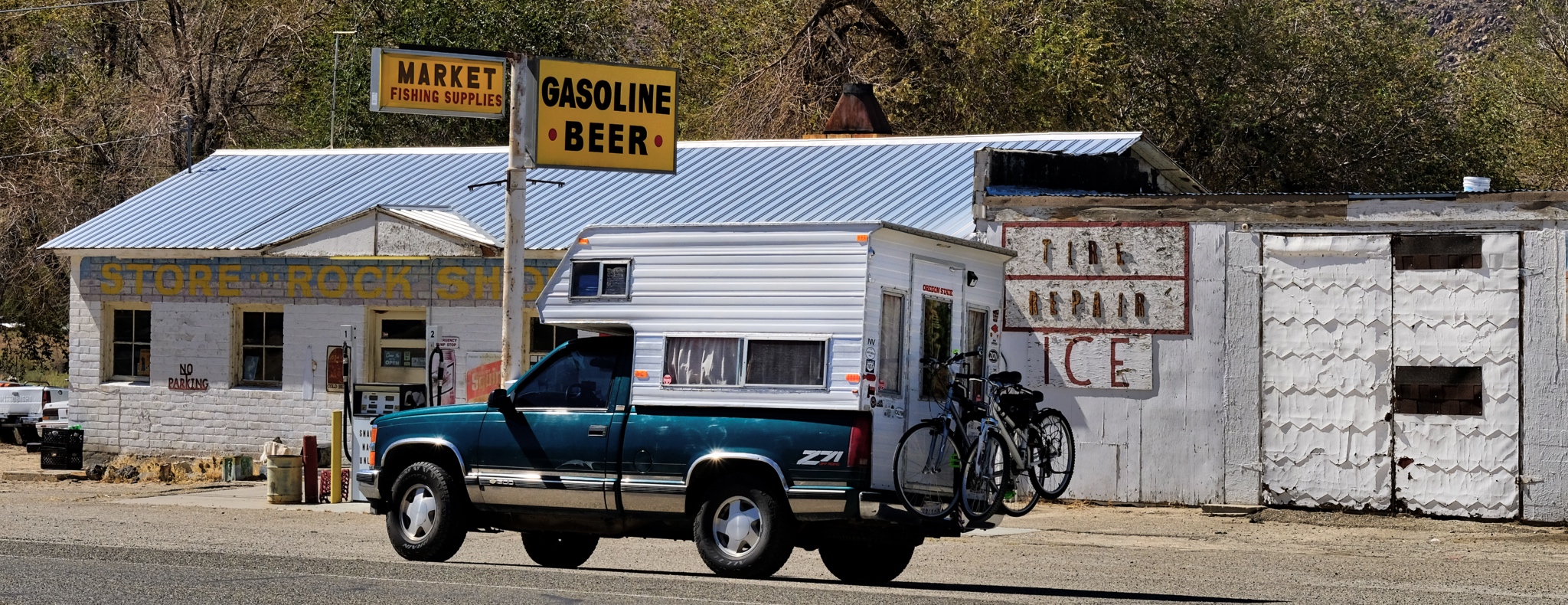
On the road again!!!
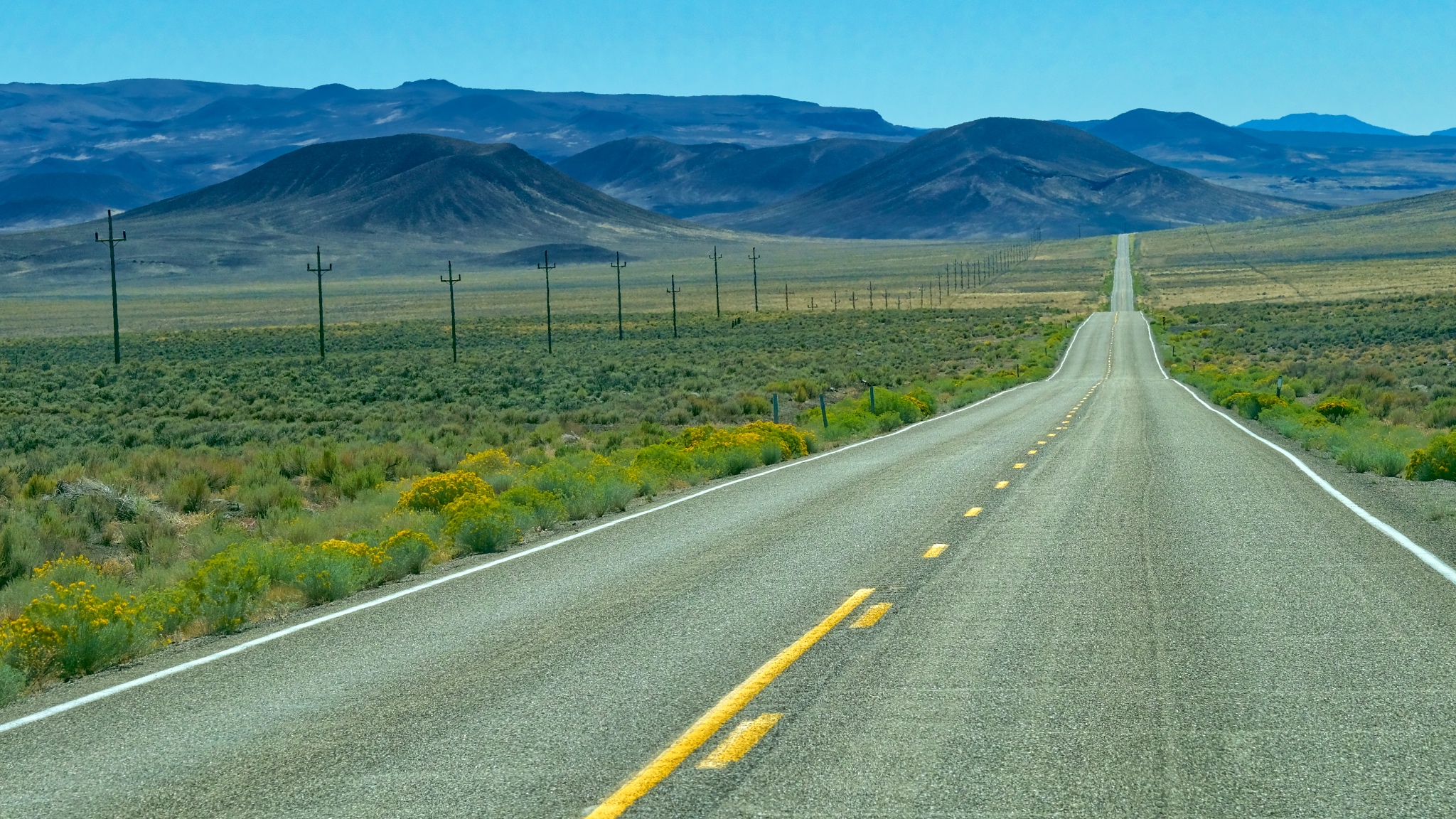 The road out of Utah went through some very deserted landscape. There were miles and miles between any sign of human activity.
The road out of Utah went through some very deserted landscape. There were miles and miles between any sign of human activity.
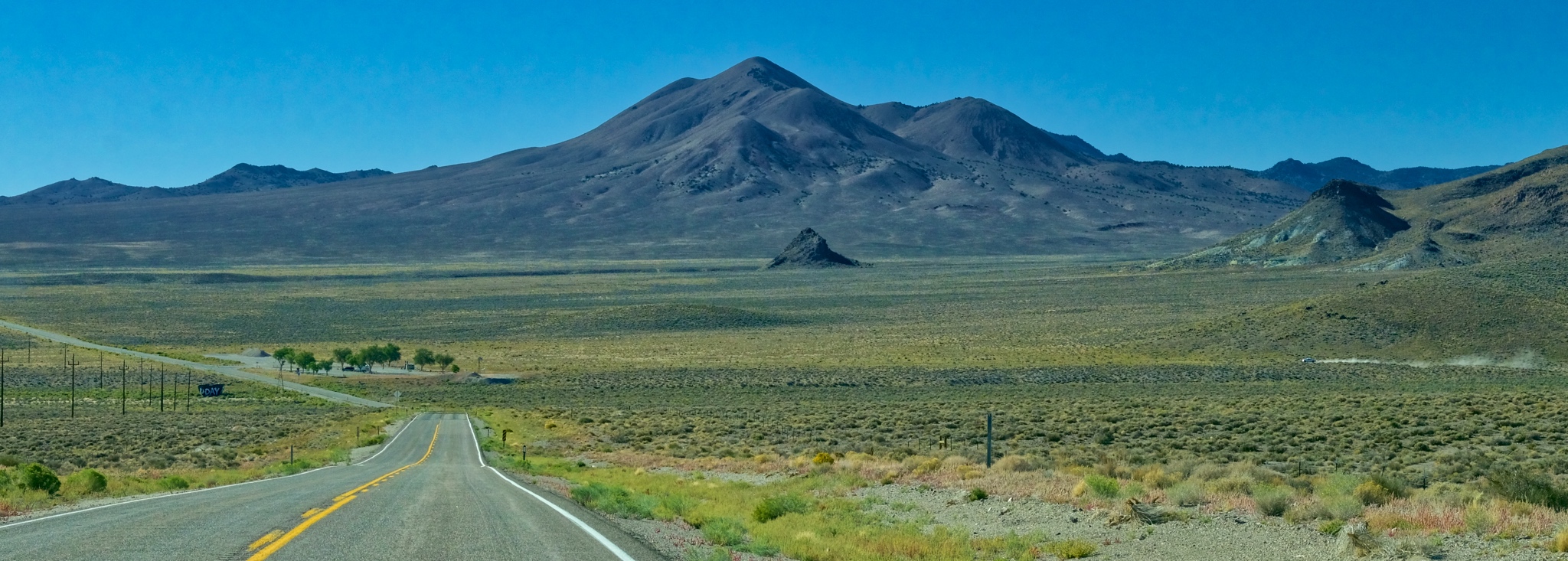 A little human activity after the first hundred miles . . . a roadside stop up ahead on the right.
A little human activity after the first hundred miles . . . a roadside stop up ahead on the right.
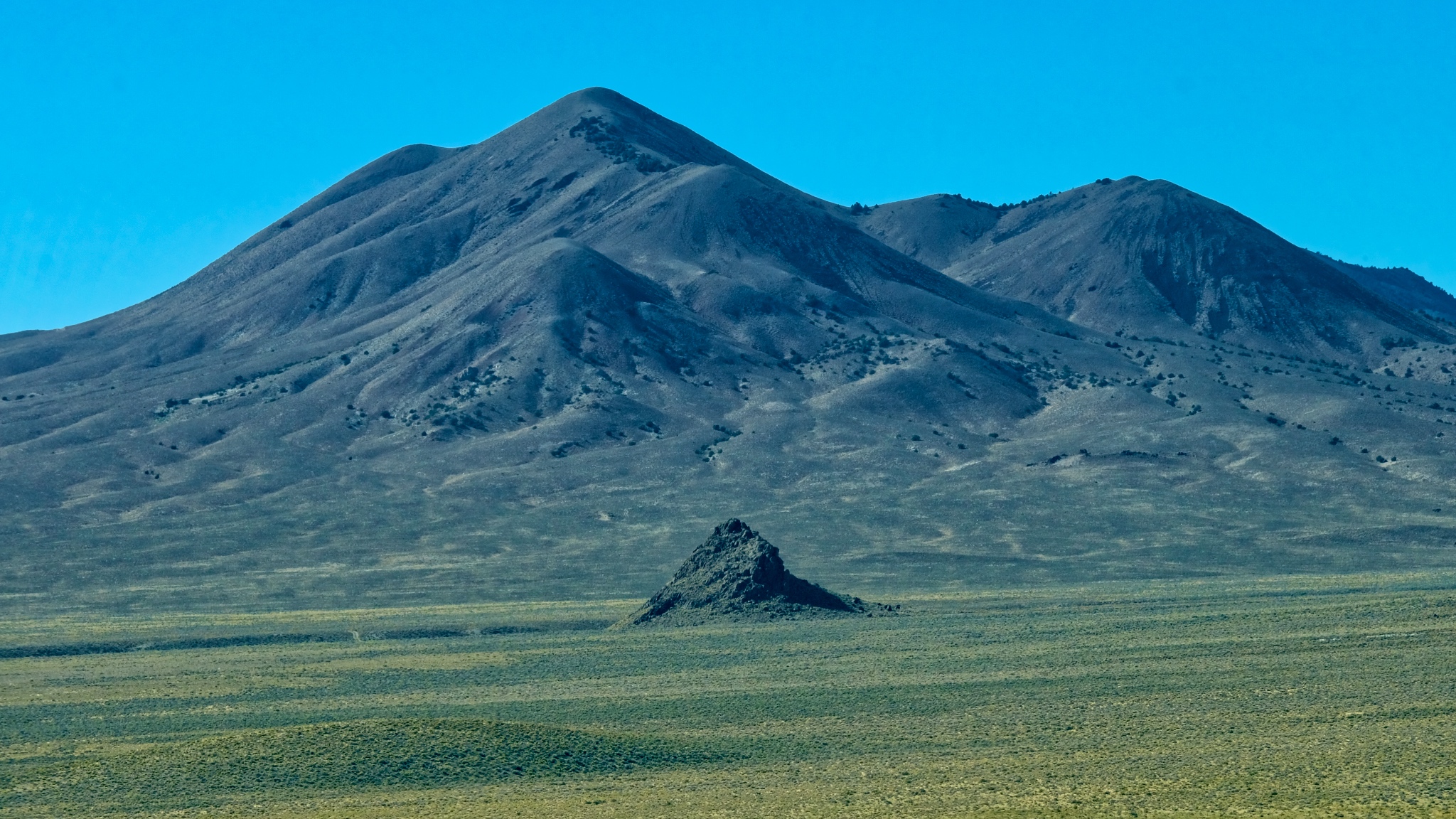 I suppose these geological features exist all over the world, but they would be obscured by forests and towns, and farms. Out here, in this high scrubland, every little remnant of a cinder cone still stands out.
I suppose these geological features exist all over the world, but they would be obscured by forests and towns, and farms. Out here, in this high scrubland, every little remnant of a cinder cone still stands out.
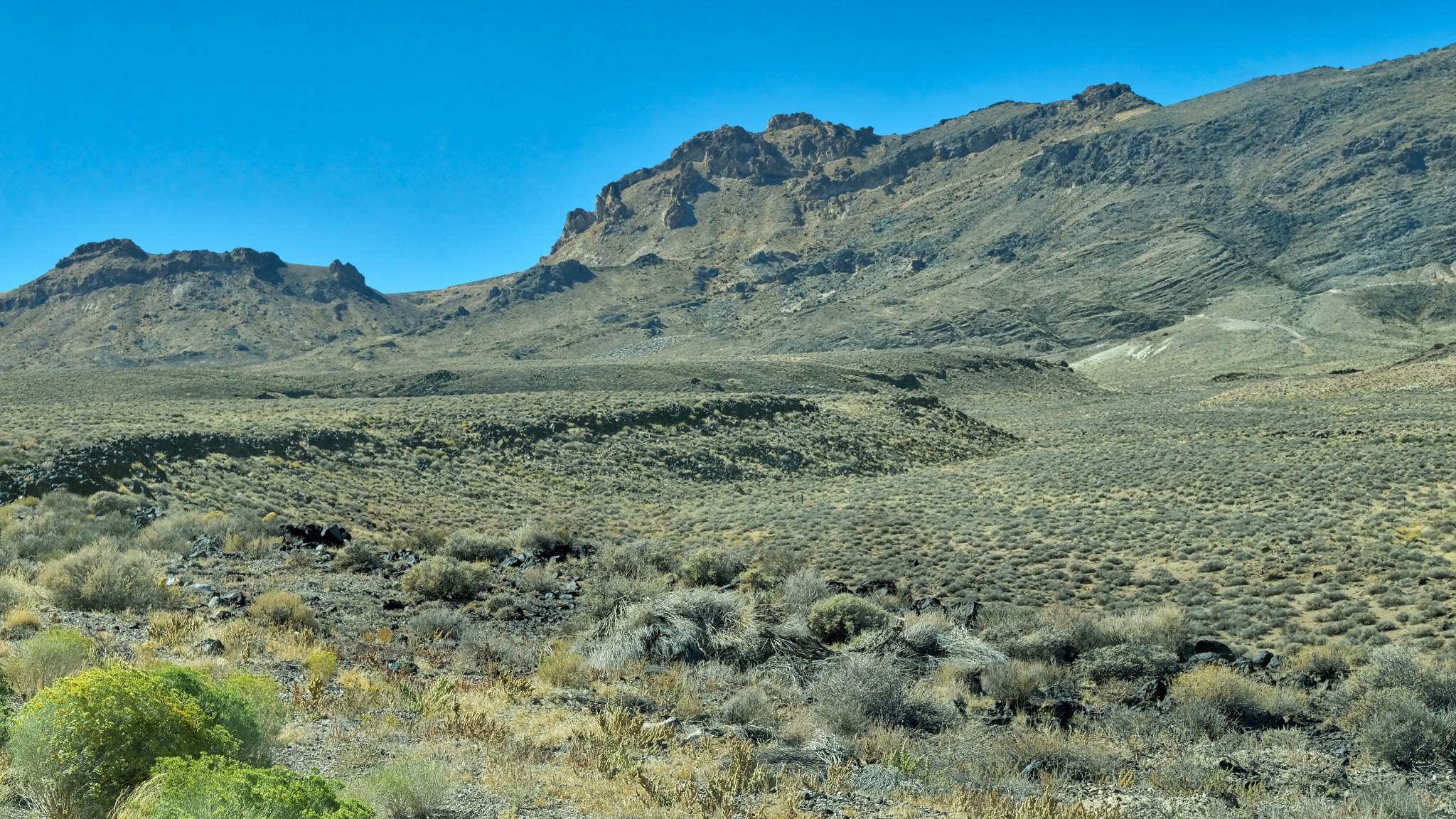 I absolutely love this type of landscape . . . and I don't know why . . . maybe the expression "high lonesome" explains it. I feel pulled to just wander around these hills . . . for years.
I absolutely love this type of landscape . . . and I don't know why . . . maybe the expression "high lonesome" explains it. I feel pulled to just wander around these hills . . . for years.
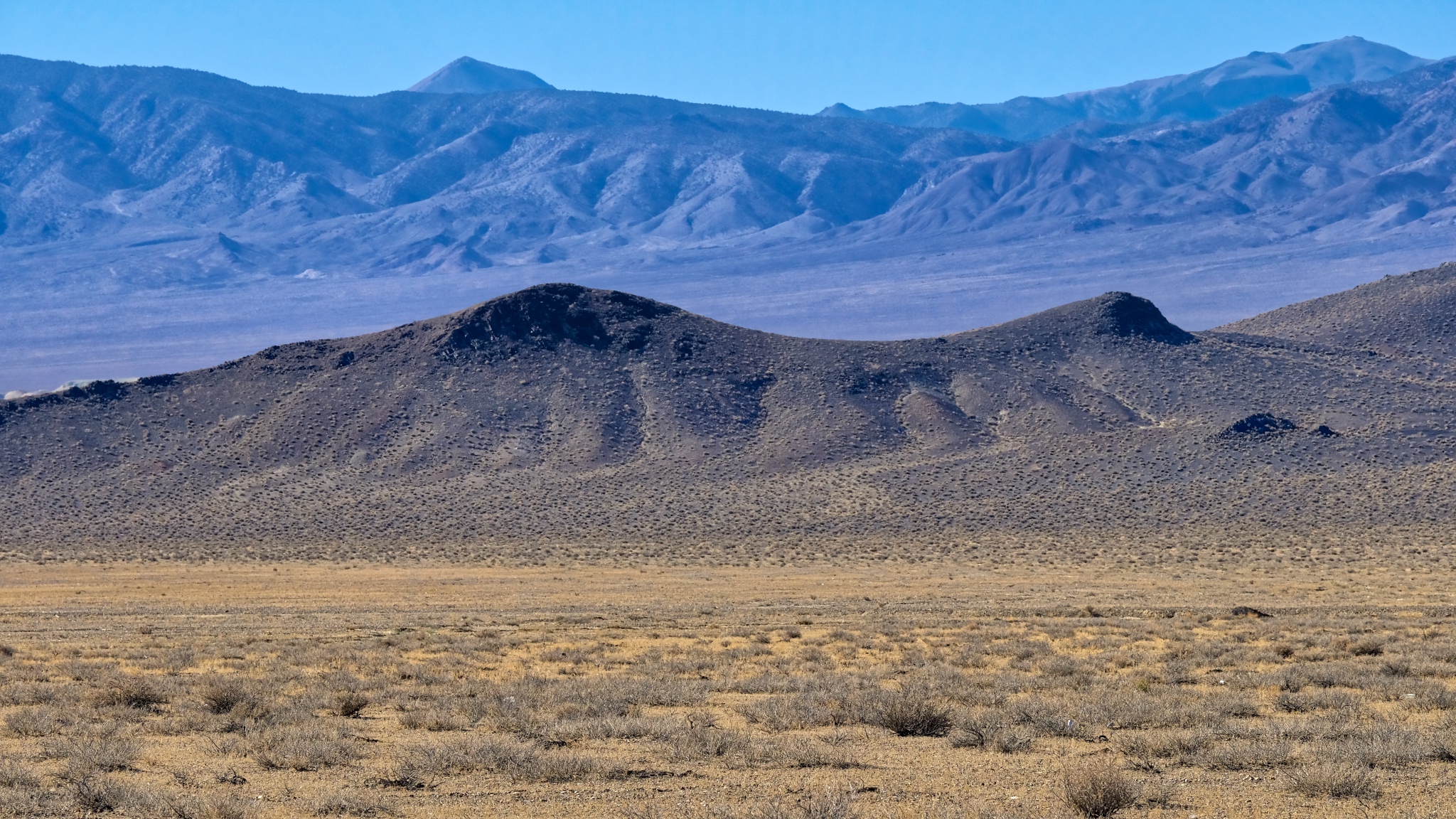 An endless expanse of an endless variety of shapes and colorful vistas.
An endless expanse of an endless variety of shapes and colorful vistas.
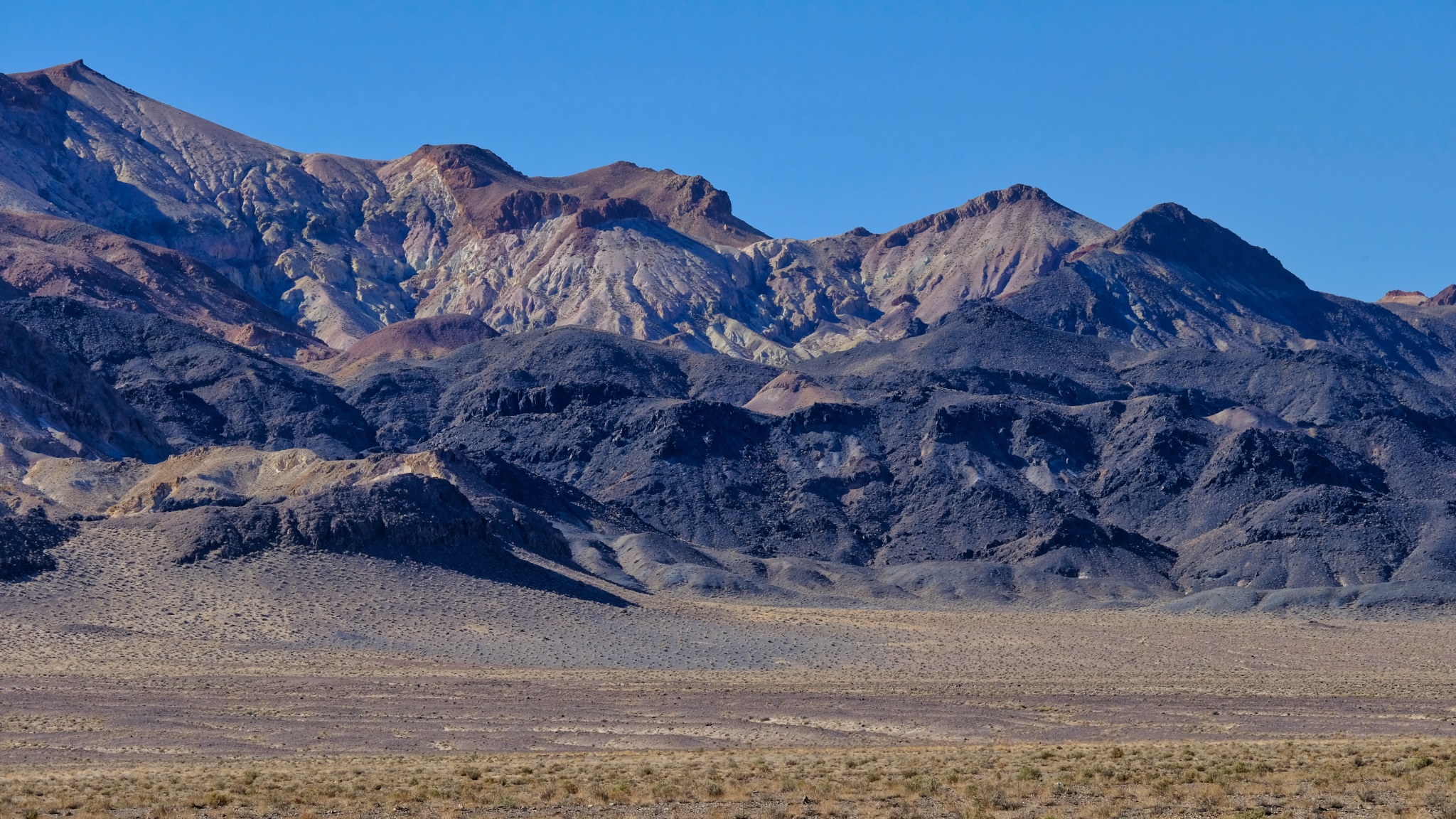 Here and there can be seen traces of former mining operations in the scars on the mountains.
Here and there can be seen traces of former mining operations in the scars on the mountains.
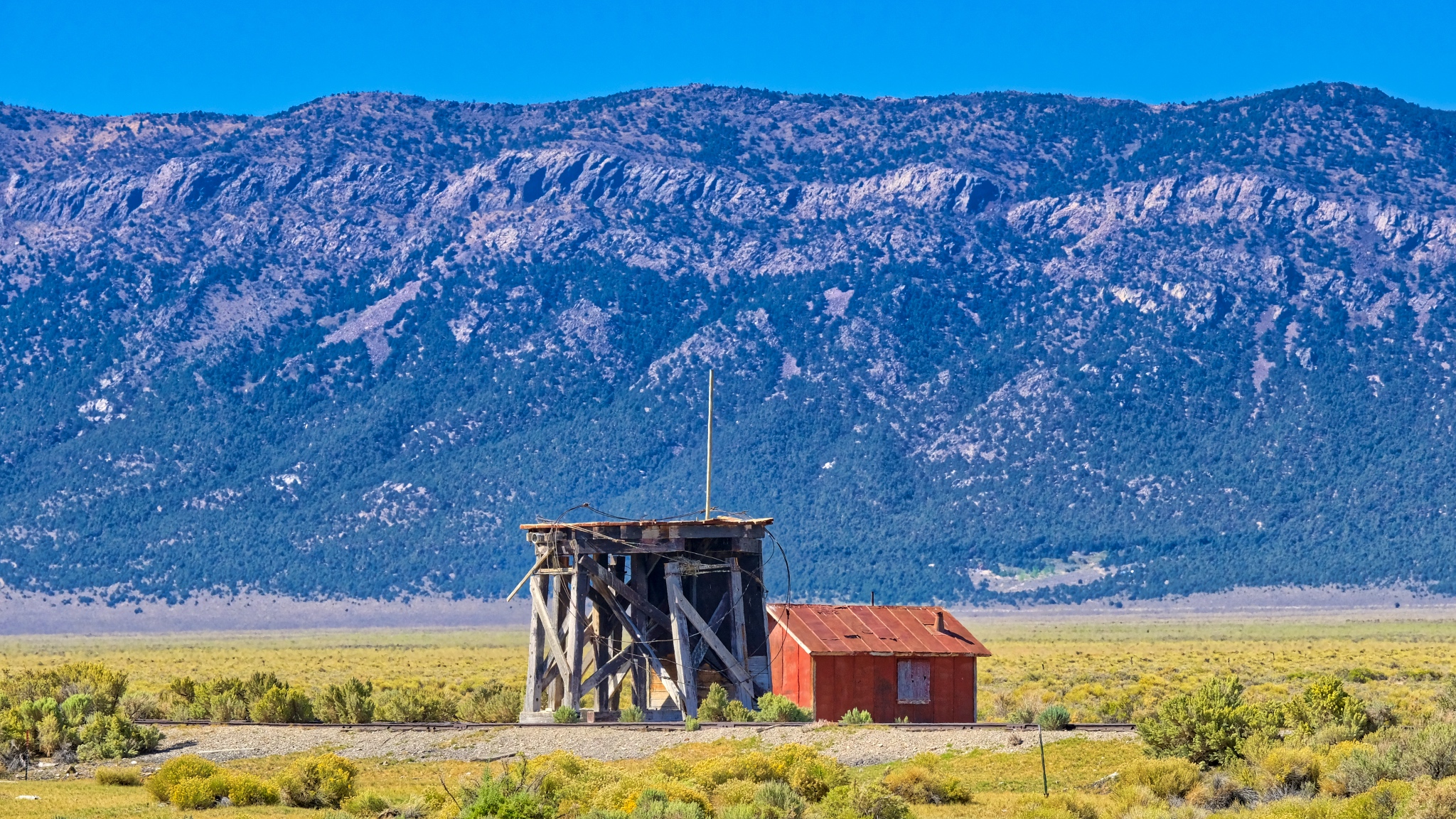 An abandoned water tower servicing an abandoned rail spur near Cherry Creek, Nevada.
An abandoned water tower servicing an abandoned rail spur near Cherry Creek, Nevada.
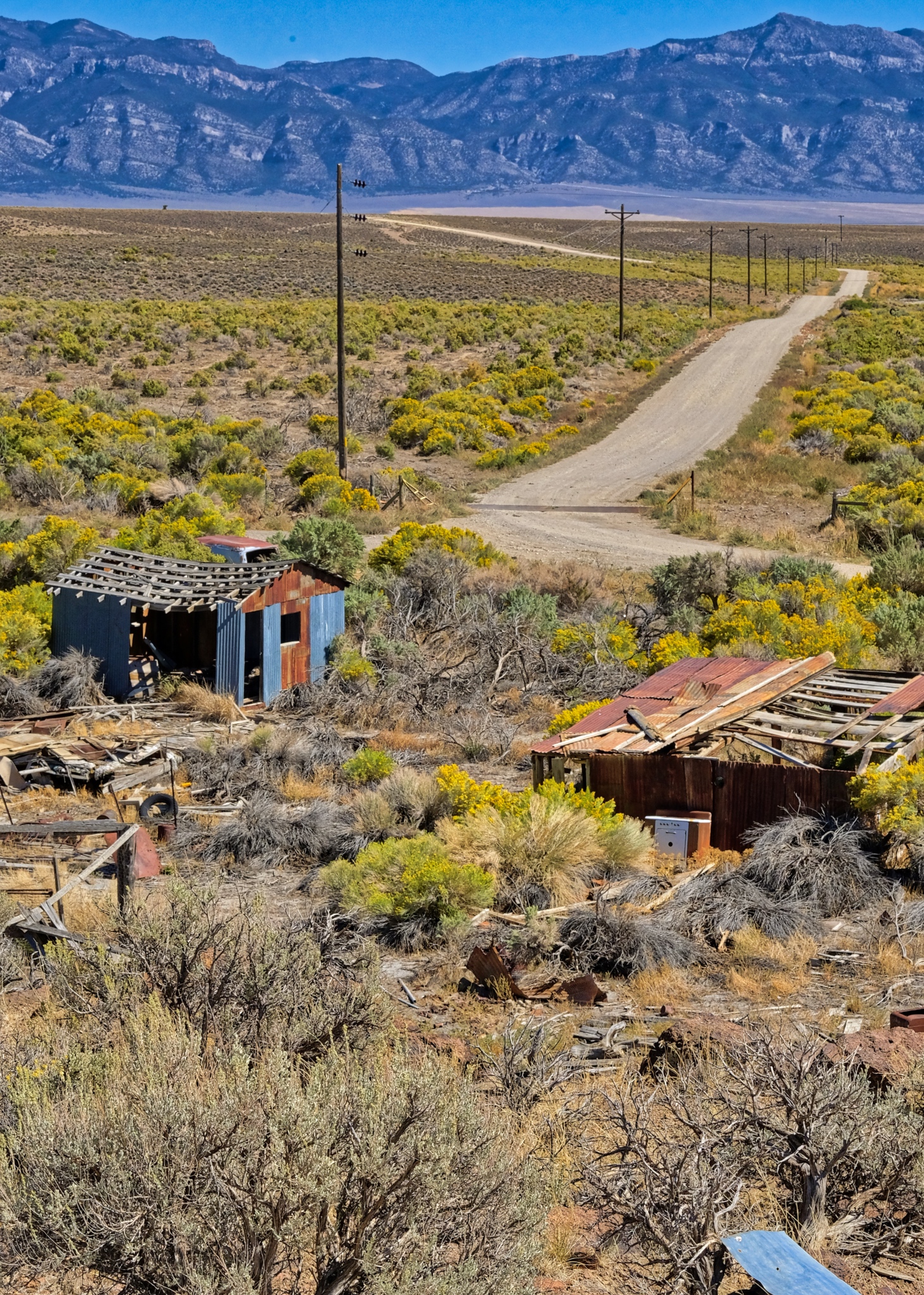 I passed by many roads I didn't have time to explore.
I passed by many roads I didn't have time to explore.
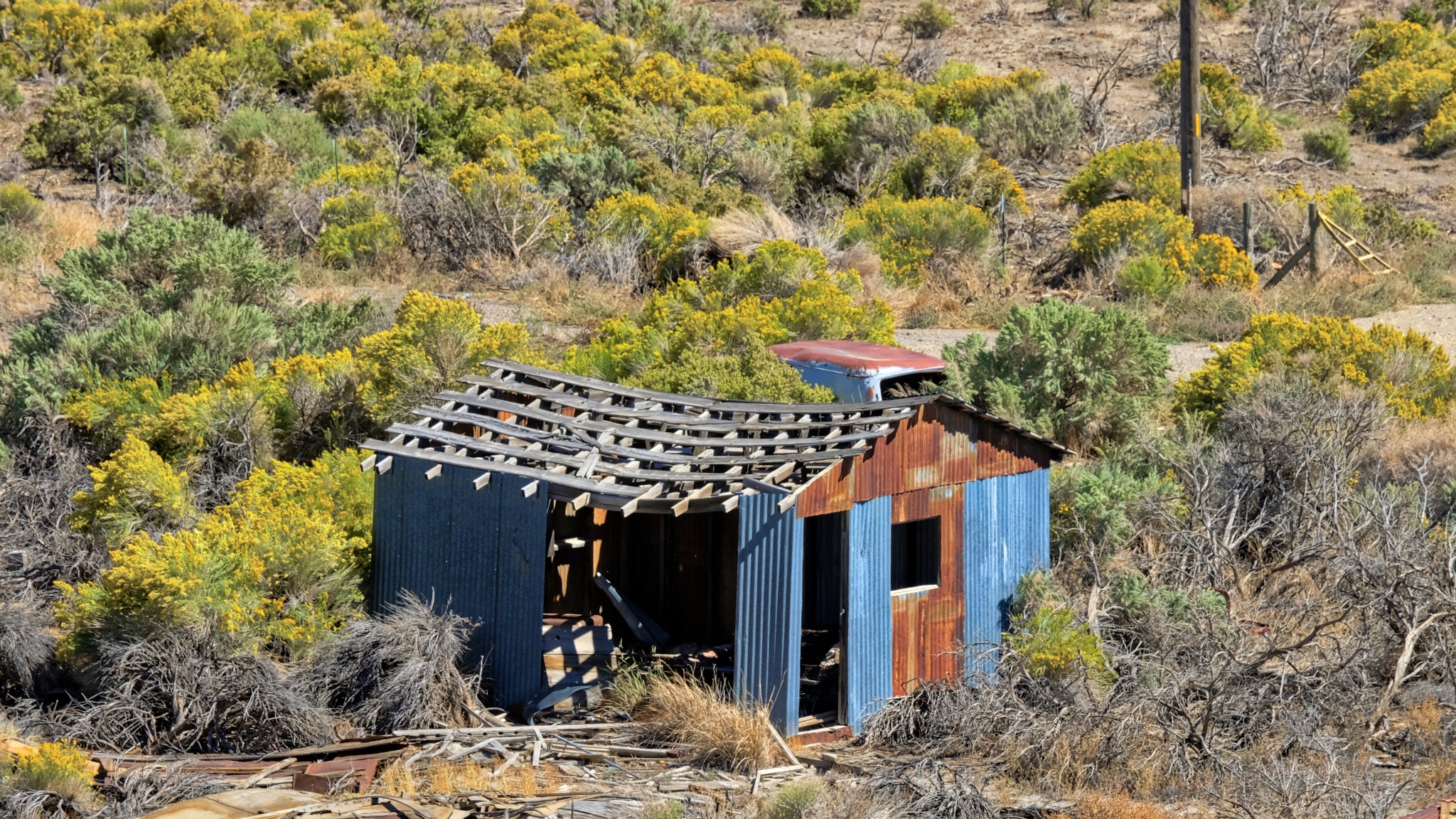 A story for each abandoned shack out here . . . a story never to be told.
A story for each abandoned shack out here . . . a story never to be told.
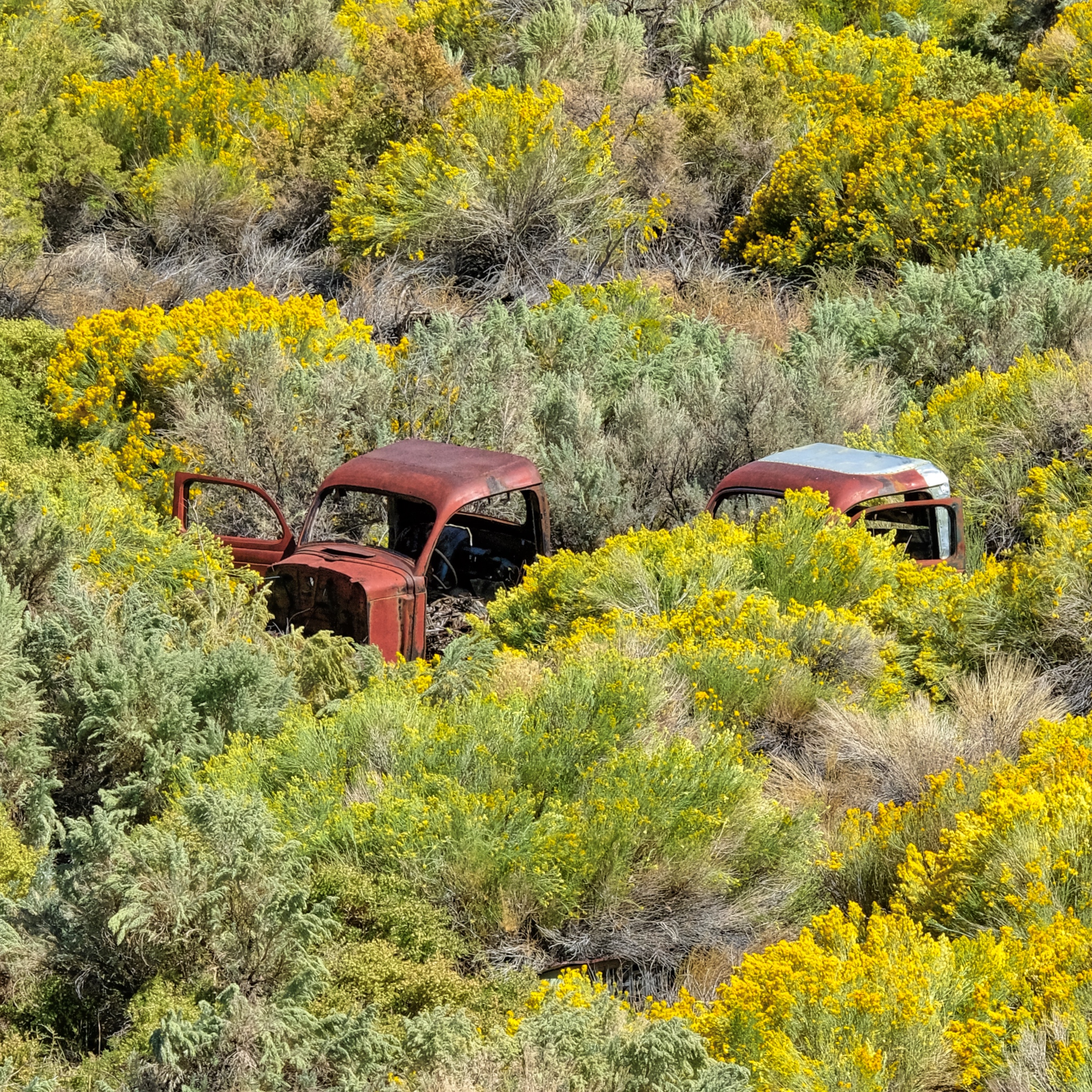 Used and left behind. I'm surprised the hot rodders and rat rodders haven't scavenged these old truck cabs.
Used and left behind. I'm surprised the hot rodders and rat rodders haven't scavenged these old truck cabs.
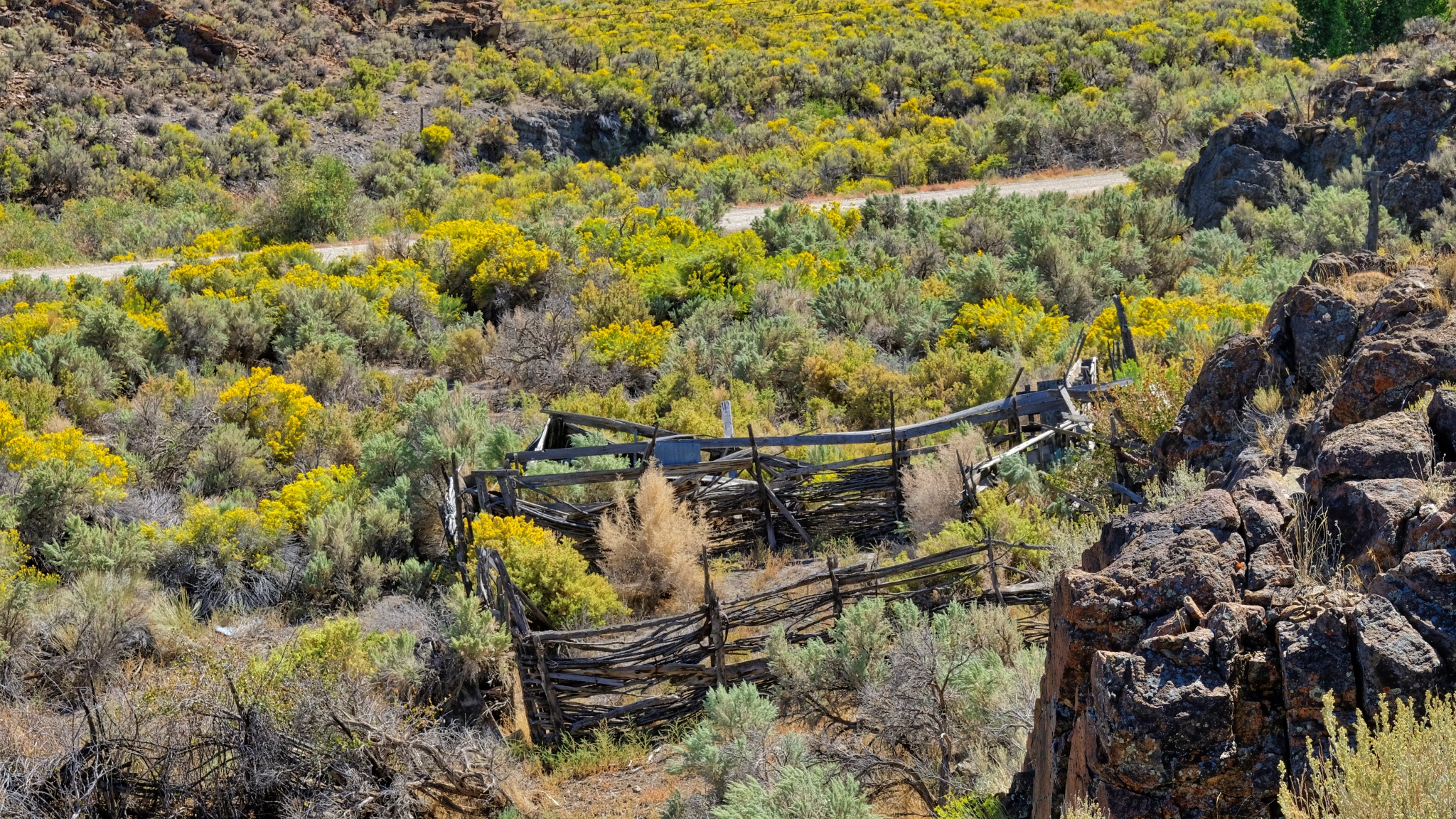 Hopes of ranching left behind with the decaying split beams.
Hopes of ranching left behind with the decaying split beams.
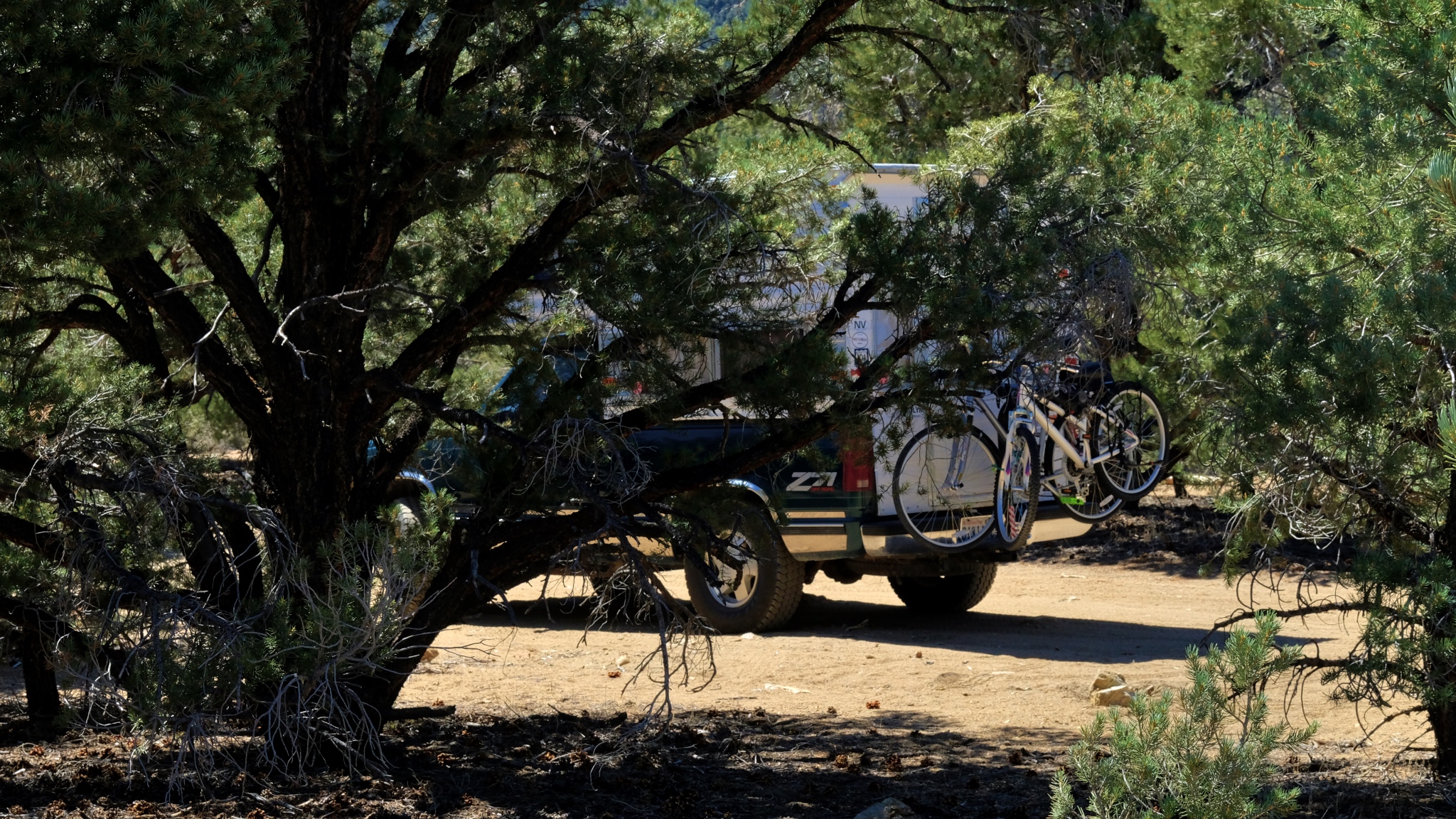 It is good to have four wheel drive when nature calls.
It is good to have four wheel drive when nature calls.
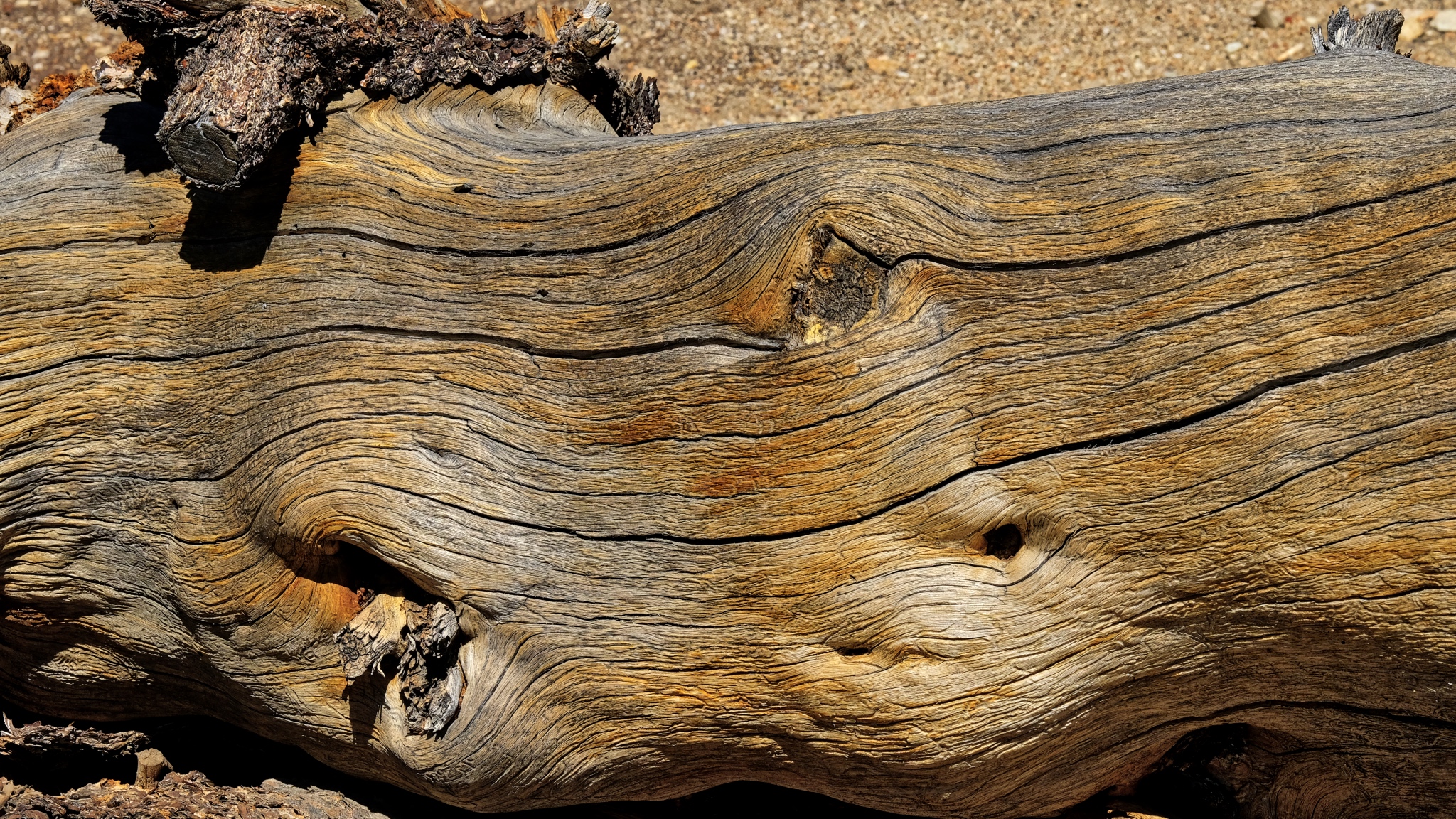 An ancient bristle cone pine trunk.
An ancient bristle cone pine trunk.
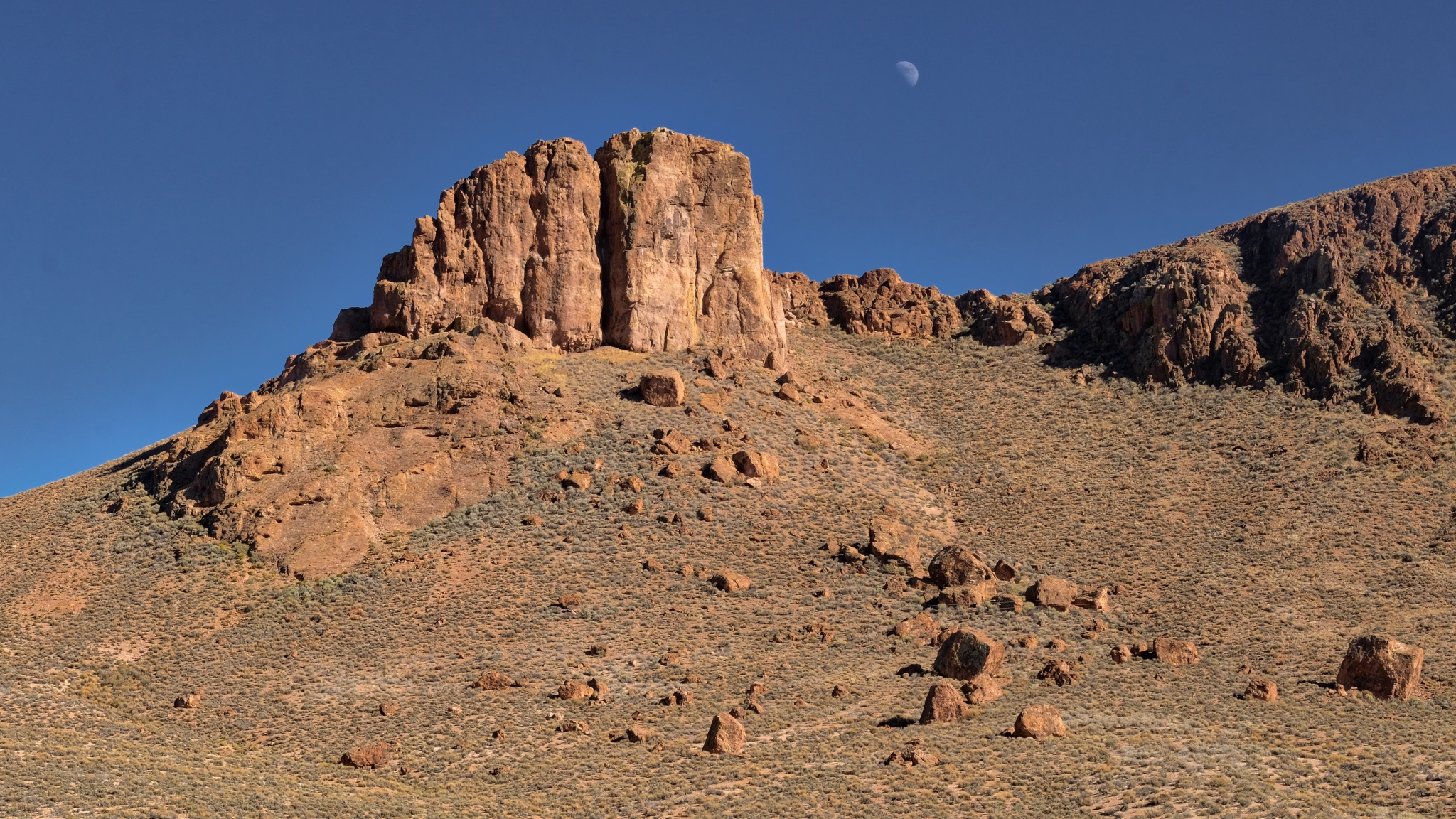 A left behind moon on a clear Nevada morning.
A left behind moon on a clear Nevada morning.
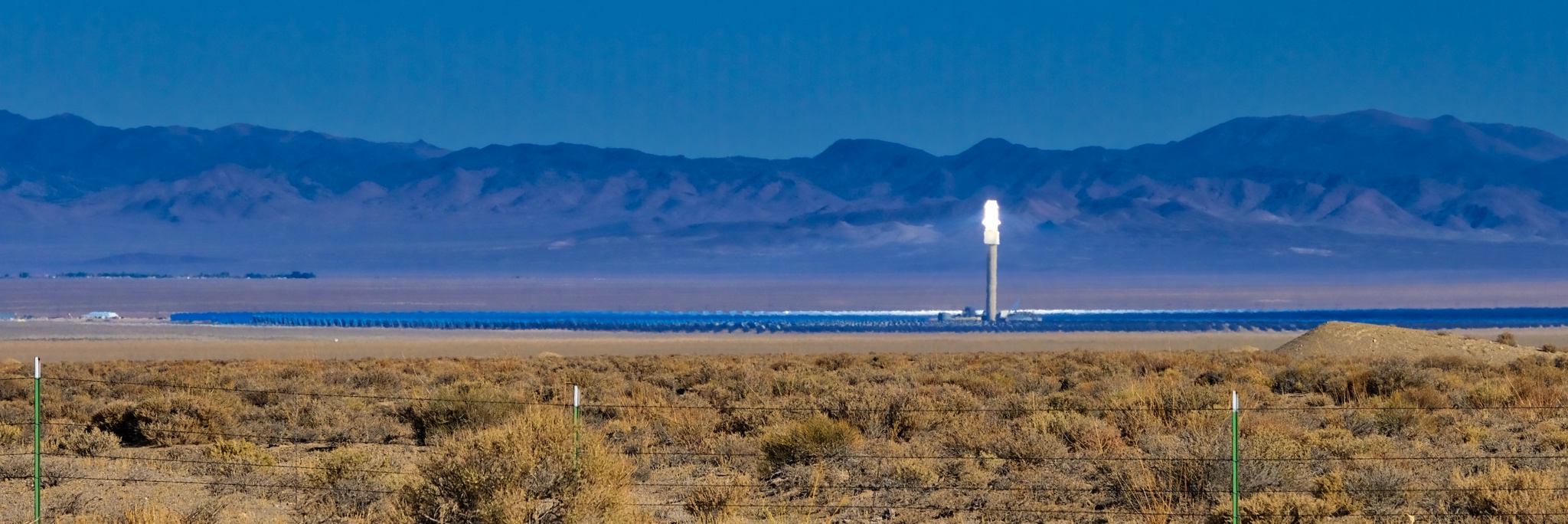 A solar reflector energy farm way out in the desert. Amazing technology . . . you could almost smell the fried birds from the road!
A solar reflector energy farm way out in the desert. Amazing technology . . . you could almost smell the fried birds from the road!
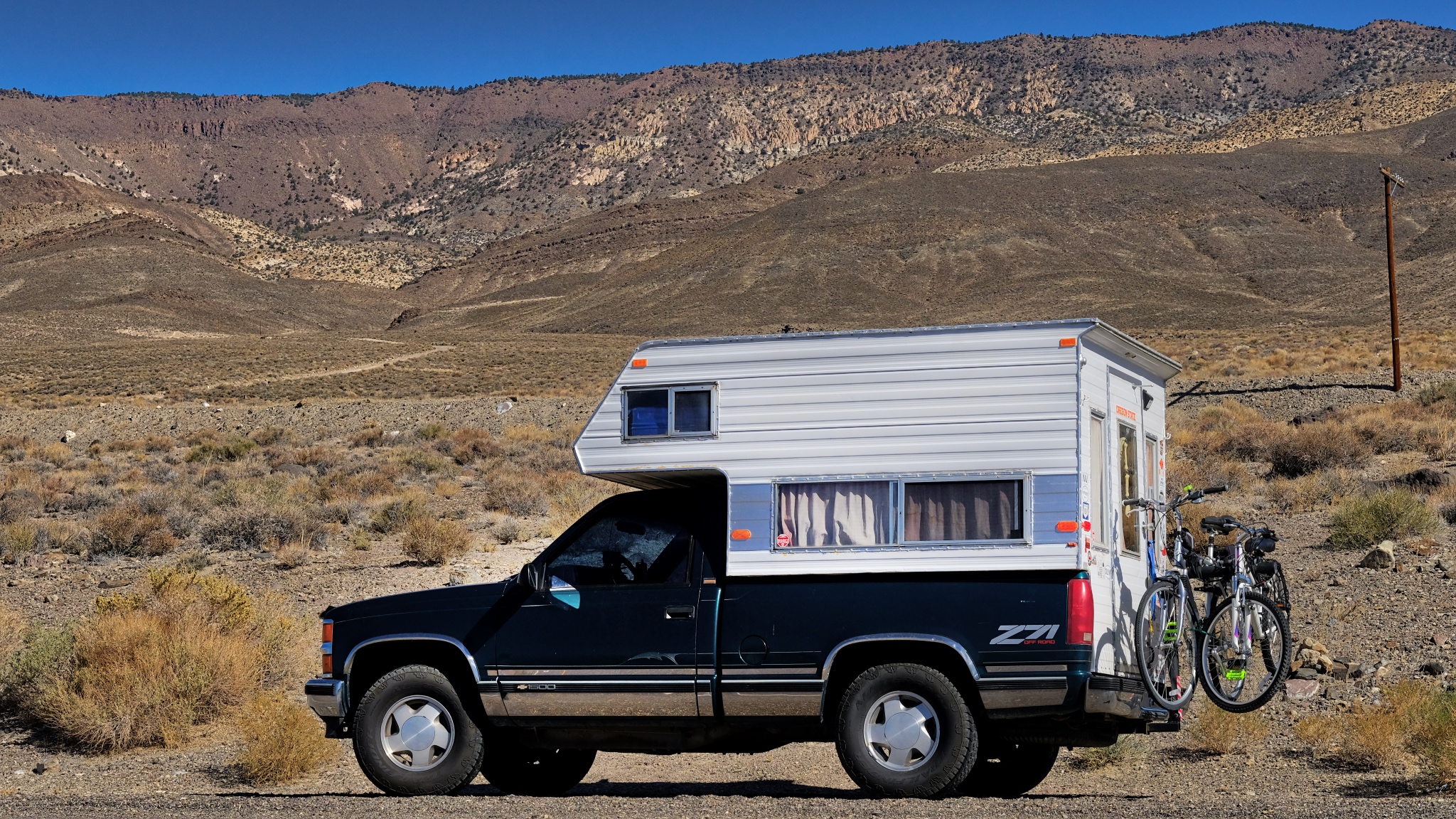 Loving my life on the road!
Loving my life on the road!
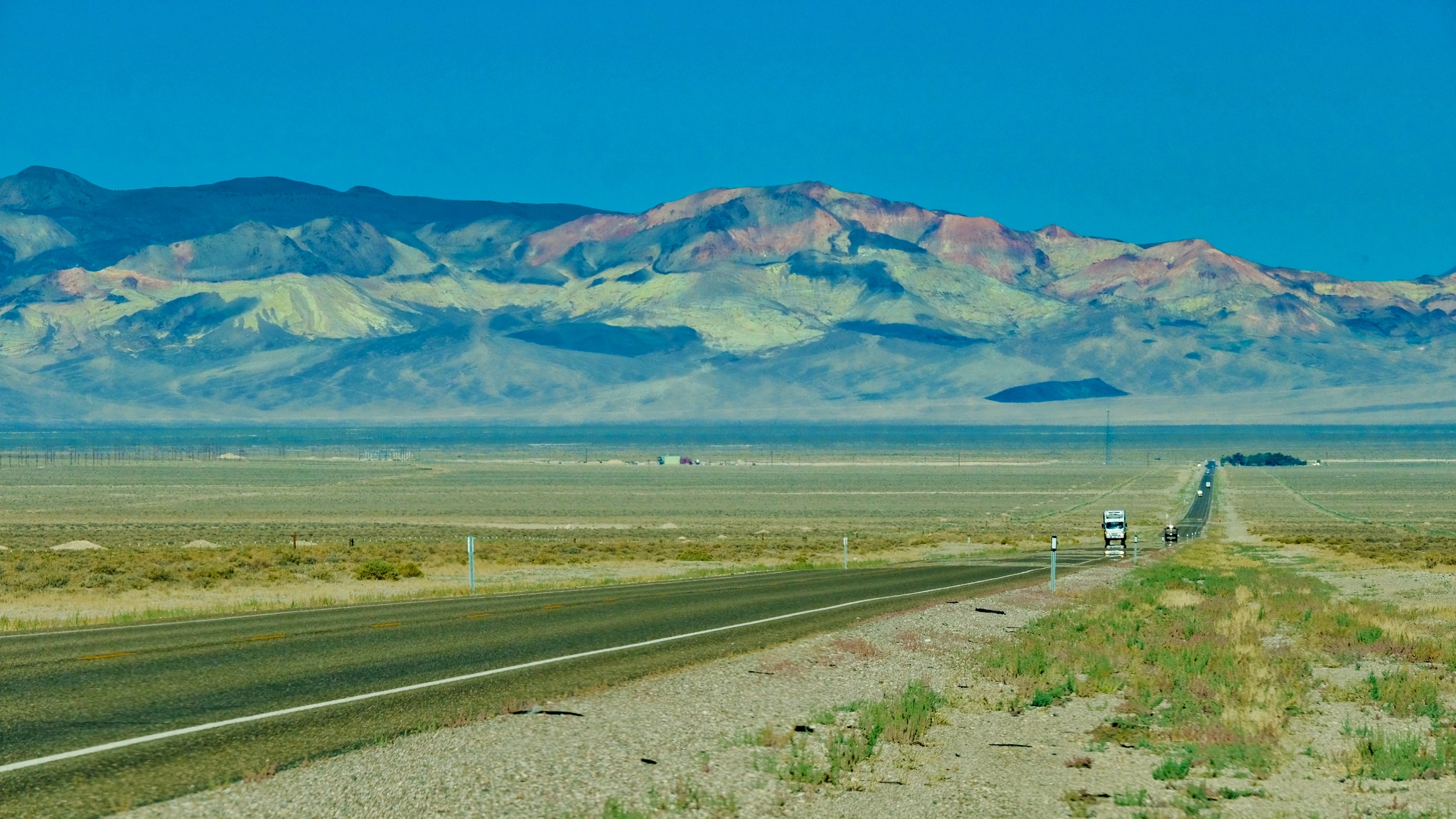 A long road to an other abandoned mountainside mine.
A long road to an other abandoned mountainside mine.
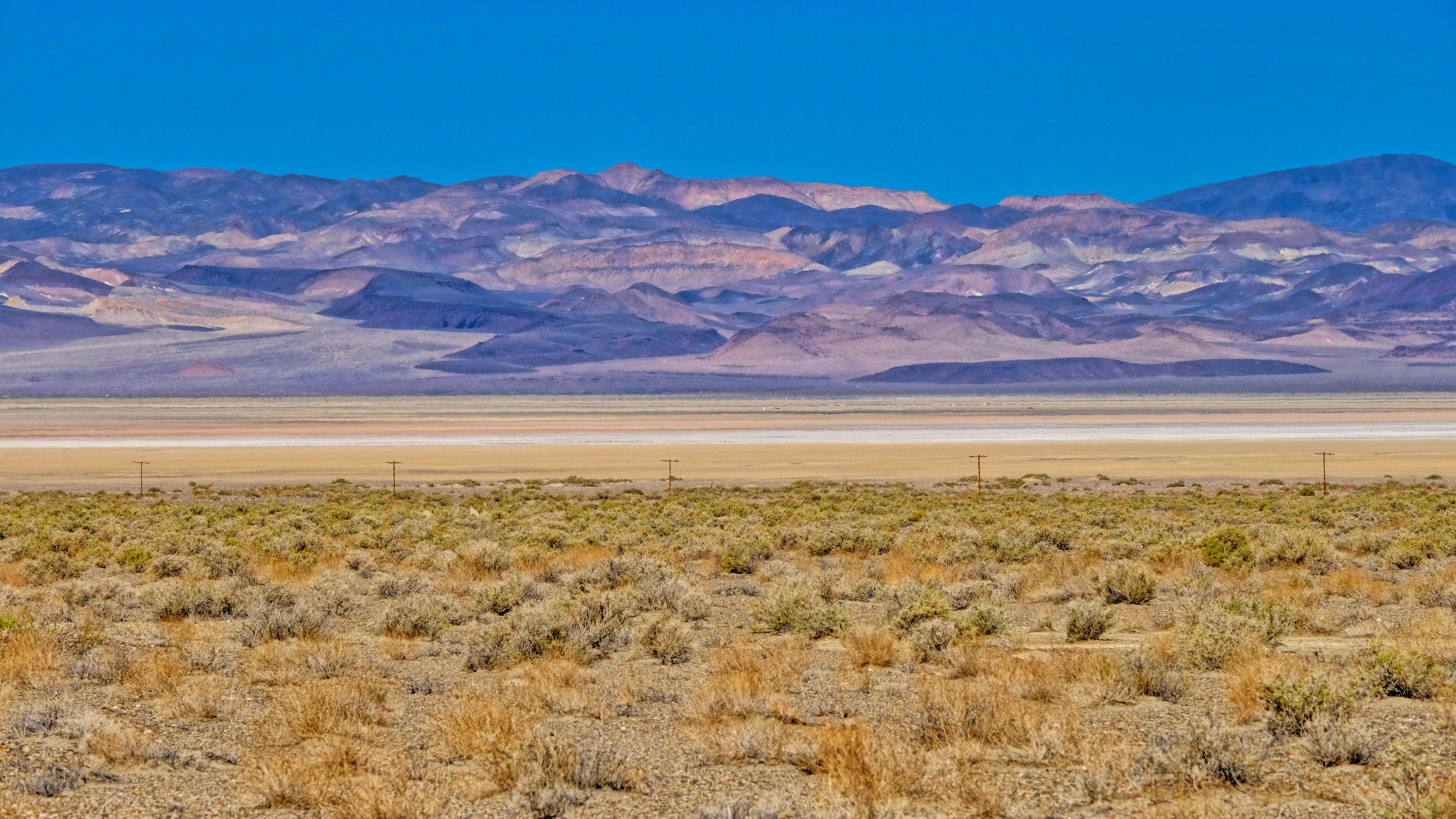 Scrub brush, dry lake, and mineral rich mountains.
Scrub brush, dry lake, and mineral rich mountains.
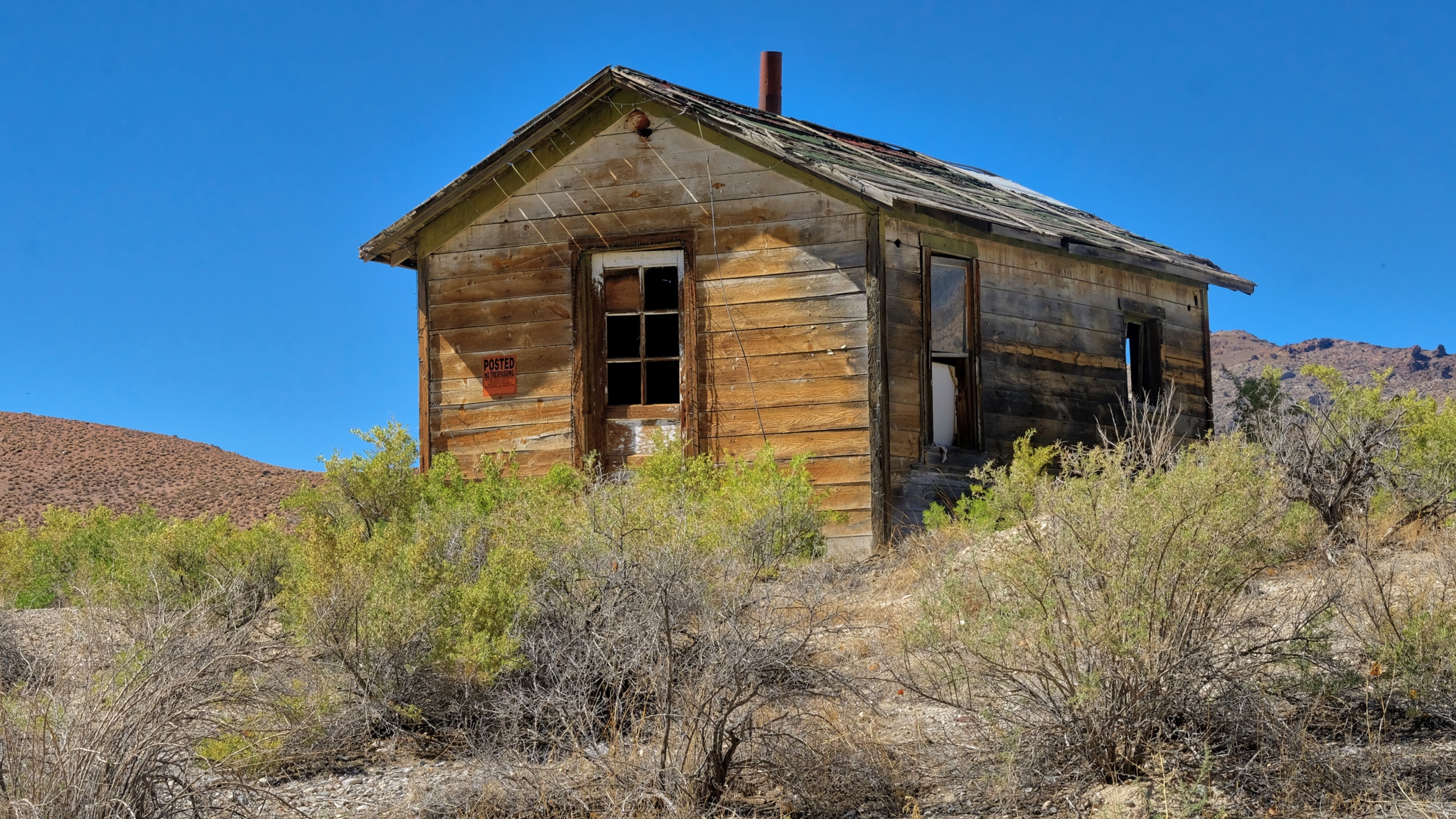 With so few structures around, I stopped at each one . . .
With so few structures around, I stopped at each one . . .
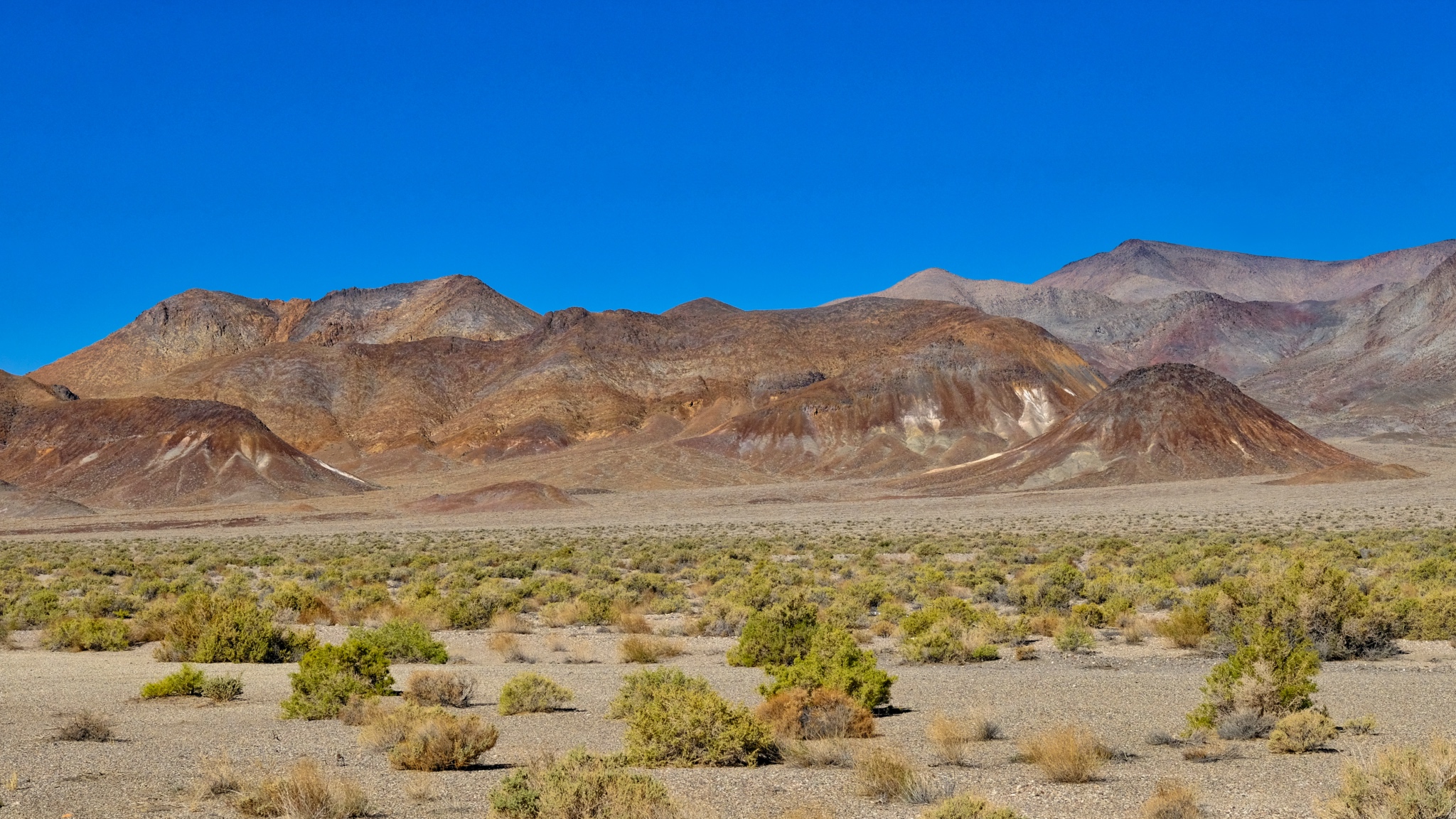 Mineral rich hills . . . another abandoned mining operation.
Mineral rich hills . . . another abandoned mining operation.
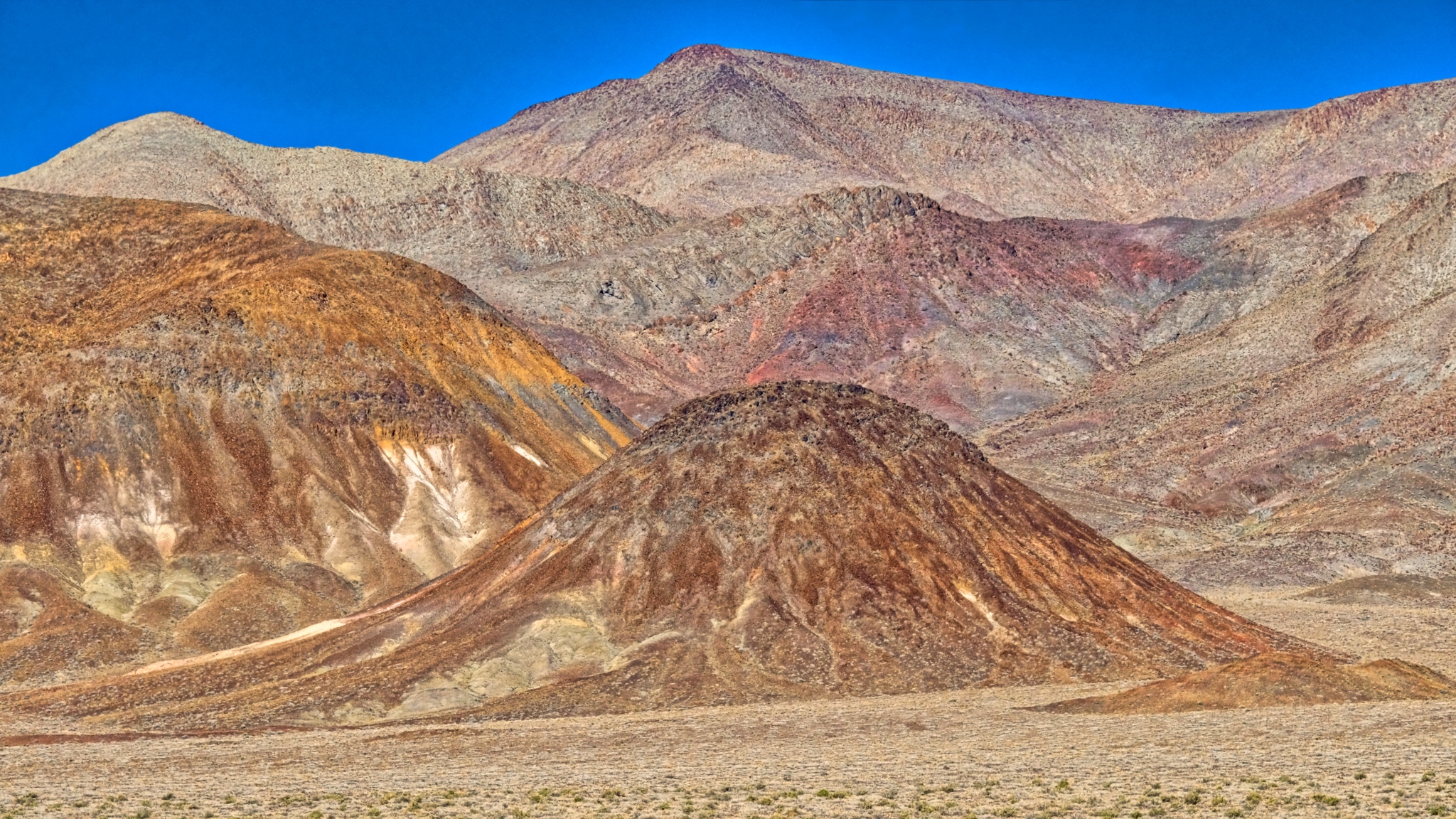 Strange hills left behind to weather after mining. This looks like a tungsten vein.
Strange hills left behind to weather after mining. This looks like a tungsten vein.
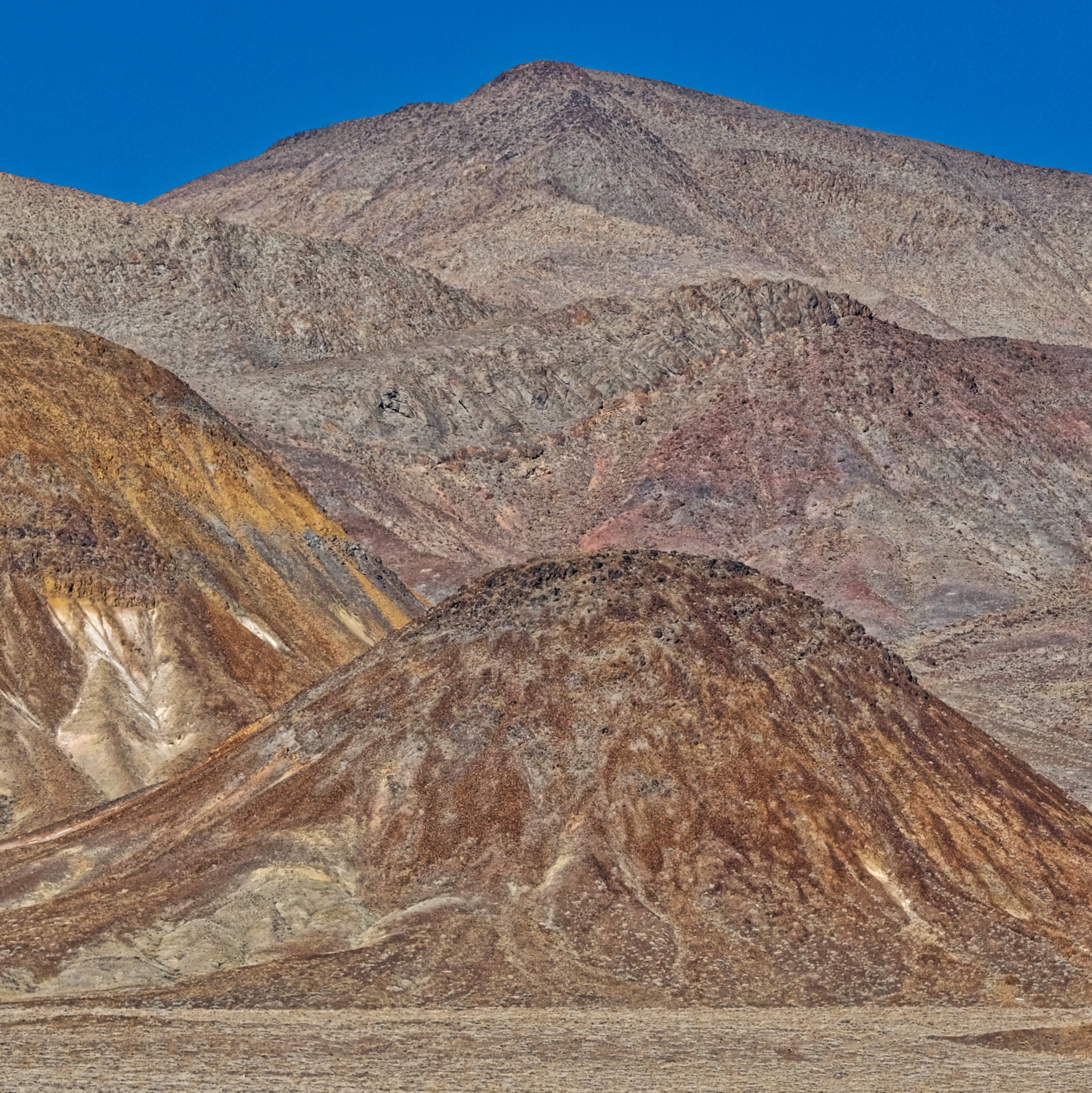 The colors, shapes, and textures of these mined hills were simply fantastic.
The colors, shapes, and textures of these mined hills were simply fantastic.
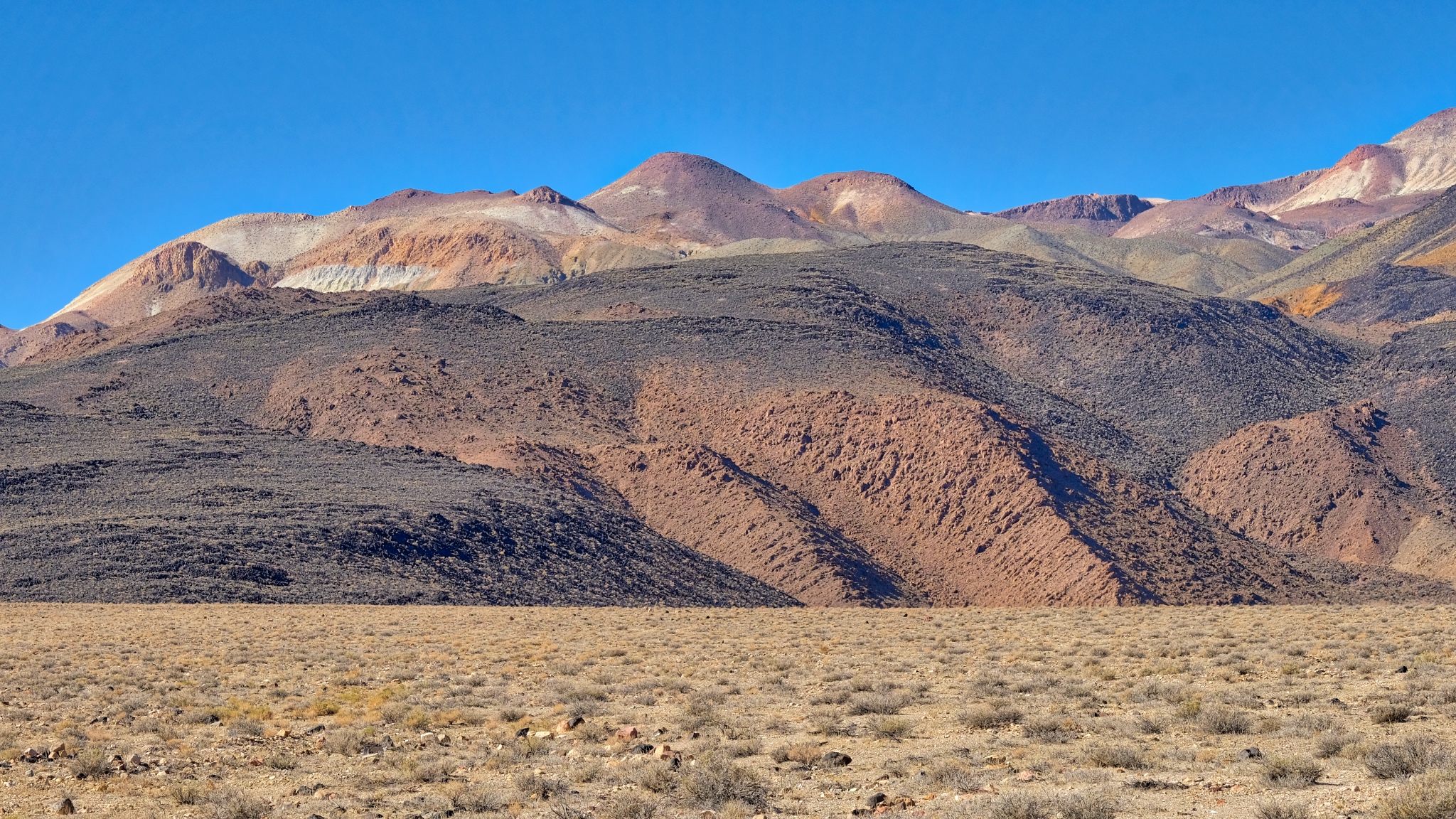 Geology everywhere (of course).
Geology everywhere (of course).
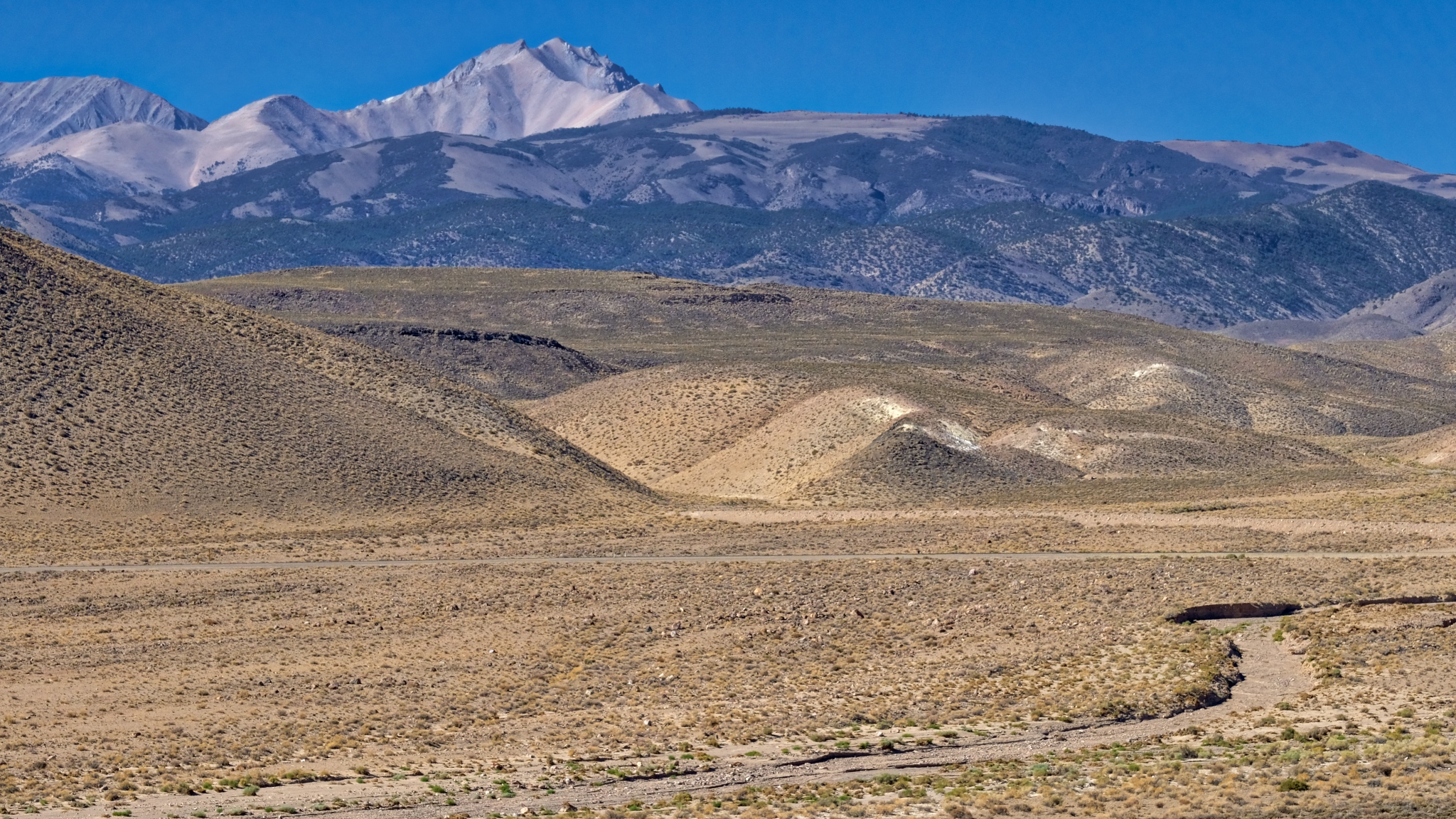 Along the highway a gypsum deposit.
Along the highway a gypsum deposit.
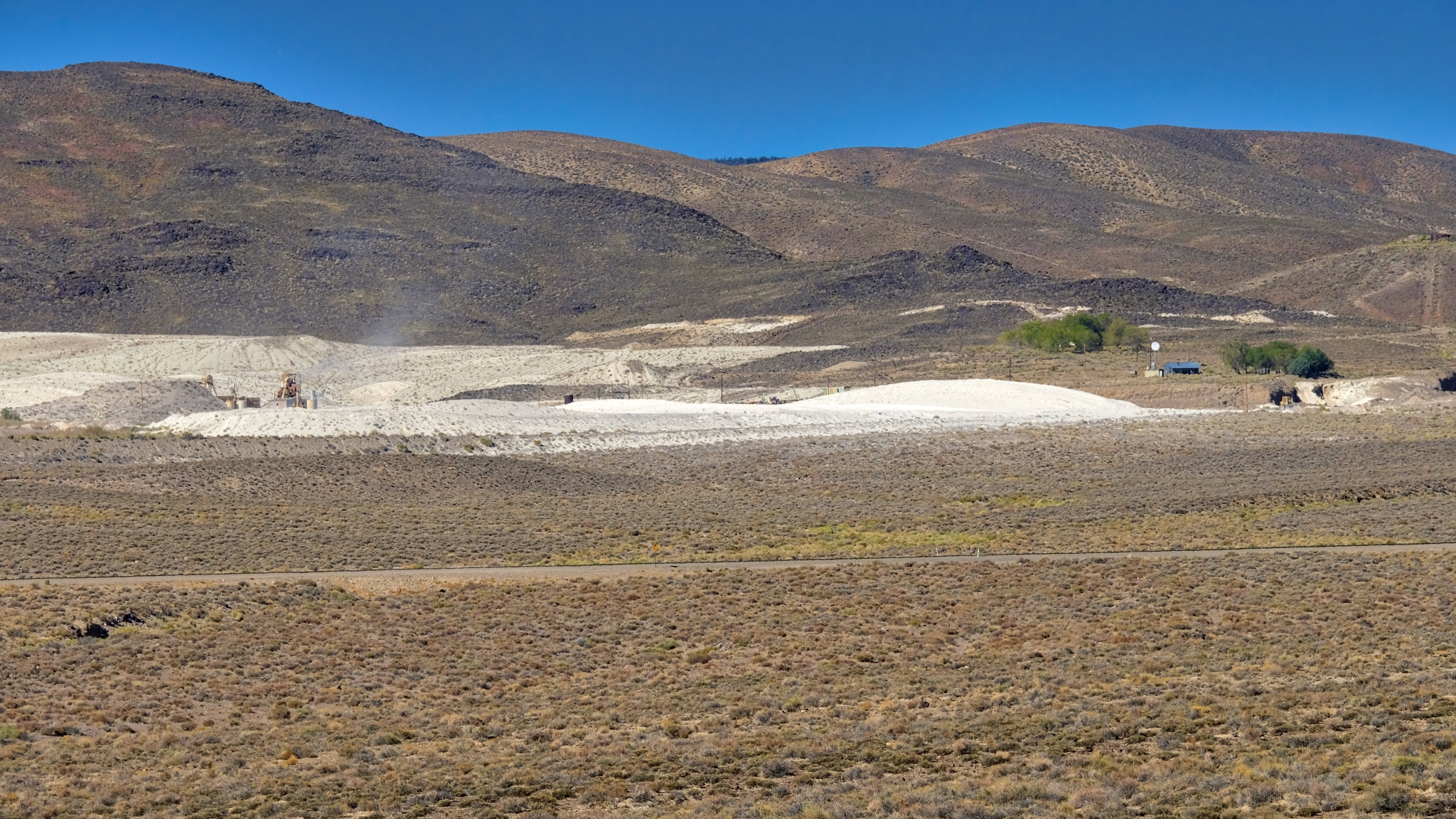 An active gypsum mine.
An active gypsum mine.
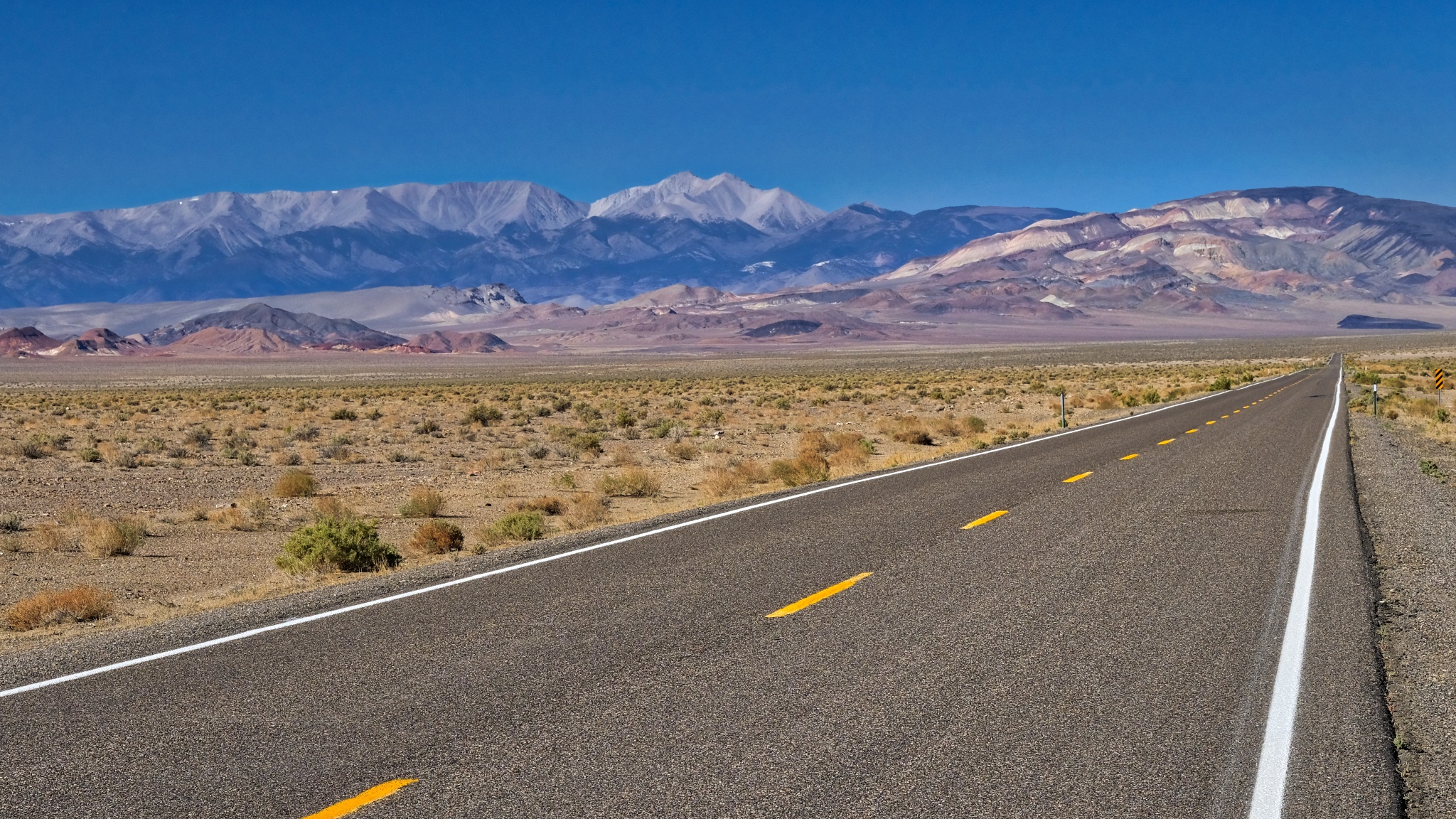 Coming up on the Boundary Range, which separates Nevada from California.
Coming up on the Boundary Range, which separates Nevada from California.
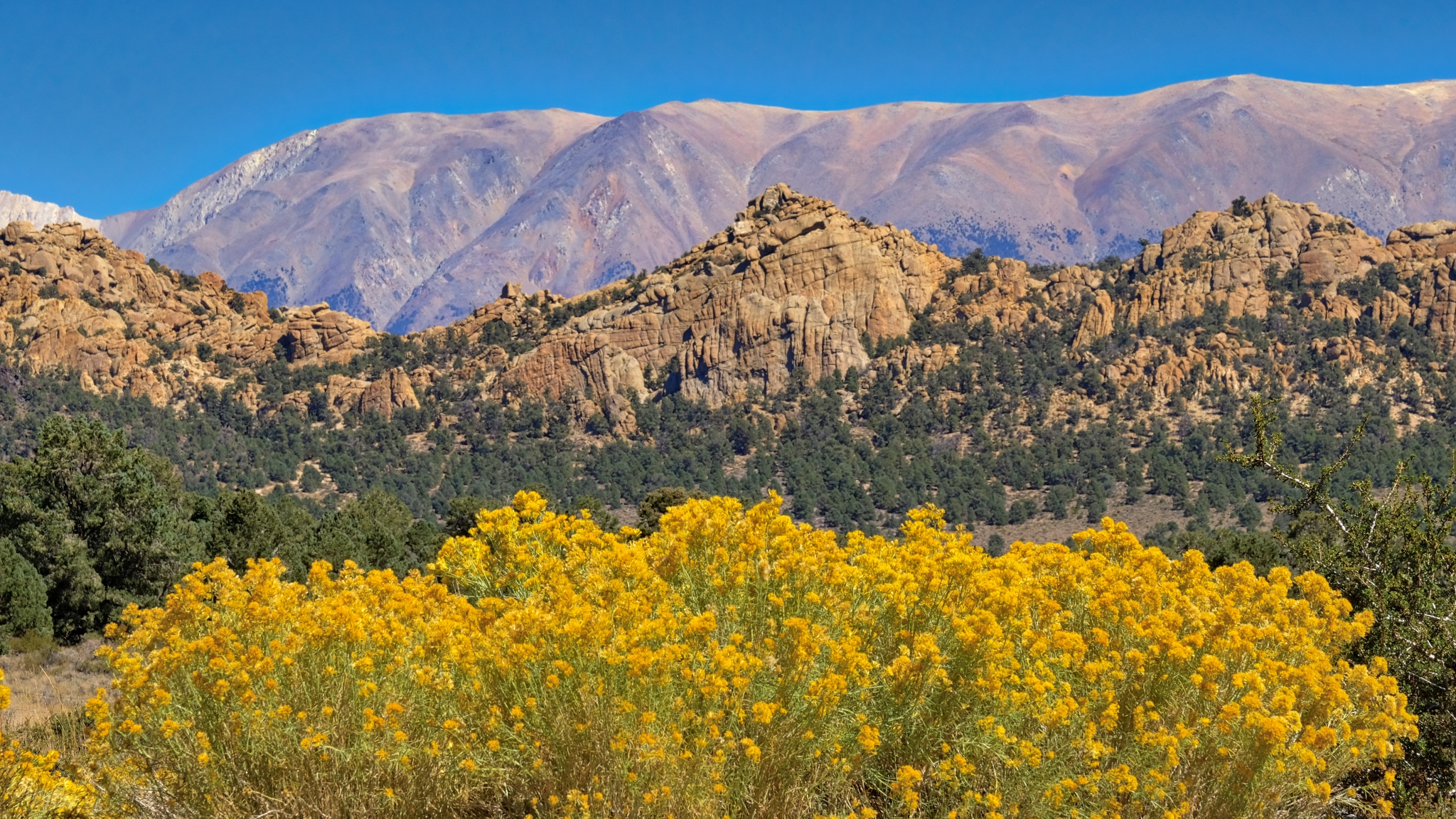 Some stunning flowering scenes as I began to gain in elevation into the Boundary Range.
Some stunning flowering scenes as I began to gain in elevation into the Boundary Range.
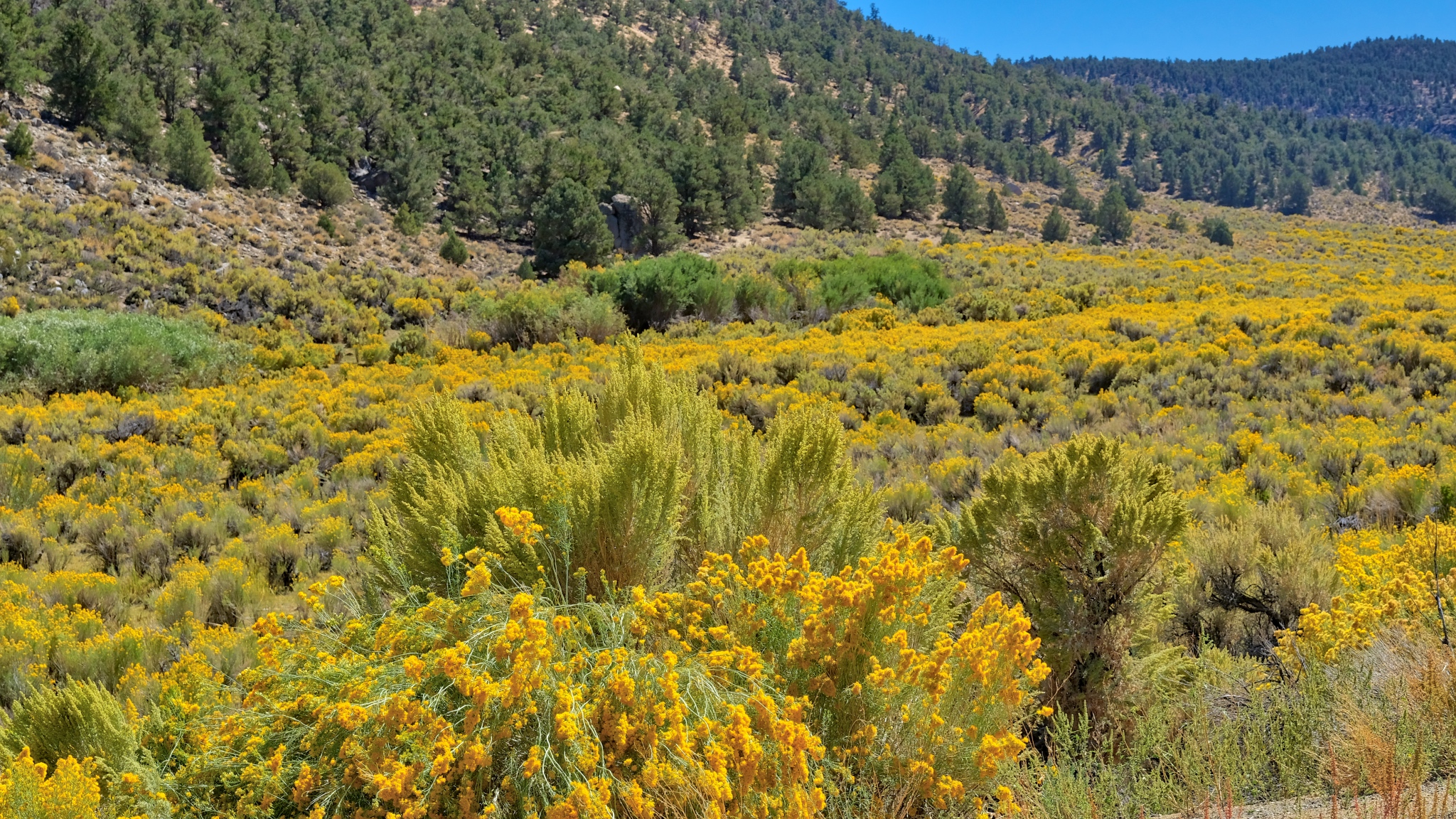 Up and over a mountain pass through a sea of yellow!
Up and over a mountain pass through a sea of yellow!
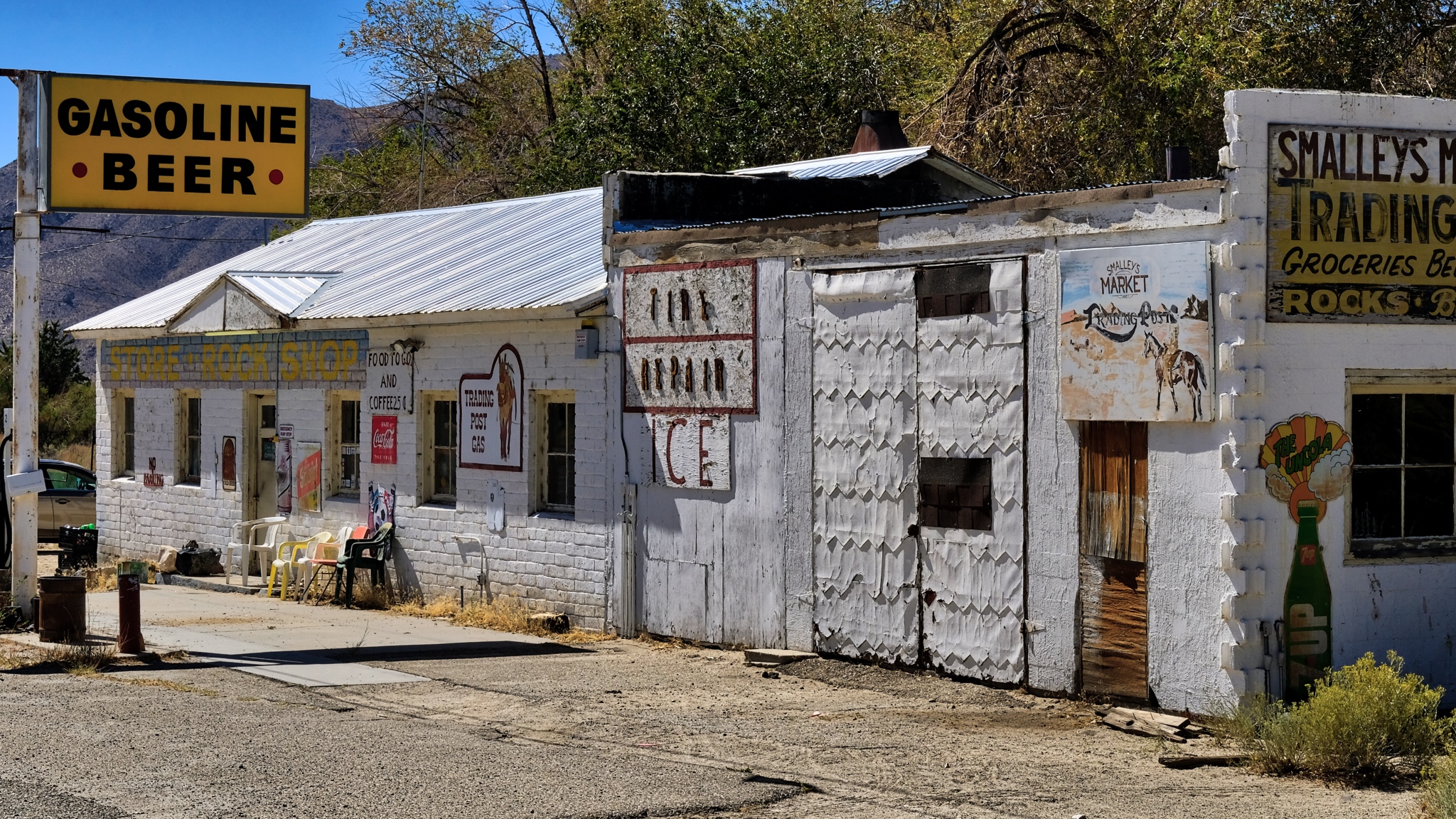 There were a few wide spots in the road along the way . . . here in Benton, California.
There were a few wide spots in the road along the way . . . here in Benton, California.
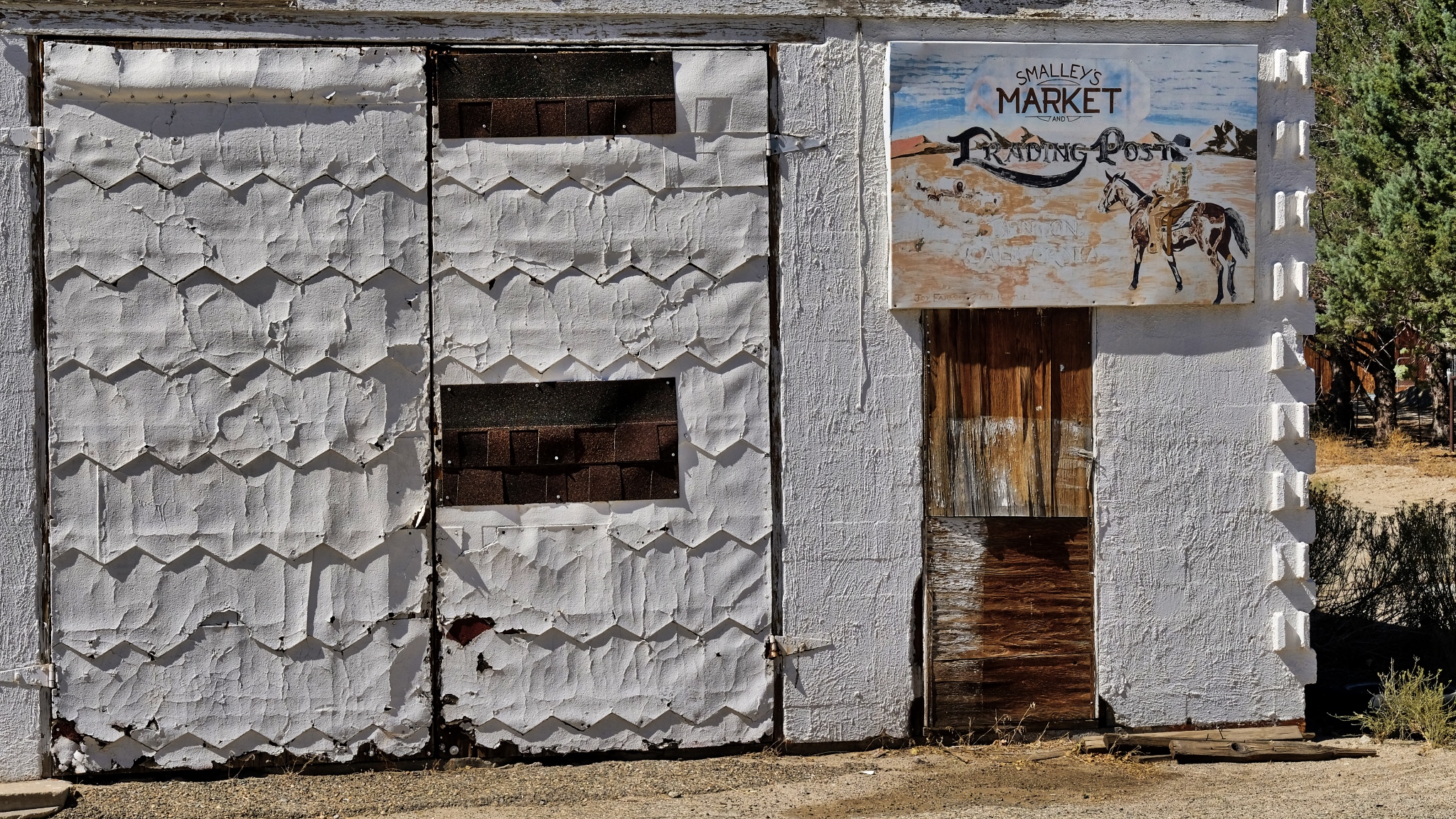 Fabulous textures of age.
Fabulous textures of age.
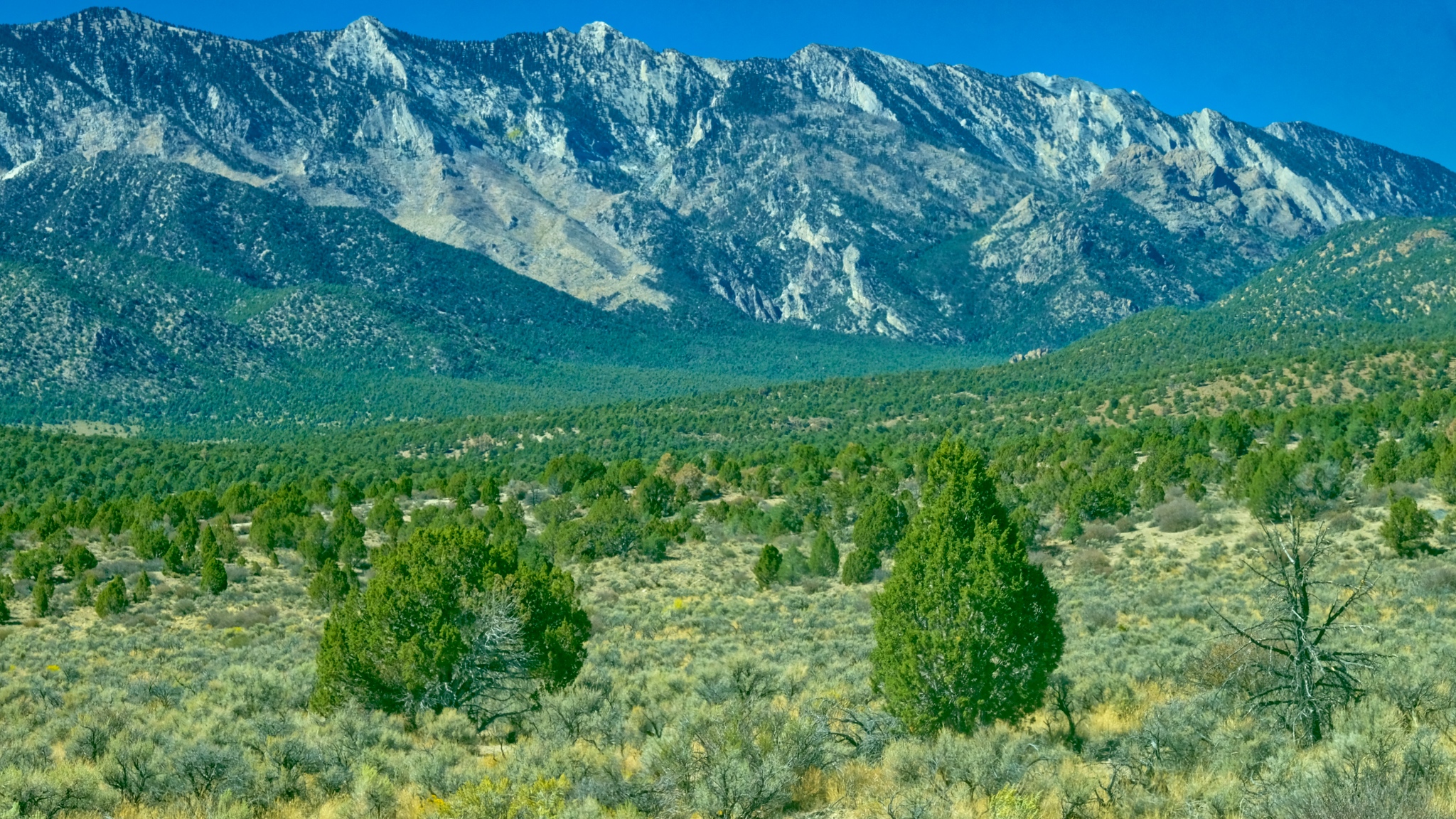 After Benton (and Benton Hot Springs), the GPS took me down 120 miles of gravel road to my destination. I was very happy about it too!
After Benton (and Benton Hot Springs), the GPS took me down 120 miles of gravel road to my destination. I was very happy about it too!
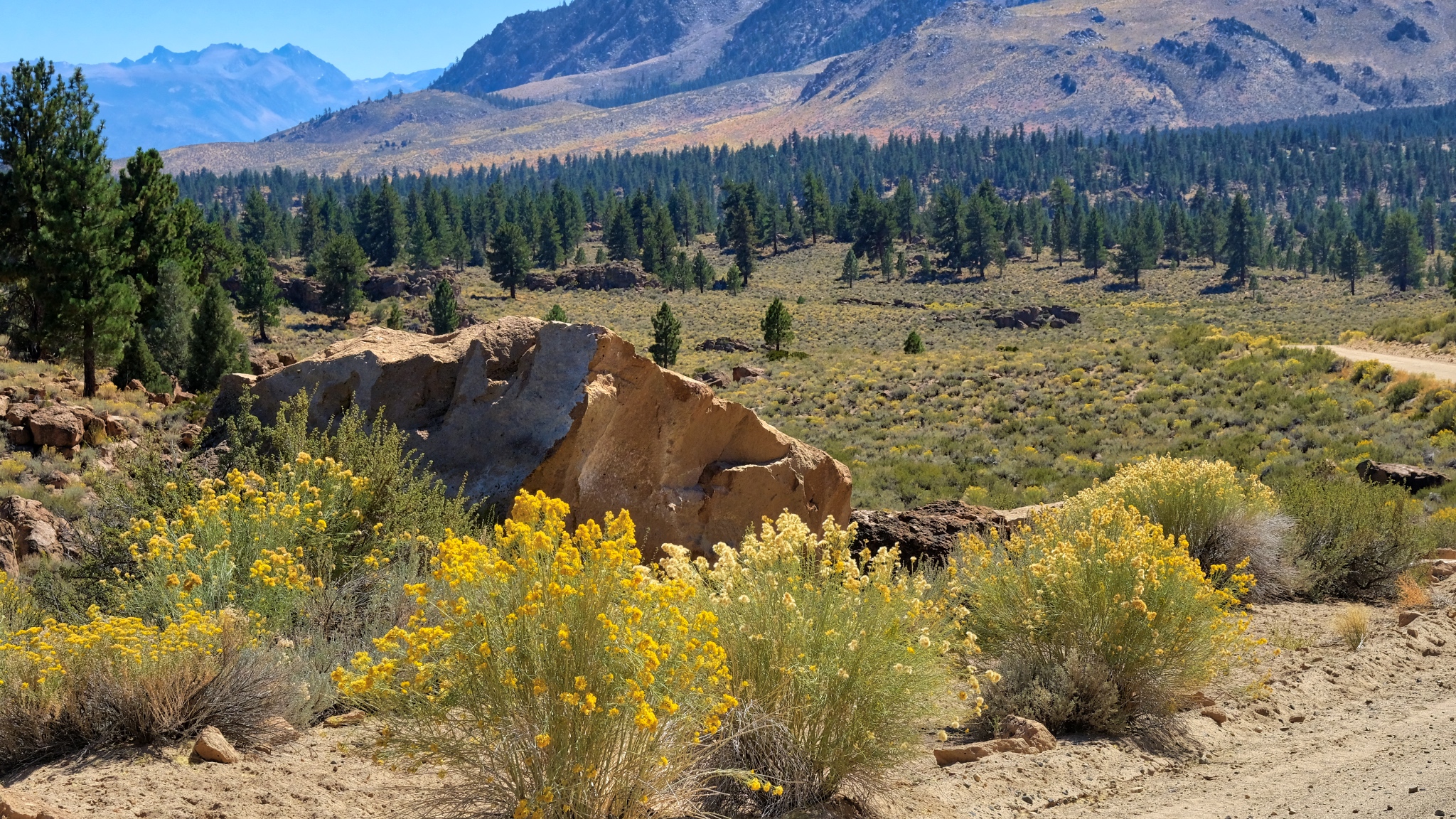 100 miles of this! I took my time.
100 miles of this! I took my time.
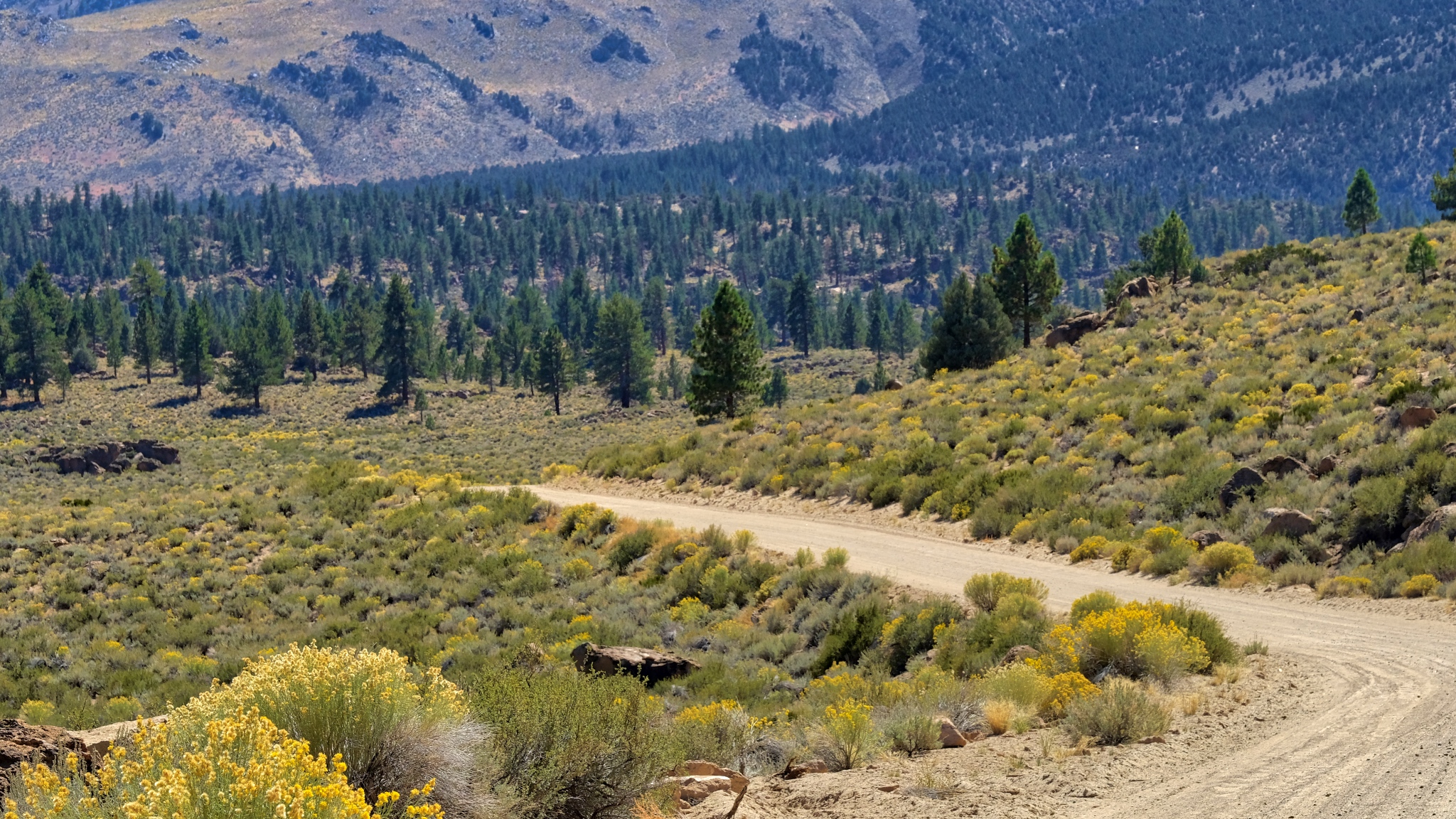 I drove for two hours on this gravel road and did not encounter a single other vehicle.
I drove for two hours on this gravel road and did not encounter a single other vehicle.
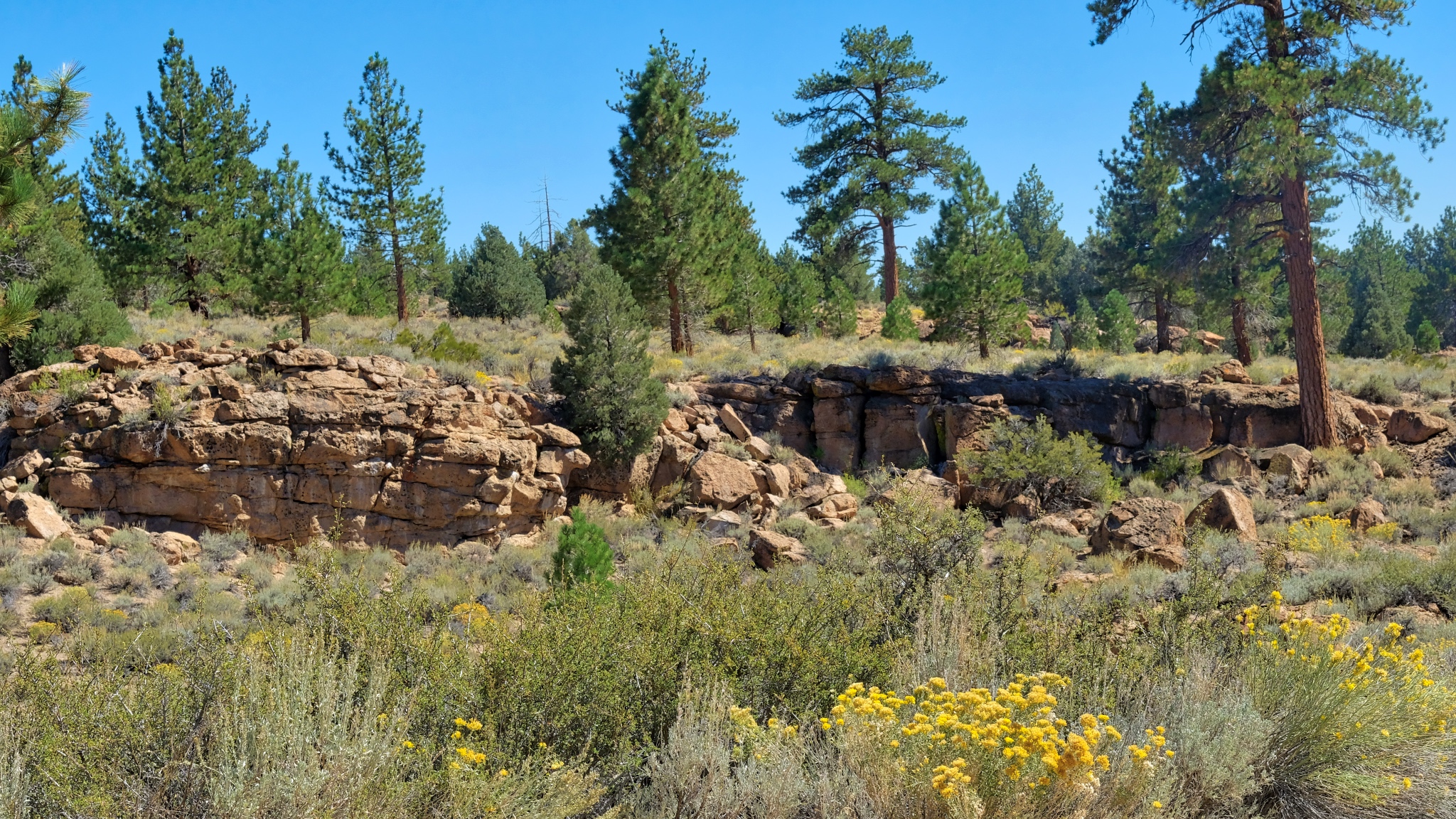 The trees became larger the more altitude I gained.
The trees became larger the more altitude I gained.
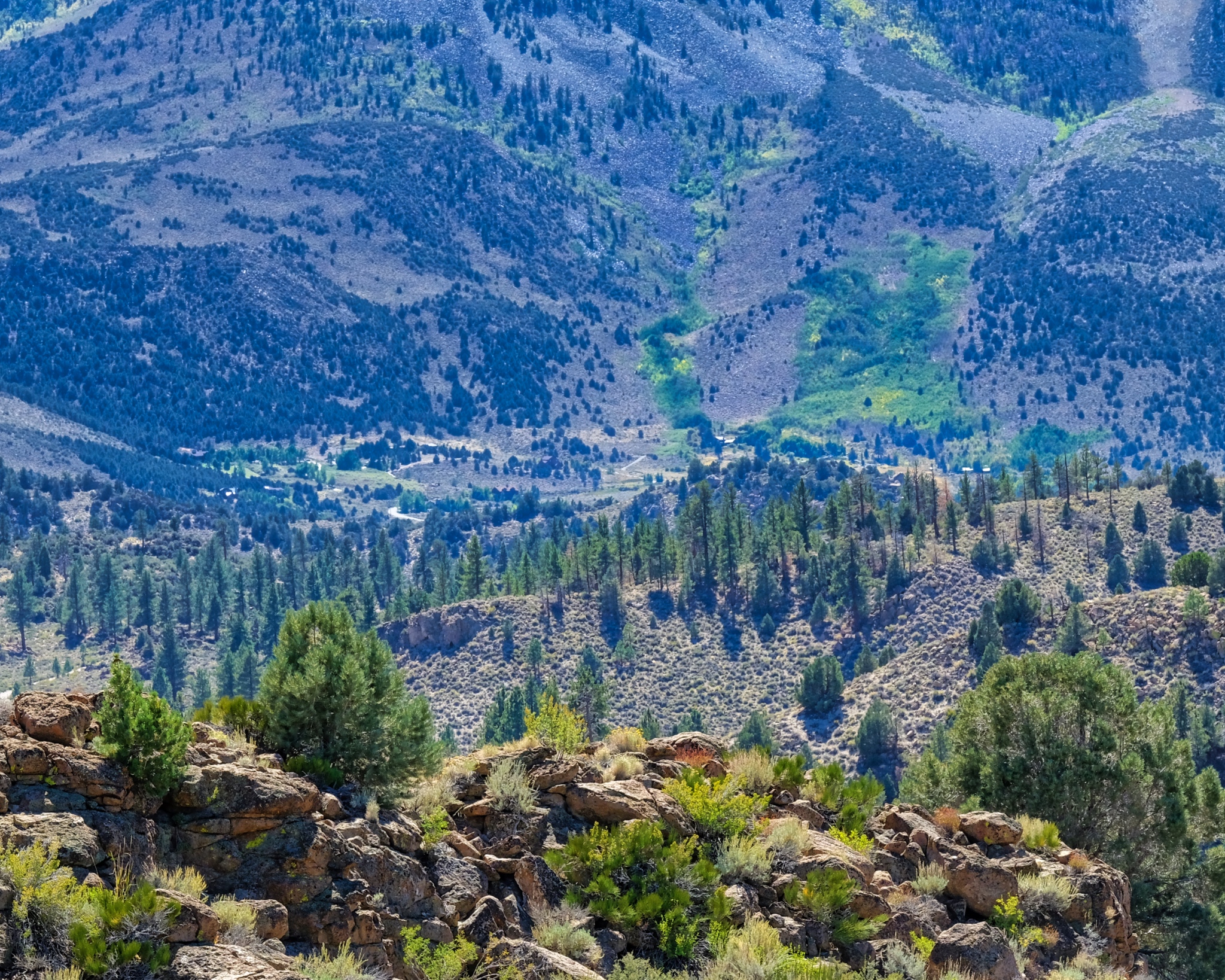 Up and over and up and over many steep passes . . . .
Up and over and up and over many steep passes . . . .
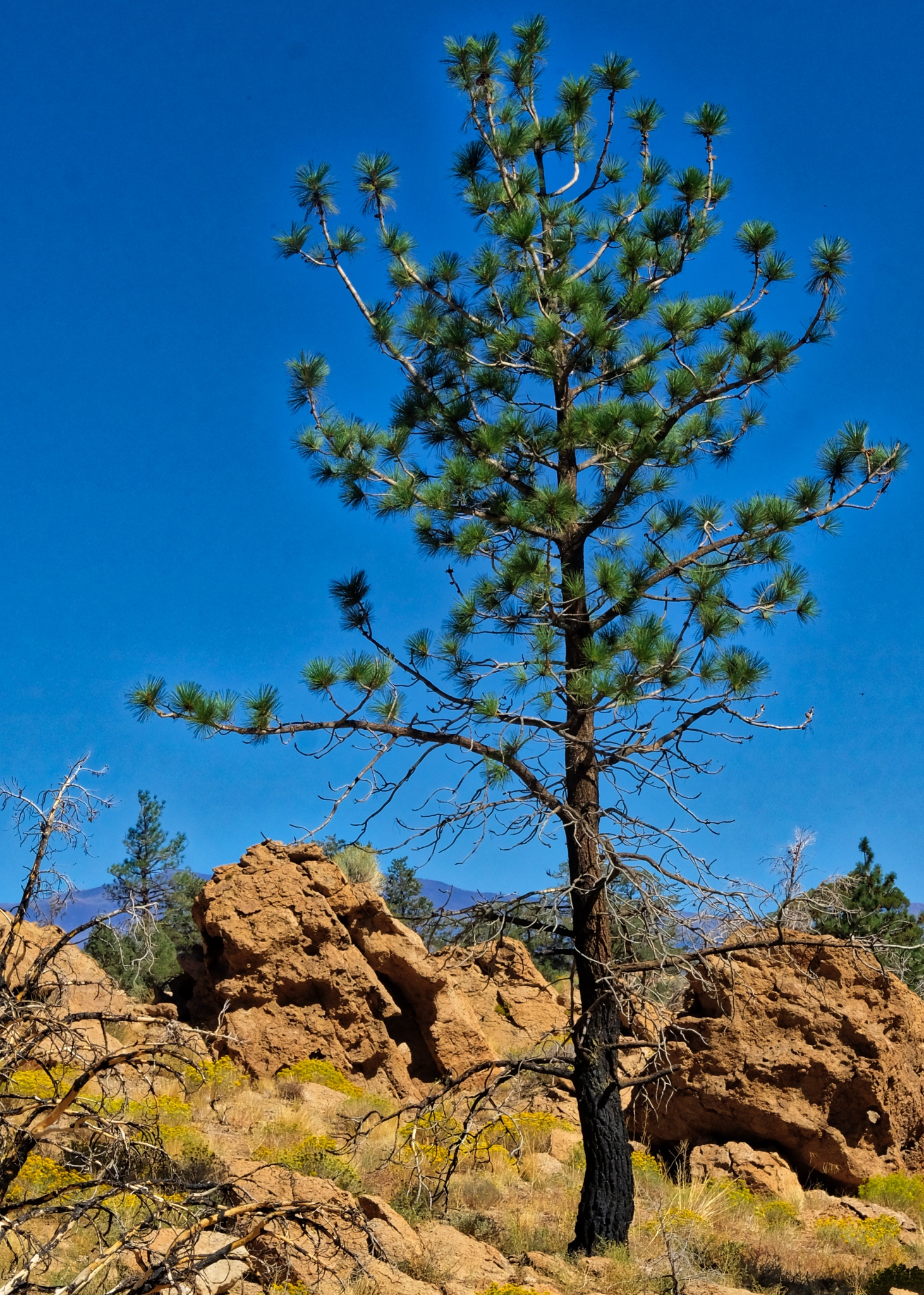 And on such a beautiful day . . . .
And on such a beautiful day . . . .
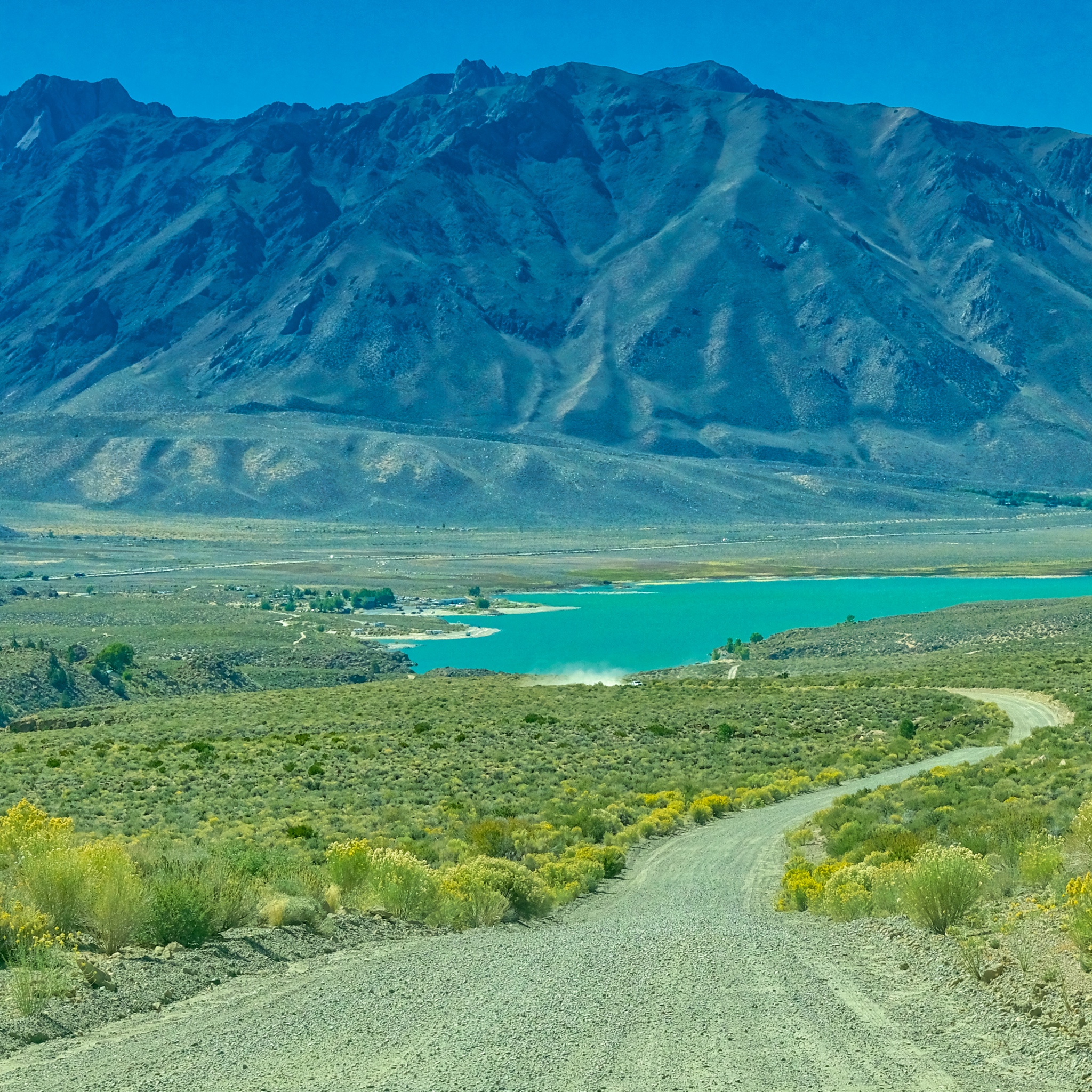 After two hours on Owens George Road I crested a hill to see Crowley Lake, just 15 miles from my final destination.
After two hours on Owens George Road I crested a hill to see Crowley Lake, just 15 miles from my final destination.
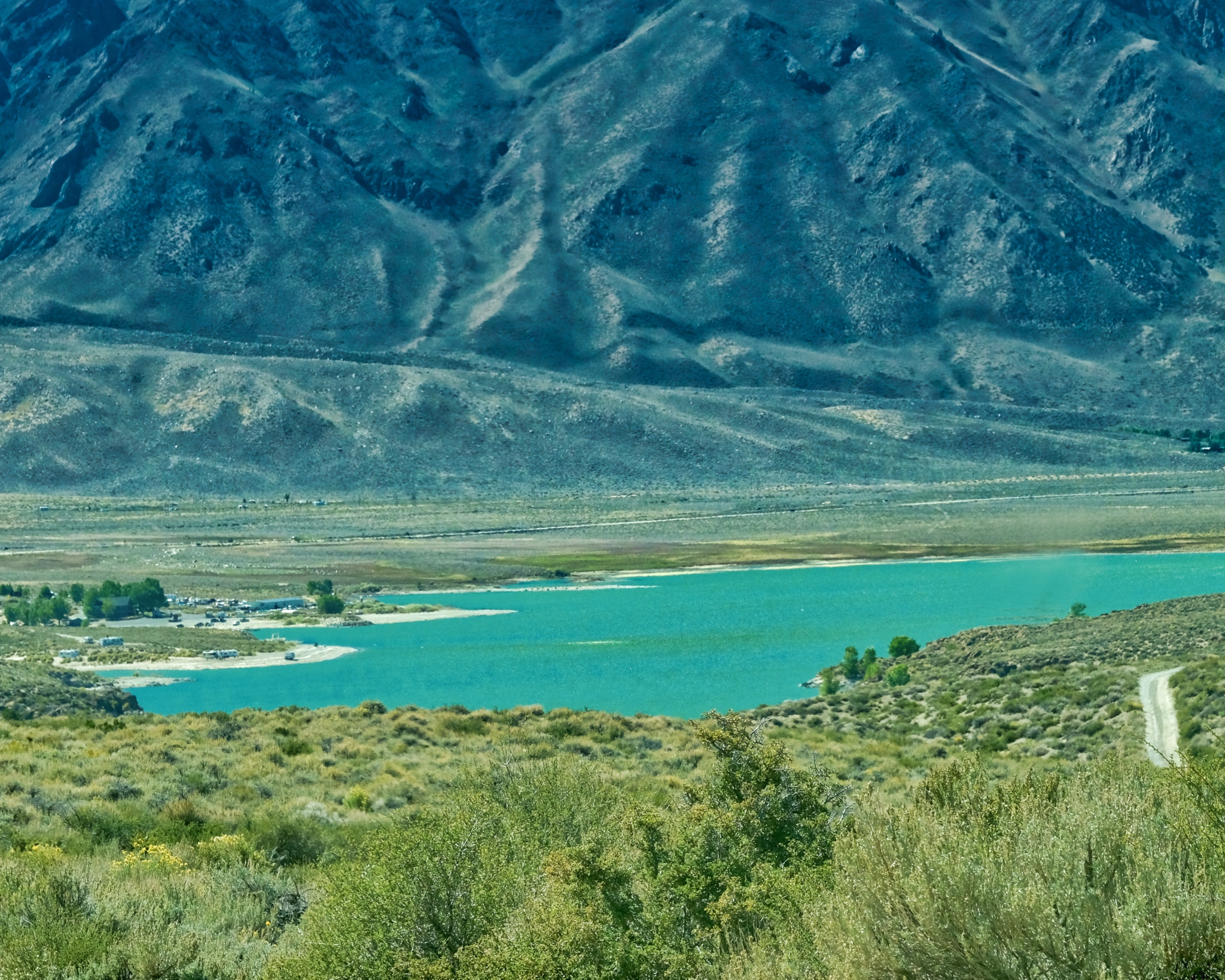 Civilization At Last!!!!!
Civilization At Last!!!!!
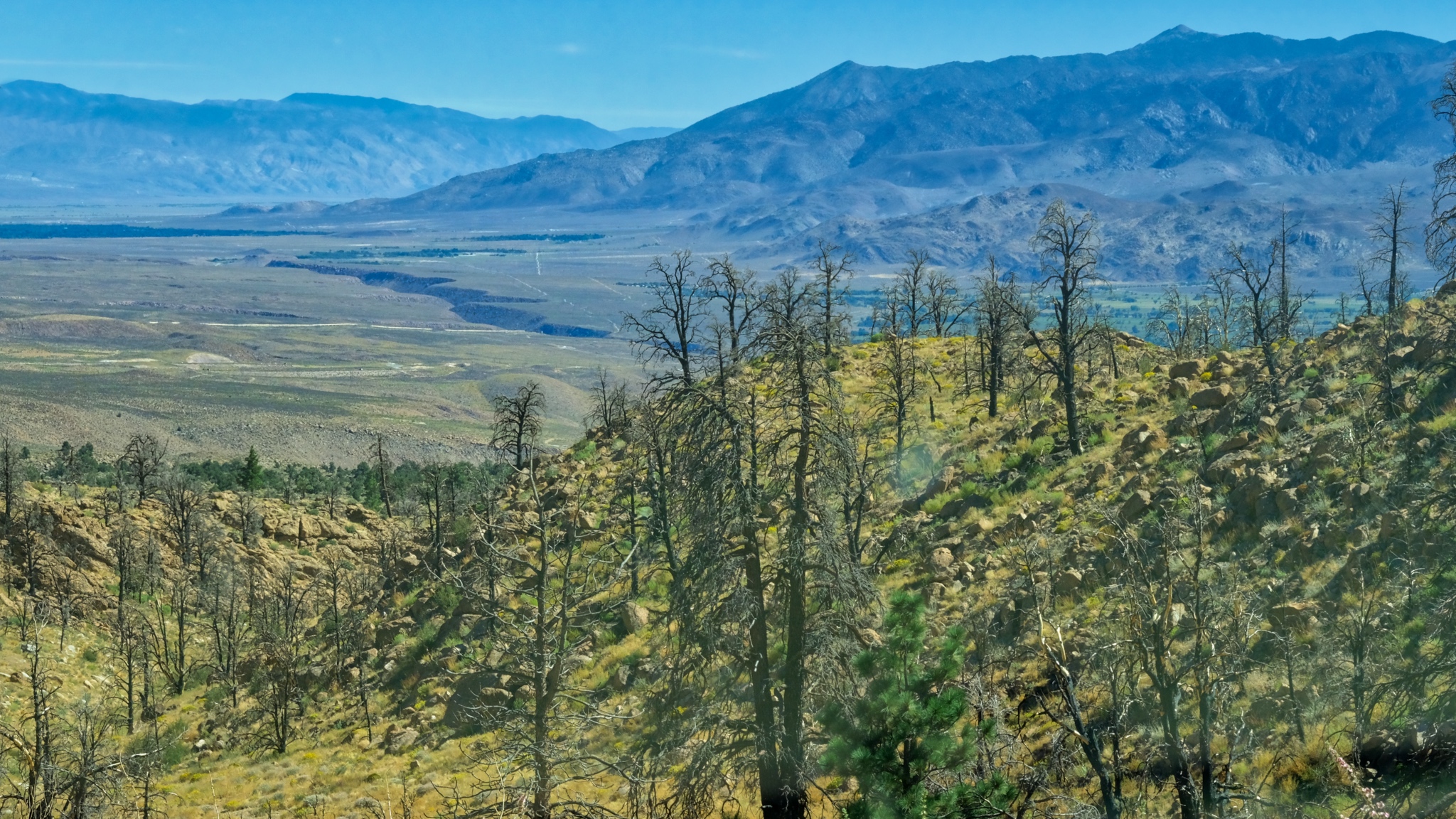 The view approaching Swall Meadows; looking toward Bishop, California in a recent burn.
The view approaching Swall Meadows; looking toward Bishop, California in a recent burn.
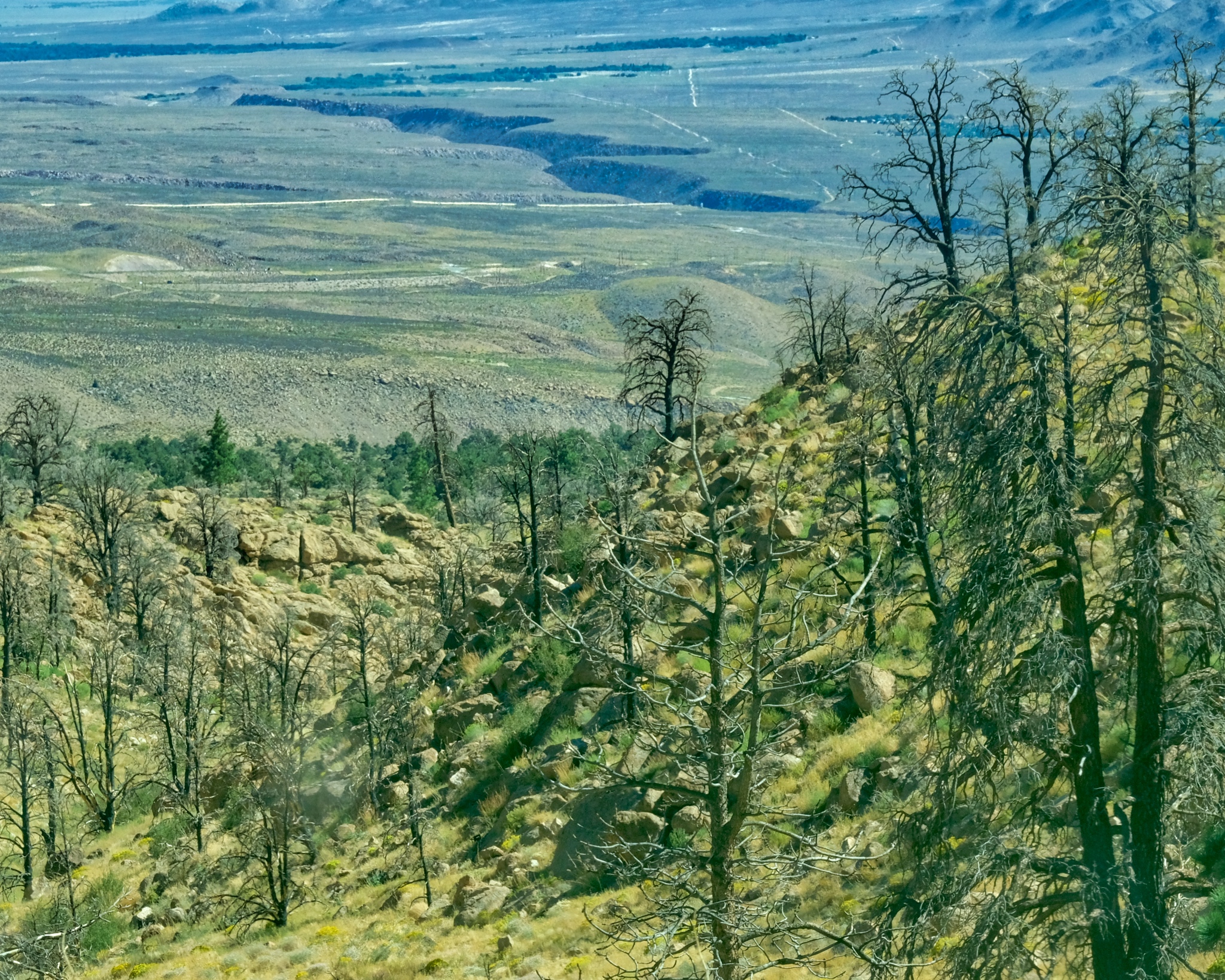 Near Swall Meadows where I would base myself for my next adventure: camping up in The Buttermilk Country.
Near Swall Meadows where I would base myself for my next adventure: camping up in The Buttermilk Country.
Road Trip USA: Steens Mountain, Oregon
 Saturday, November 3, 2018 at 10:48PM
Saturday, November 3, 2018 at 10:48PM 

 The road ahead . . . phone poles and mirages. (Color caste is from tinted front windshield.)
The road ahead . . . phone poles and mirages. (Color caste is from tinted front windshield.) A road to forever.
A road to forever. To get to The Steens from my base in western Oregon (Keizer) meant I had to drive across the Eastern Oregon high desert.
To get to The Steens from my base in western Oregon (Keizer) meant I had to drive across the Eastern Oregon high desert. Eastern Oregon has a very special barren beauty. It is anything but empty.
Eastern Oregon has a very special barren beauty. It is anything but empty. A failed homestead in Eastern Oregon.
A failed homestead in Eastern Oregon. The further east and south I went in Oregon, the more mountainous the countryside became.
The further east and south I went in Oregon, the more mountainous the countryside became. The road to The Steens passed nearby the Malheur National Wildlife Refuge . . . a vast plain of colorful wetlands.
The road to The Steens passed nearby the Malheur National Wildlife Refuge . . . a vast plain of colorful wetlands. I drove nearly all day under cloudy skies, but when I stopped to take photos of the Malheur Basin the sun shown through. Extraordinary color and pattern. This photo has not had the color bumped!
I drove nearly all day under cloudy skies, but when I stopped to take photos of the Malheur Basin the sun shown through. Extraordinary color and pattern. This photo has not had the color bumped! The beauty of the Malheur Basin.
The beauty of the Malheur Basin. I worried it might rain . . . it never did. The clouds and the wind blew away the wildfire smoke that pervaded the entire western third of the USA over the summer.
I worried it might rain . . . it never did. The clouds and the wind blew away the wildfire smoke that pervaded the entire western third of the USA over the summer. At last I arrived in The Steens!
At last I arrived in The Steens! The tiny old cowboy town of Frenchglen is the front door to the Steens Mountain Loop. The Frenchglen Hotel is a listed building that still operates as a hotel to this day - you will want to book well in advance. I went there for lunch one day (more on this later). My goal was the Jackman Park Campground up 20 miles of washboarded gravel road.
The tiny old cowboy town of Frenchglen is the front door to the Steens Mountain Loop. The Frenchglen Hotel is a listed building that still operates as a hotel to this day - you will want to book well in advance. I went there for lunch one day (more on this later). My goal was the Jackman Park Campground up 20 miles of washboarded gravel road. The flora changed from high desert scrub . . . .
The flora changed from high desert scrub . . . . . . . to sparse grasses and rocky soil.
. . . to sparse grasses and rocky soil. Driving up a lower section of the Steens Loop.
Driving up a lower section of the Steens Loop. I arrived here just before dark . . . my campground was down in that stand of aspen trees!
I arrived here just before dark . . . my campground was down in that stand of aspen trees!  I found this campsite and quickly unpacked the camper and made camp and went straight to sleep. I woke in the middle of the night, as old men do, to see more stars in the black sky than I have ever seen in my life!
I found this campsite and quickly unpacked the camper and made camp and went straight to sleep. I woke in the middle of the night, as old men do, to see more stars in the black sky than I have ever seen in my life! My campsite in the morning . . . very dry . . . and very quiet. There were only 8 camping spots in the campground . . . and only one other was occupied, although I never saw or heard them. The next two nights I was the only person there.
My campsite in the morning . . . very dry . . . and very quiet. There were only 8 camping spots in the campground . . . and only one other was occupied, although I never saw or heard them. The next two nights I was the only person there. With the help of my good friend, Jeff Milligan, I carefully selected my camp gear. This was my set-up everywhere I went (except sometimes I used my own table when there was none provided.) Coffee is very, very important.
With the help of my good friend, Jeff Milligan, I carefully selected my camp gear. This was my set-up everywhere I went (except sometimes I used my own table when there was none provided.) Coffee is very, very important. After breakfast I took a short walk in the aspen grove that surrounded the campground.
After breakfast I took a short walk in the aspen grove that surrounded the campground. I could not explain why these aspens were all twisted.
I could not explain why these aspens were all twisted.
 After clean-up, I drove up the loop to near the edge of the East Rim . . . and Kiger Gorge.
After clean-up, I drove up the loop to near the edge of the East Rim . . . and Kiger Gorge.
 The Steens Mountain Loop road is normally closed due to deep snow from late November until late May. This is the very last bit of snow left on The Steens in early September 2018.
The Steens Mountain Loop road is normally closed due to deep snow from late November until late May. This is the very last bit of snow left on The Steens in early September 2018. I loved walking along the path on the edge of Kiger Gorge . . . looking down into amazing and grand scenes of Nature.
I loved walking along the path on the edge of Kiger Gorge . . . looking down into amazing and grand scenes of Nature. It is nearly 4000 feet to the bottom of Kiger Gorge. An incredible view.
It is nearly 4000 feet to the bottom of Kiger Gorge. An incredible view. Magnificent geology.
Magnificent geology. Steens Mountain wild flower against Kiger Gorge.
Steens Mountain wild flower against Kiger Gorge. I left Kiger Gorge along the Loop Road, hugging the great escarpment. I love this road!
I left Kiger Gorge along the Loop Road, hugging the great escarpment. I love this road! There are several points along the Loop Road where you have a grand view of the Alvord Desert below. Unfortunately, the massive wildfires in the western USA left thick smoke at lower elevations, obscuring what is normally a panoramic view. It is, nevertheless, a wonderful sight.
There are several points along the Loop Road where you have a grand view of the Alvord Desert below. Unfortunately, the massive wildfires in the western USA left thick smoke at lower elevations, obscuring what is normally a panoramic view. It is, nevertheless, a wonderful sight. Craggy cliffs form the eastern edge of the great hinge fault that made Steens Mountain.
Craggy cliffs form the eastern edge of the great hinge fault that made Steens Mountain. Photographically, perhaps the wildfire smoke helps define the rows of sharp ridges . . . .
Photographically, perhaps the wildfire smoke helps define the rows of sharp ridges . . . . This is why I came back to Steens Mountain: this is the view I had in my memory for 30 years . . . . now renewed.
This is why I came back to Steens Mountain: this is the view I had in my memory for 30 years . . . . now renewed. Driving along the Steens Loop Road toward Wildhorse Lake.
Driving along the Steens Loop Road toward Wildhorse Lake. The road to Wildhorse Lake had marvelous views of Lower Indian Creek Canyon.
The road to Wildhorse Lake had marvelous views of Lower Indian Creek Canyon. The view from the Wildhorse Lake parking area . . . .
The view from the Wildhorse Lake parking area . . . . At the southwest point of the Loop Road is Wildhorse Lake (aka, Alvord Lake). Magnificent, smoke and all.
At the southwest point of the Loop Road is Wildhorse Lake (aka, Alvord Lake). Magnificent, smoke and all. Wildhorse Lake. If you look closely you can see a trail to the lake . . . and two small tents on the lakeshore.
Wildhorse Lake. If you look closely you can see a trail to the lake . . . and two small tents on the lakeshore. Again, the views from the Wildhorse Lake overlook down to the Alvord Desert were fantastic, in spite of the wildfire smoke.
Again, the views from the Wildhorse Lake overlook down to the Alvord Desert were fantastic, in spite of the wildfire smoke. I sat here for quite awhile . . . enjoying the grandeur of this actuality.
I sat here for quite awhile . . . enjoying the grandeur of this actuality. I walked out on the Jeep trail I came on . . . a road to the sky.
I walked out on the Jeep trail I came on . . . a road to the sky. Back in the camper and along the rim loop road . . . incredible views wherever I looked.
Back in the camper and along the rim loop road . . . incredible views wherever I looked. At the southern end of the great Steens hinge fault the road begins to wind down the escarpment.
At the southern end of the great Steens hinge fault the road begins to wind down the escarpment. More ancient, deep glacial valleys fell out of the high plateau on the south end of the Steens.
More ancient, deep glacial valleys fell out of the high plateau on the south end of the Steens. I stopped often to take in the beautiful scenery more closely.
I stopped often to take in the beautiful scenery more closely. Majestic.
Majestic. Ancient trees cling to life and the cliffs.
Ancient trees cling to life and the cliffs. I turned back to my campground at this point, knowing that I would be driving up from Frenchglen along the south section of the Loop Road the next day. I was hoping that tomorrow would be clearer . . . without the wildfire smoke.
I turned back to my campground at this point, knowing that I would be driving up from Frenchglen along the south section of the Loop Road the next day. I was hoping that tomorrow would be clearer . . . without the wildfire smoke. I was treated to a beautiful sunset that evening.
I was treated to a beautiful sunset that evening. The next morning I woke up to find a camper van had arrived in the campground. As luck would have it, he was a professional photographer from Portland, Oregon. We met and chatted and I took him to the twisted aspen grove for a morning of photography in amazing light.
The next morning I woke up to find a camper van had arrived in the campground. As luck would have it, he was a professional photographer from Portland, Oregon. We met and chatted and I took him to the twisted aspen grove for a morning of photography in amazing light. Scrumptious morning scenes.
Scrumptious morning scenes. I finally figured out why these aspens were twisted: There must have been very deep and heavy snow covering them when there ere very small saplings.
I finally figured out why these aspens were twisted: There must have been very deep and heavy snow covering them when there ere very small saplings. Snow-twisted aspen.
Snow-twisted aspen. Morning magic light in a grove of twisted aspen . . . magic indeed!
Morning magic light in a grove of twisted aspen . . . magic indeed! Before heading into Frenchglen, I took a three mile walk to check out this stand of aspen trees.
Before heading into Frenchglen, I took a three mile walk to check out this stand of aspen trees. The grove was fed by a small spring coming out of the hillside.
The grove was fed by a small spring coming out of the hillside. I had read that sometimes the early Basque shepherds would camp in these groves and carve their names and their home Basque village names on the aspens.
I had read that sometimes the early Basque shepherds would camp in these groves and carve their names and their home Basque village names on the aspens. Such a calm and peaceful aspen grove.
Such a calm and peaceful aspen grove. I found an old cast iron stovetop among the aspens.
I found an old cast iron stovetop among the aspens. I found the Basque shepherd tree carvings.
I found the Basque shepherd tree carvings. These carvings are said to date from the 1870s . . . nearly 150 years old.
These carvings are said to date from the 1870s . . . nearly 150 years old. There were many of these small isolated aspen groves - each a world of their own. I wanted to explore all of them . . . but couldn't.
There were many of these small isolated aspen groves - each a world of their own. I wanted to explore all of them . . . but couldn't. I drove down off the mountain to the little village of Frenchglen.
I drove down off the mountain to the little village of Frenchglen. The Frenchglen Hotel is run by the State of Oregon and is an old cowboy rest spot. I had delicious home made lunch here.
The Frenchglen Hotel is run by the State of Oregon and is an old cowboy rest spot. I had delicious home made lunch here. When I was last here 30 years ago this was an old cowboy bar and provisions store.
When I was last here 30 years ago this was an old cowboy bar and provisions store. The Frenchglen Mercantile as it is today . . . a general store and souvenir store with a gas pump (thank goodness!).
The Frenchglen Mercantile as it is today . . . a general store and souvenir store with a gas pump (thank goodness!). The interior of the Frenchglen Mercantile had been cleaned up and reorganized since I was here. A few dollar bills were still on the ceiling as a reminder of the drinking games the old cowboys liked to play when it was still a bar.
The interior of the Frenchglen Mercantile had been cleaned up and reorganized since I was here. A few dollar bills were still on the ceiling as a reminder of the drinking games the old cowboys liked to play when it was still a bar. It is still a very interesting old space . . .
It is still a very interesting old space . . . Out front of the Frnchglen Mercantile.
Out front of the Frnchglen Mercantile. An old shepherds chuckwagon stands near the Frenchglen Mercantile.
An old shepherds chuckwagon stands near the Frenchglen Mercantile. Imagine the old time reality of these Basque shepherds.
Imagine the old time reality of these Basque shepherds. I grove out on the paved Oregon Route 205 to the southern entrance to Steens Mountain Loop Road. I love this high desert landscape.
I grove out on the paved Oregon Route 205 to the southern entrance to Steens Mountain Loop Road. I love this high desert landscape. Although beautiful, the southern portion of the Loop Road had awful washboarding. I was reduced to 10mph for 10 miles of bone-shaking and teeth-chattering driving. Perhaps they only grade it a few times of the year. I would check before you attempted it.
Although beautiful, the southern portion of the Loop Road had awful washboarding. I was reduced to 10mph for 10 miles of bone-shaking and teeth-chattering driving. Perhaps they only grade it a few times of the year. I would check before you attempted it. The road eventually smoothed out and began to wind up into the edges of Steens Mountain. This is Indian Creek. I stopped for a leg stretching.
The road eventually smoothed out and began to wind up into the edges of Steens Mountain. This is Indian Creek. I stopped for a leg stretching. Such an idyllic mountain stream.
Such an idyllic mountain stream. The babbling stream echoed against the canyon walls.
The babbling stream echoed against the canyon walls. The road climbed back up onto the high Steens ridges. The light today was the best since I arrived . . . the wildfire smoke was beginning to dissipate.
The road climbed back up onto the high Steens ridges. The light today was the best since I arrived . . . the wildfire smoke was beginning to dissipate. I stopped often to take in the grandeur.
I stopped often to take in the grandeur. More glacial valleys to the left . . . . and to the right of the Loop Road:
More glacial valleys to the left . . . . and to the right of the Loop Road: . . . Big Indian Gorge . . . a glacial valley and source of Indian Creek. Magnificent!
. . . Big Indian Gorge . . . a glacial valley and source of Indian Creek. Magnificent! In the late afternoon 'magic light' overlooking this glorious glacial gorge. Overwhelming beauty.
In the late afternoon 'magic light' overlooking this glorious glacial gorge. Overwhelming beauty. These cliffs! This light!
These cliffs! This light! Yellow lichen growing on the sunny side of Big Indian Gorge walls.
Yellow lichen growing on the sunny side of Big Indian Gorge walls. The geology here was fantastical!
The geology here was fantastical! A rocky spine jutting out above the gorge . . . and a path to follow. This may be my favorite photo from my Steens Mountain experience.
A rocky spine jutting out above the gorge . . . and a path to follow. This may be my favorite photo from my Steens Mountain experience. Approaching the spiny outcrop.
Approaching the spiny outcrop. I took this photo from a bench next to a sign that said, "A Good Place To Meditate." Gotta Love Oregon!
I took this photo from a bench next to a sign that said, "A Good Place To Meditate." Gotta Love Oregon! Looking out to the opposite cliffs of Big Indian Gorge.
Looking out to the opposite cliffs of Big Indian Gorge. I took the path out to the end of the outcrop . . . . stunning . . .
I took the path out to the end of the outcrop . . . . stunning . . . Nearing the tip of the spiny outcrop. I was overwhelmed with the natural beauty.
Nearing the tip of the spiny outcrop. I was overwhelmed with the natural beauty. At the very end was this old scrub tree . . . hanging on.
At the very end was this old scrub tree . . . hanging on. The view up Big Indian Gorge from the outcrop.
The view up Big Indian Gorge from the outcrop. The next outcrop to the south.
The next outcrop to the south. I took my time walking back to the camper along this path . . . composing photographs to take advantage of the extraordinary light.
I took my time walking back to the camper along this path . . . composing photographs to take advantage of the extraordinary light. As the sun dropped lower toward the horizon, the colors became richer and richer.
As the sun dropped lower toward the horizon, the colors became richer and richer. I enjoy taking photos of my camper in these environments . . . it's like pinching myself to prove that it is real!
I enjoy taking photos of my camper in these environments . . . it's like pinching myself to prove that it is real! I could walk on these wild high desert paths forever . . . .
I could walk on these wild high desert paths forever . . . . So much fascinating geology everywhere.
So much fascinating geology everywhere. Back on the Loop Road taking photos . . .
Back on the Loop Road taking photos . . . These grouse stopped to pose for me among the dry bush.
These grouse stopped to pose for me among the dry bush. The scenes of vast landscapes of tufted grasses were lit in golden light.
The scenes of vast landscapes of tufted grasses were lit in golden light. I find this complex scenery incredibly fascinating.
I find this complex scenery incredibly fascinating. The Loop Road ahead in magic evening light. I loved driving through this grand landscape.
The Loop Road ahead in magic evening light. I loved driving through this grand landscape. I arrived back on top of the East Rim as the last light was fading.
I arrived back on top of the East Rim as the last light was fading. Big Indian Gorge in amber shadow.
Big Indian Gorge in amber shadow. I waited outside in the very cold evening until the red sun sank into the thick wildfire smoke . . . .
I waited outside in the very cold evening until the red sun sank into the thick wildfire smoke . . . . My last sunset in The Steens. I left the next morning for Lake Tahoe and more adventures.
My last sunset in The Steens. I left the next morning for Lake Tahoe and more adventures. I awoke on my last day to glorious light and color in my campground. I decided to take a short walk with my camera before I packed up and left.
I awoke on my last day to glorious light and color in my campground. I decided to take a short walk with my camera before I packed up and left. I walked out across the Loop Road and over this hill to see what I could see.
I walked out across the Loop Road and over this hill to see what I could see. What I found was this hidden little valley full of bright yellow aspens.
What I found was this hidden little valley full of bright yellow aspens. I miss this place.
I miss this place. Looking out and down the Steens hinge fault to the bank of wildfire smoke below.
Looking out and down the Steens hinge fault to the bank of wildfire smoke below. I stopped to study the interesting geology on the way back to the campground.
I stopped to study the interesting geology on the way back to the campground. These almost looked hand made!
These almost looked hand made! These appeared to be Scottish thistle, just as I have seen in my years in Scotland.
These appeared to be Scottish thistle, just as I have seen in my years in Scotland. Surprisingly, I saw very few insects during my entire stay.
Surprisingly, I saw very few insects during my entire stay. Steens wildflowers.
Steens wildflowers. I walked back down the hill to take a last look at my camper among the aspens.
I walked back down the hill to take a last look at my camper among the aspens. I took a shower at this hand pump every morning . . . there were no people around to see me.
I took a shower at this hand pump every morning . . . there were no people around to see me. After packing the camper, I stopped to take a photo of my campground sign on the way out.
After packing the camper, I stopped to take a photo of my campground sign on the way out. And then I drove down the Loop Road to Frenchglen and a very long drive.
And then I drove down the Loop Road to Frenchglen and a very long drive.Schreiner's Iris Gardens
 Friday, July 6, 2018 at 11:43PM
Friday, July 6, 2018 at 11:43PM 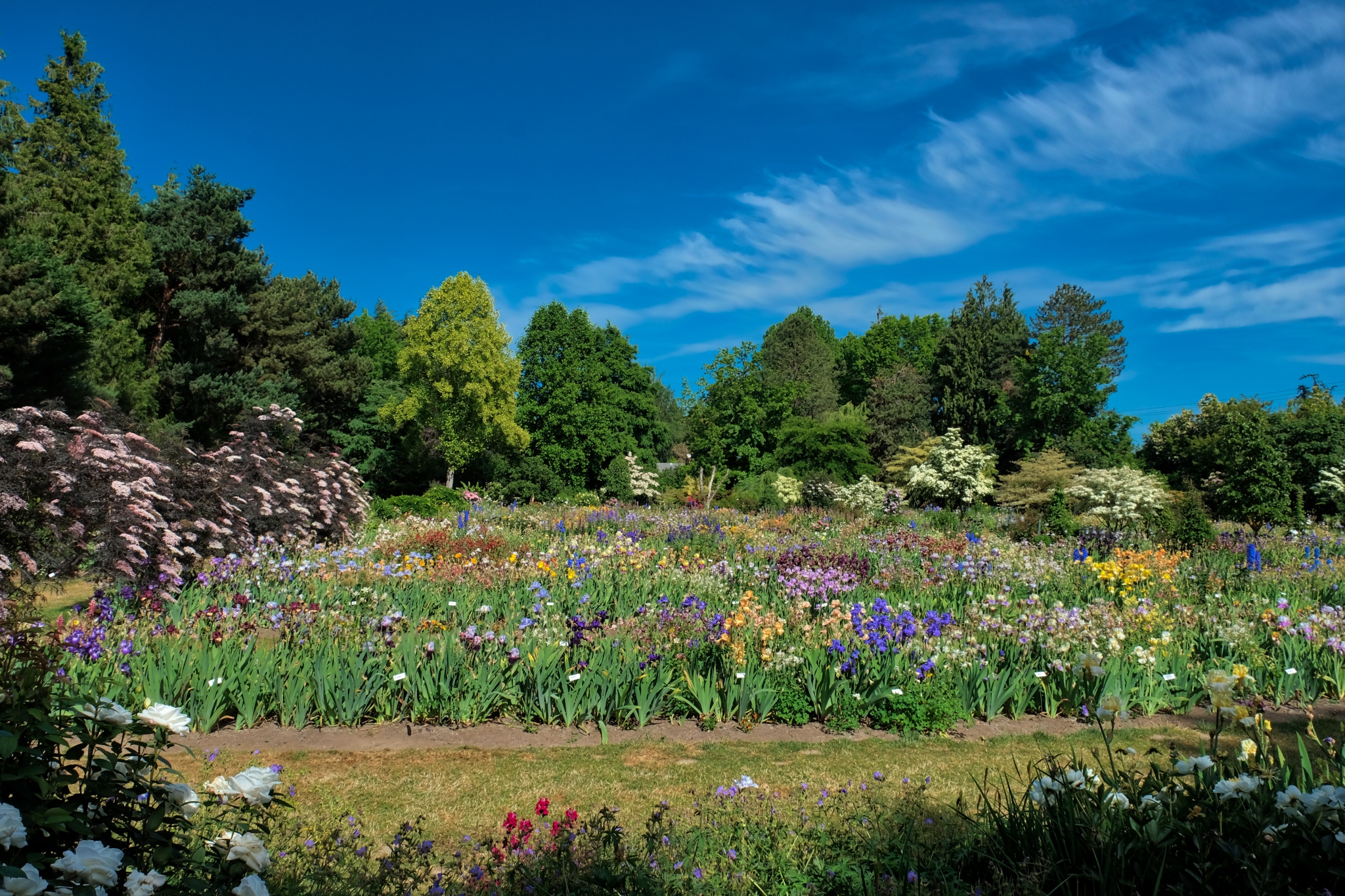 I spent a lovely day in early June at the amazing Schreiner's Iris Gardens outside of Keizer, in the beautiful Willamette Valley of Oregon.
I spent a lovely day in early June at the amazing Schreiner's Iris Gardens outside of Keizer, in the beautiful Willamette Valley of Oregon.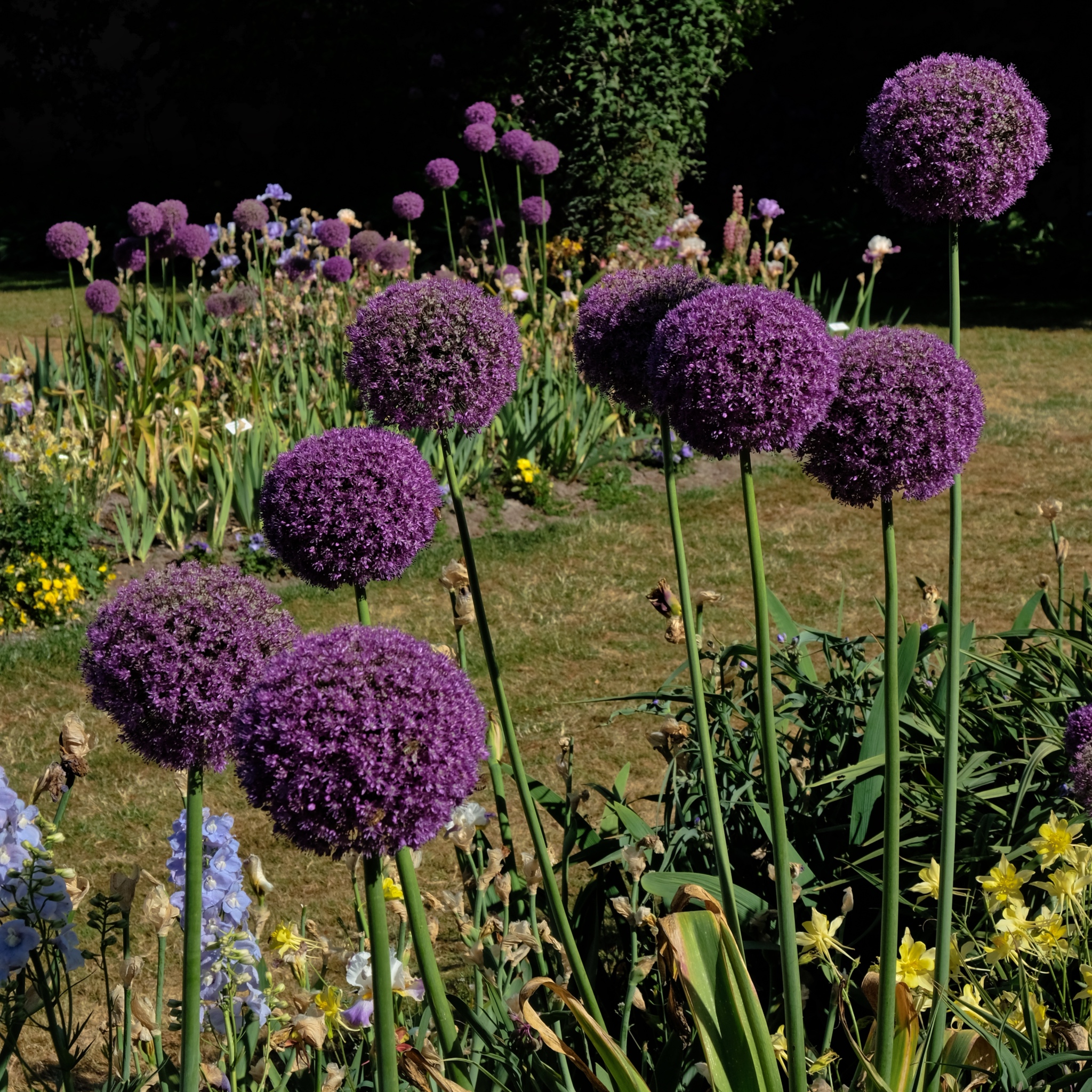 The garden holds flowers other than the iris . . . but first . . . the absolutely amazing iris:
The garden holds flowers other than the iris . . . but first . . . the absolutely amazing iris: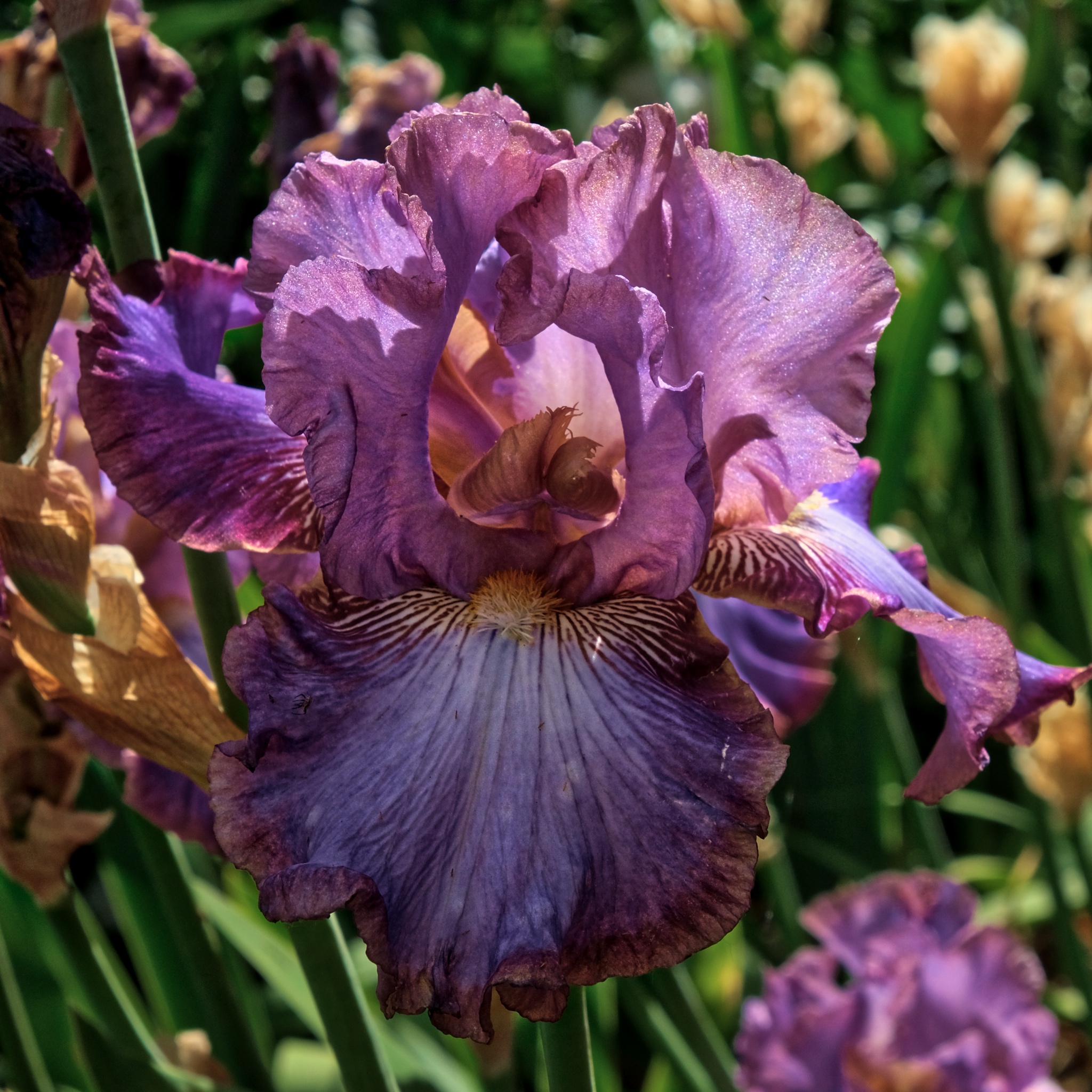 If you LOVE flowers as I do, and especially Irises (but not only), you will absolutely love this garden!!!
If you LOVE flowers as I do, and especially Irises (but not only), you will absolutely love this garden!!!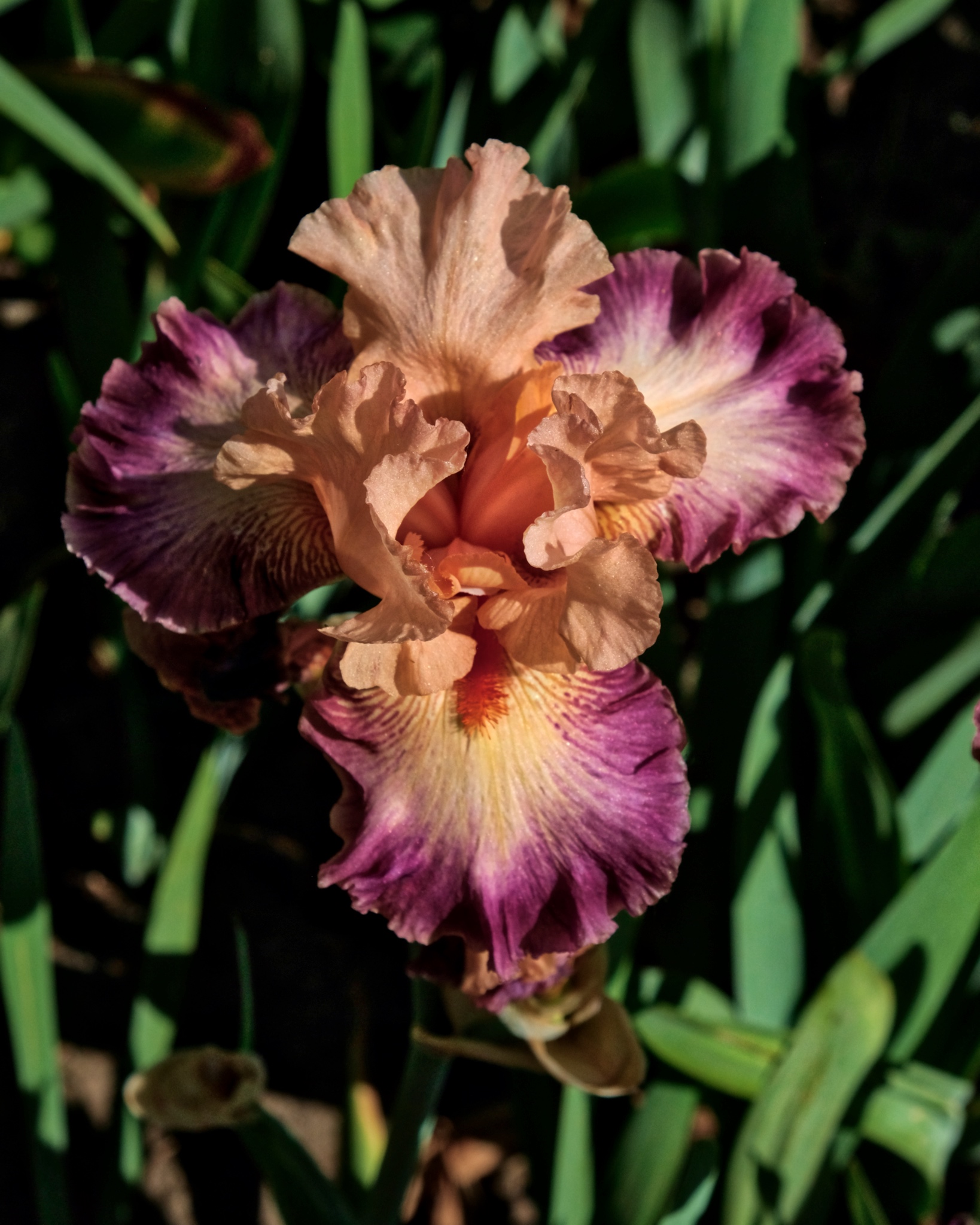 I did not know there were so many kinds of Irises!
I did not know there were so many kinds of Irises!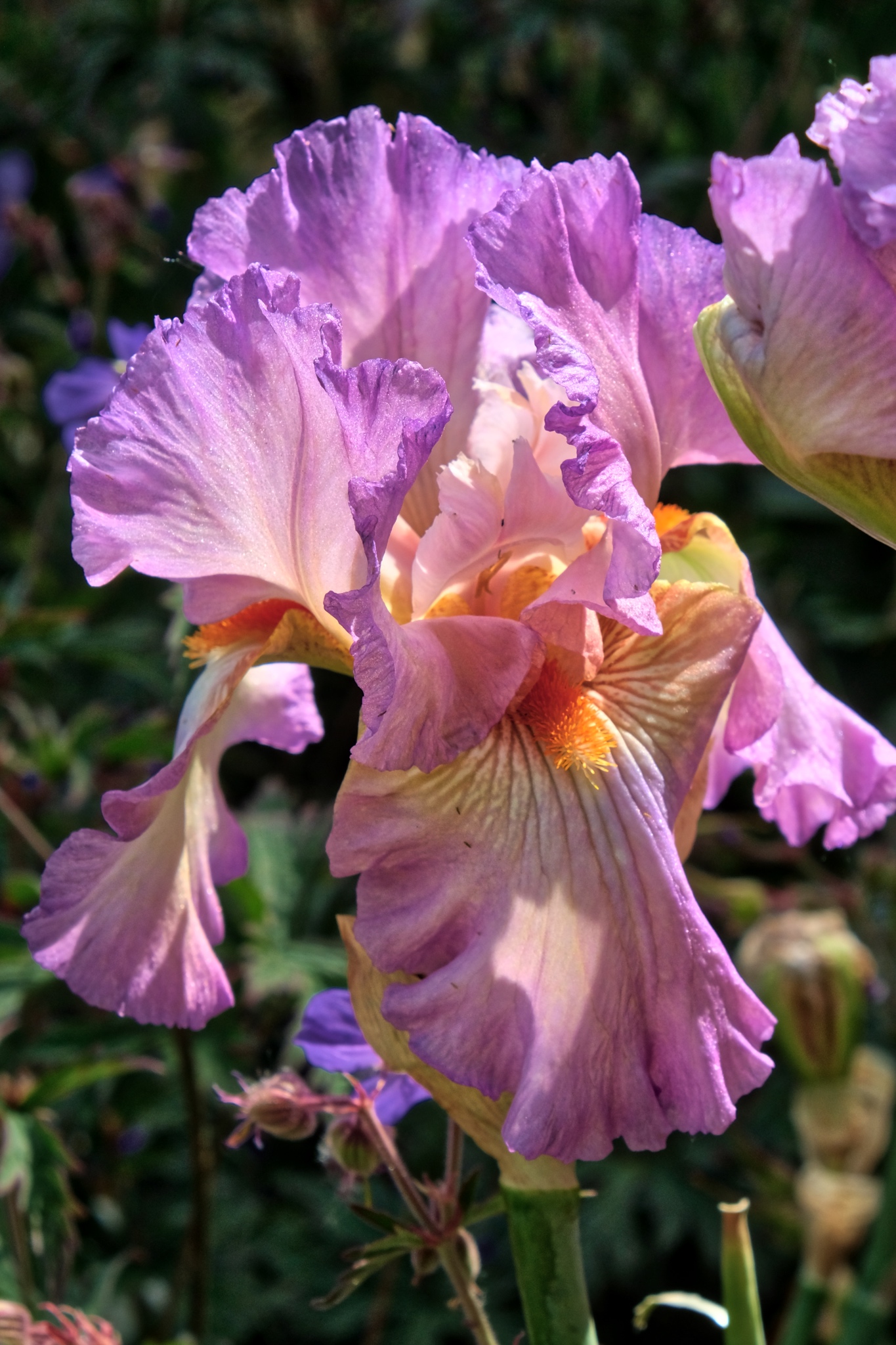 I rode my bike over to the gardens just kin time for the 'magic' evening light . . . and was rewarded!
I rode my bike over to the gardens just kin time for the 'magic' evening light . . . and was rewarded!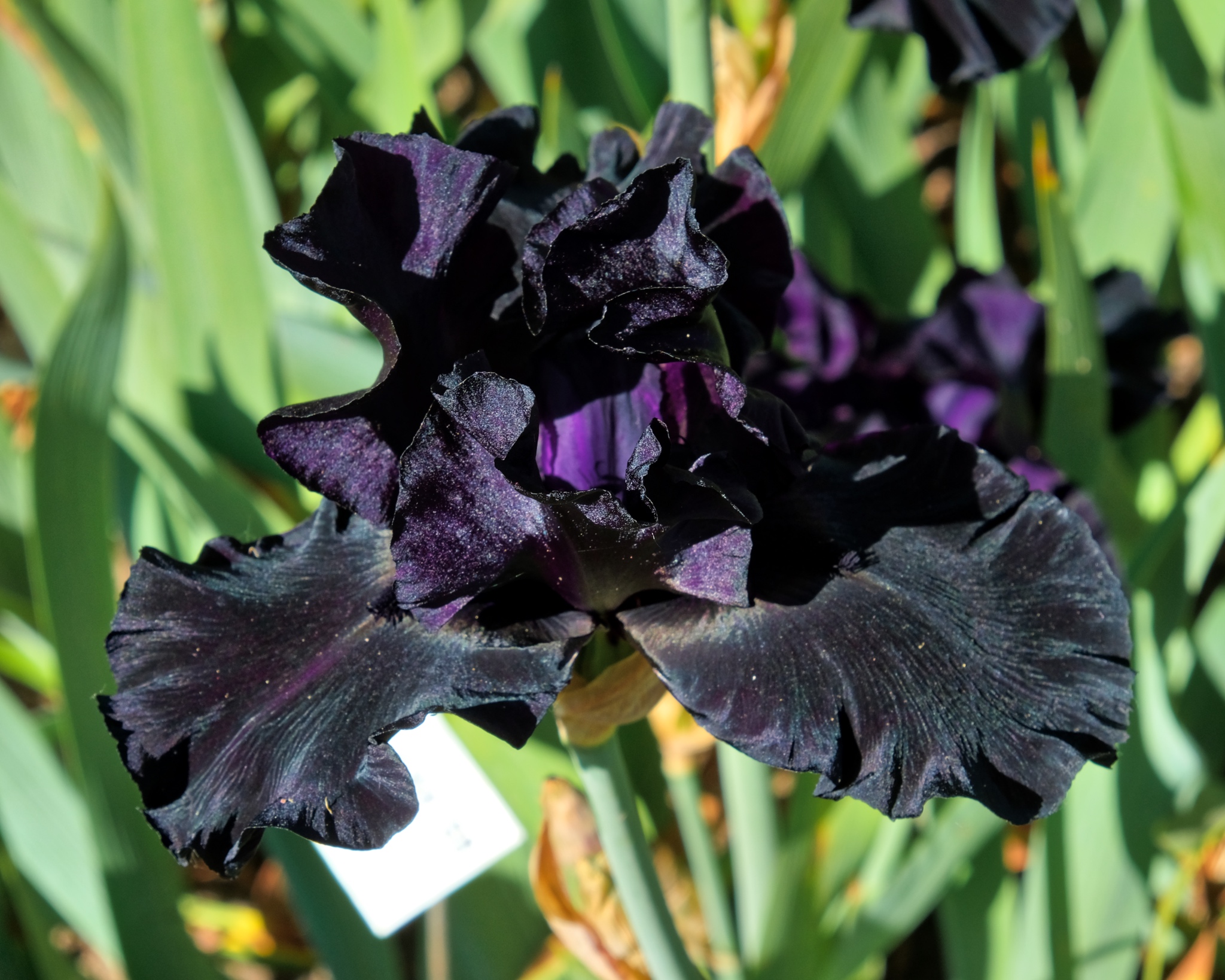 Yes, there are even BLACK irises!
Yes, there are even BLACK irises!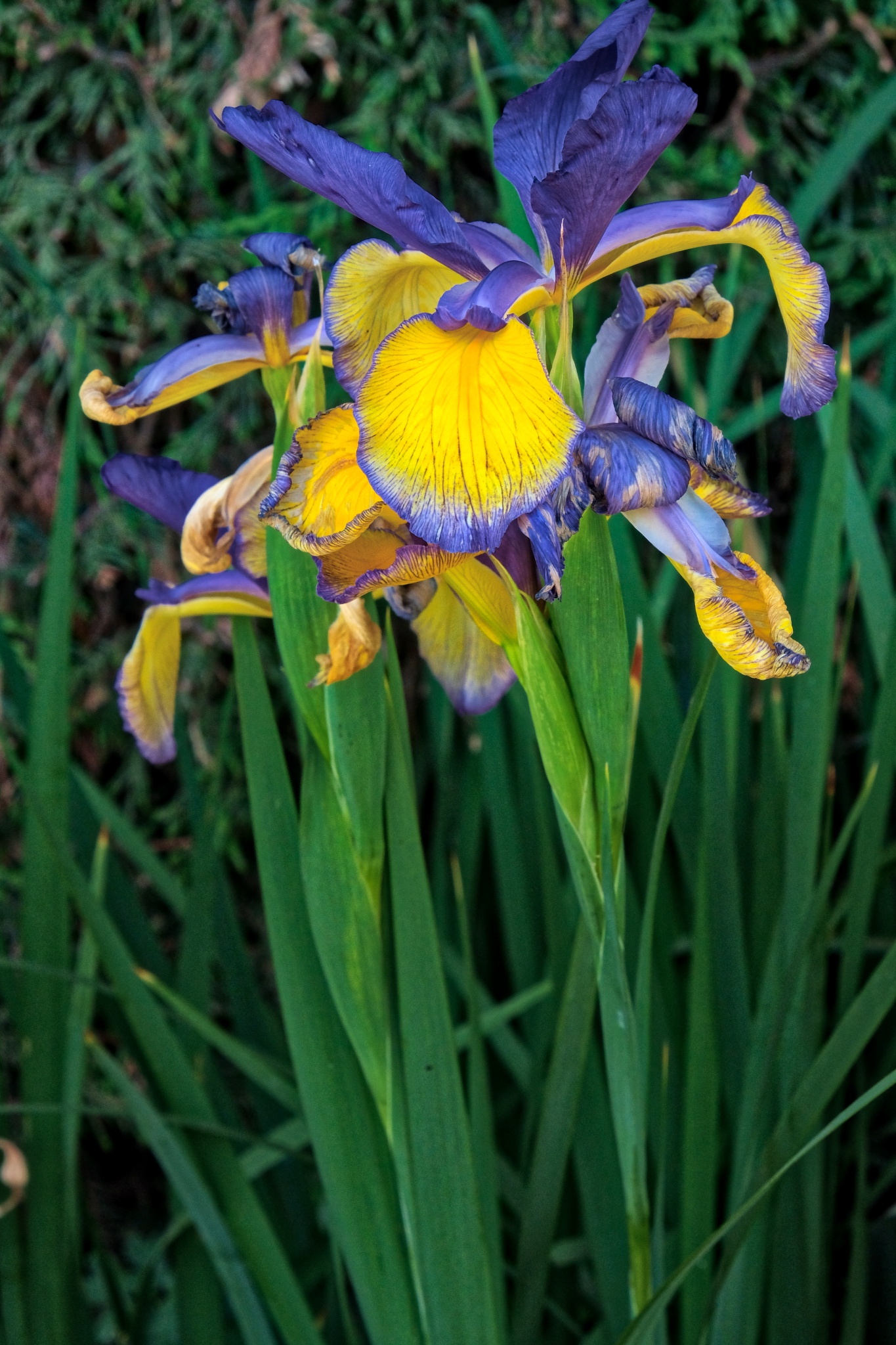 When I think of Irises these are what I usually picture . . .
When I think of Irises these are what I usually picture . . .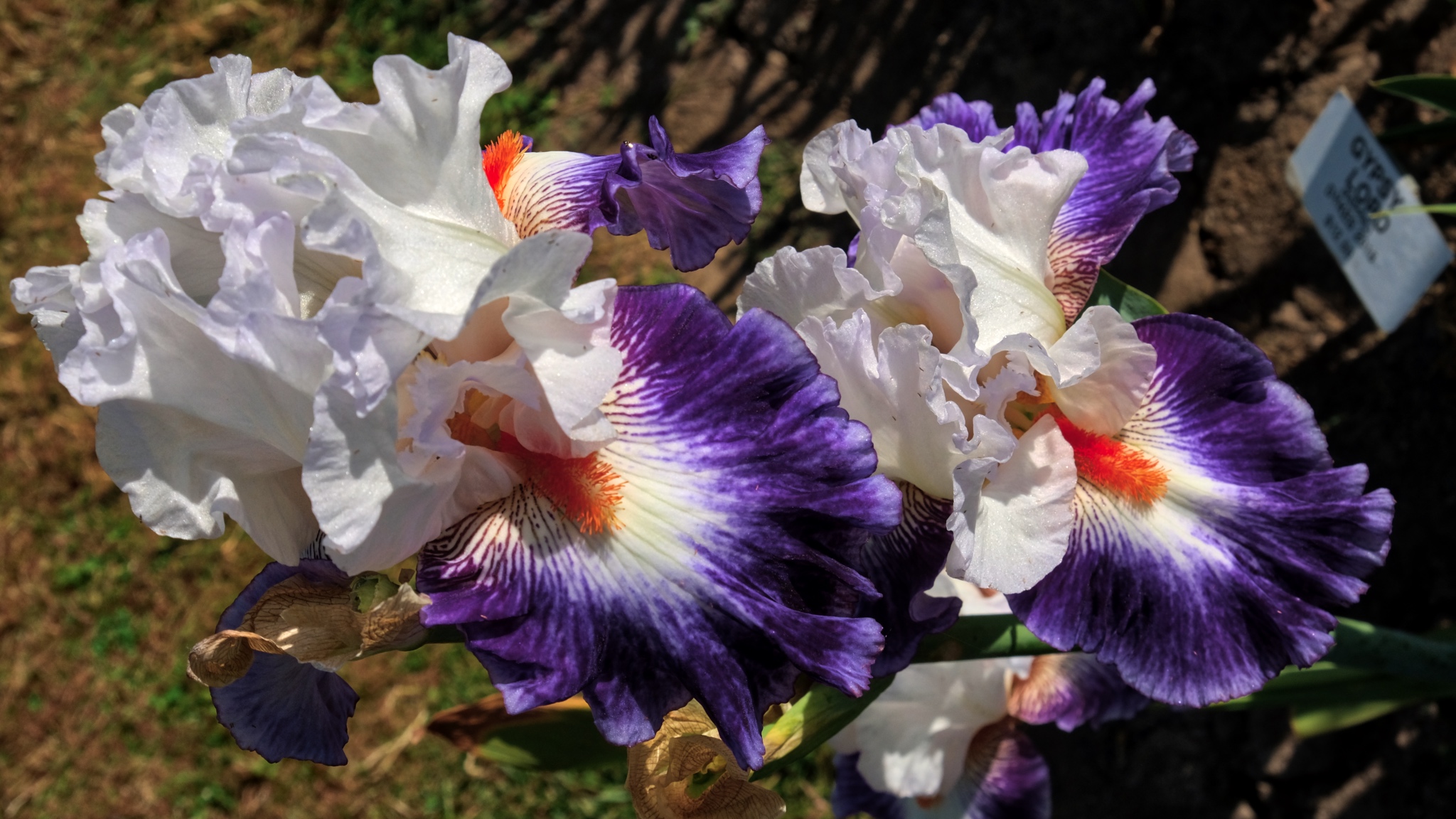 . . . I DO NOT usually think of these . . . Gypsy Lobo Iris. WOW!
. . . I DO NOT usually think of these . . . Gypsy Lobo Iris. WOW!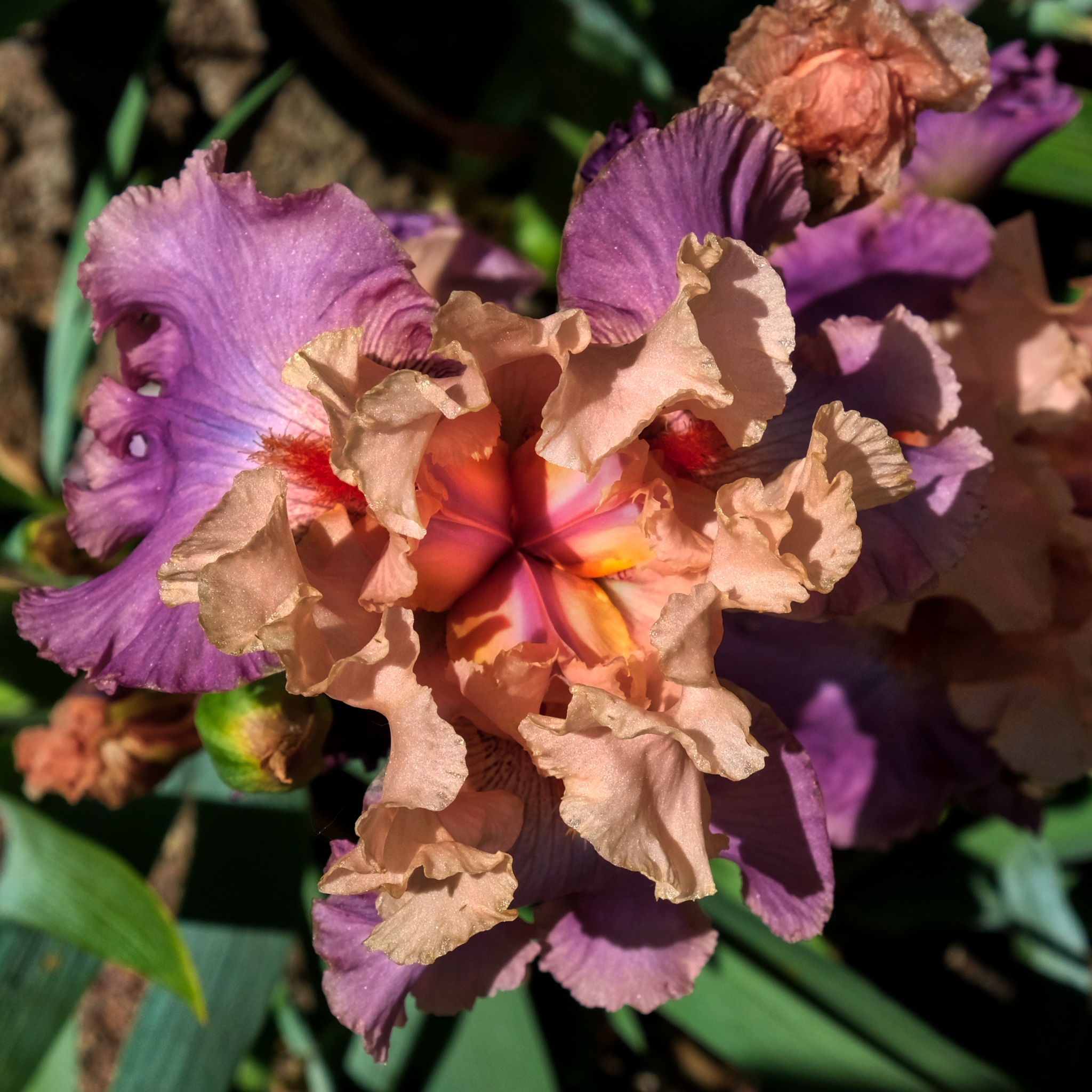 The heart of an amazing iris!
The heart of an amazing iris!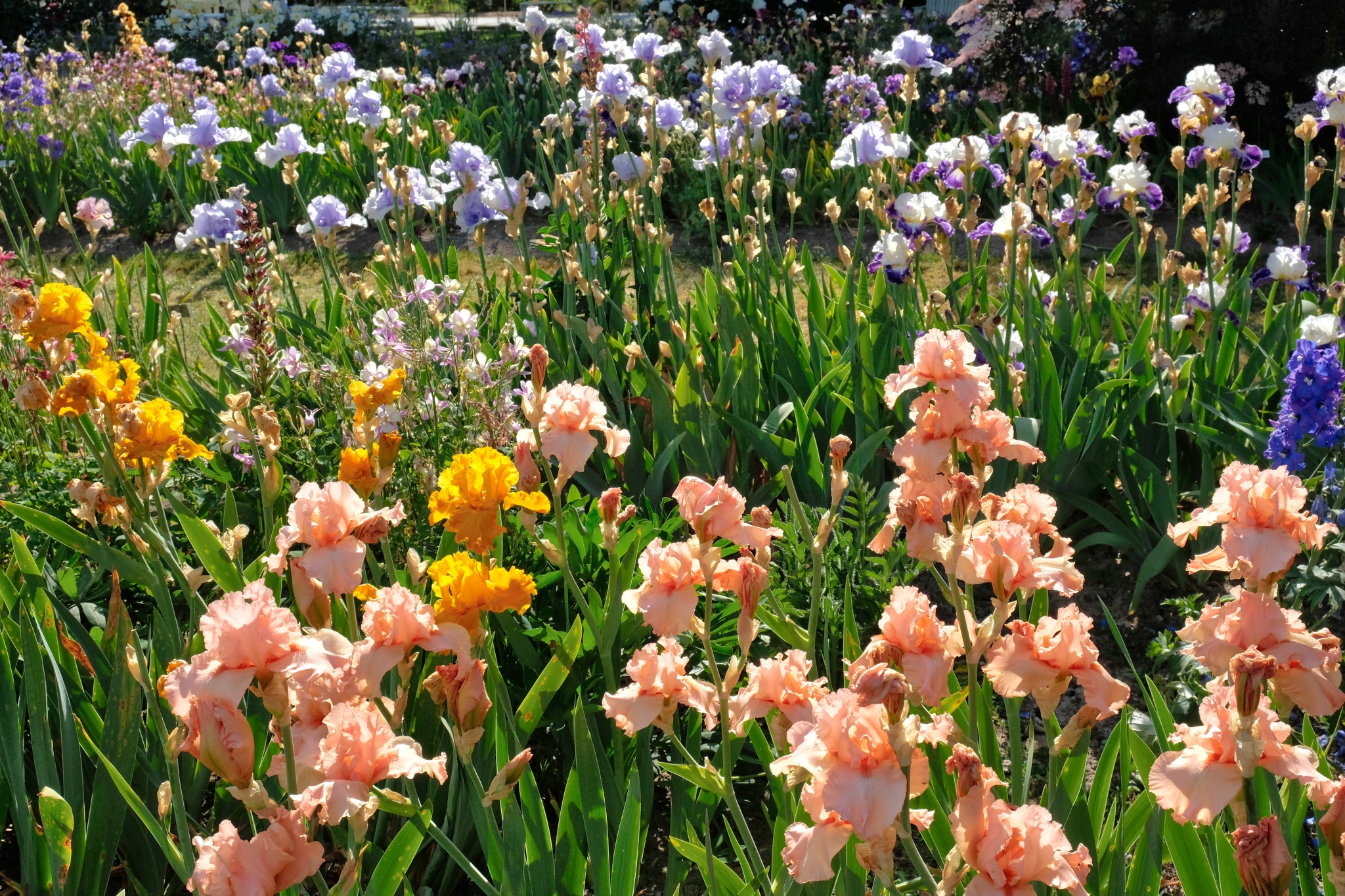 There were so many flowers to study . . .
There were so many flowers to study . . .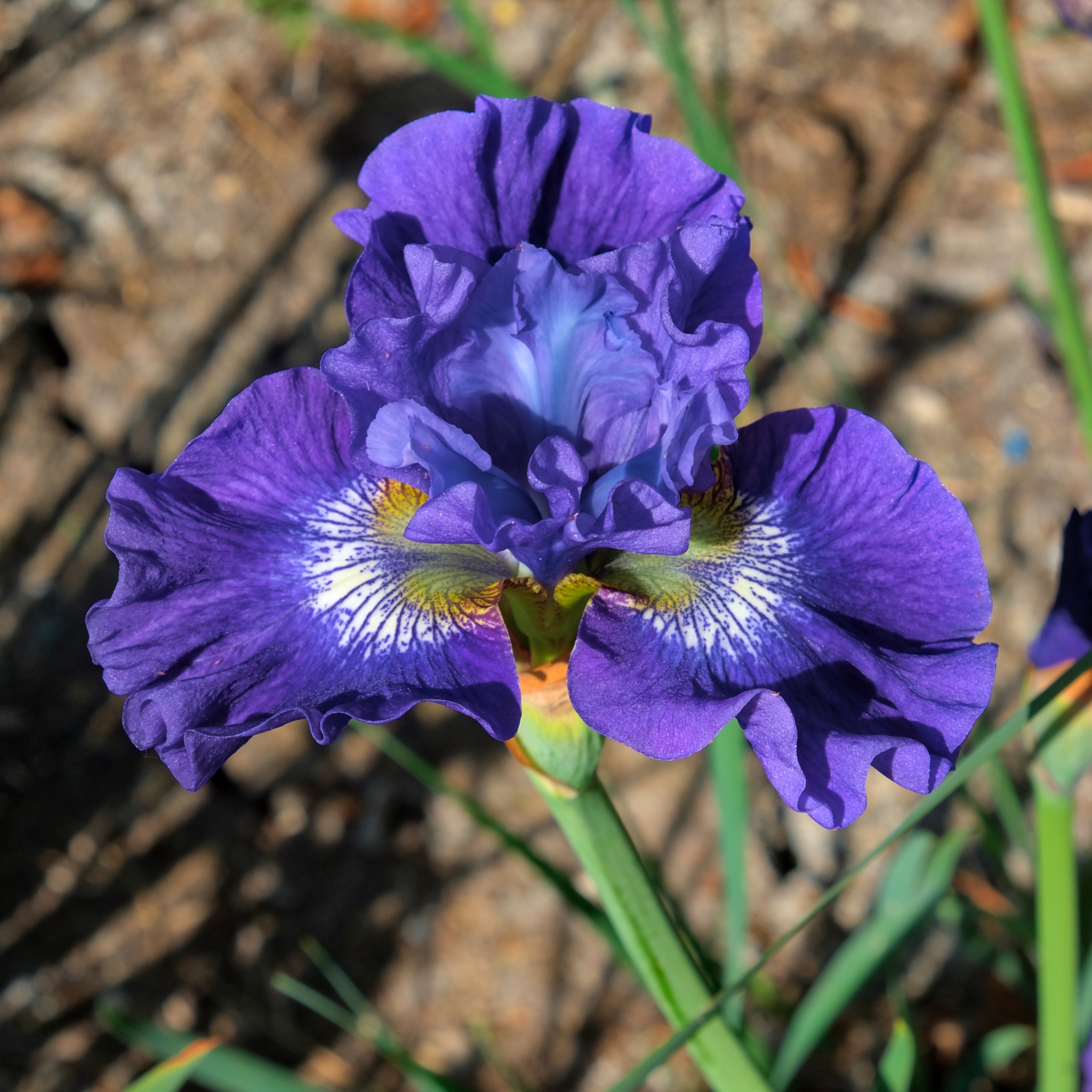 A purple/blue iris.
A purple/blue iris.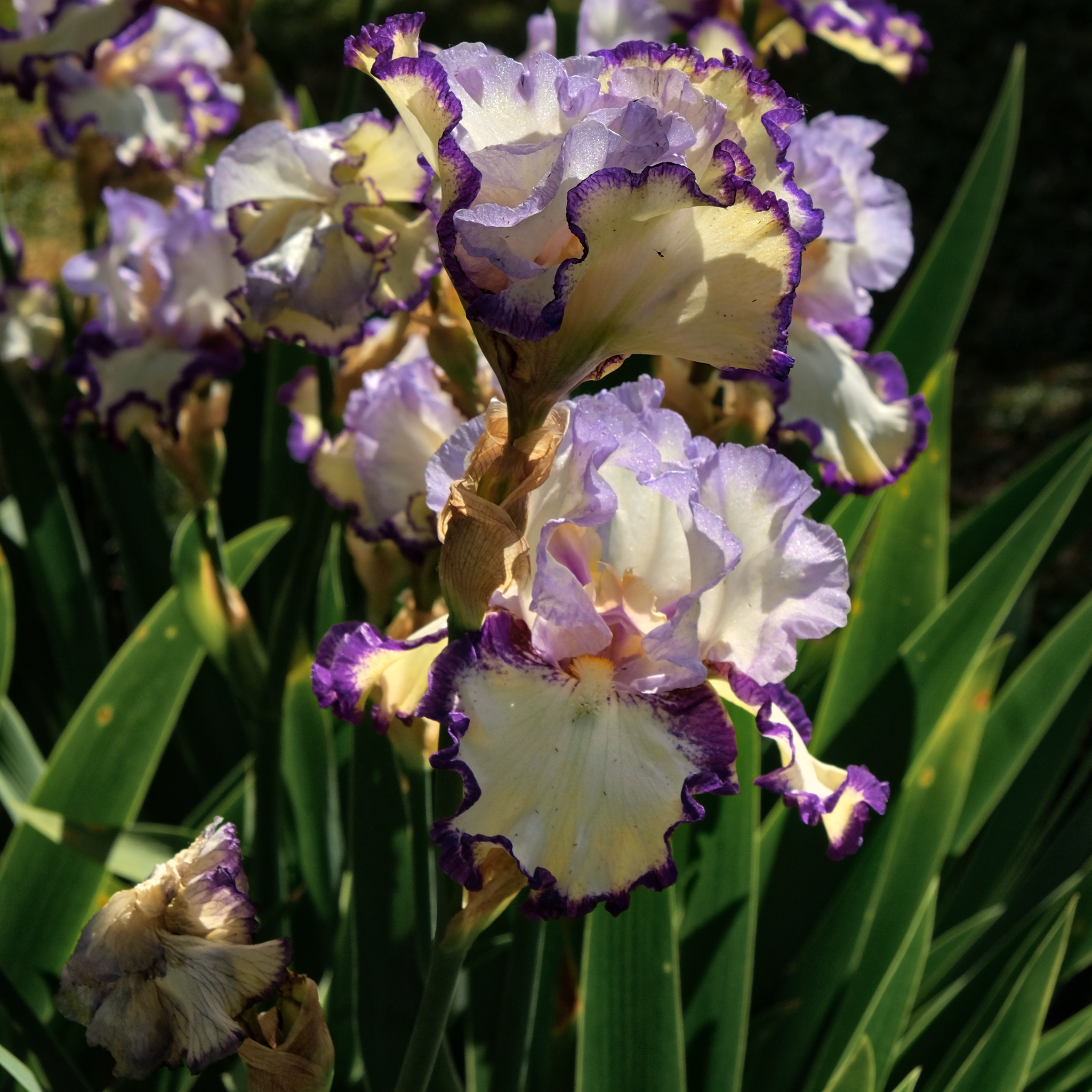 A jumble of white and purple irises.
A jumble of white and purple irises. The combination of colors seemed endless.
The combination of colors seemed endless.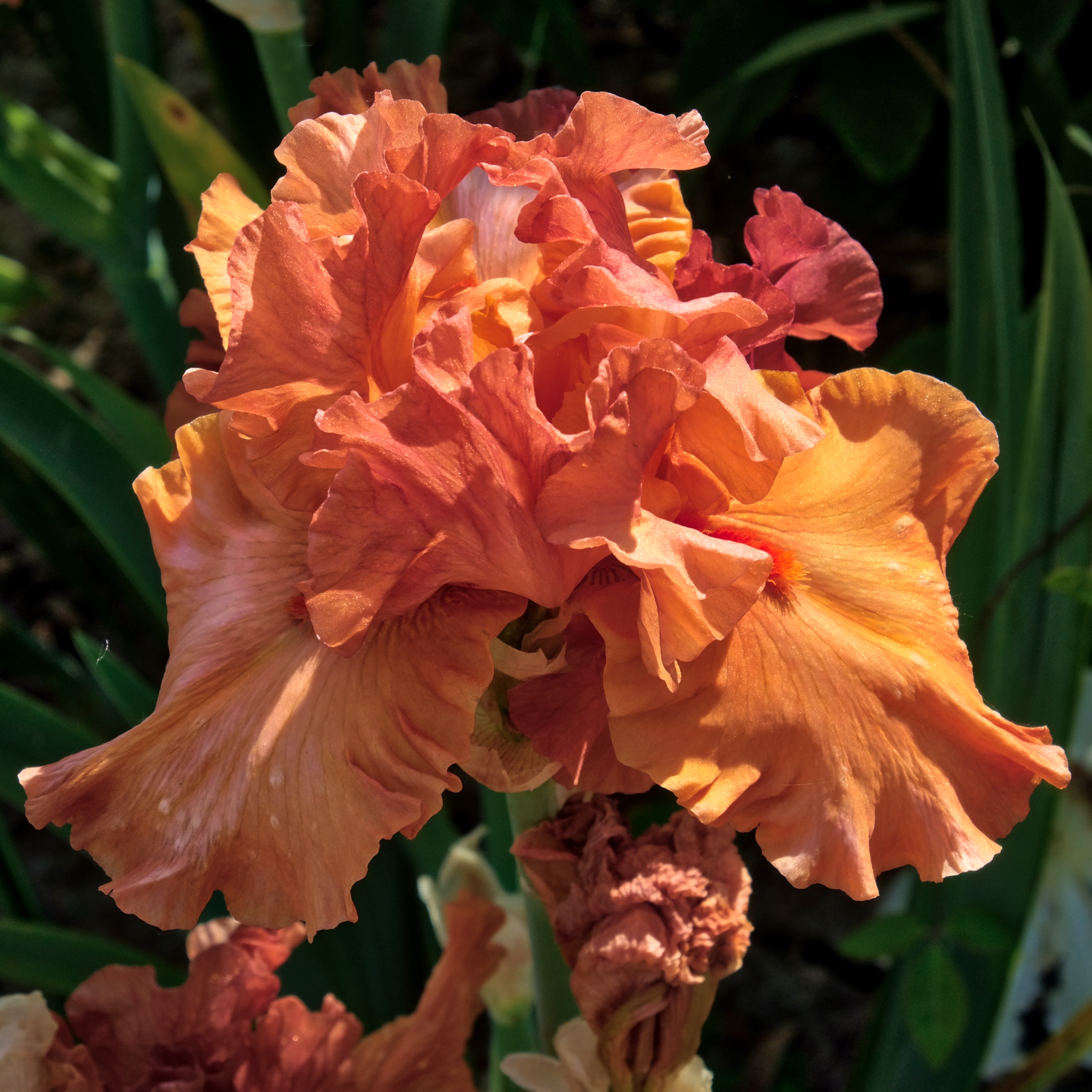 An orange iris.
An orange iris.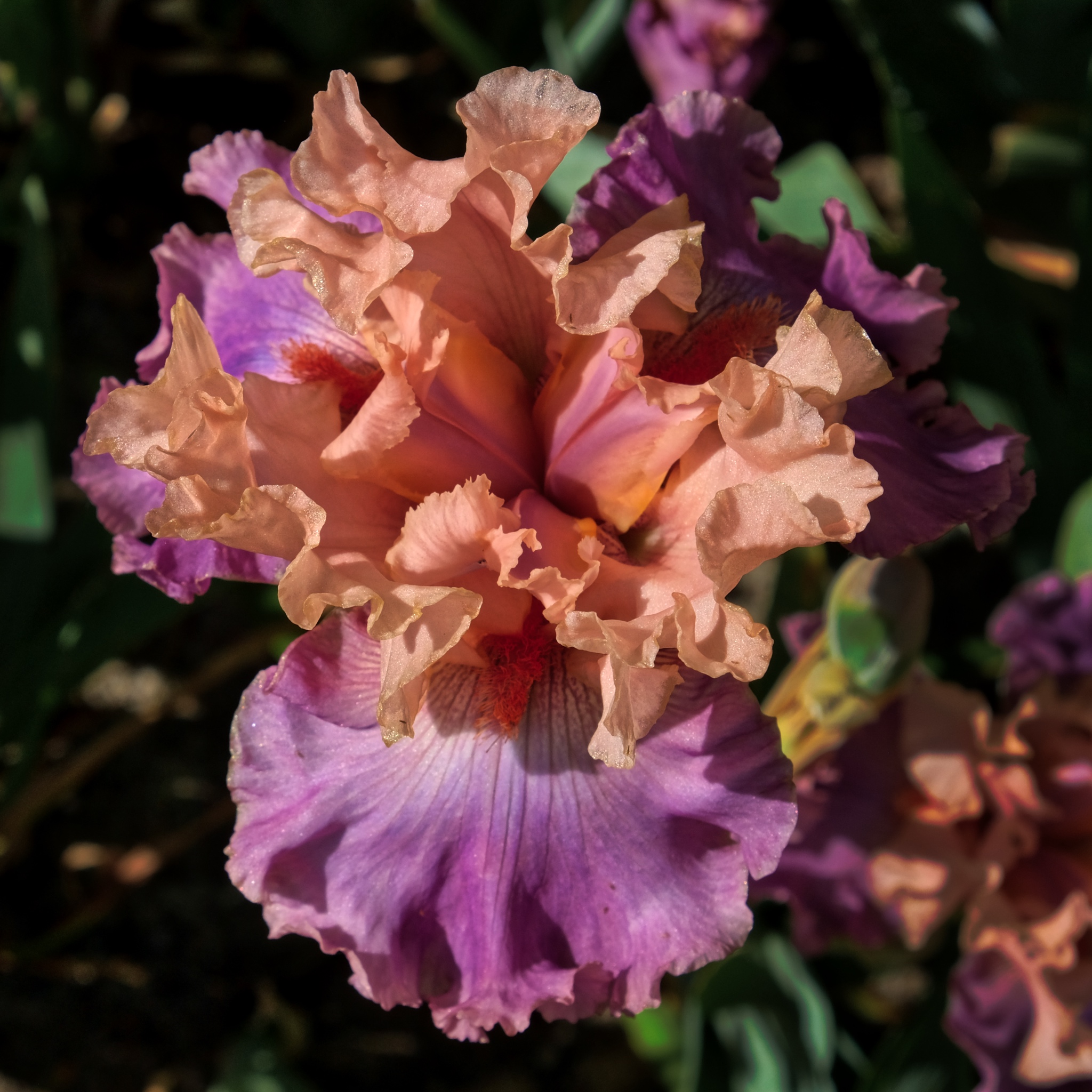 An orange and purple iris.
An orange and purple iris.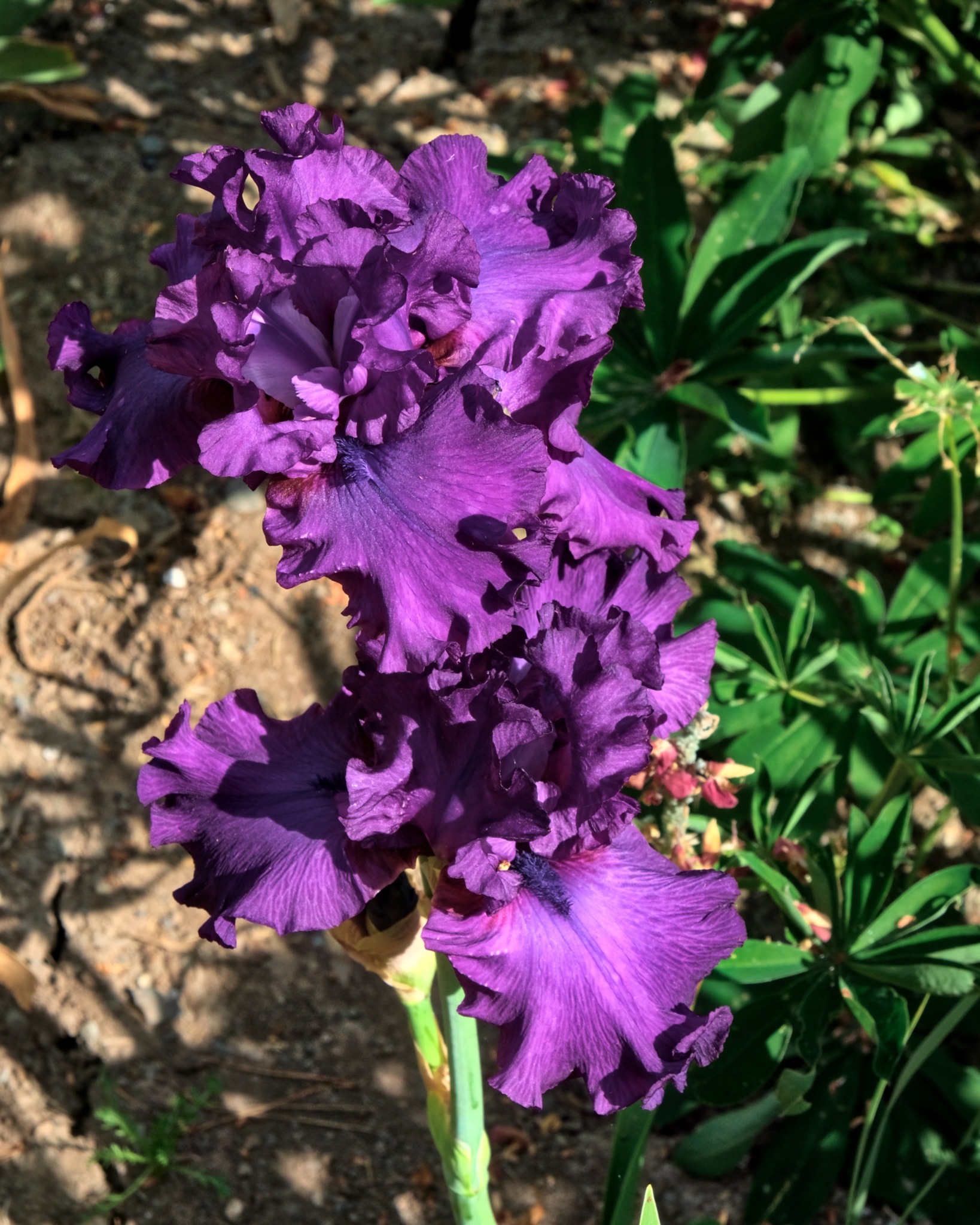 A purple iris . . .
A purple iris . . .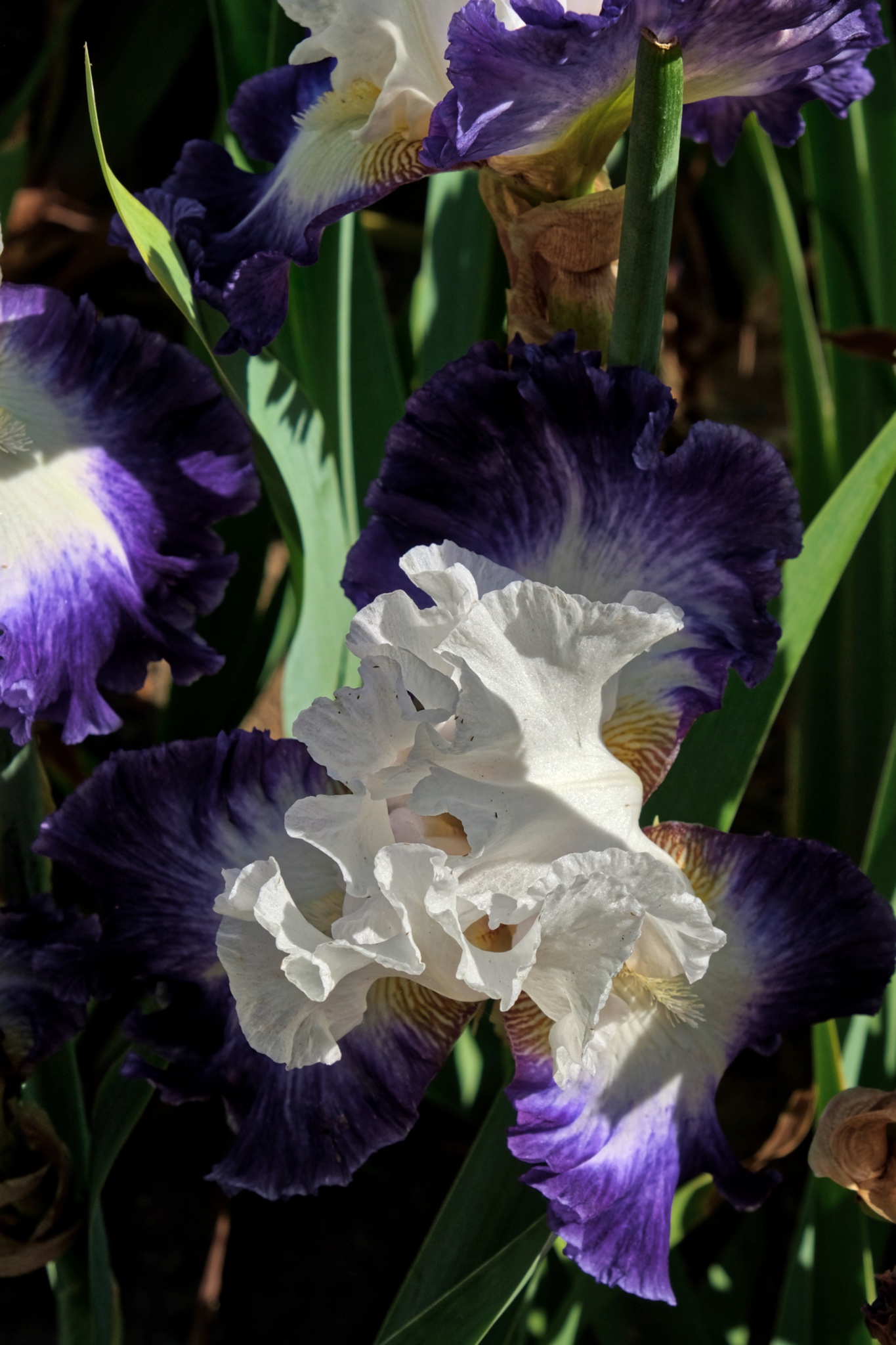 Purple and white . . .
Purple and white . . .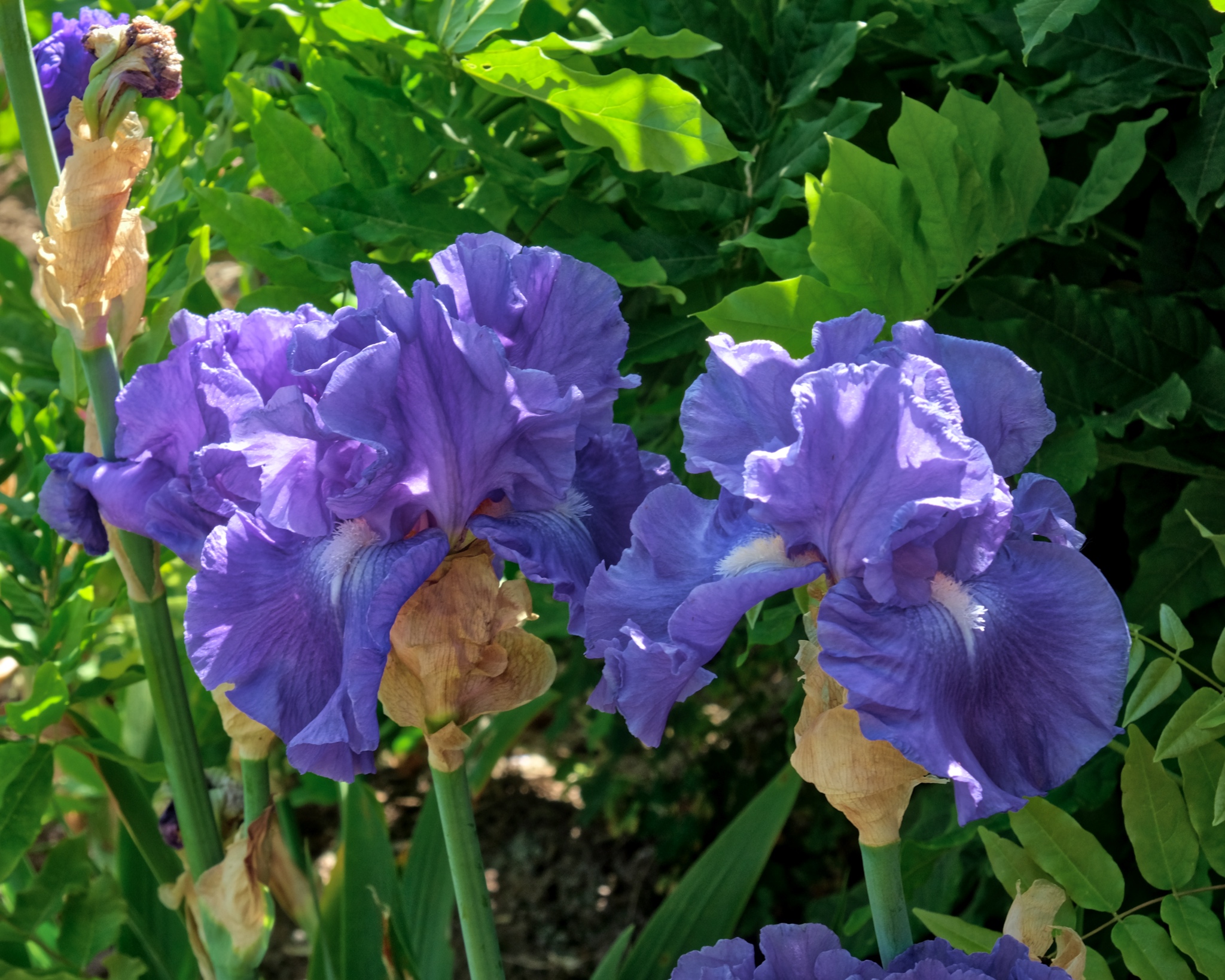 Many shades of color . . .
Many shades of color . . .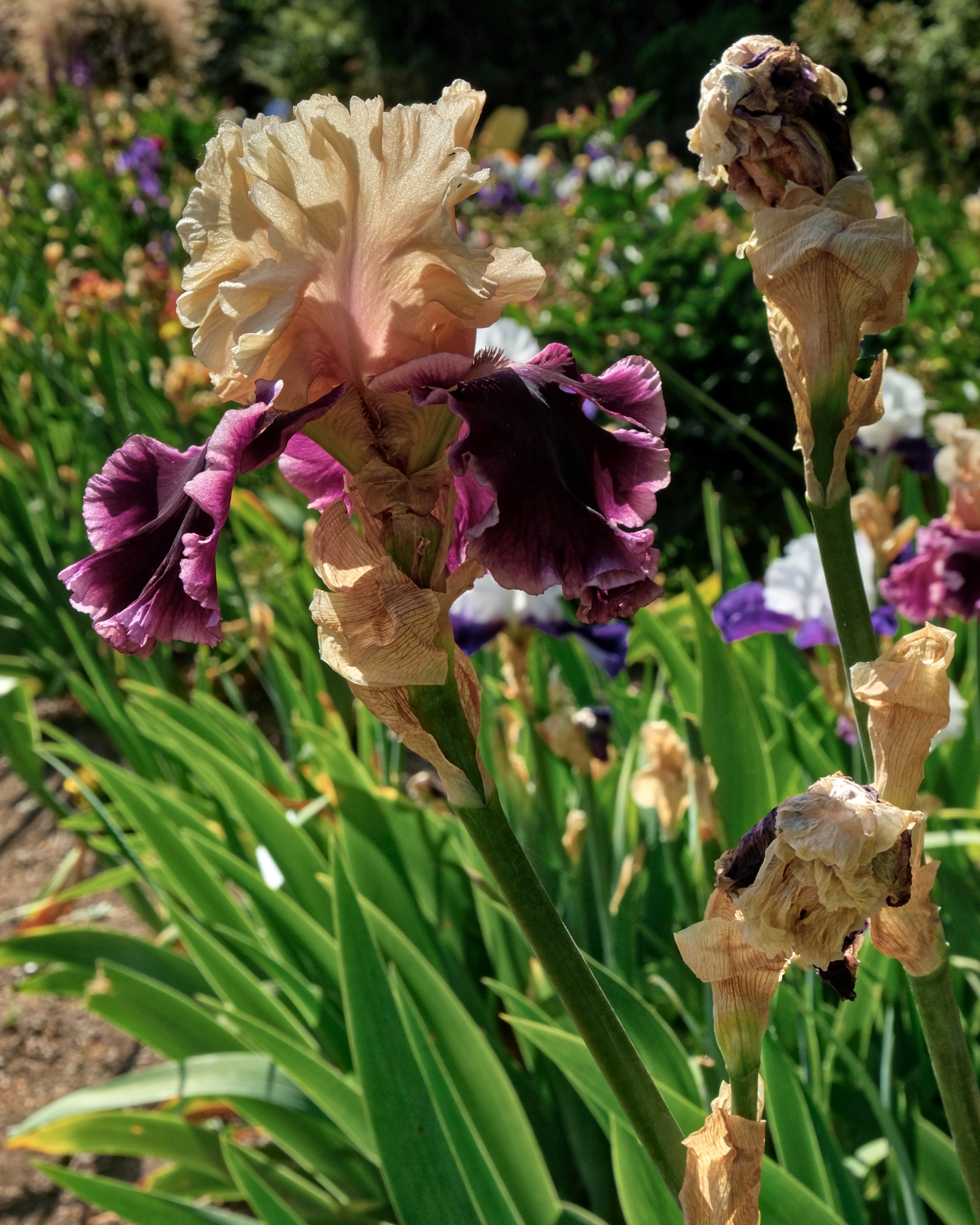 The marvelous iris!
The marvelous iris!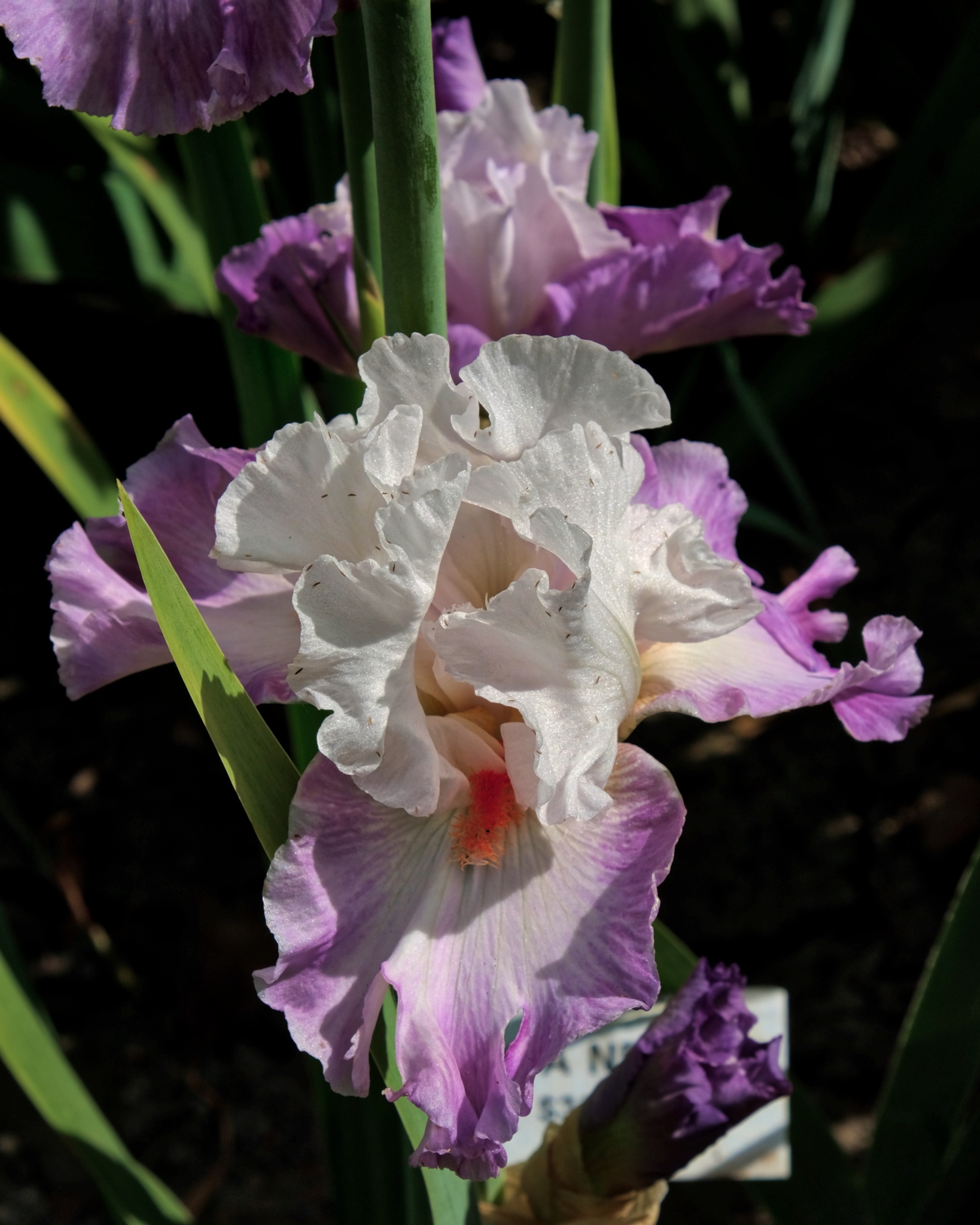 The whites were so pure against the purple . . .
The whites were so pure against the purple . . .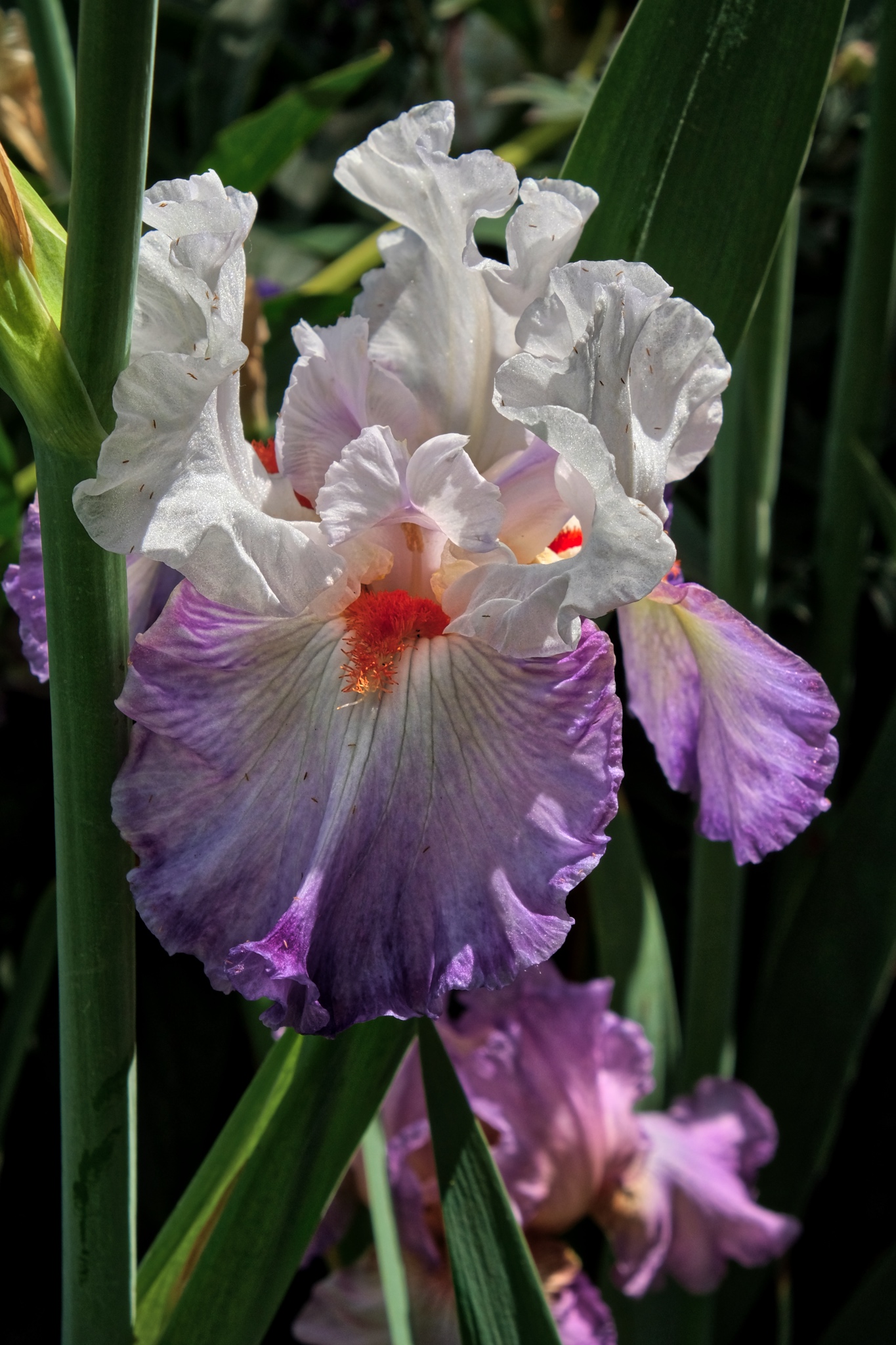 A splash of orange at the center . . .
A splash of orange at the center . . .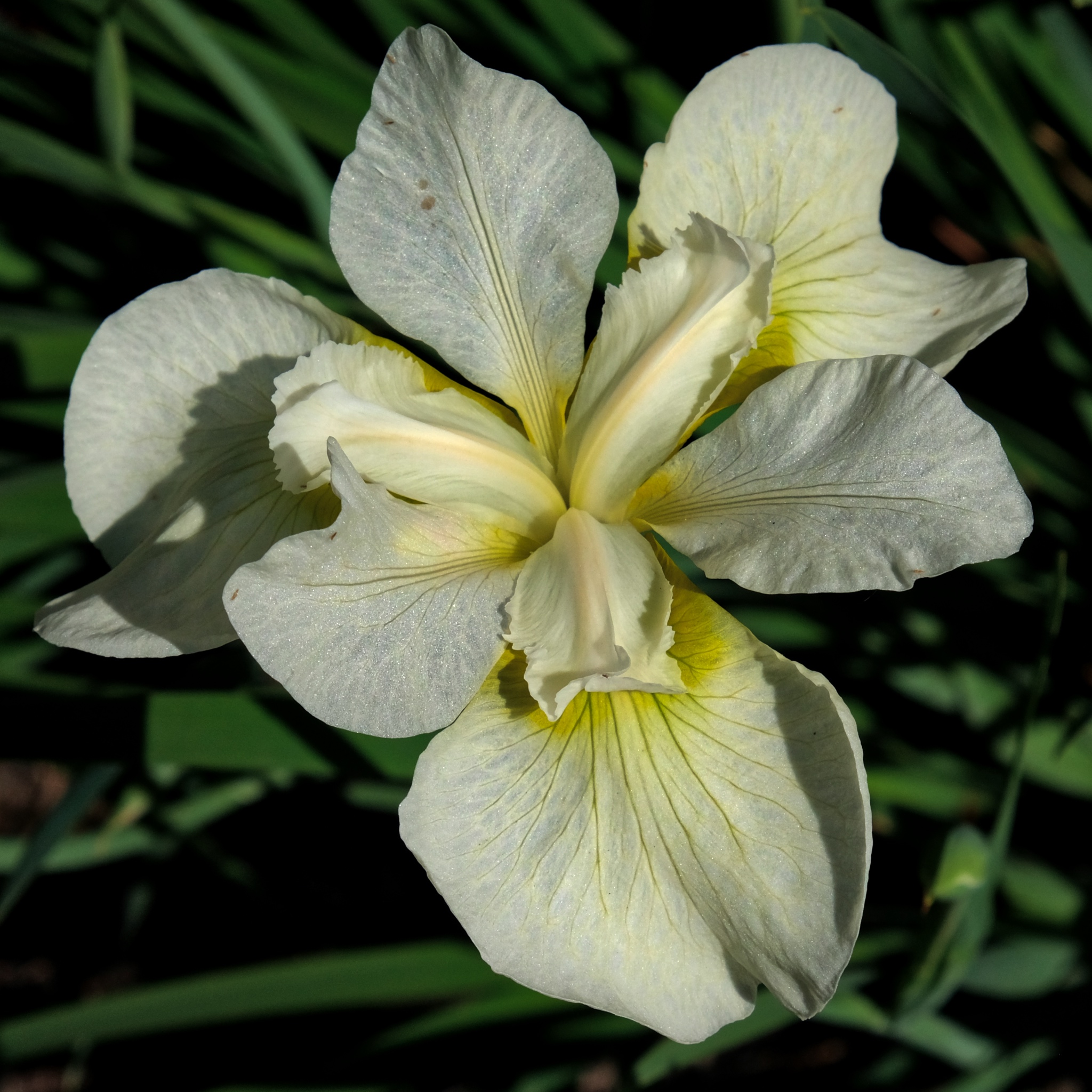 An otherworldly iris!!!
An otherworldly iris!!!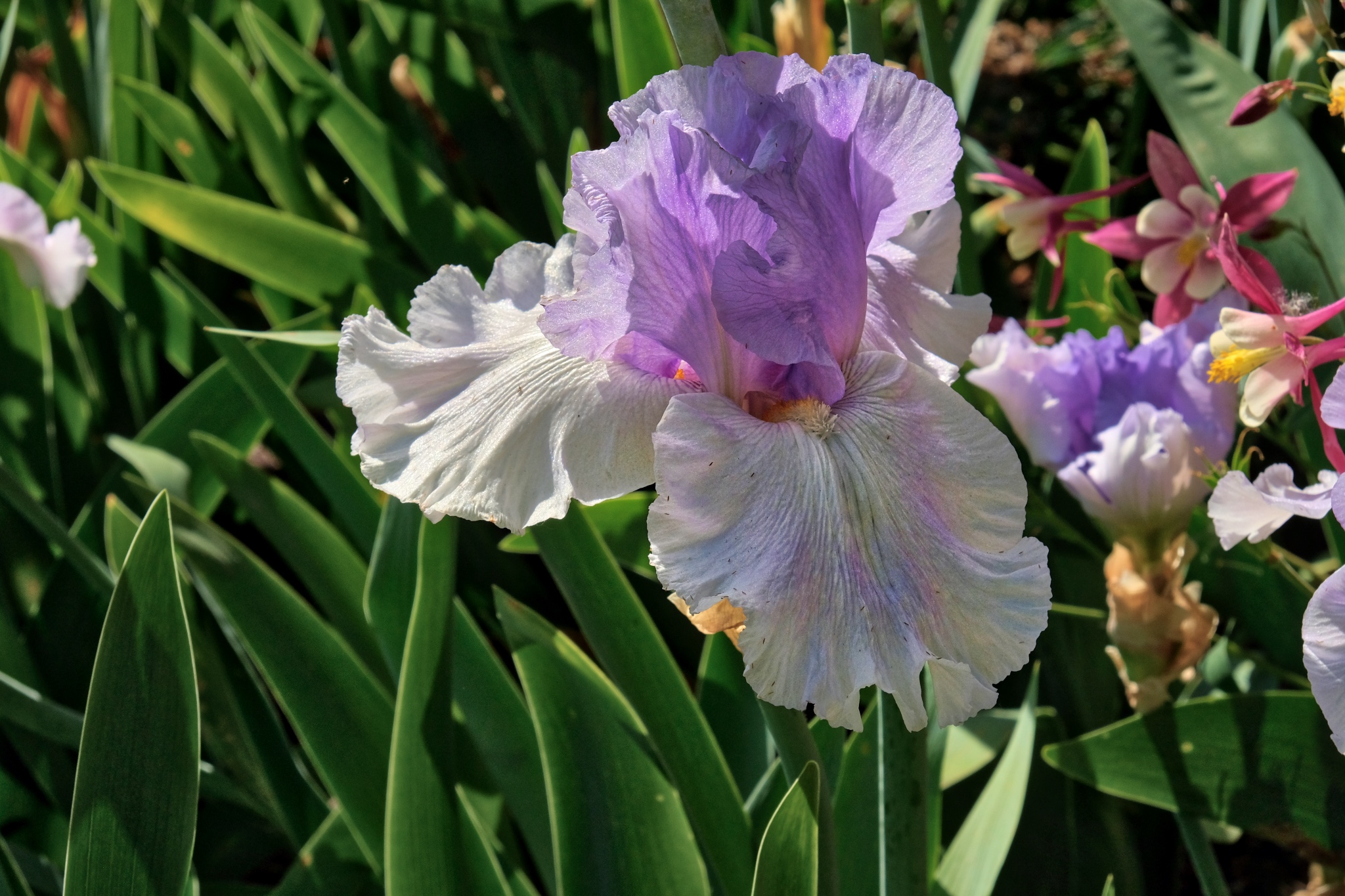 Such a beautiful array of irises.
Such a beautiful array of irises.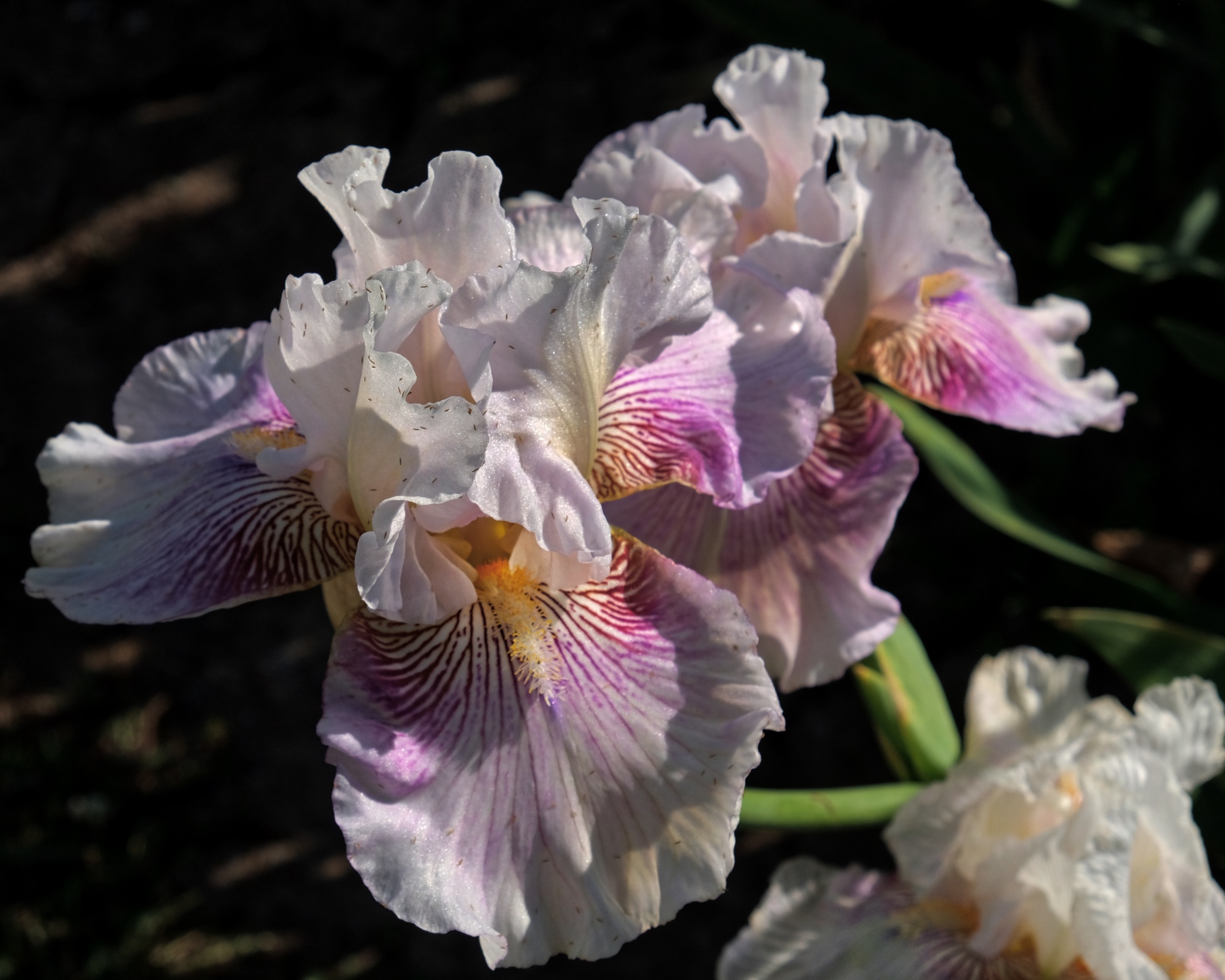 White, yellow, magenta, and purple . . .wow!
White, yellow, magenta, and purple . . .wow!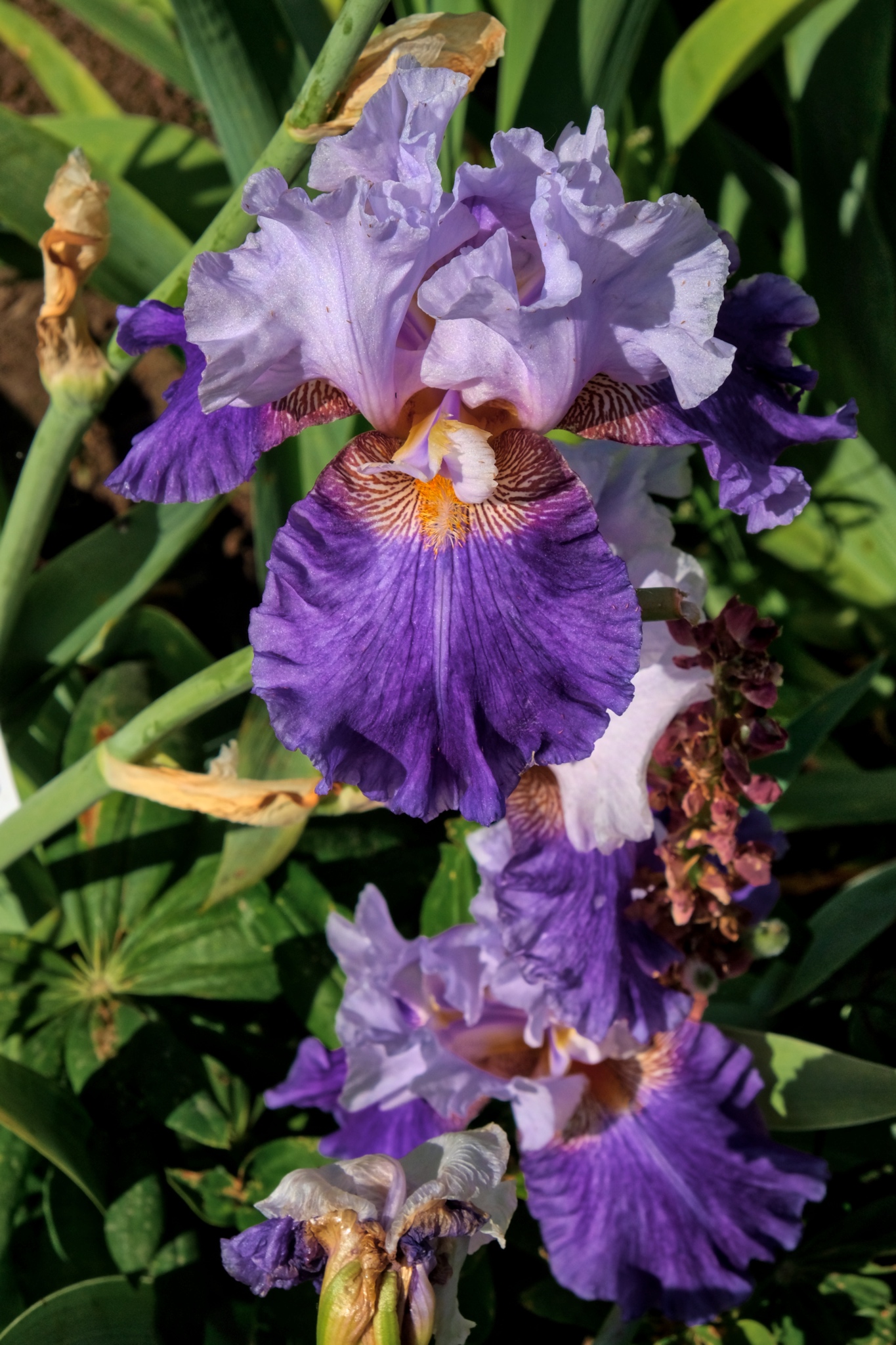 Pattern, color, shape . . .
Pattern, color, shape . . .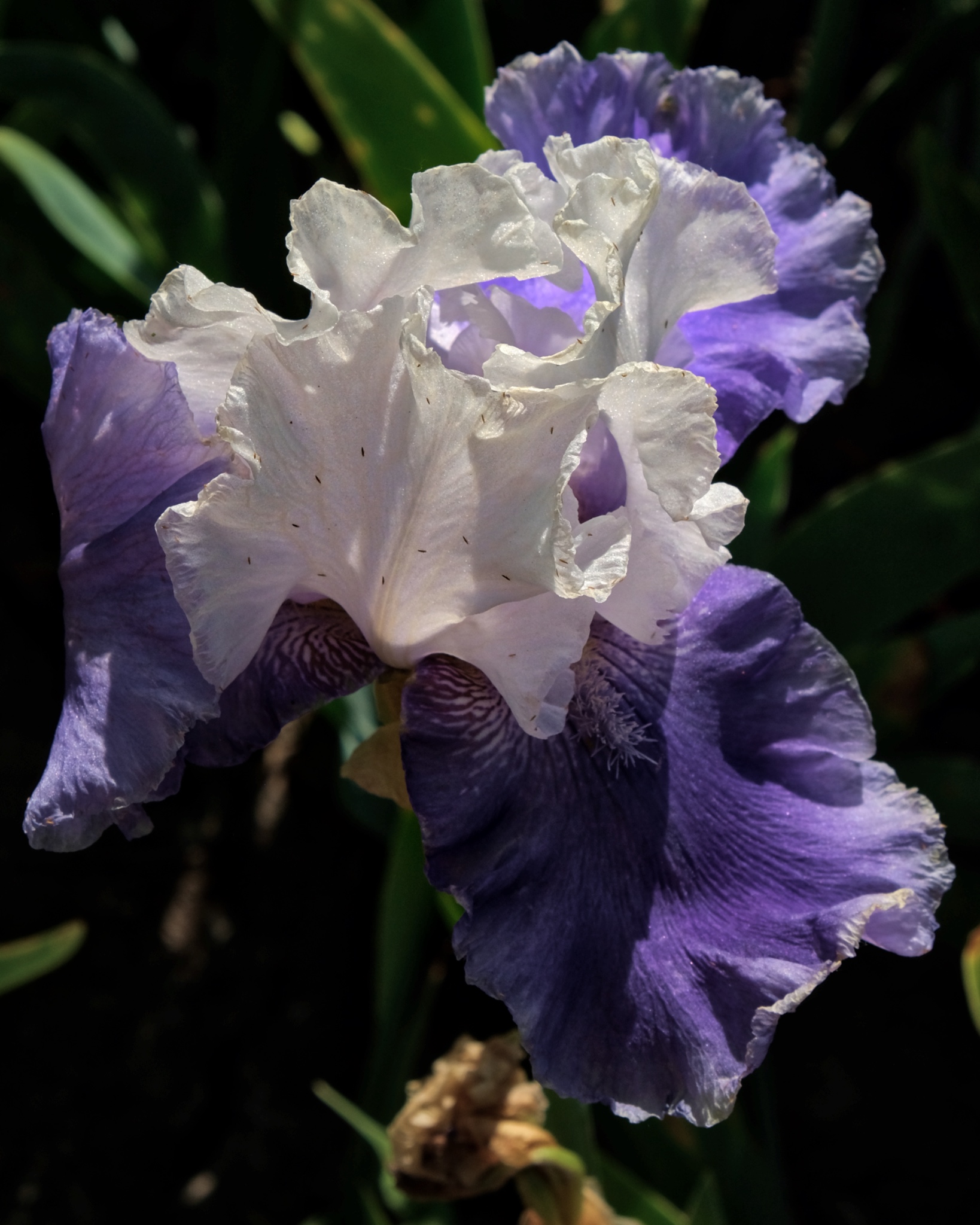 Delicate and fine . . .
Delicate and fine . . .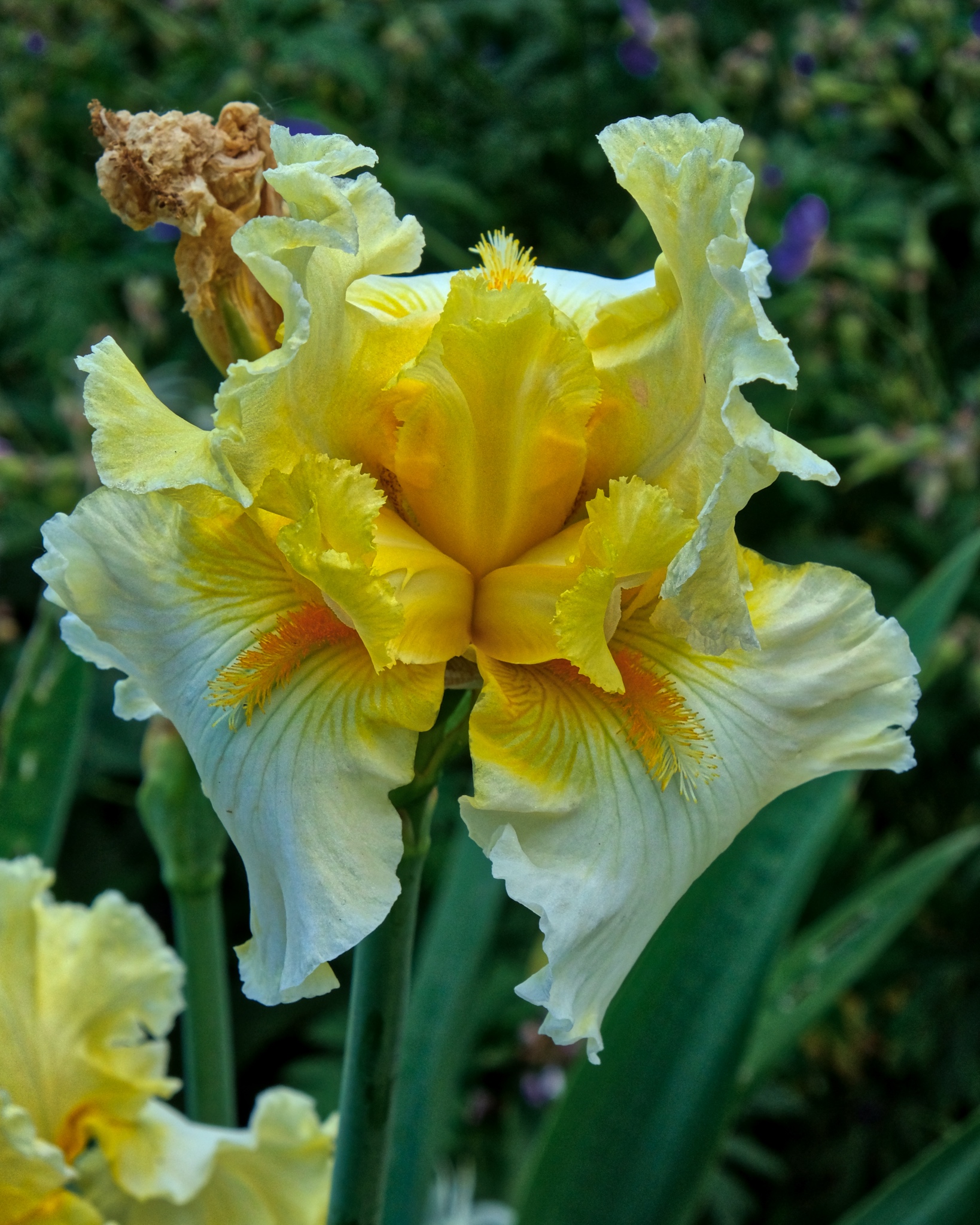 Strong yellow . . .
Strong yellow . . .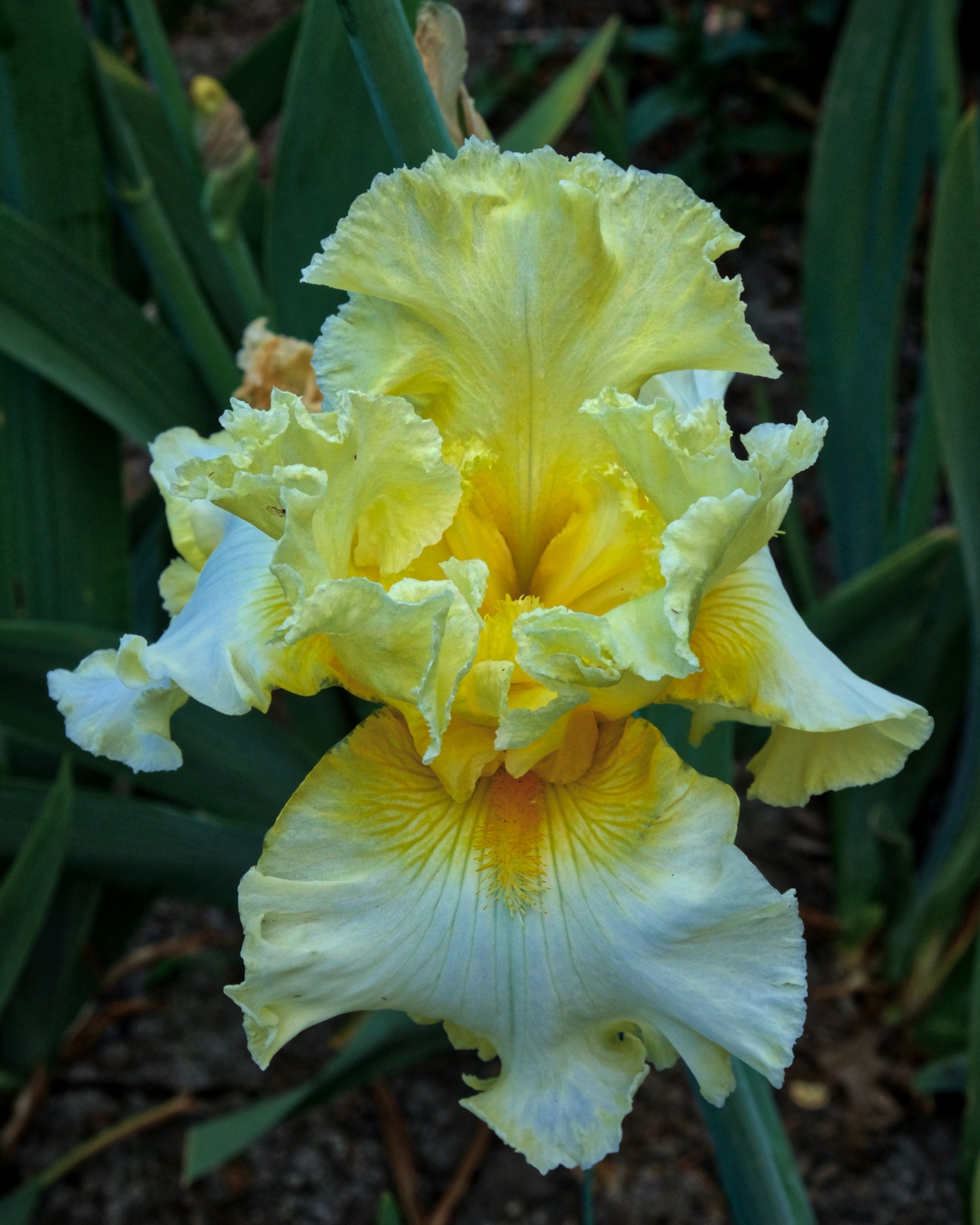 Pastel yellow and white . . .
Pastel yellow and white . . .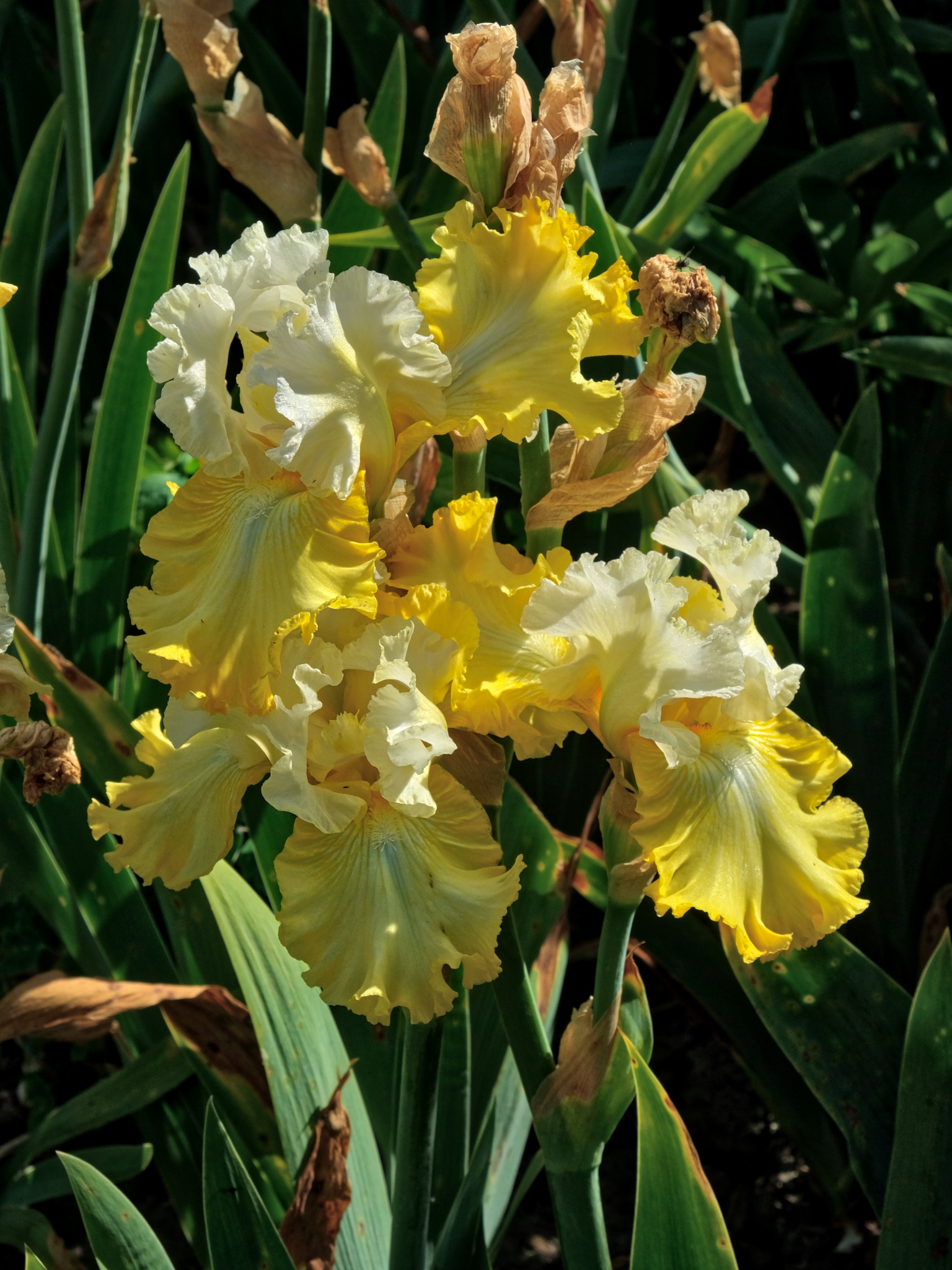 Pale yellow, white, green . . .
Pale yellow, white, green . . .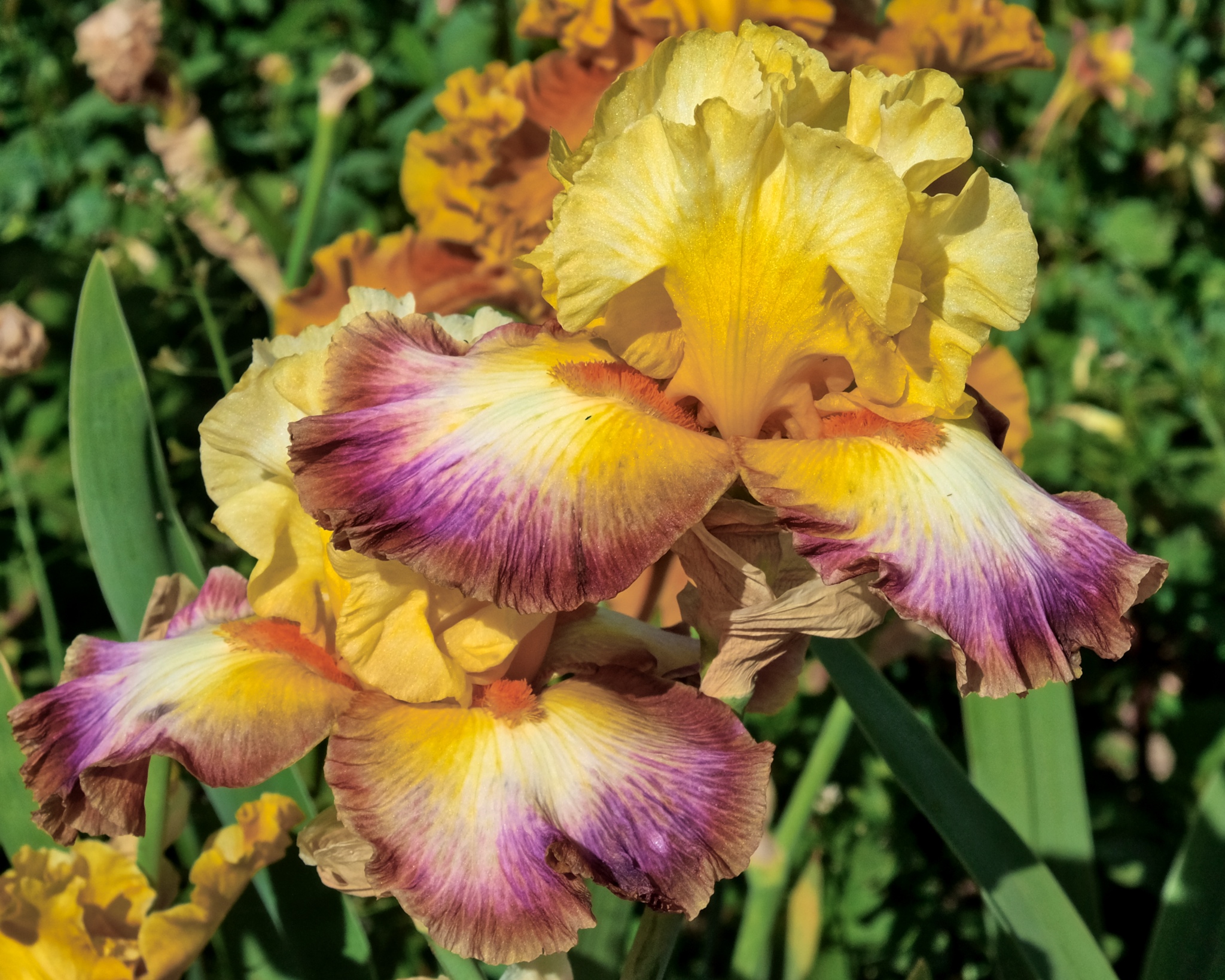 A garish yellow and magenta iris . . .
A garish yellow and magenta iris . . .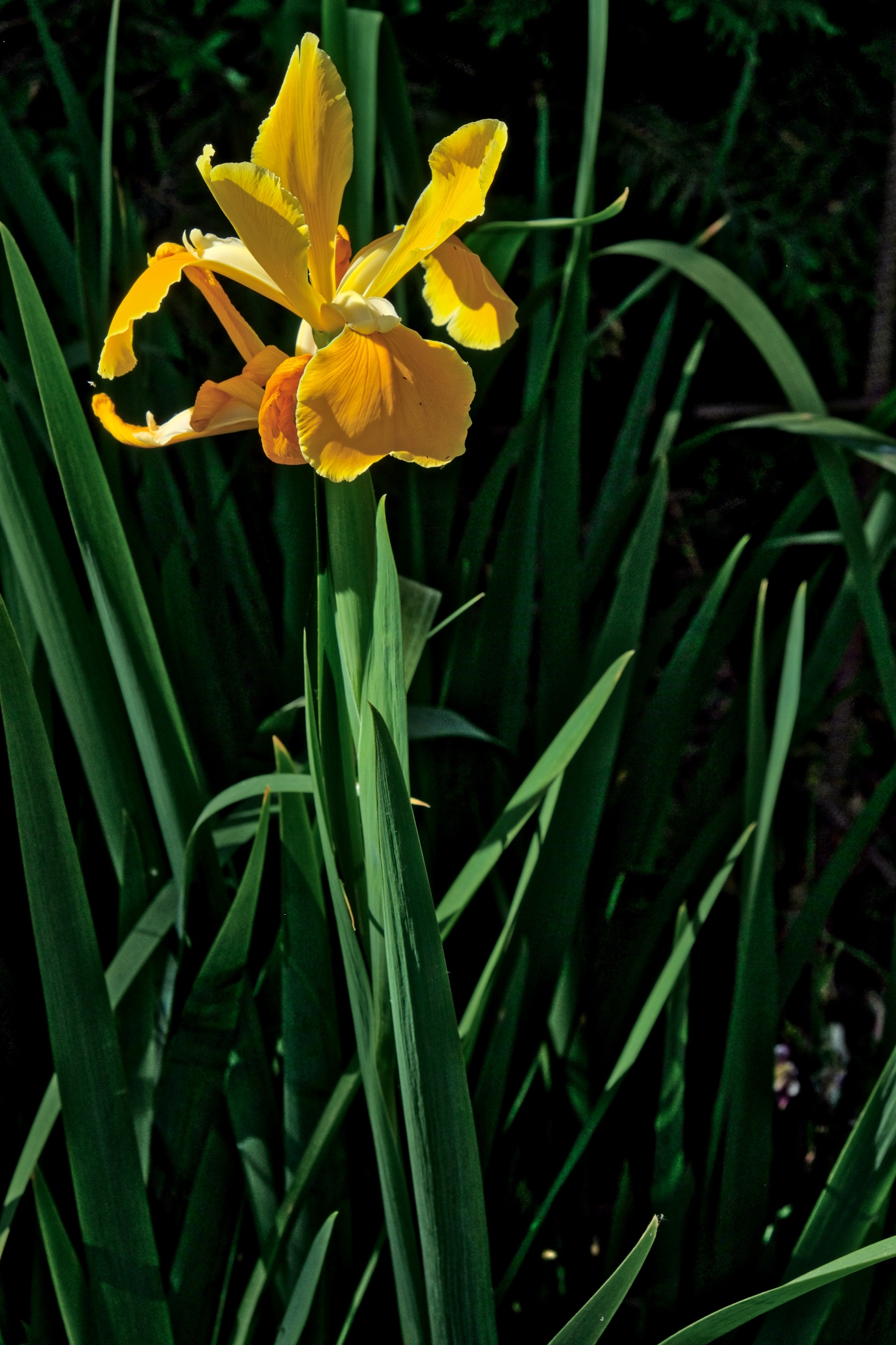 Iris and stem . . . so pretty.
Iris and stem . . . so pretty.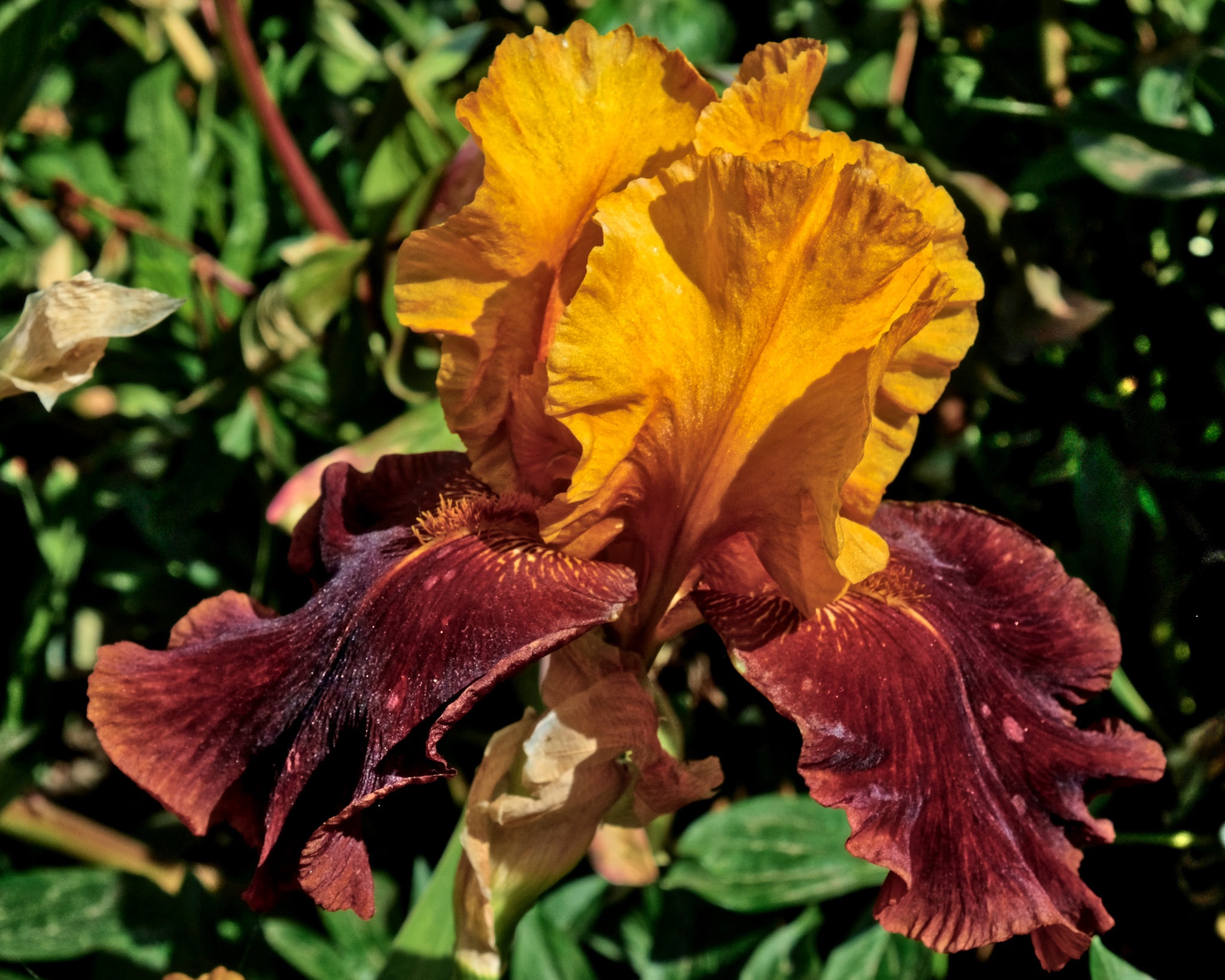 Bold color combinations too . . .
Bold color combinations too . . .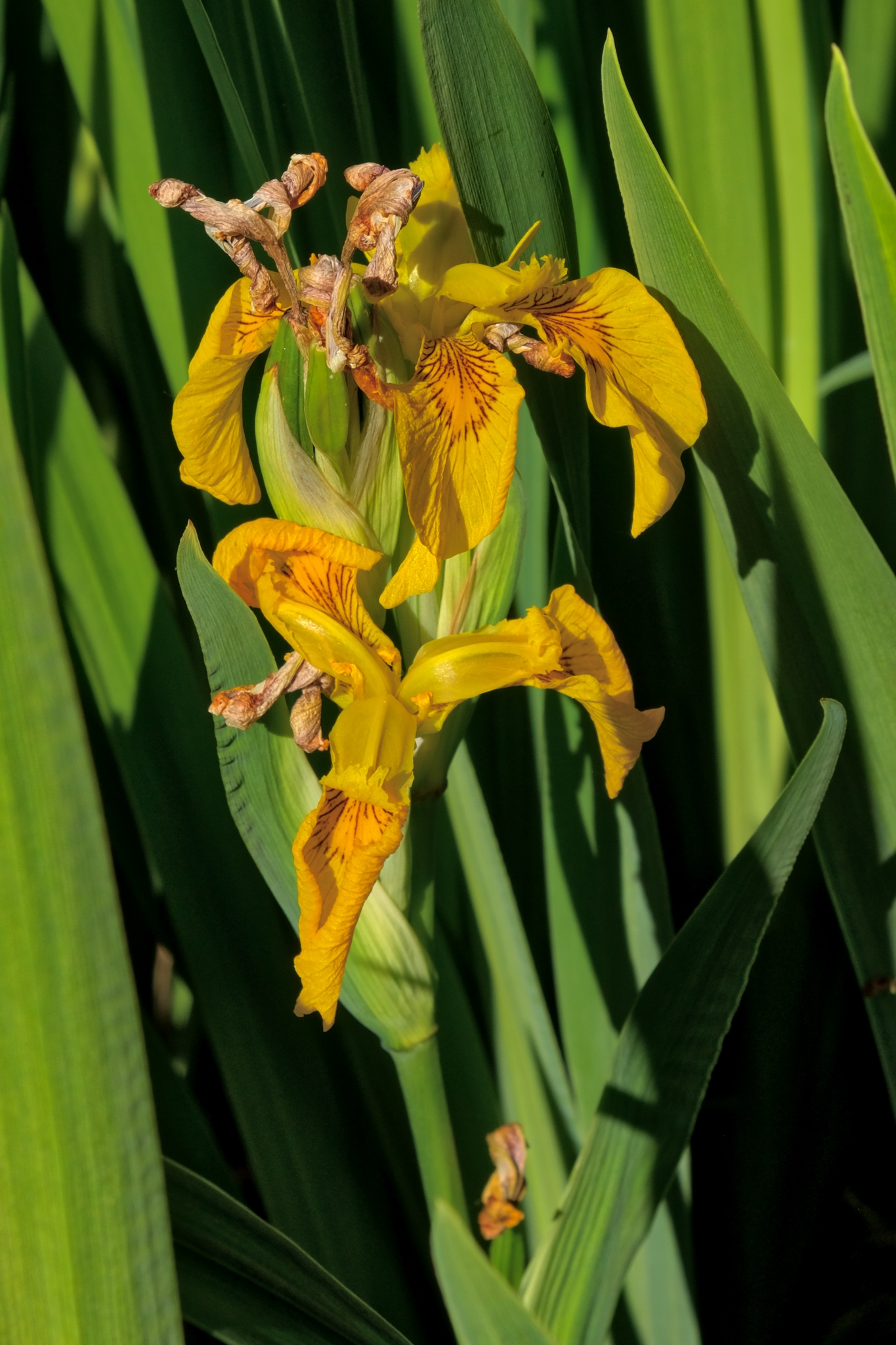 Subtle and gentle irises too.
Subtle and gentle irises too.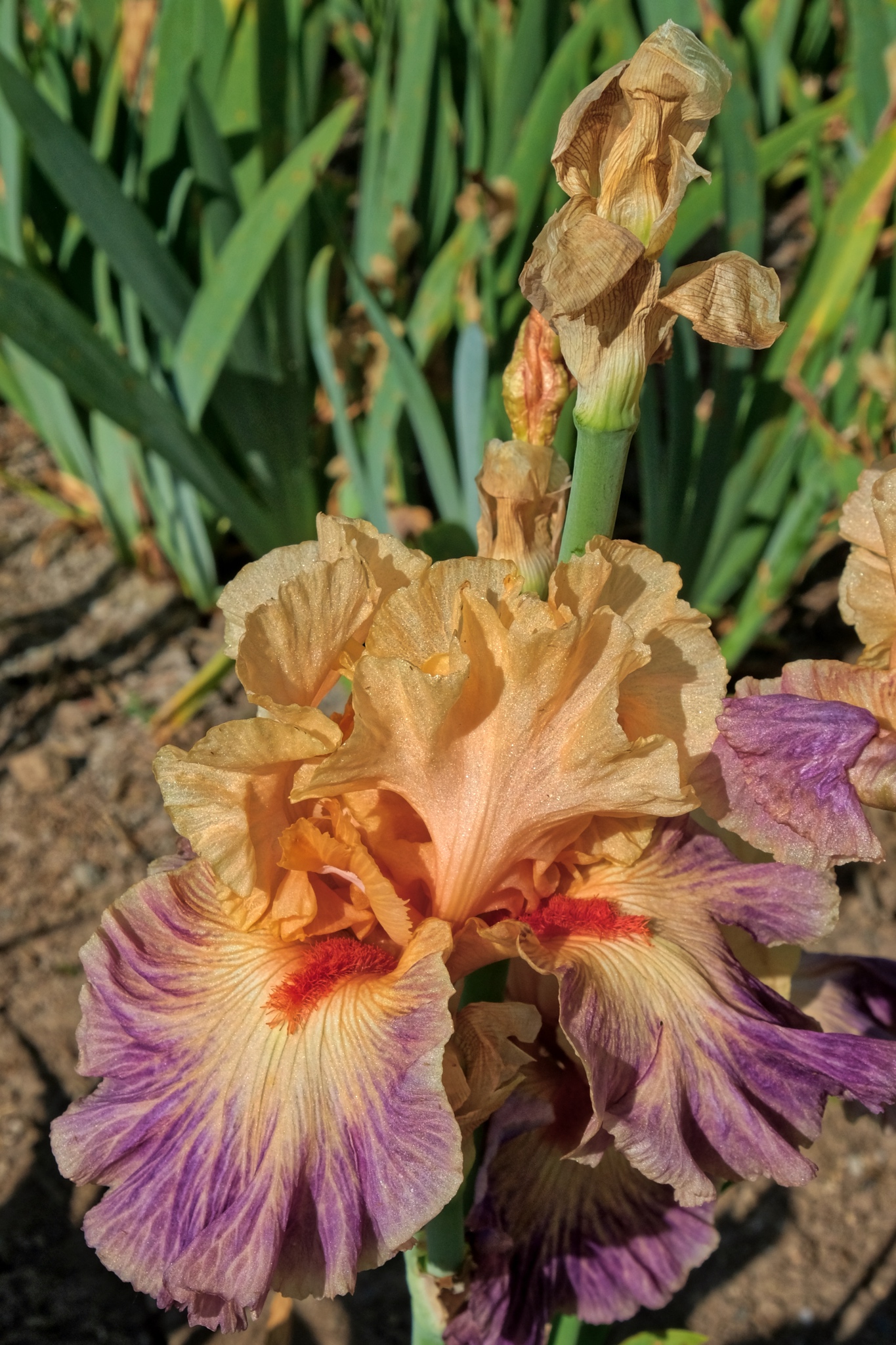 A strange world . . .
A strange world . . .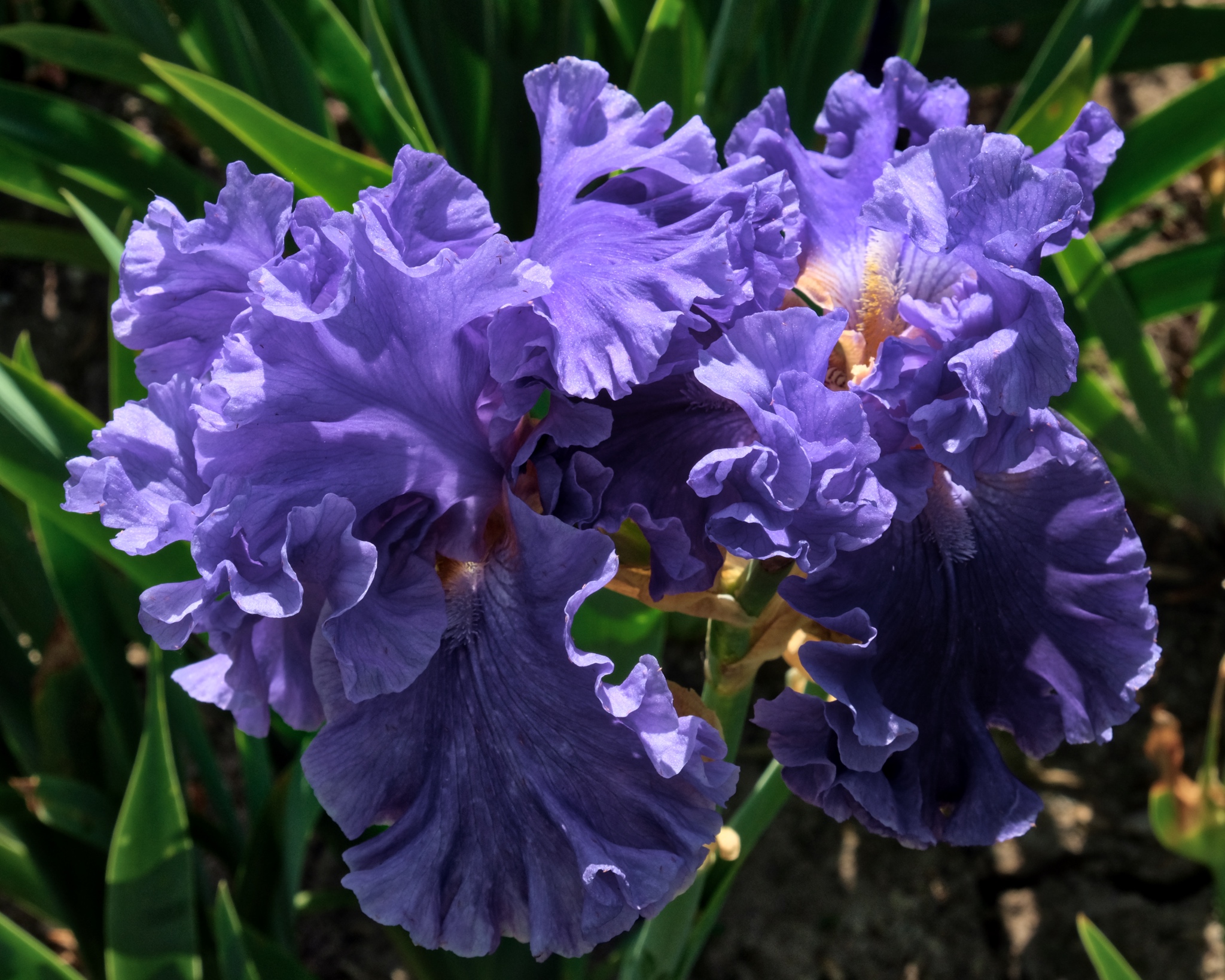 I will never tire of photographing the iris flower . . . simply fascinating!
I will never tire of photographing the iris flower . . . simply fascinating!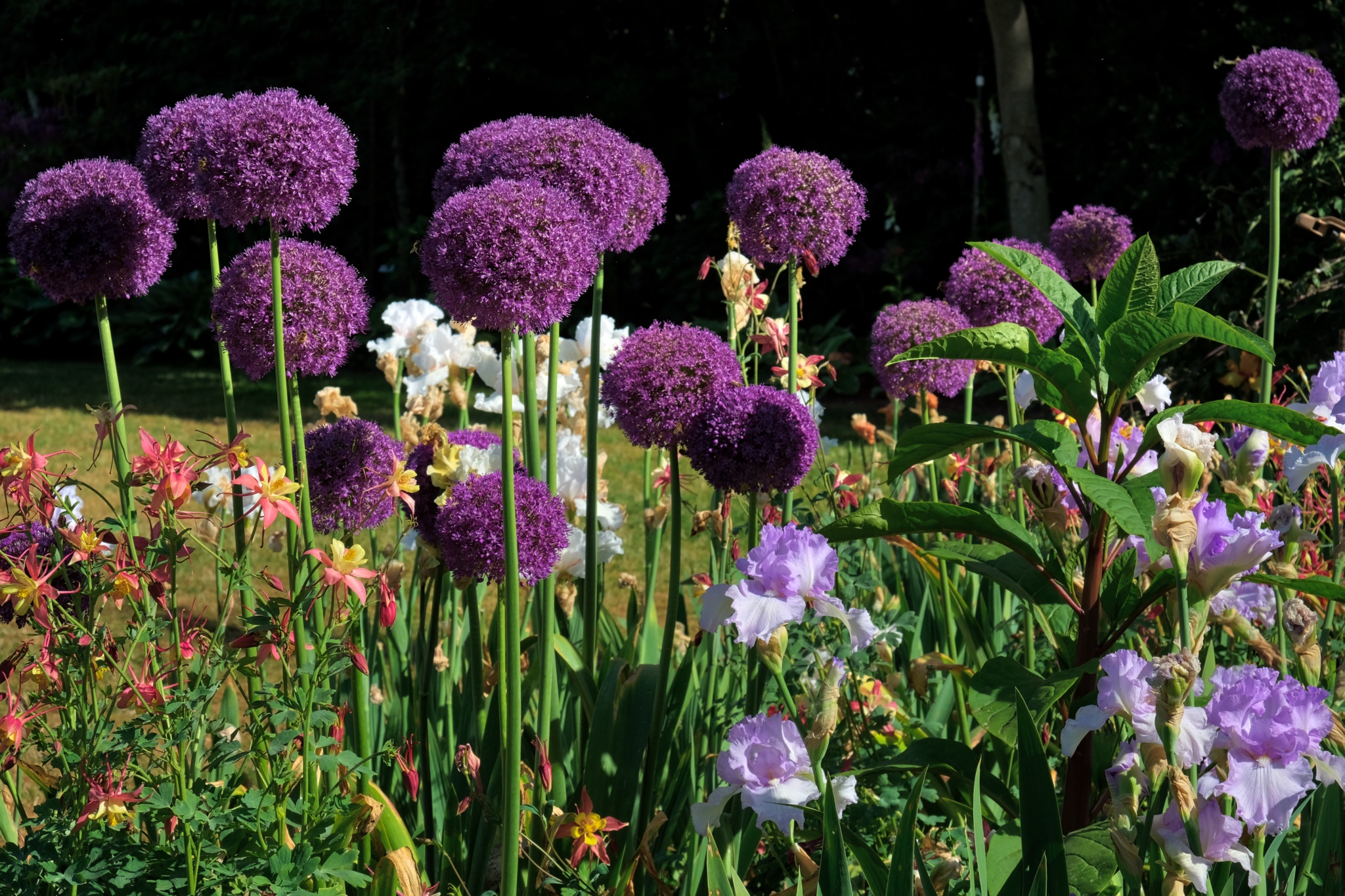 There were many other kinds of flowers at Schreiner's Iris Gardens . . . .
There were many other kinds of flowers at Schreiner's Iris Gardens . . . .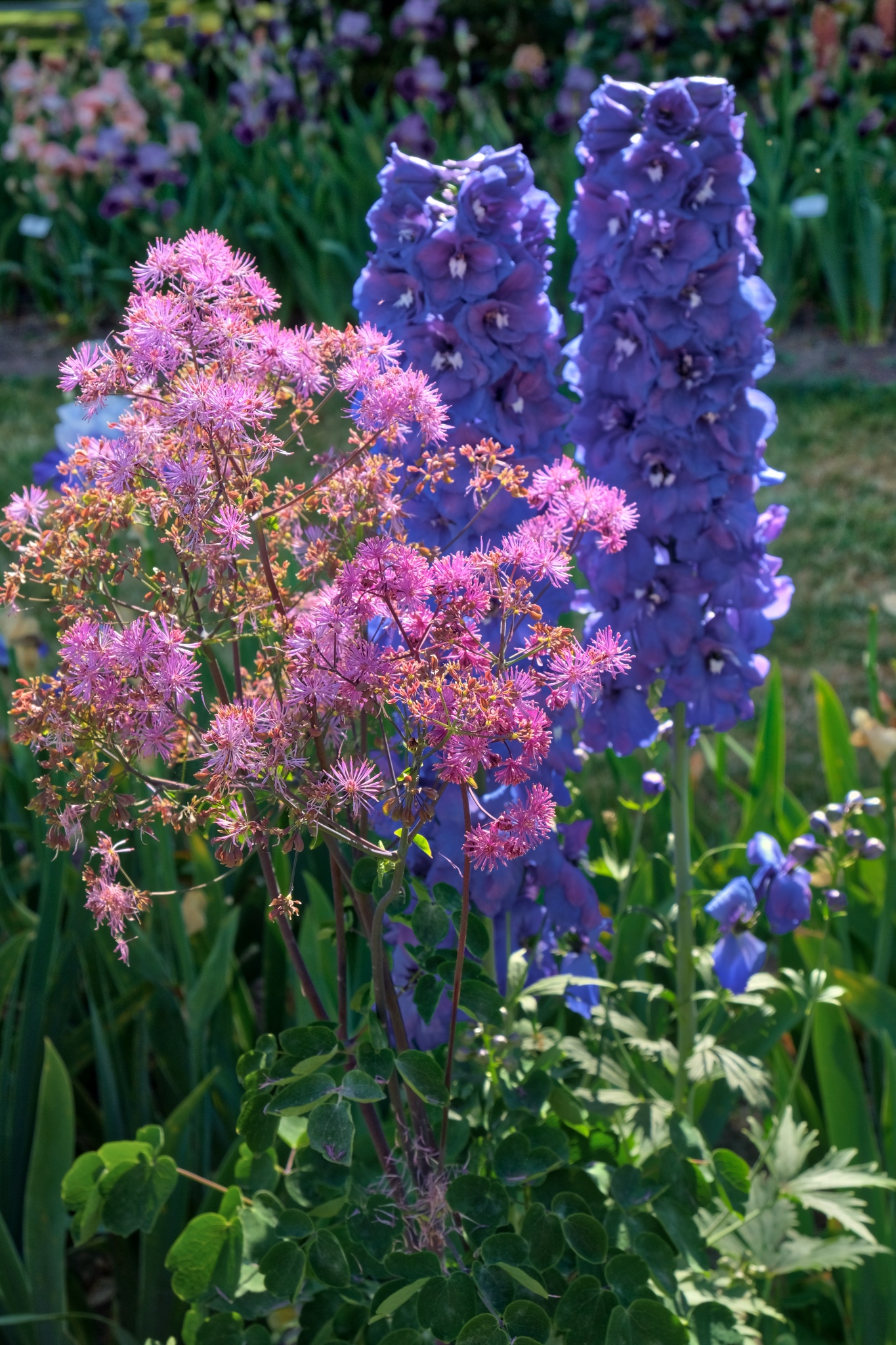 Many, many other kinds of flowers and trees . . . many of which I had never seen before.
Many, many other kinds of flowers and trees . . . many of which I had never seen before.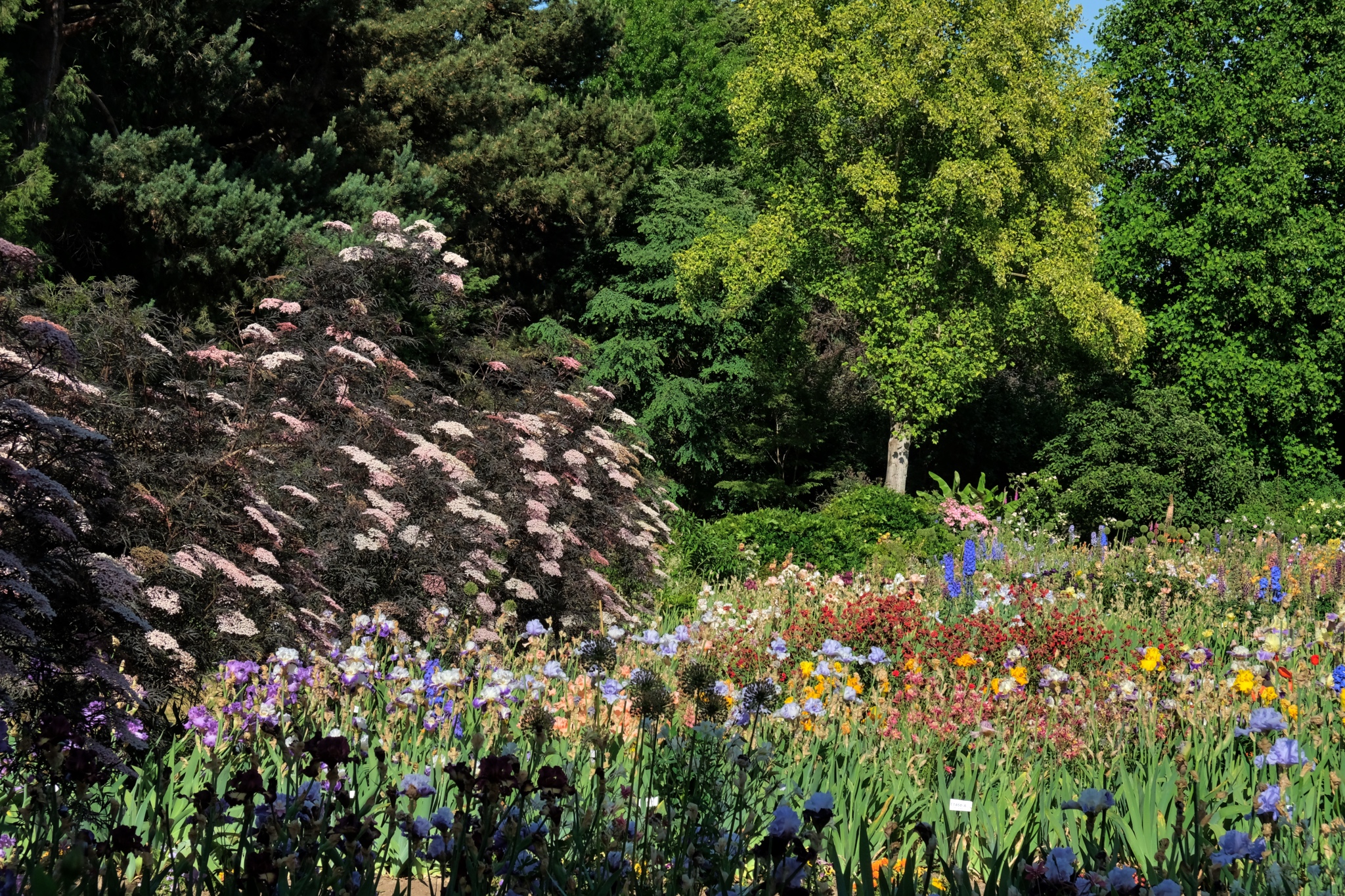 Such a nicely laid out garden too.
Such a nicely laid out garden too.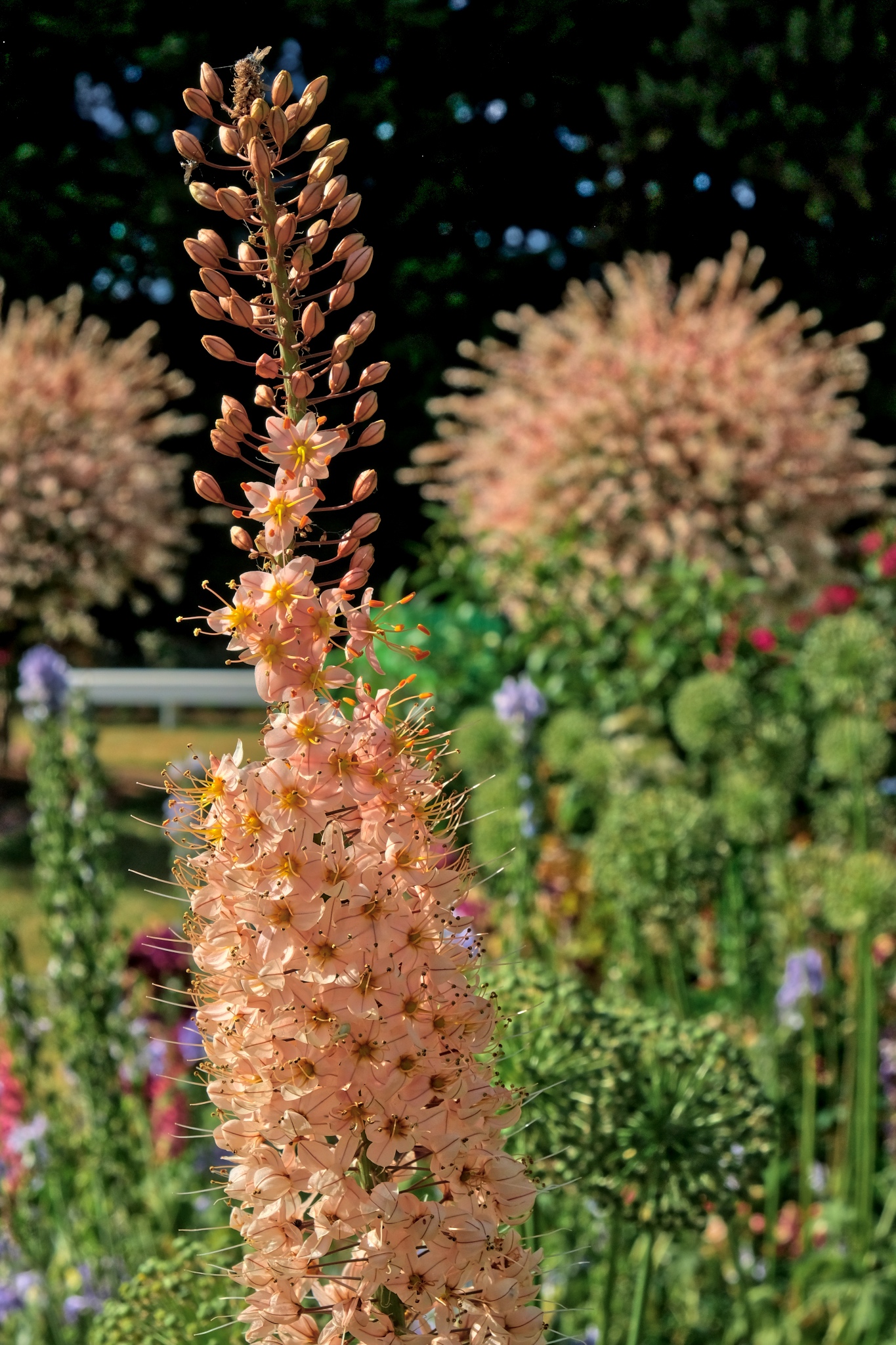 Almost everything in the garden was in bloom all at once!
Almost everything in the garden was in bloom all at once!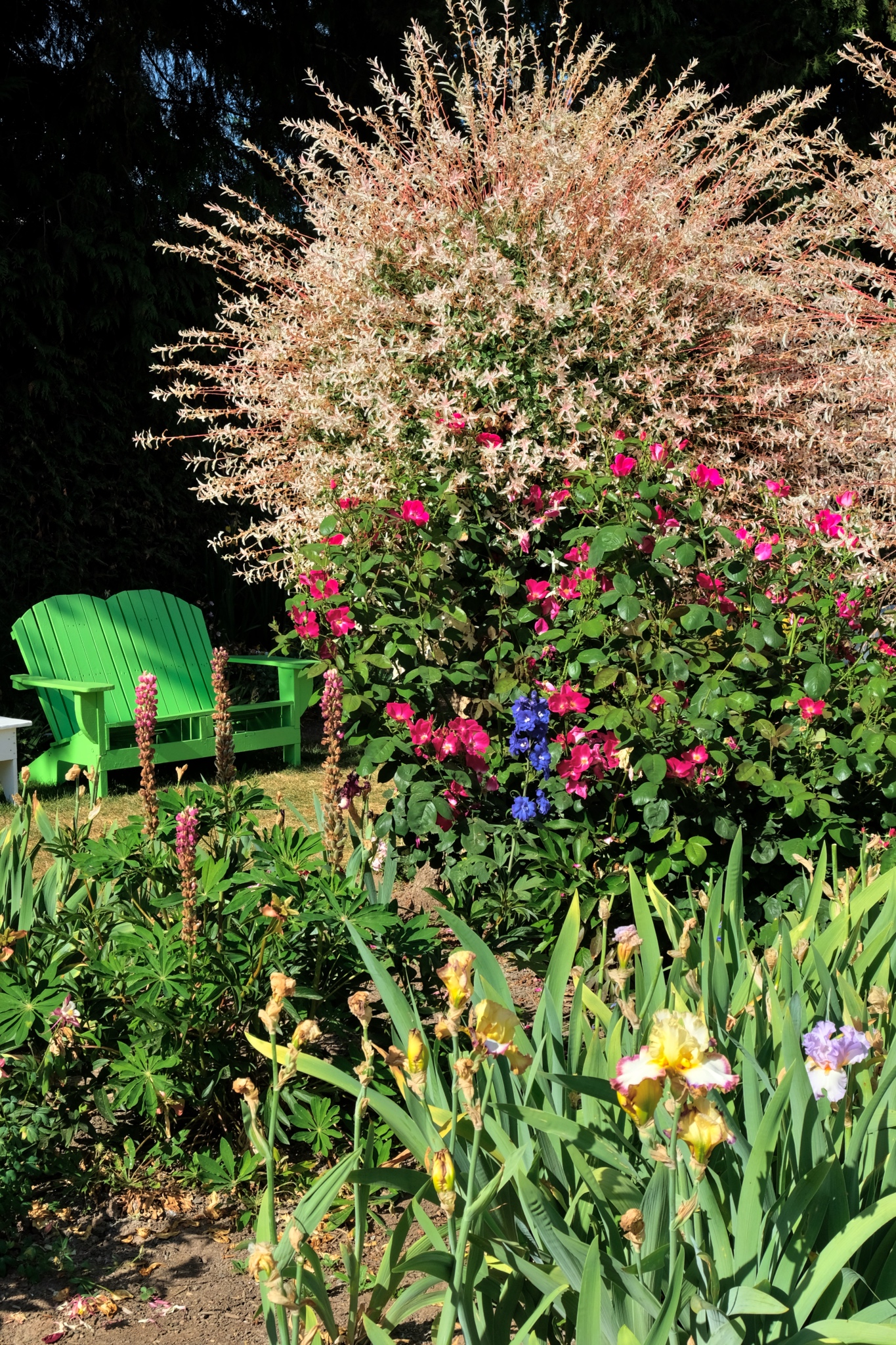 I rested here for a while . . . very pleasant.
I rested here for a while . . . very pleasant.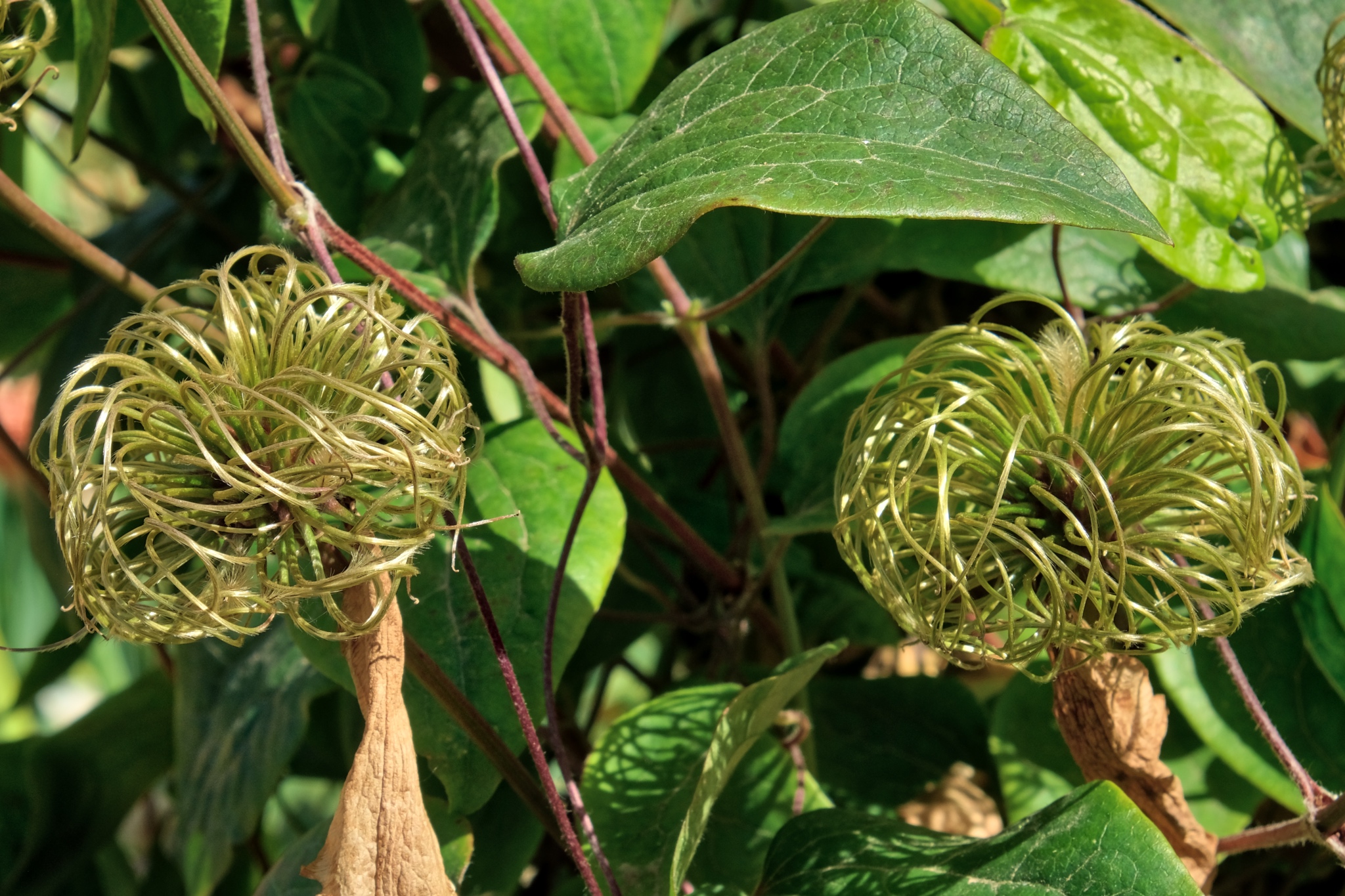 Wherever my gaze would light there would be something fascinating!
Wherever my gaze would light there would be something fascinating!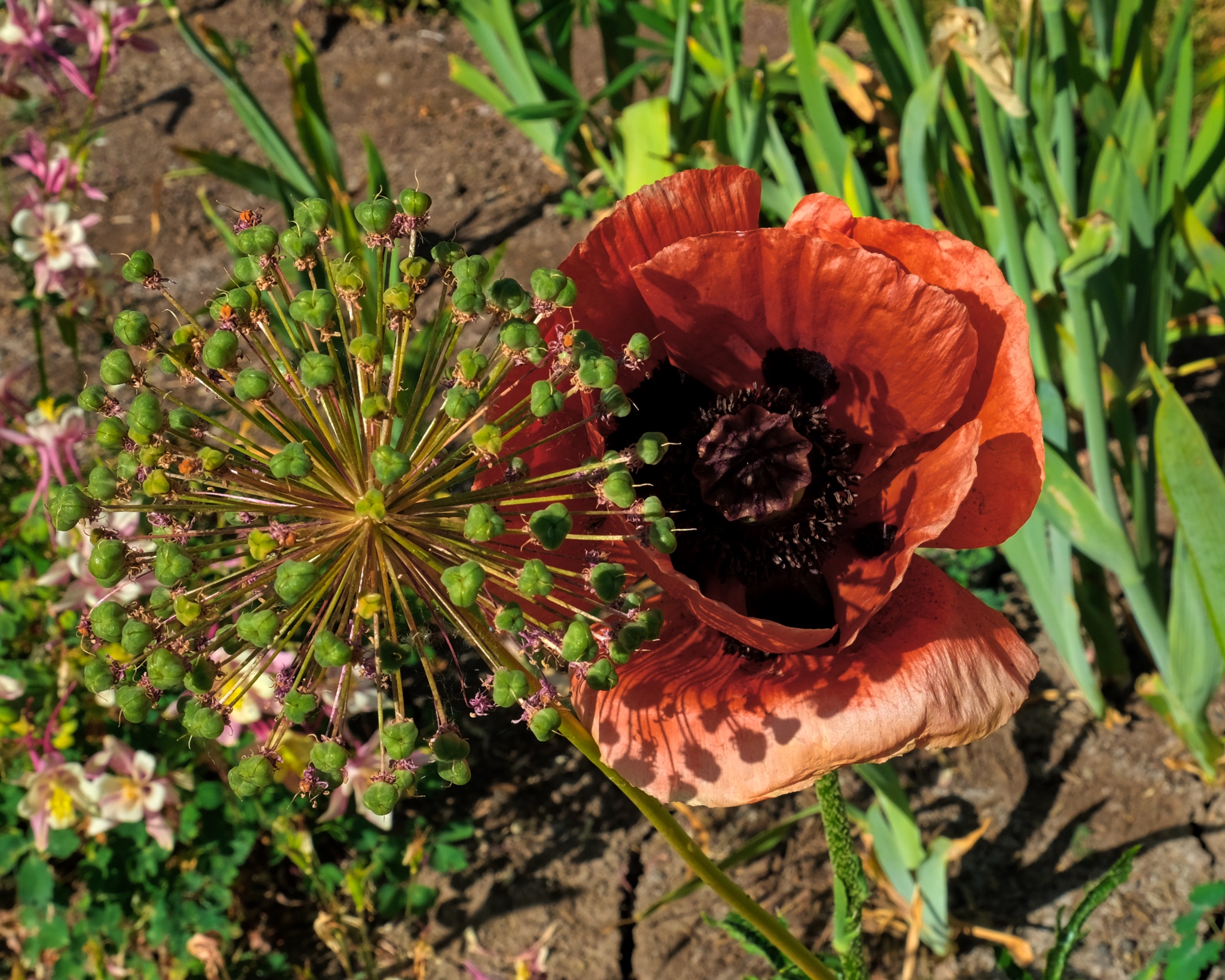 A red poppy and exploding pod ball!
A red poppy and exploding pod ball!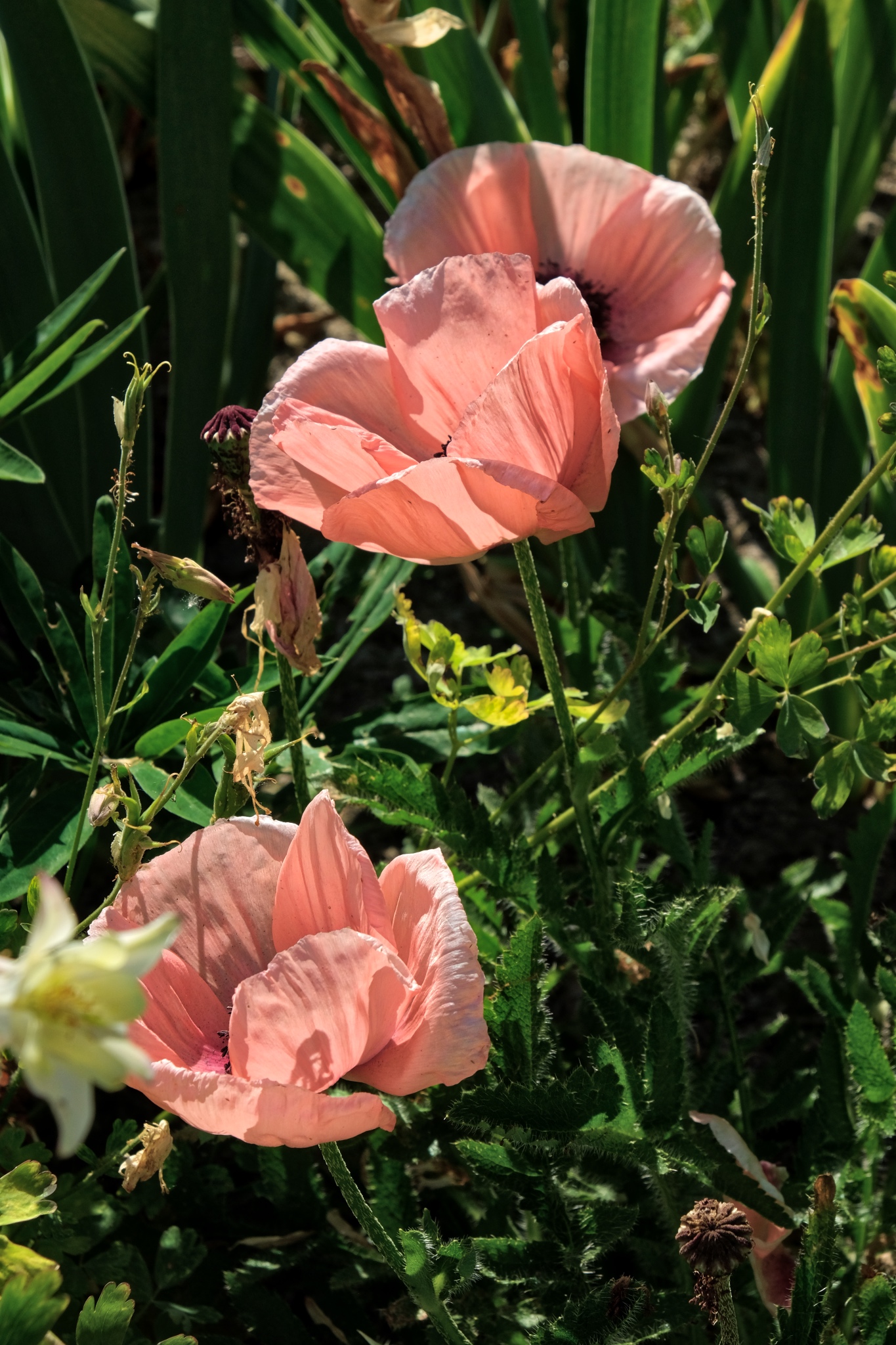 Pink Poppies.
Pink Poppies.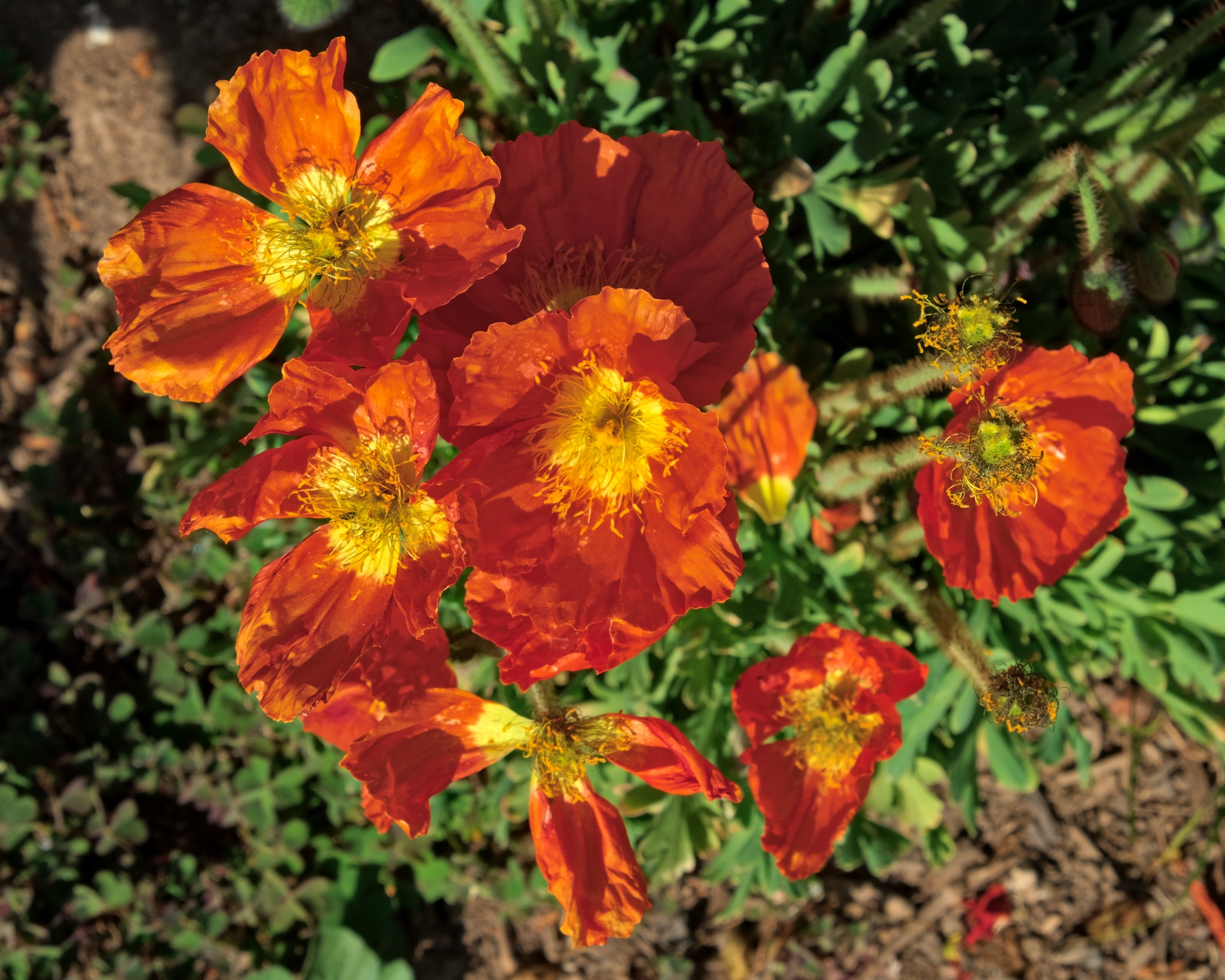 Bright orange poppies . . . so cheerful!
Bright orange poppies . . . so cheerful!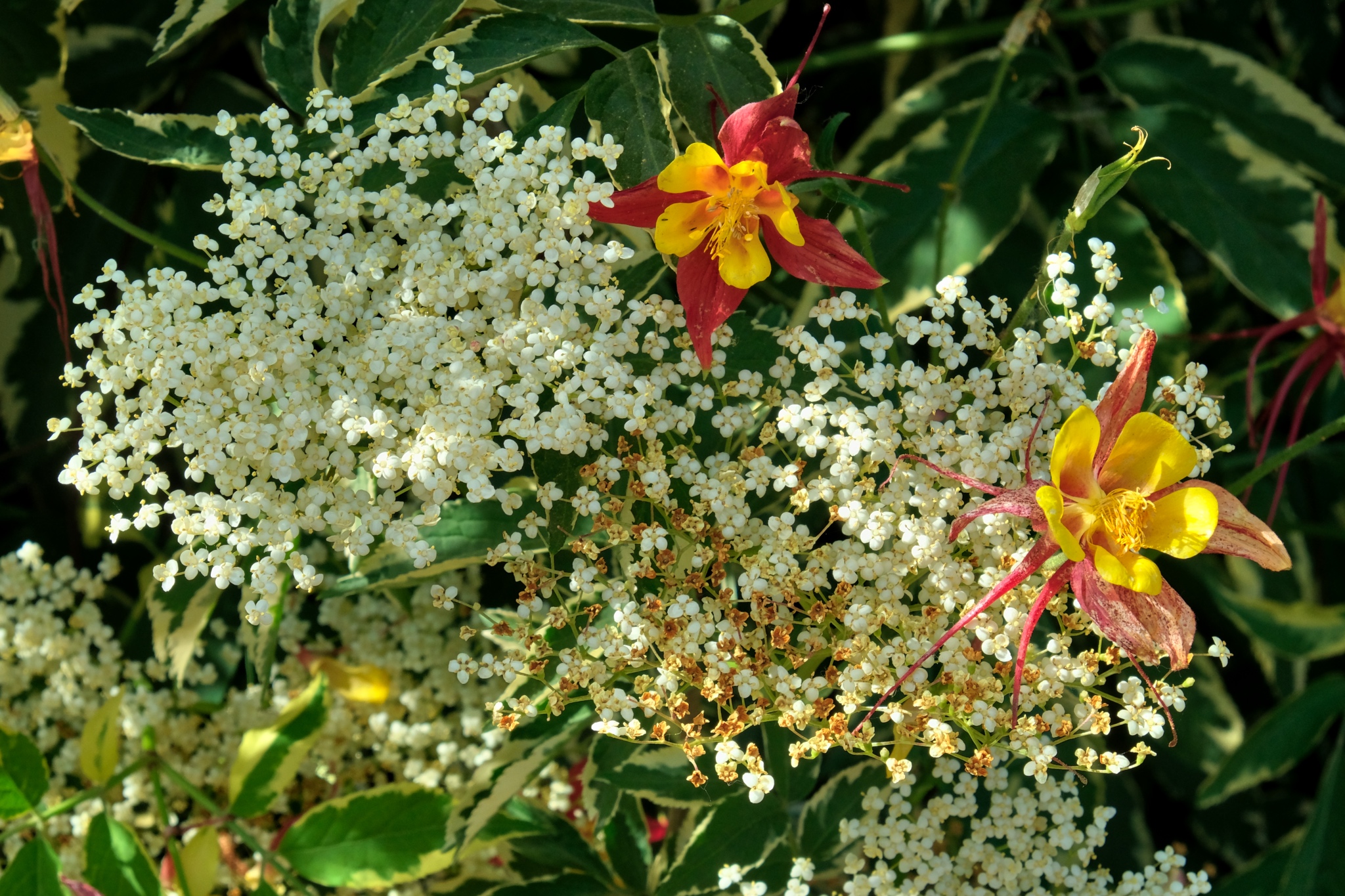 A happy arrangement . . .
A happy arrangement . . .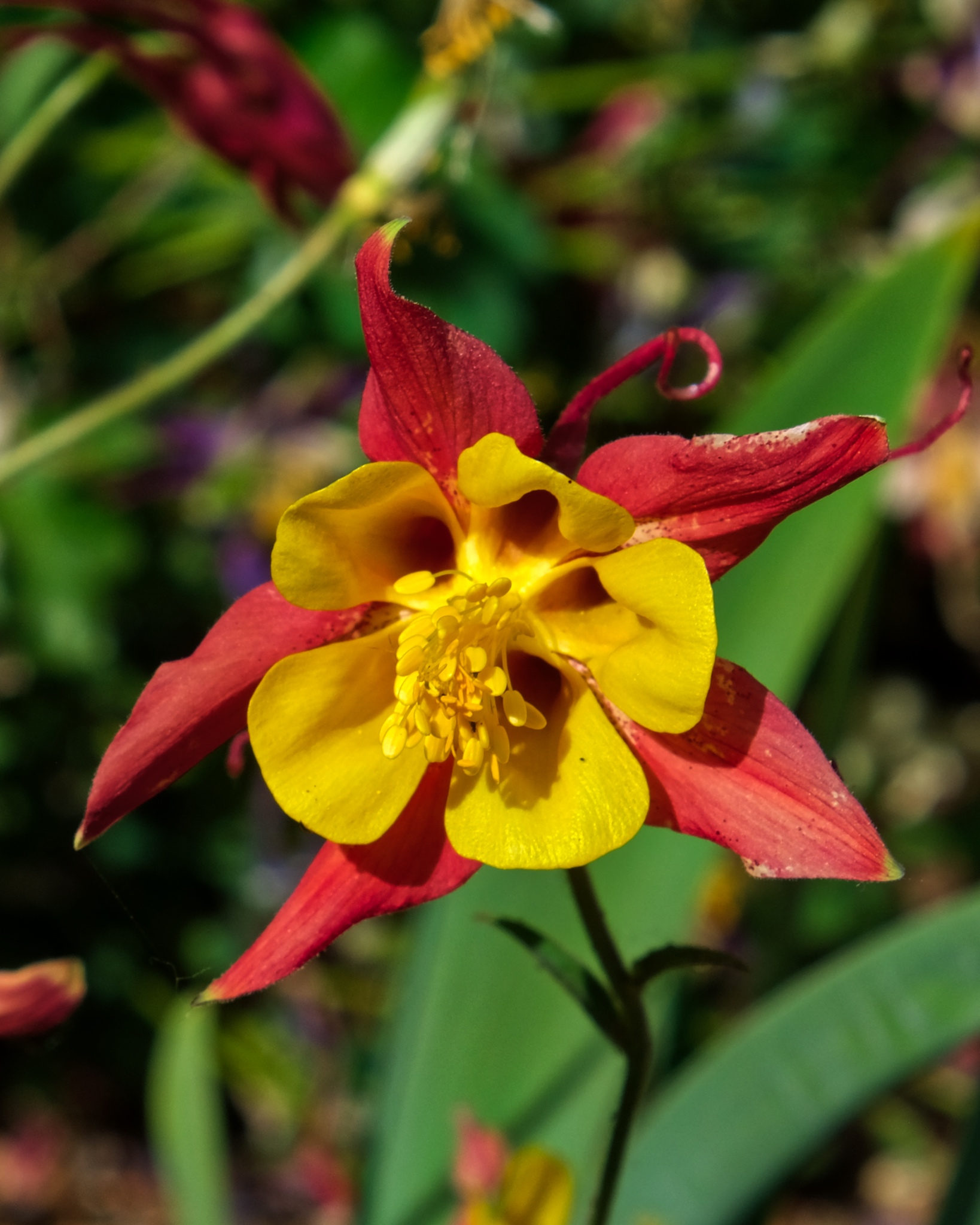 A cheerful little flower dancing on the wind.
A cheerful little flower dancing on the wind.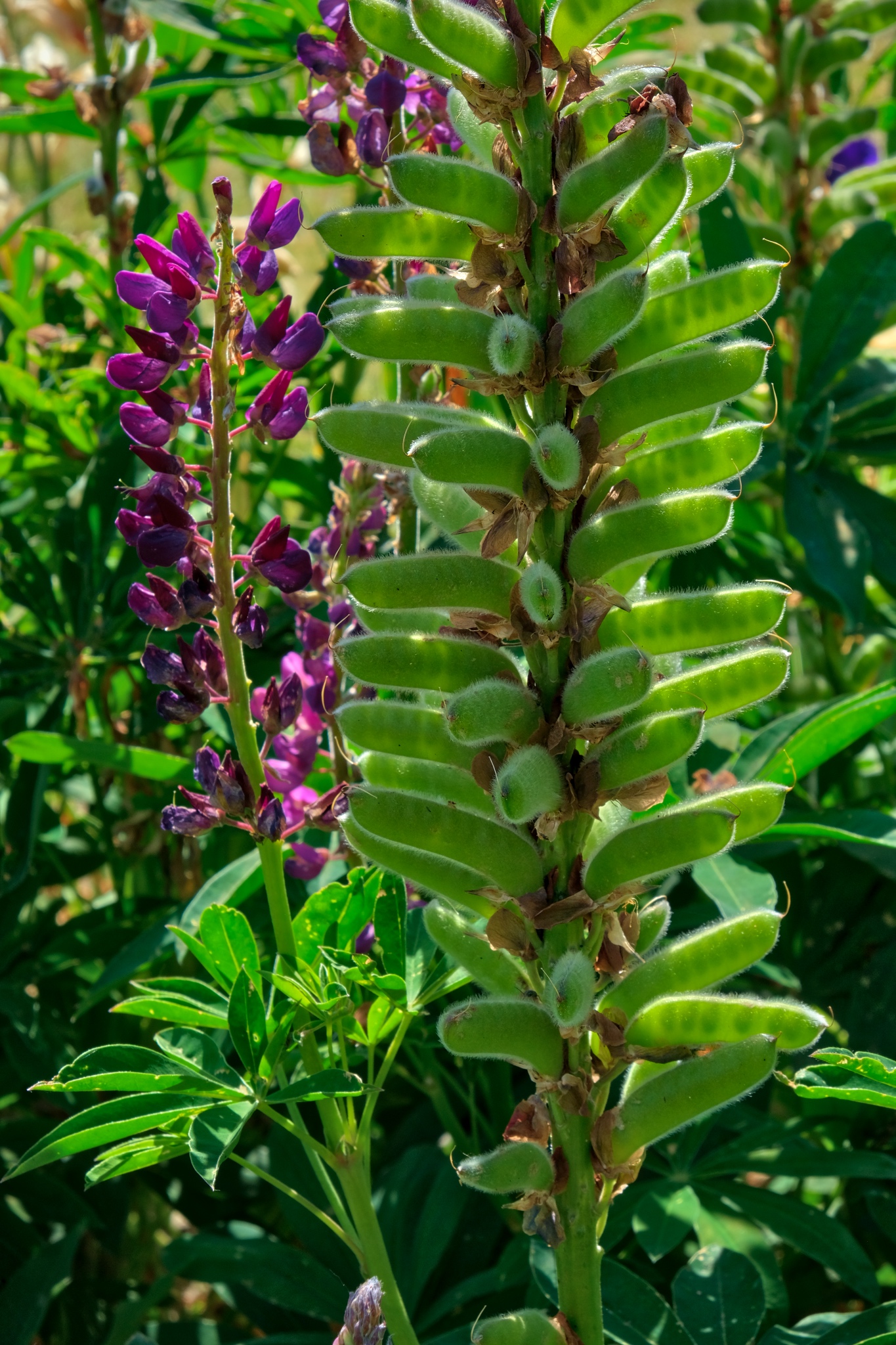 All sorts of flowering and bud configurations here and there.
All sorts of flowering and bud configurations here and there.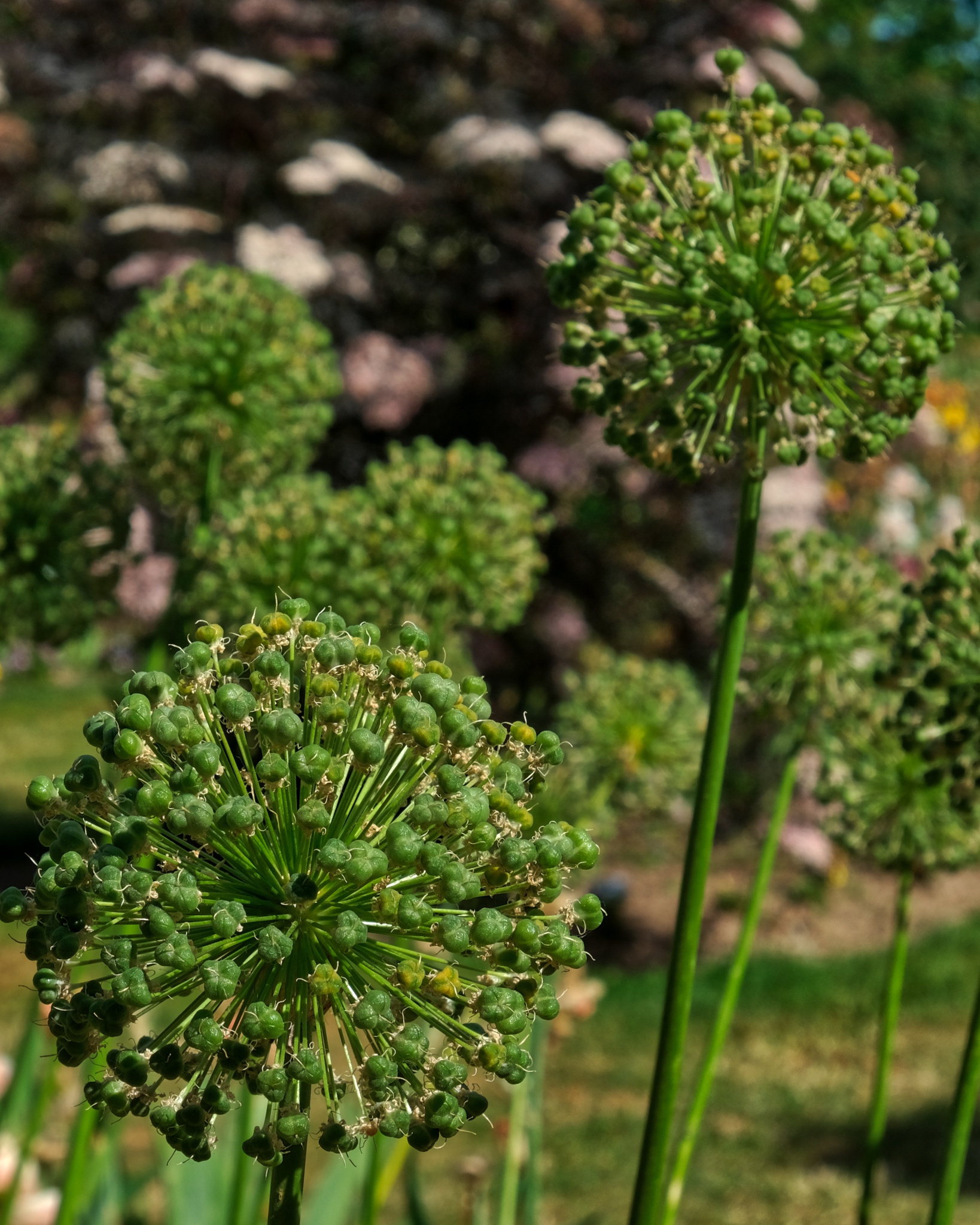 Ready to explode . . .
Ready to explode . . .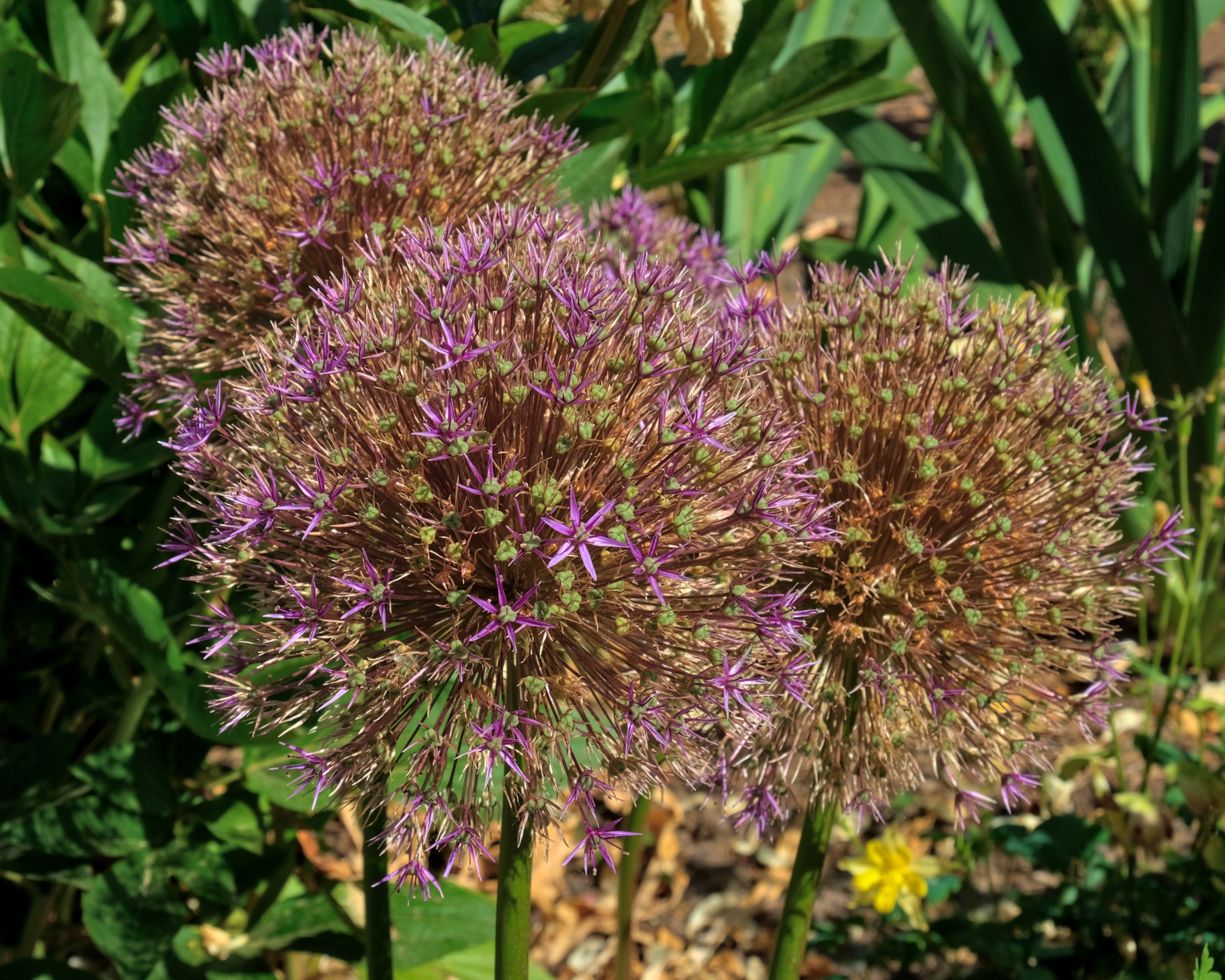 The beginnings of one of those purple puff balls . . .
The beginnings of one of those purple puff balls . . .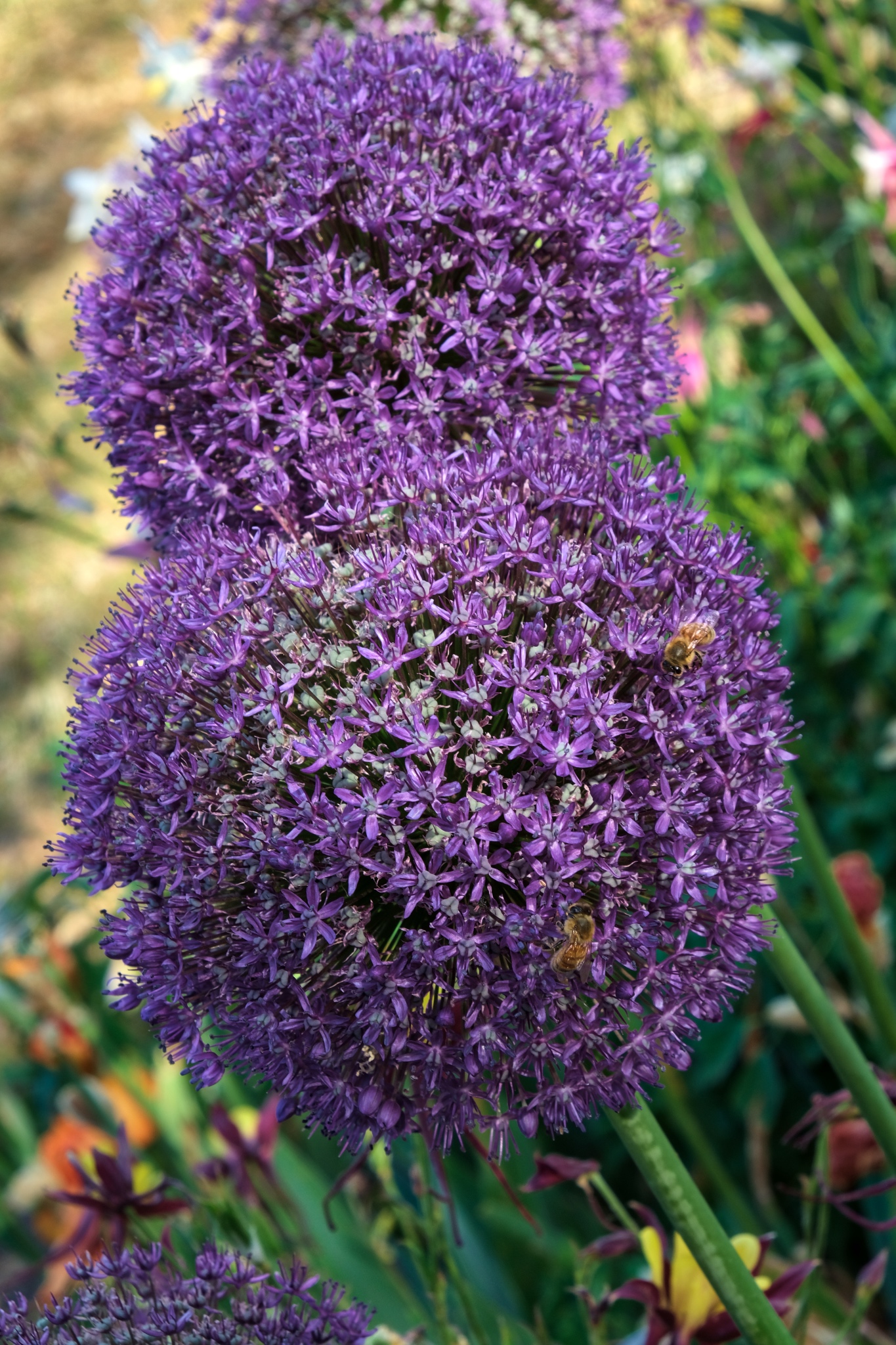 There were many happy bees in the garden!
There were many happy bees in the garden!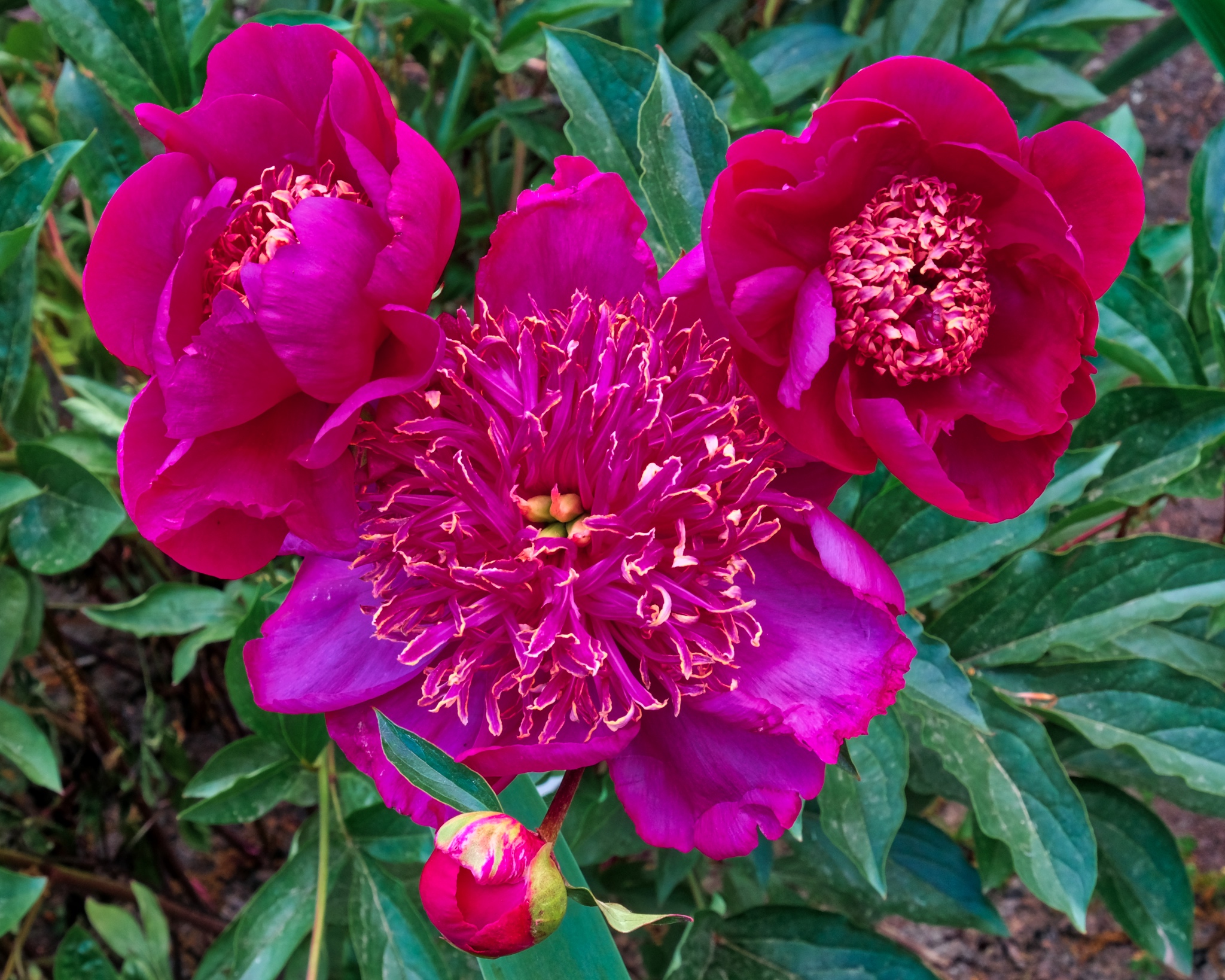 There were some red flowers too . . . some very, very red!
There were some red flowers too . . . some very, very red!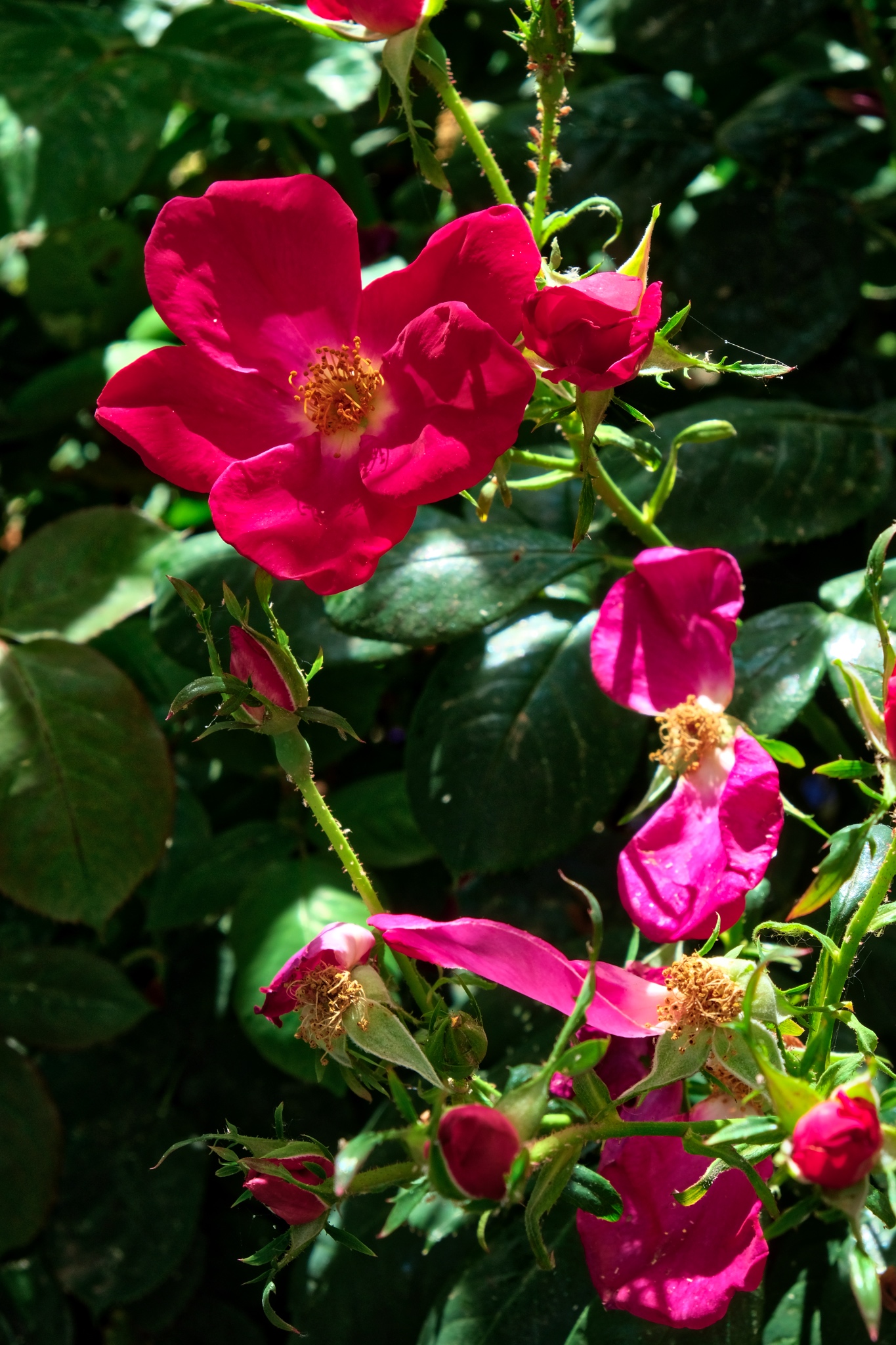 Reds everywhere.
Reds everywhere. Bushes full of red flowers.
Bushes full of red flowers.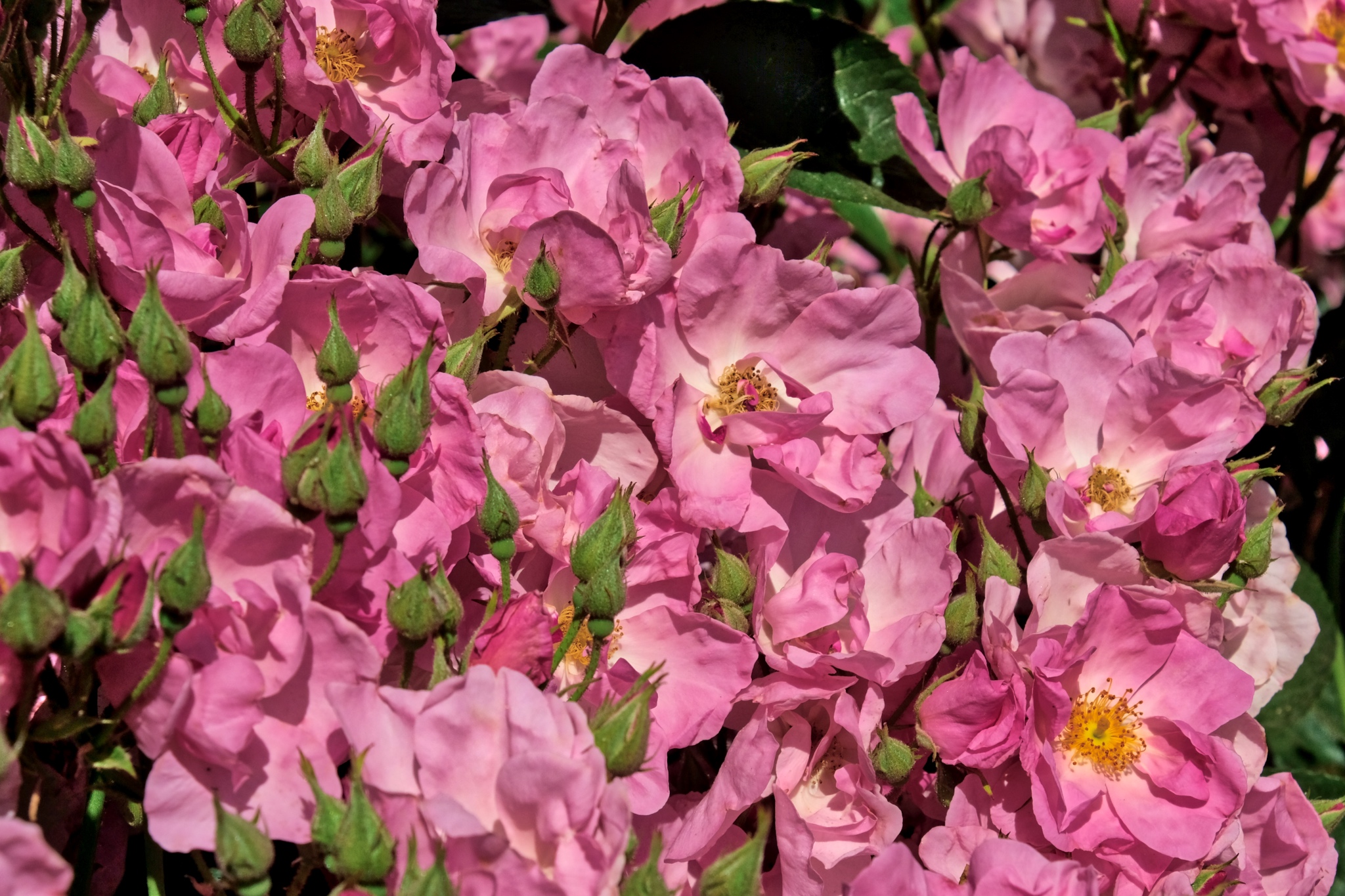 This bush was loaded with pink flowers . . .
This bush was loaded with pink flowers . . .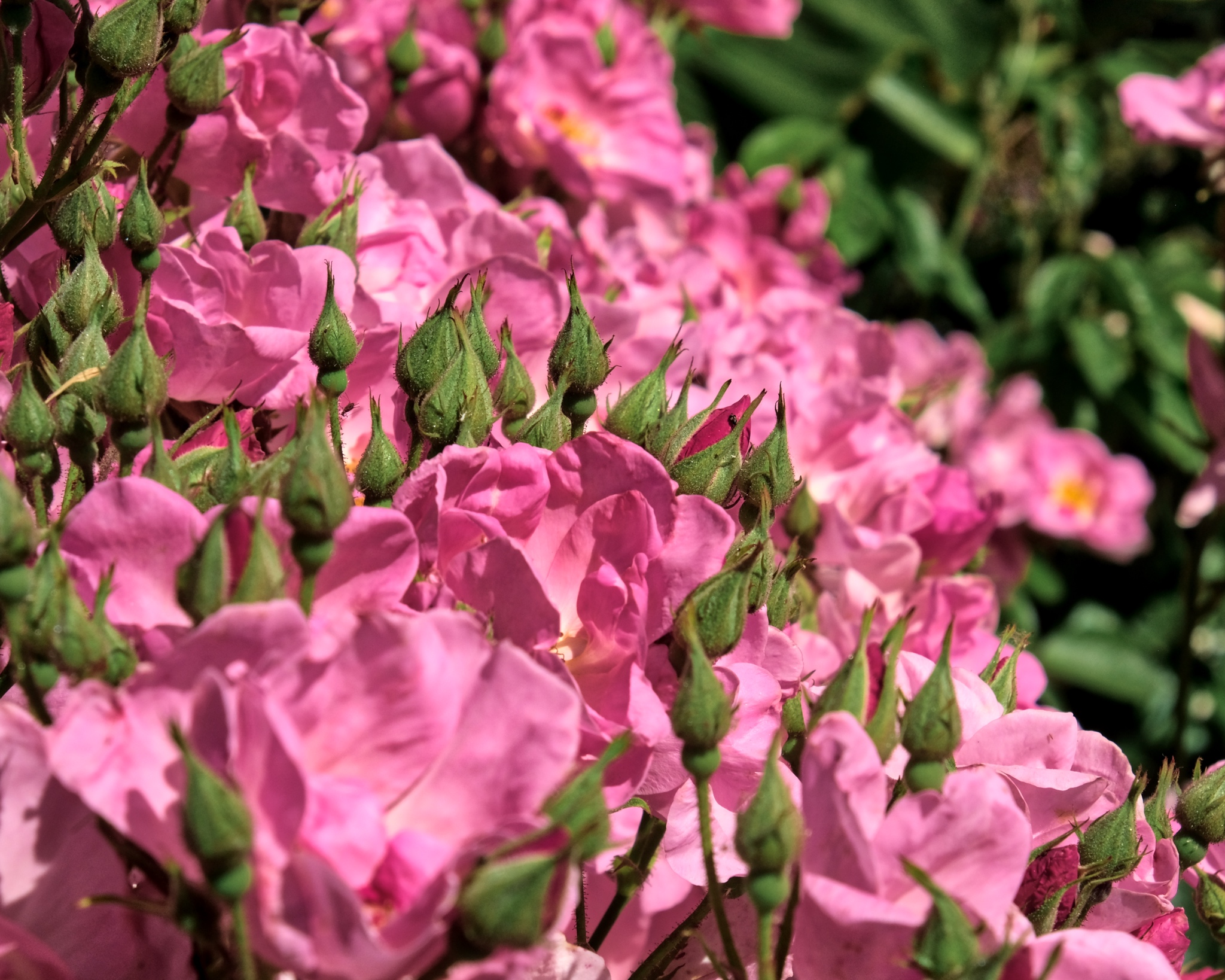 Loaded with flowers . . . and loaded with buds promising continuous flowering into the future.
Loaded with flowers . . . and loaded with buds promising continuous flowering into the future.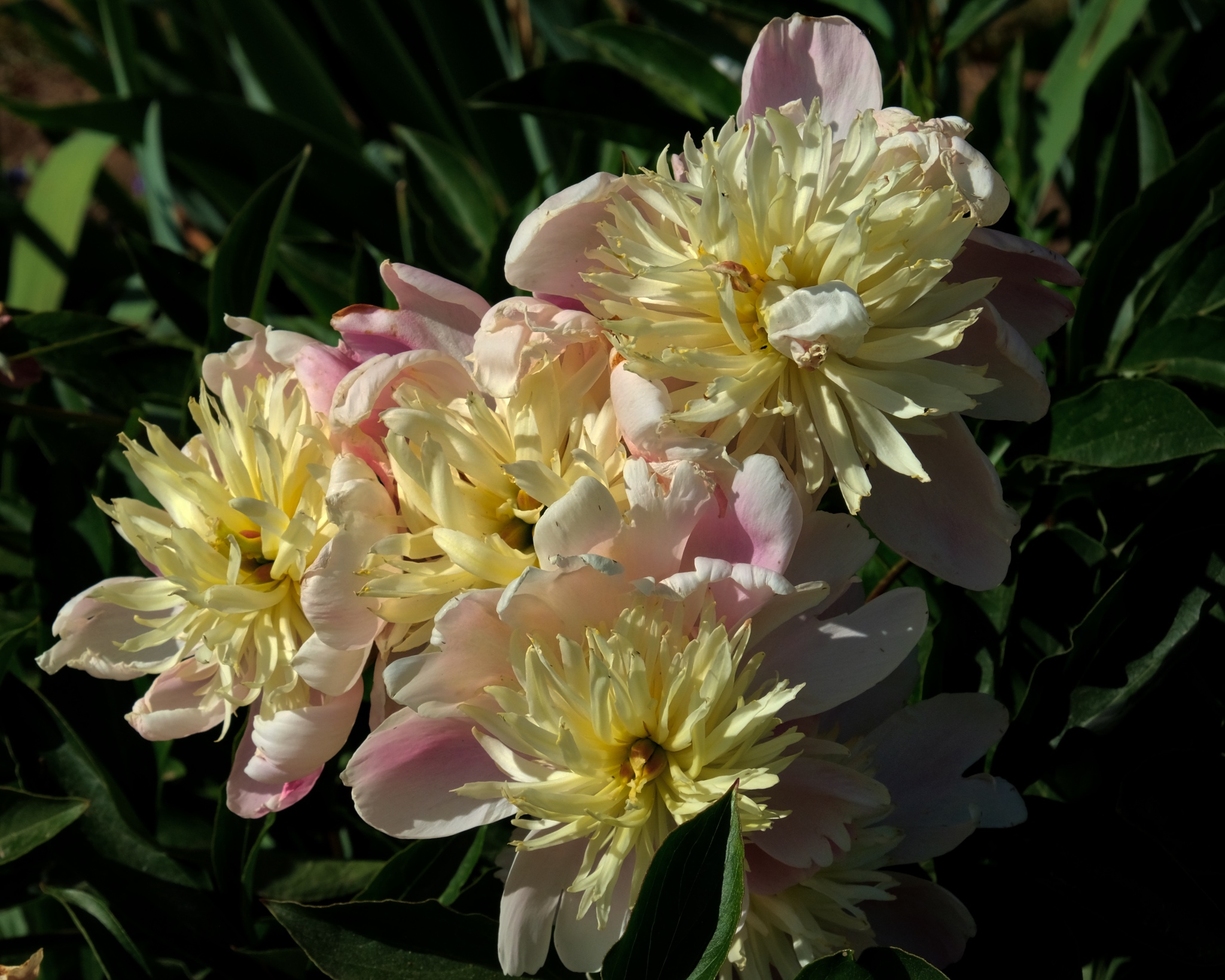 Lots of yellow flowers around too!
Lots of yellow flowers around too!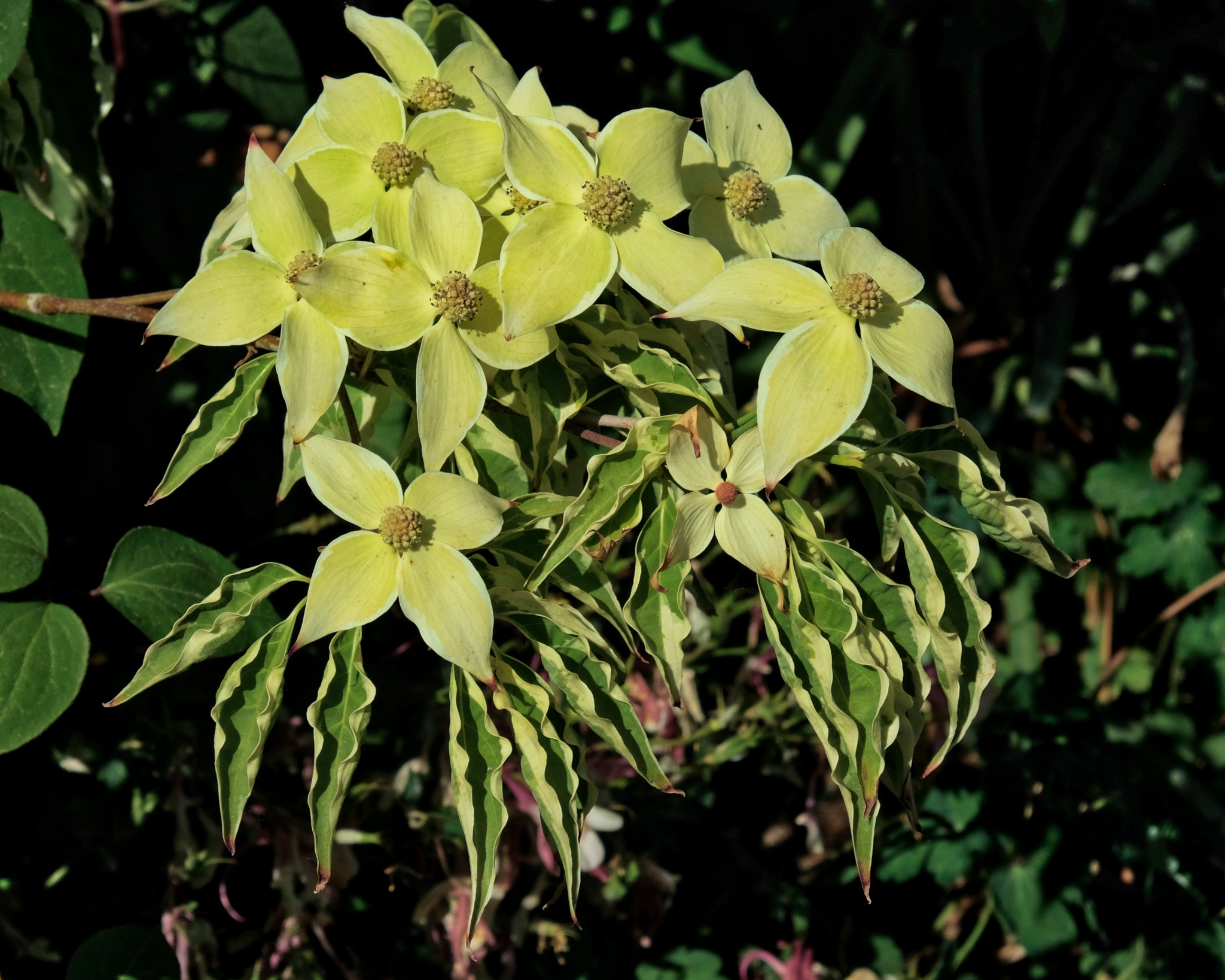 Yellow dogwood.
Yellow dogwood.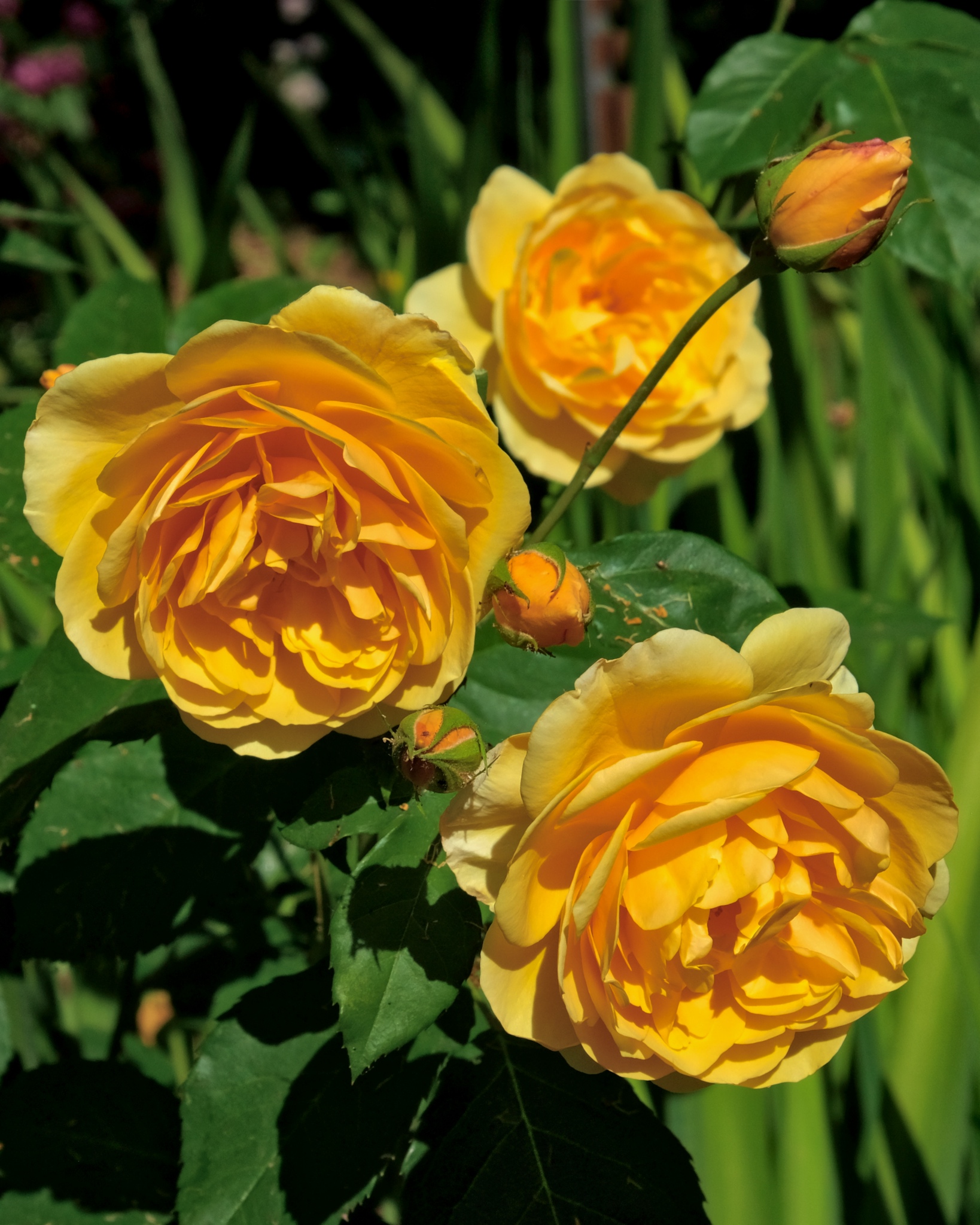 Yellow/Orange roses smelled wonderfully.
Yellow/Orange roses smelled wonderfully.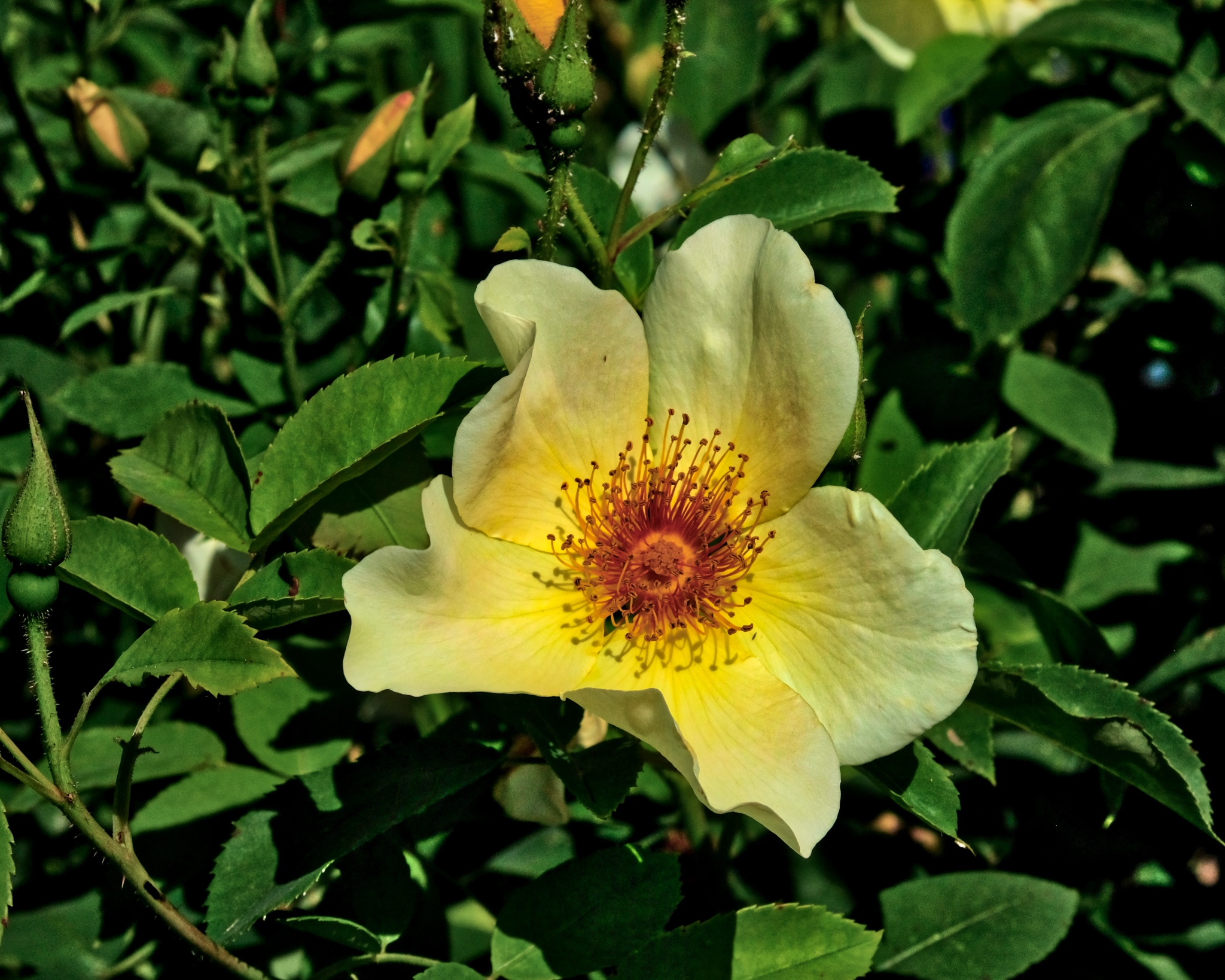 A fluorescent glow from within . . . otherworldly!
A fluorescent glow from within . . . otherworldly!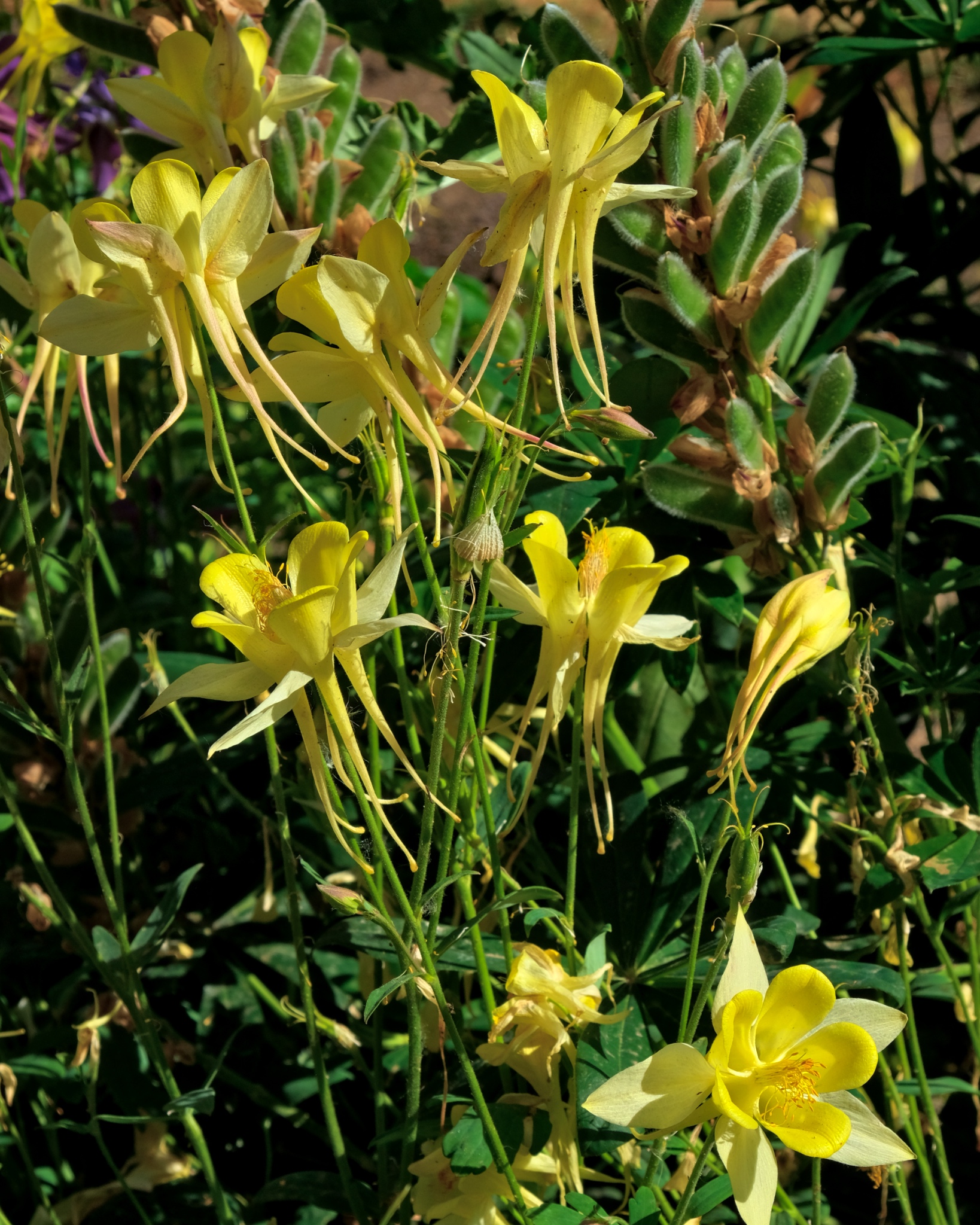 Sweet little yellow ferries!
Sweet little yellow ferries!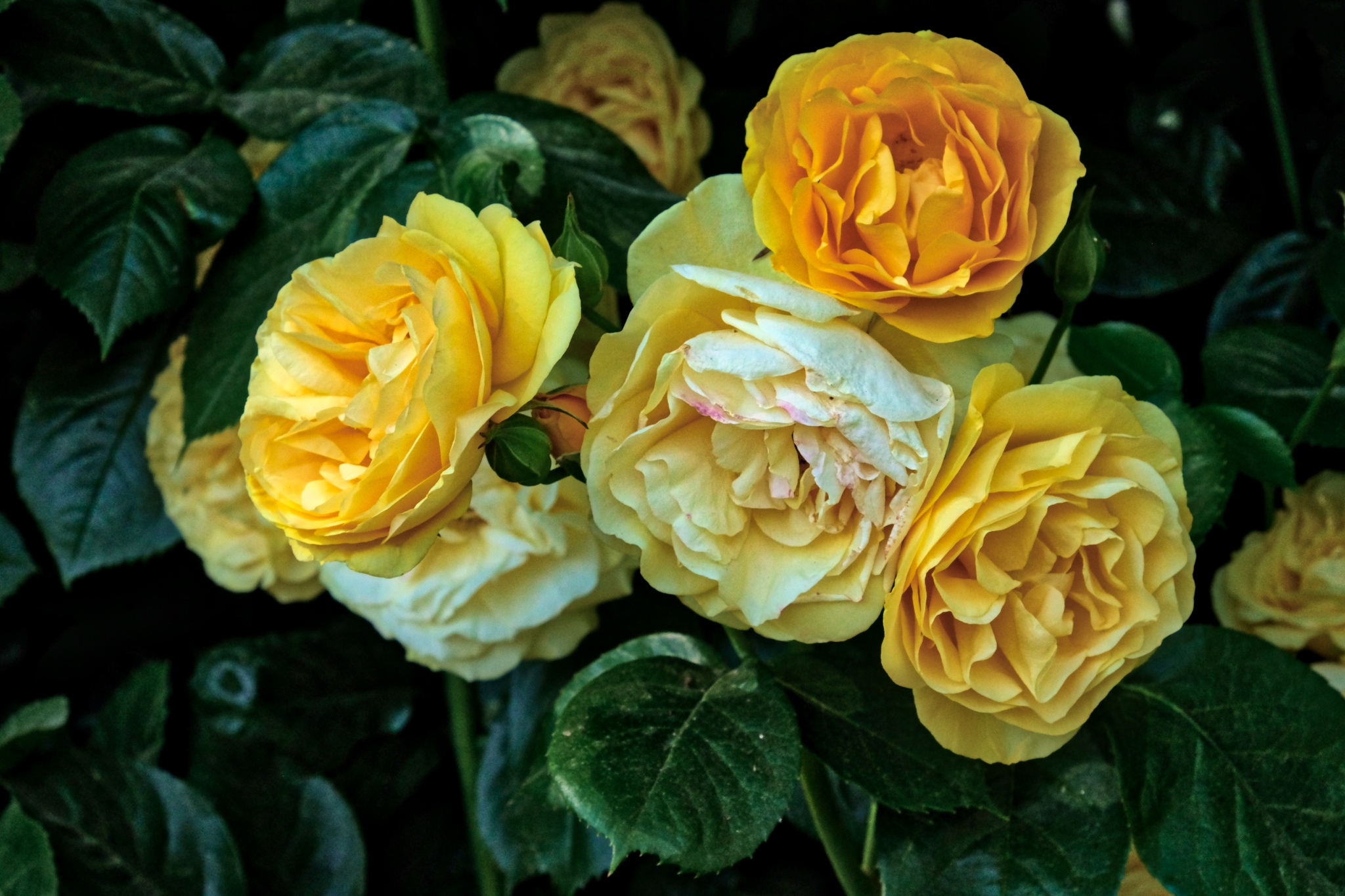 One bush, multiple shades of yellow!
One bush, multiple shades of yellow!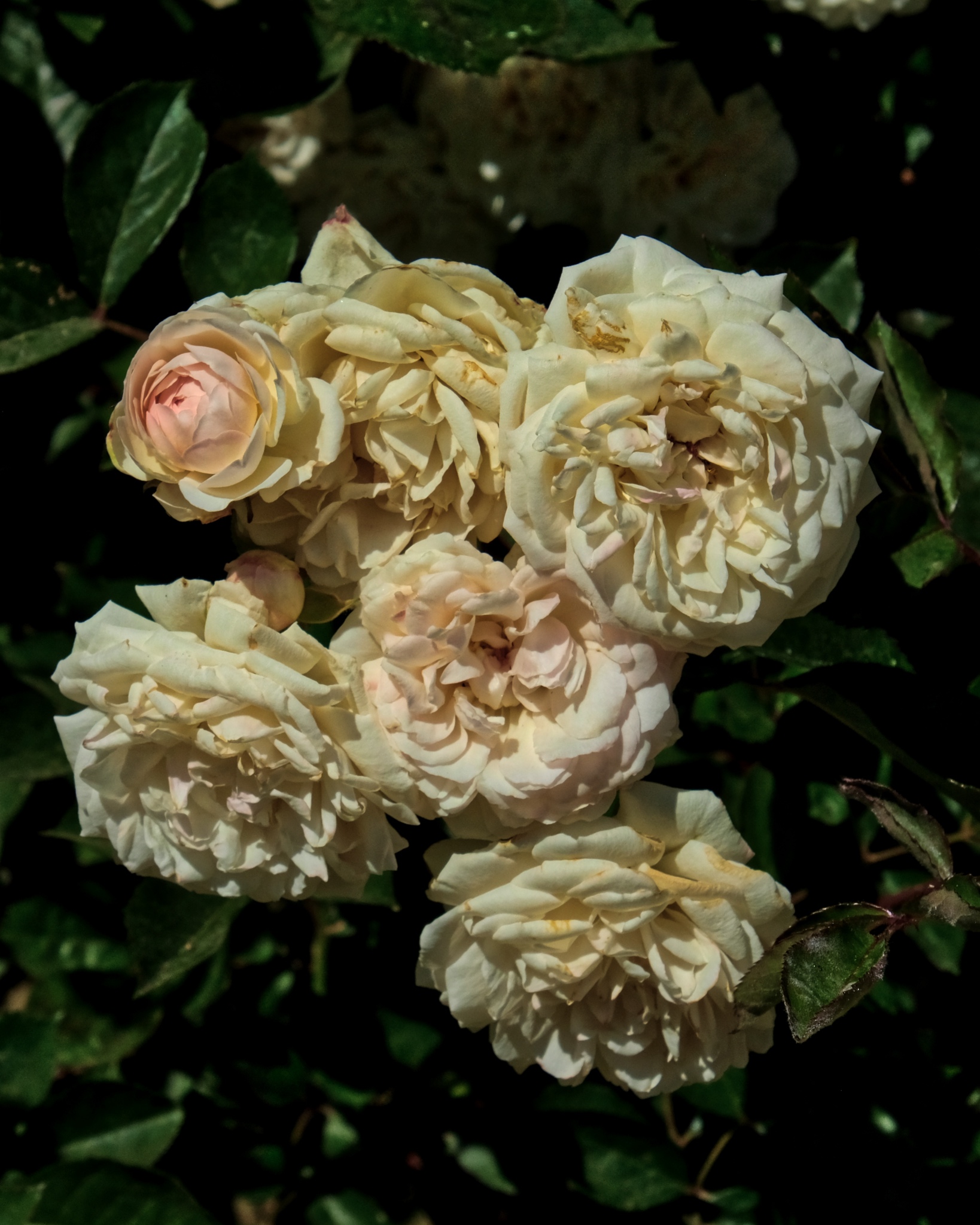 Creamy!
Creamy!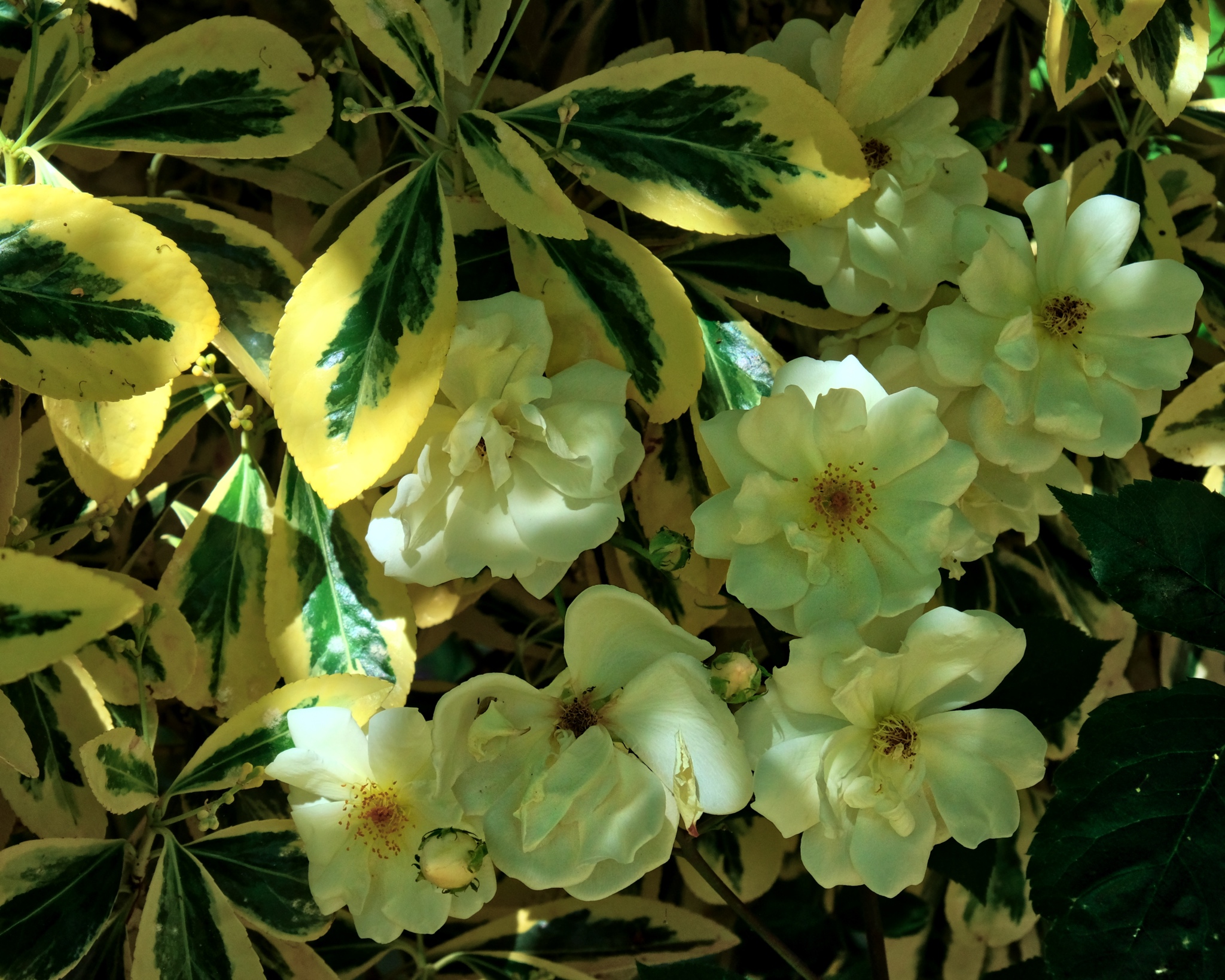 Filtered yellow light falling on a cluster of white flowers.
Filtered yellow light falling on a cluster of white flowers.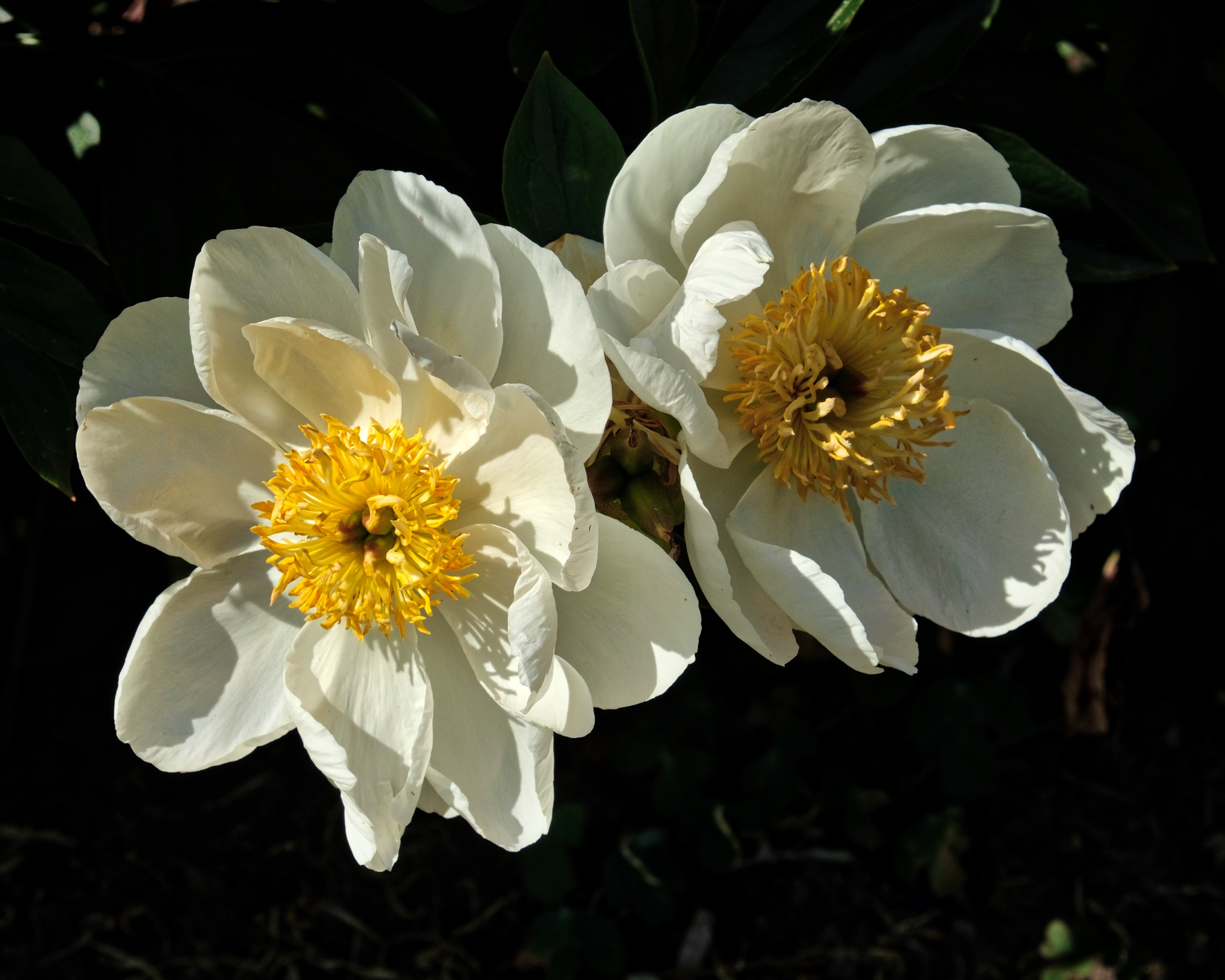 Perfect.
Perfect.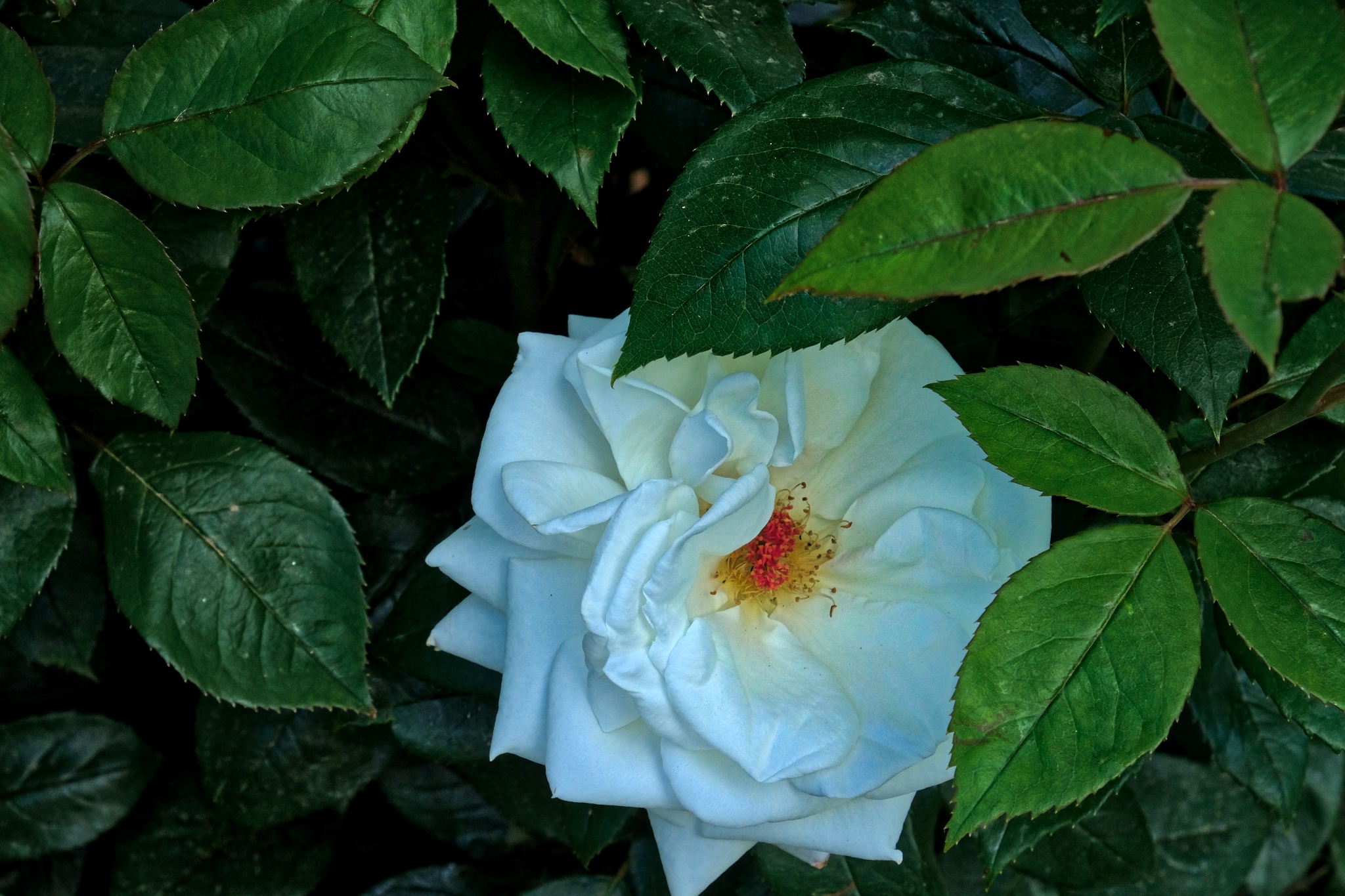 Deep inside a leafy bush . . . perfect white . . . in a perfect garden.
Deep inside a leafy bush . . . perfect white . . . in a perfect garden. They obviously know that their garden is a magnet/catnip to photographers . . . and supplied these wonderful props for families. I hated to leave . . . but a BBQ beckoned!
They obviously know that their garden is a magnet/catnip to photographers . . . and supplied these wonderful props for families. I hated to leave . . . but a BBQ beckoned!Road Trip USA: Billy Frank Jr. Nisqually National Wildlife Refuge
 Thursday, July 5, 2018 at 2:21AM
Thursday, July 5, 2018 at 2:21AM 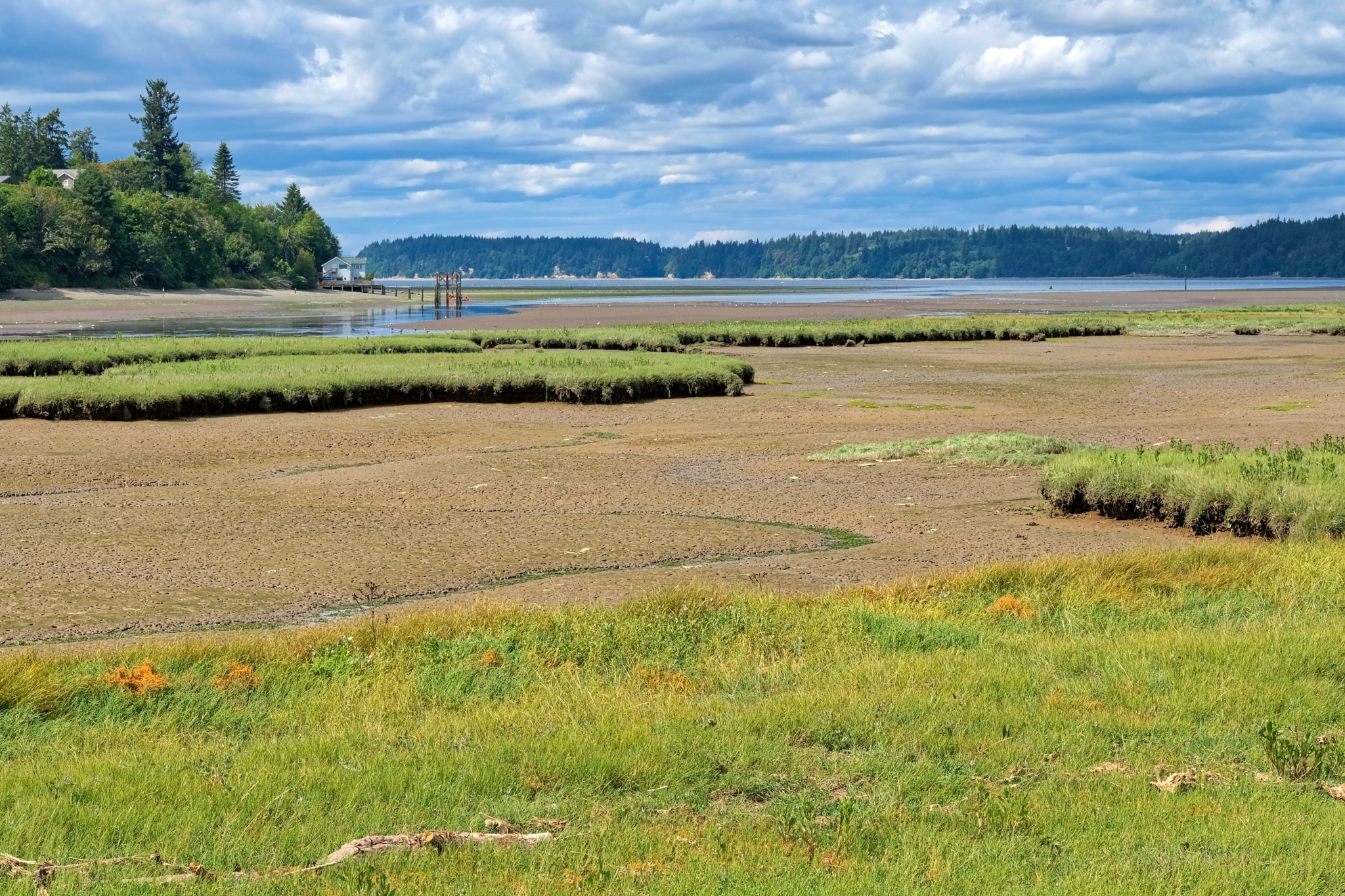 I spent a fine afternoon in the forest, fields, mud flats, and estuary of the Billy Frank Jr. Nisqually National Wildlife Reserve, near Olympia, Washington.
I spent a fine afternoon in the forest, fields, mud flats, and estuary of the Billy Frank Jr. Nisqually National Wildlife Reserve, near Olympia, Washington.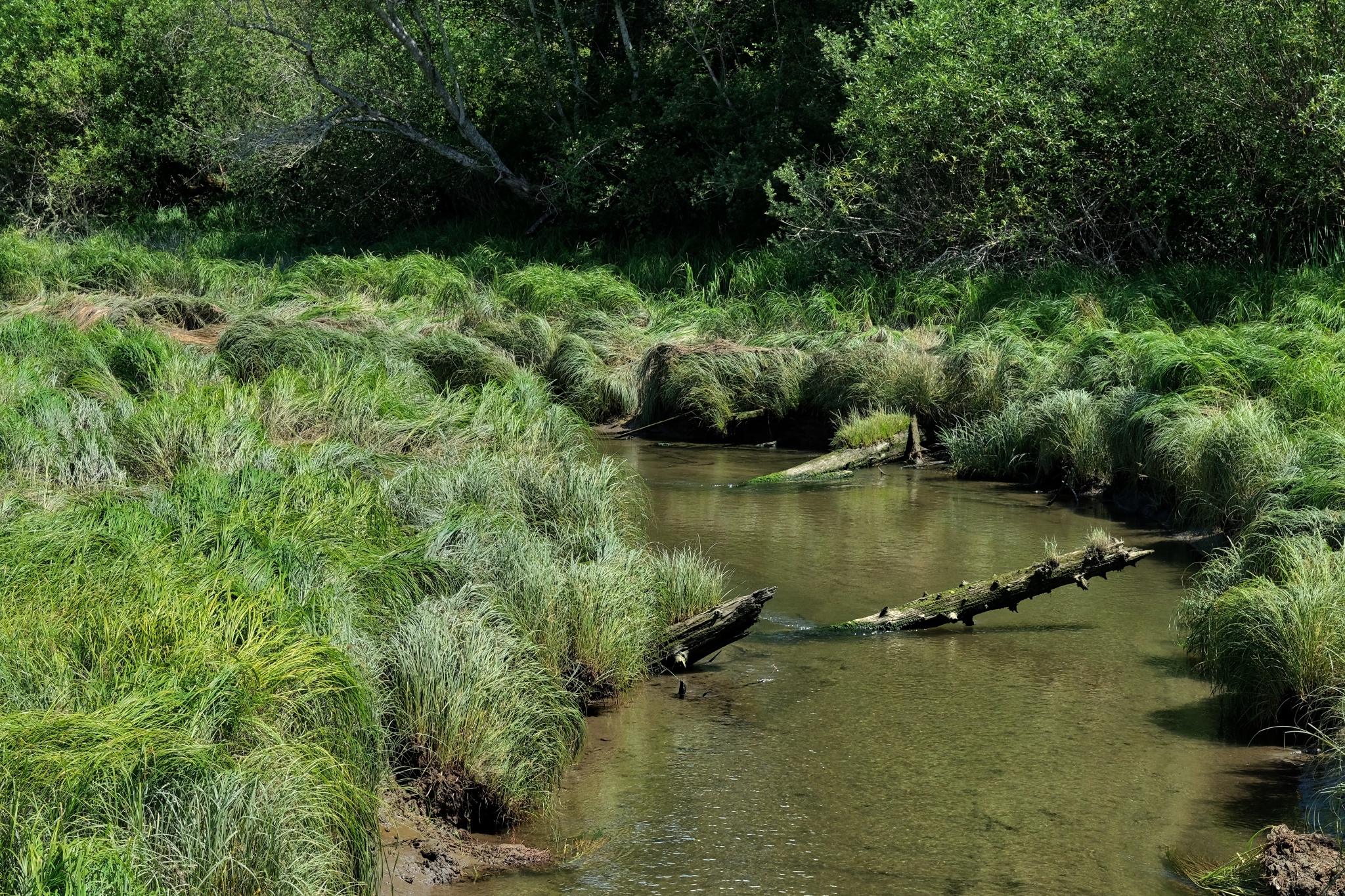 I have wanted to go to the Nisqually Wildlife Reserve since I arrived in Washington a few months ago . . . and today was my chance: perfect weather. I passed Woodland Creek, an estuarial creek, several times before and stopped this time . . . it was on the way.
I have wanted to go to the Nisqually Wildlife Reserve since I arrived in Washington a few months ago . . . and today was my chance: perfect weather. I passed Woodland Creek, an estuarial creek, several times before and stopped this time . . . it was on the way. The wetlands grasses were in full mid-summer lushness.
The wetlands grasses were in full mid-summer lushness.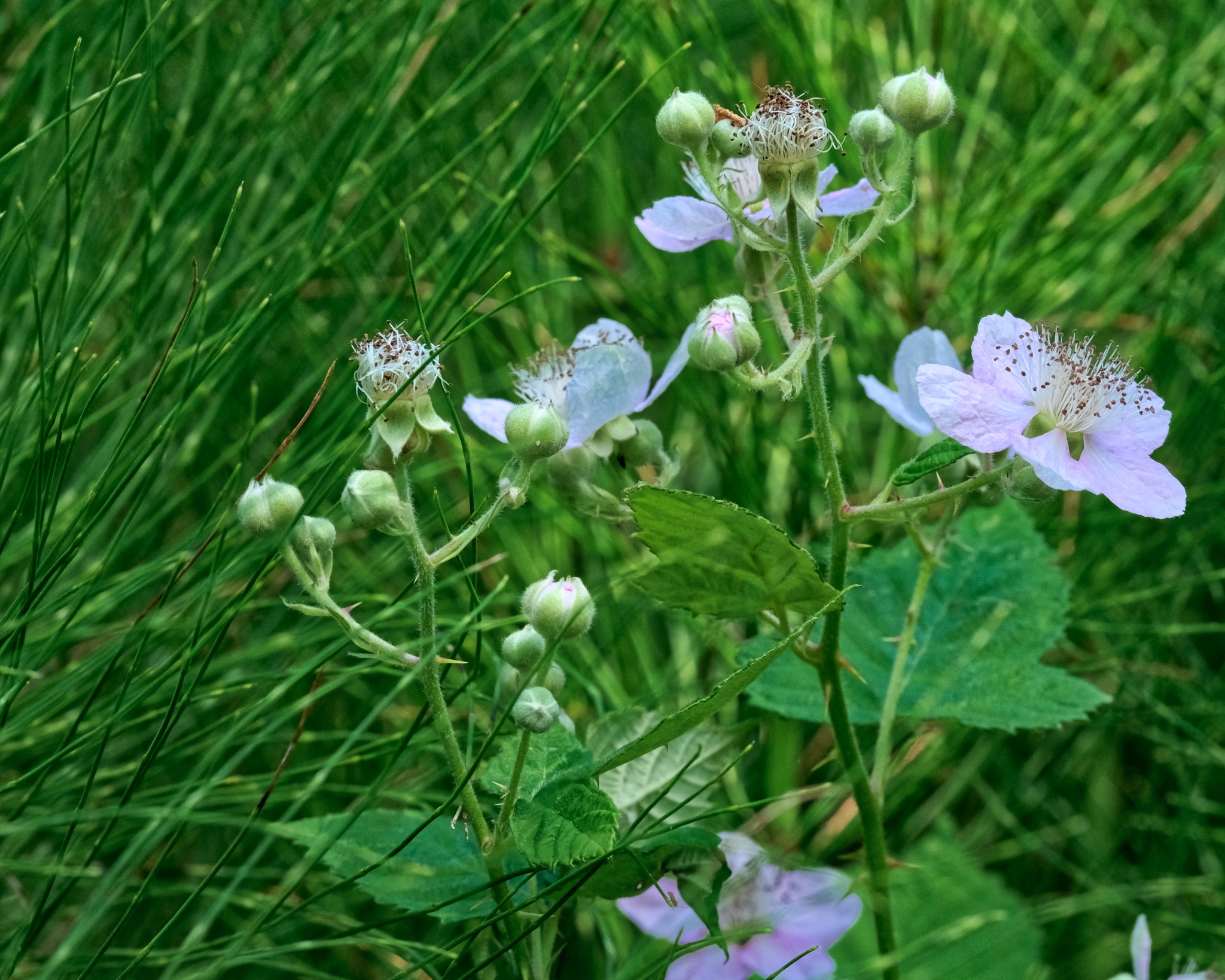 The blackberry vines grew among the horsetail ferns everywhere.
The blackberry vines grew among the horsetail ferns everywhere. Someone hung a large birdhouse along the path.
Someone hung a large birdhouse along the path.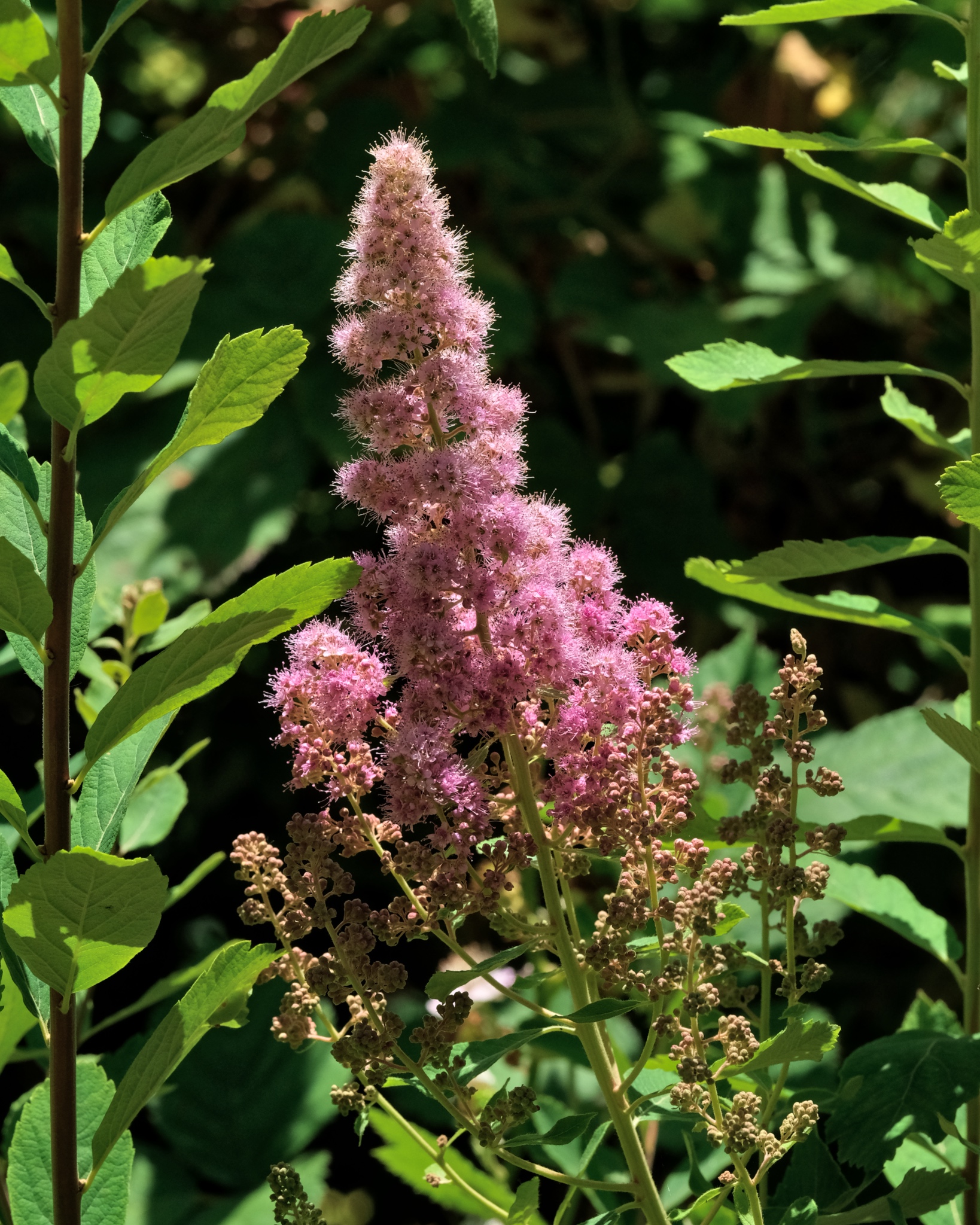 Beautiful summer wildflowers . . . and then a moving distraction along the creek . . .
Beautiful summer wildflowers . . . and then a moving distraction along the creek . . .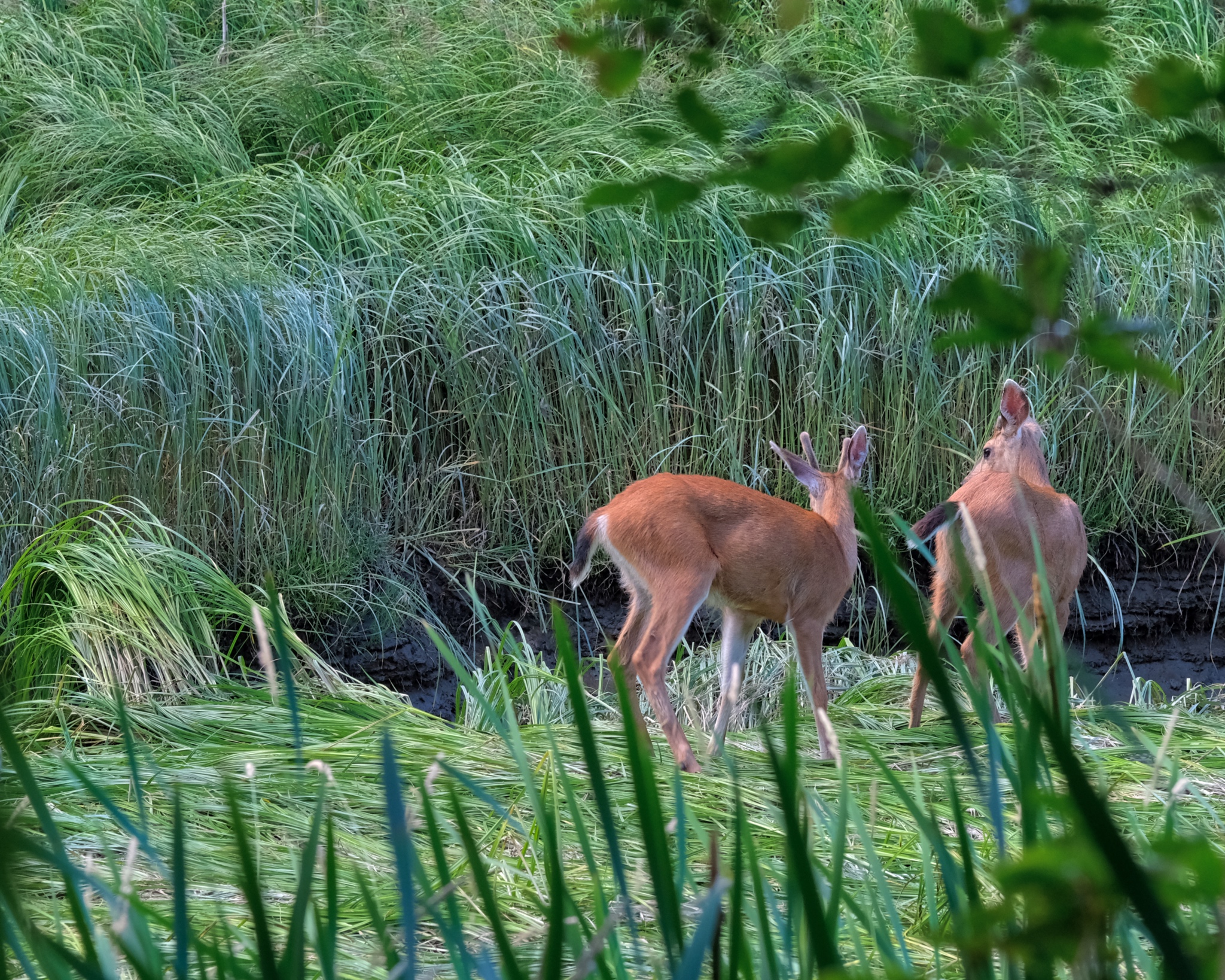 A wonderful surprise . . . . I sat very quietly, not 20 yards away.
A wonderful surprise . . . . I sat very quietly, not 20 yards away. I watched, and photographed, for over a half hour . . .
I watched, and photographed, for over a half hour . . . 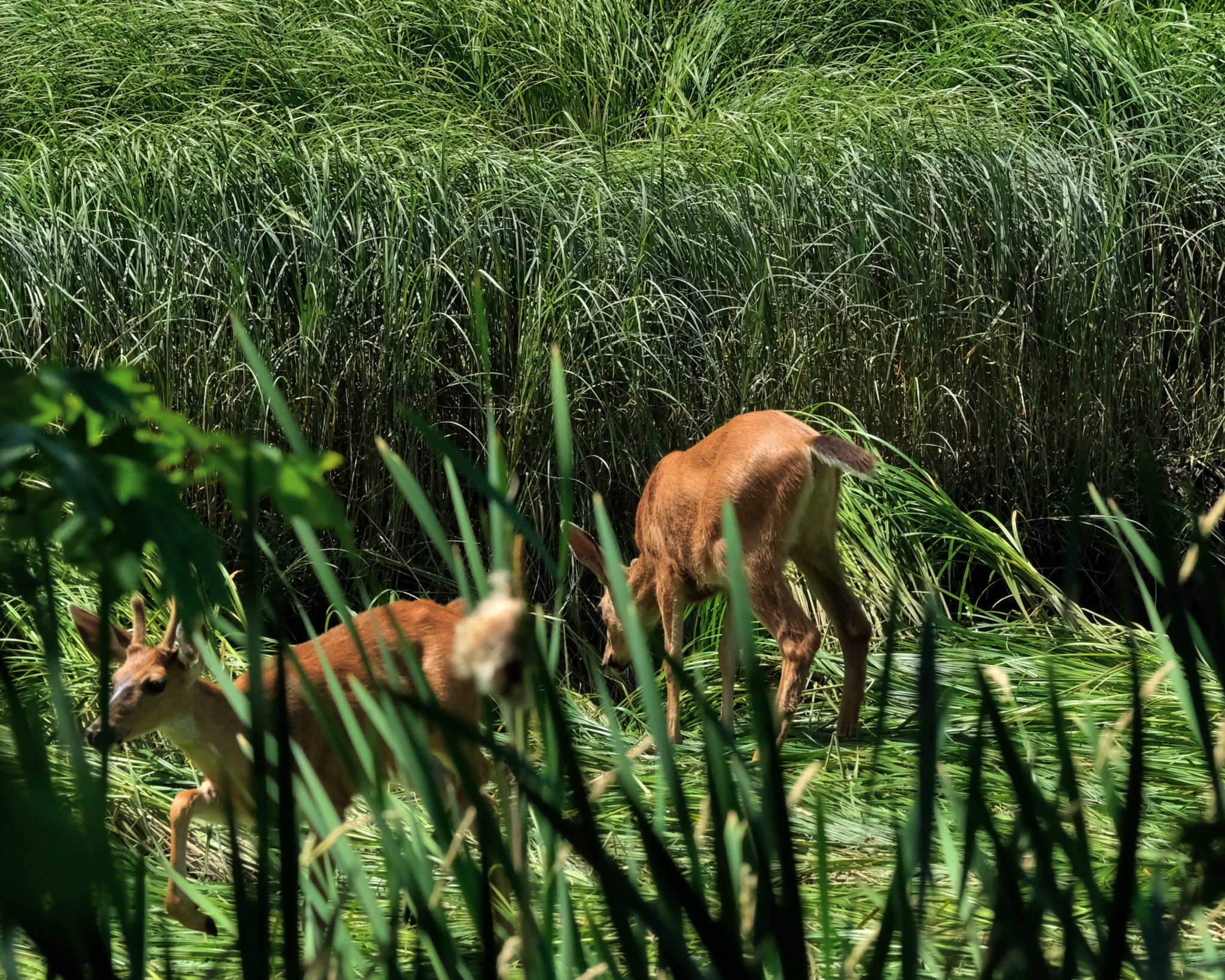 They finally moved on along, walking in the Woodland Creek streambed. I followed, but lost sight of them in the dense forest.
They finally moved on along, walking in the Woodland Creek streambed. I followed, but lost sight of them in the dense forest.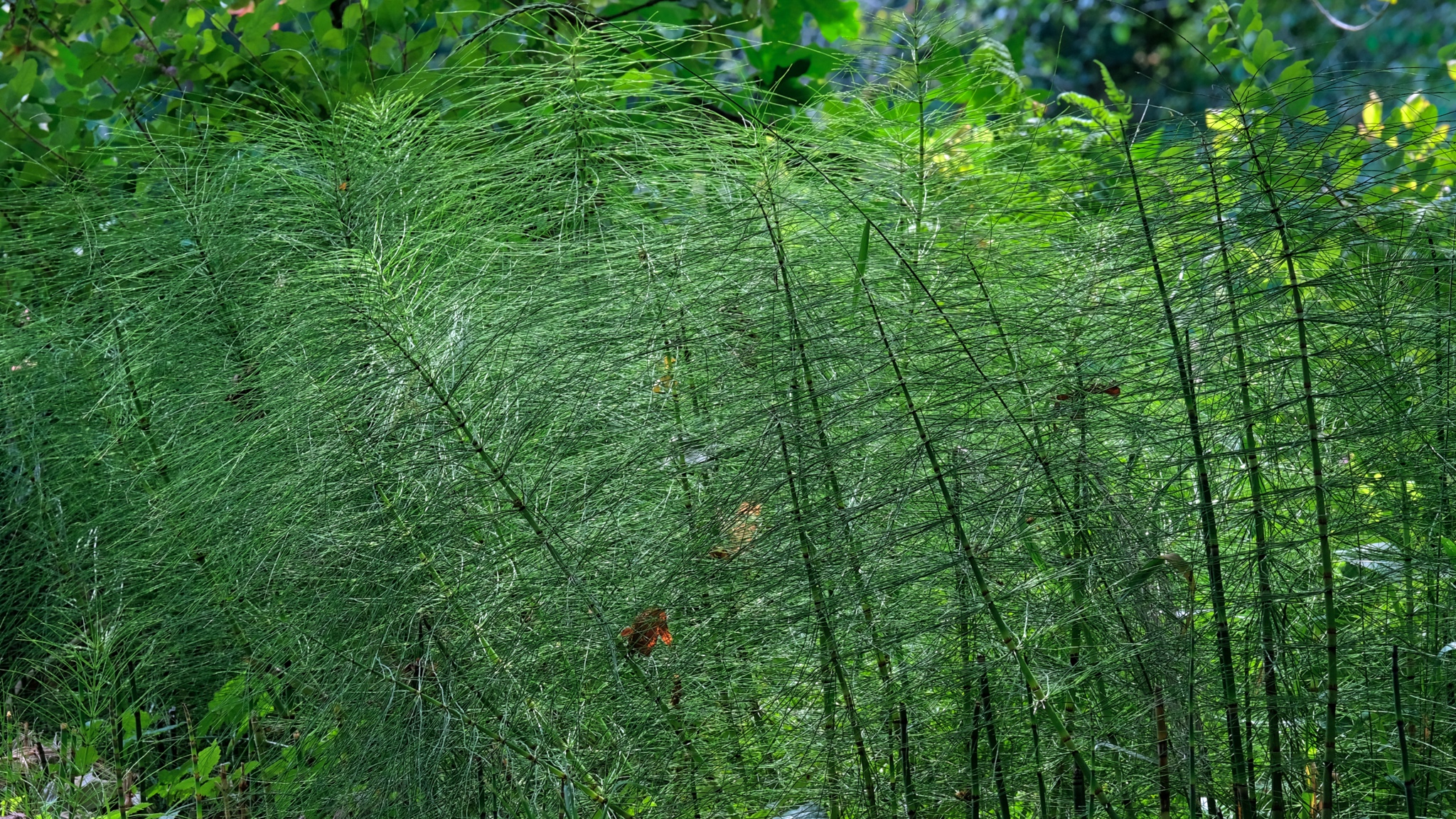 I wandered back to my camper along a horsetail fern-lined trail, and drove out to the Nisqually estuary.
I wandered back to my camper along a horsetail fern-lined trail, and drove out to the Nisqually estuary.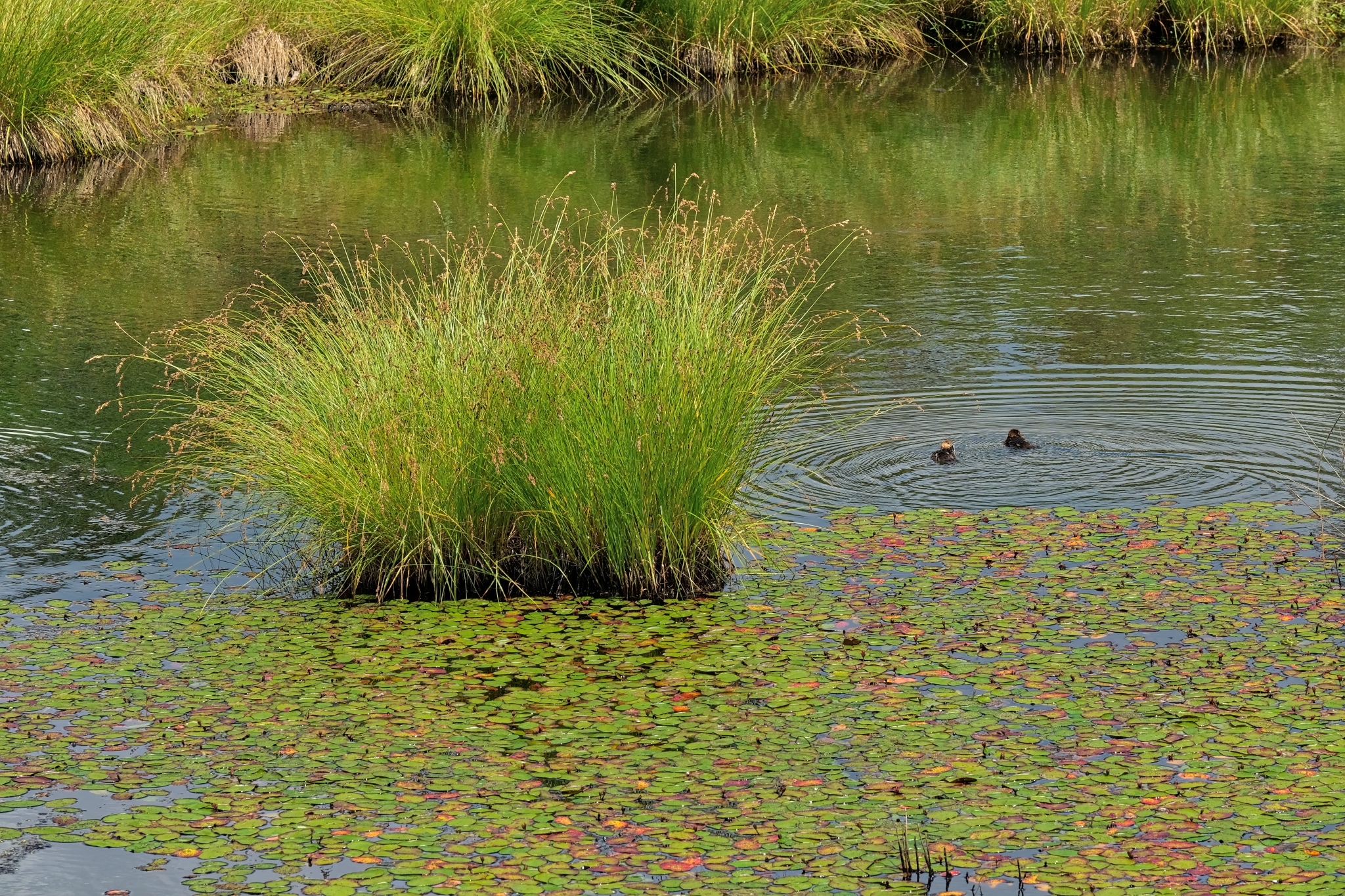 The Nisqually National Wildlife Reserve is comprised of four distinct natural ecological settings: freshwater ponds, wet forests, former farm fields, and estuarial mud flats (I visited during extreme low tide). All areas were fantastic! Here, diving ducks in a freshwater pond.
The Nisqually National Wildlife Reserve is comprised of four distinct natural ecological settings: freshwater ponds, wet forests, former farm fields, and estuarial mud flats (I visited during extreme low tide). All areas were fantastic! Here, diving ducks in a freshwater pond.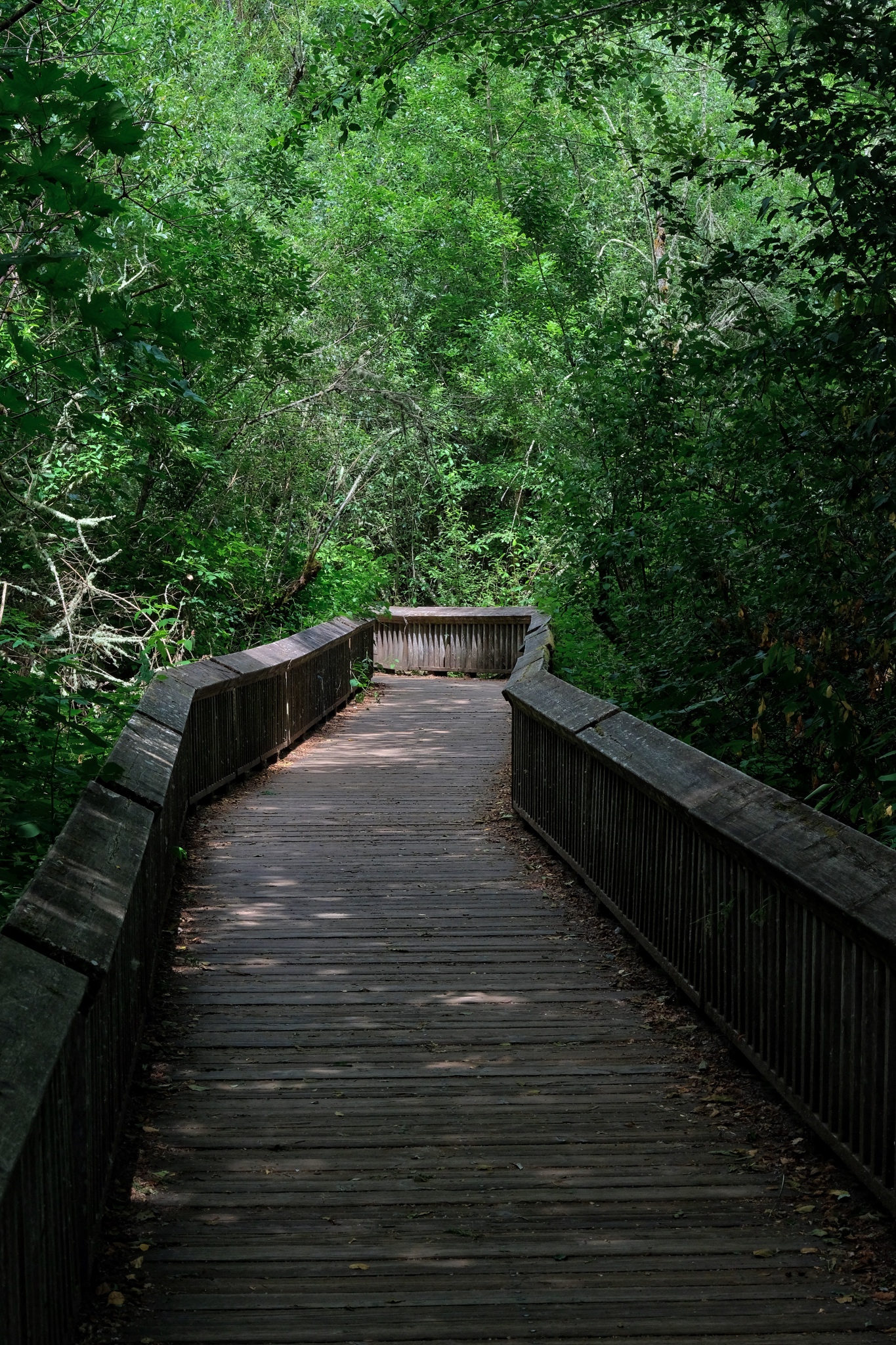 Elevated wooden walkways took visitors out into, and above the delicate ecology of the wet forest.
Elevated wooden walkways took visitors out into, and above the delicate ecology of the wet forest.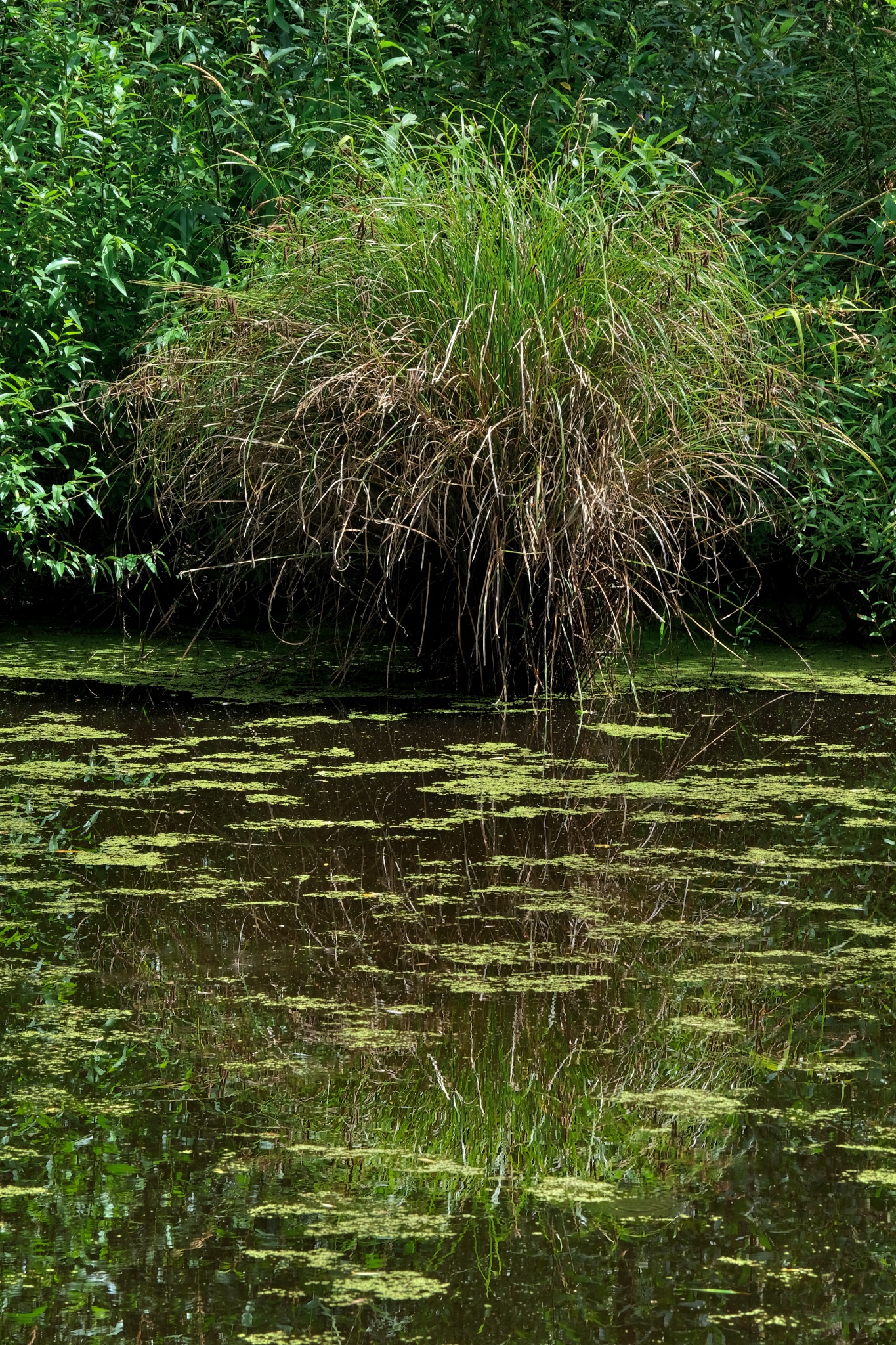 The elevated walkways afforded wonderful views of the freshwater wetlands.
The elevated walkways afforded wonderful views of the freshwater wetlands.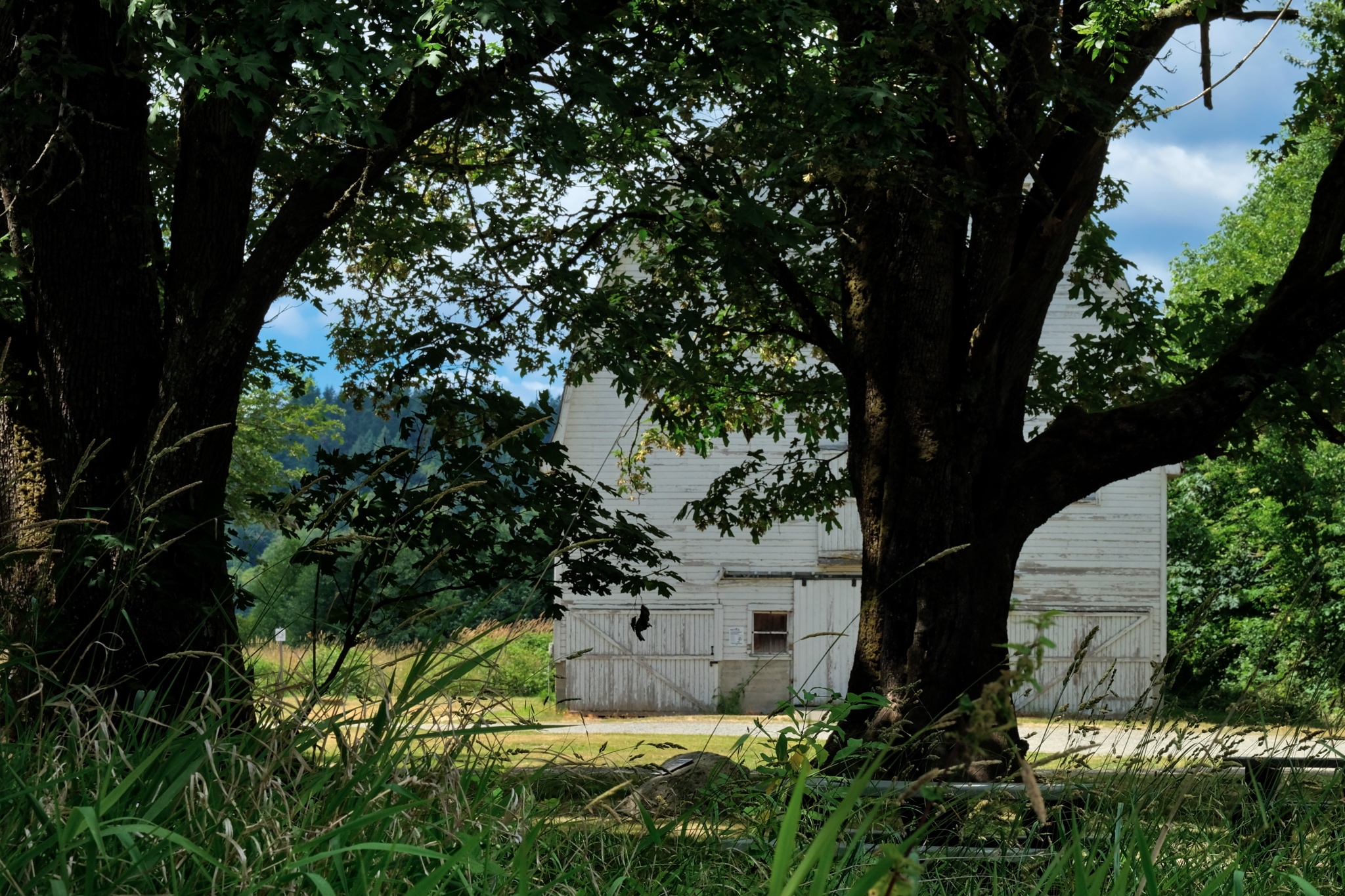 At the edge of the forest were the barns of an old settlement farm.
At the edge of the forest were the barns of an old settlement farm.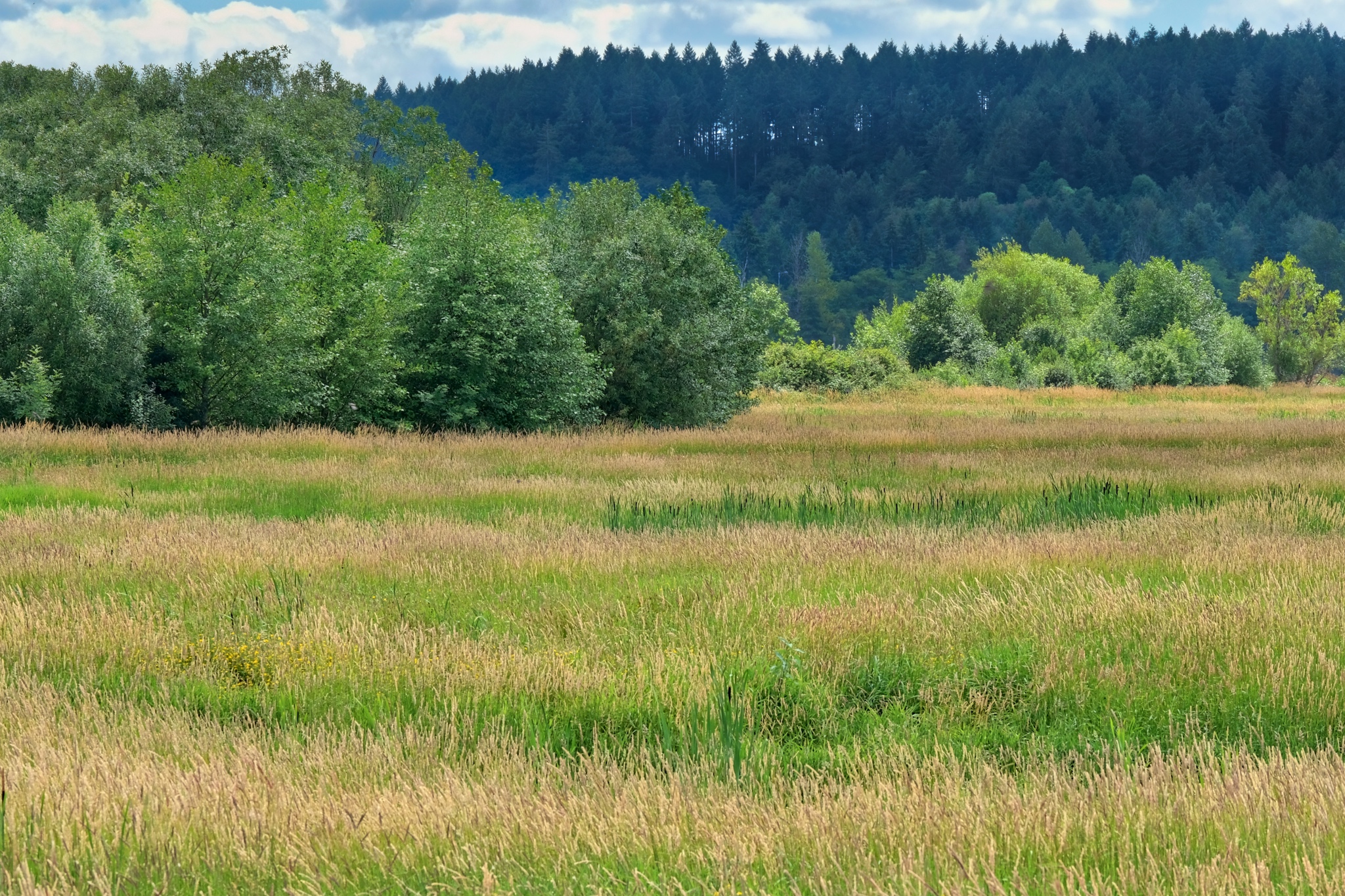 Early settlers expended a huge amount of labor and resources building a system of dykes to drain some of the Nisqually Estuary for farmland. The land now stands uncultivated . . . for the benefit of wildlife habitat.
Early settlers expended a huge amount of labor and resources building a system of dykes to drain some of the Nisqually Estuary for farmland. The land now stands uncultivated . . . for the benefit of wildlife habitat.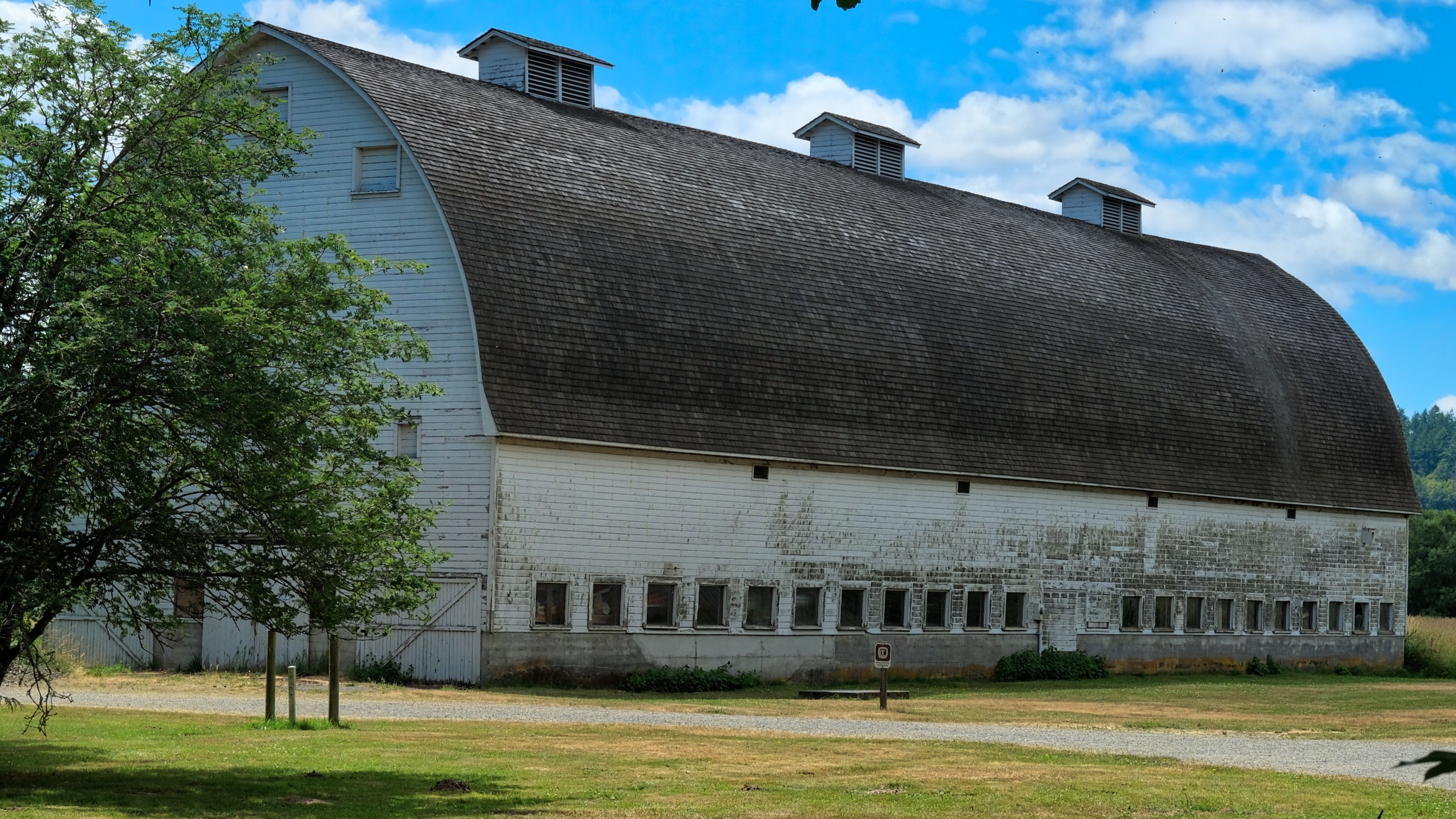 The huge barn, now a part of the National Wildlife Reserve.
The huge barn, now a part of the National Wildlife Reserve.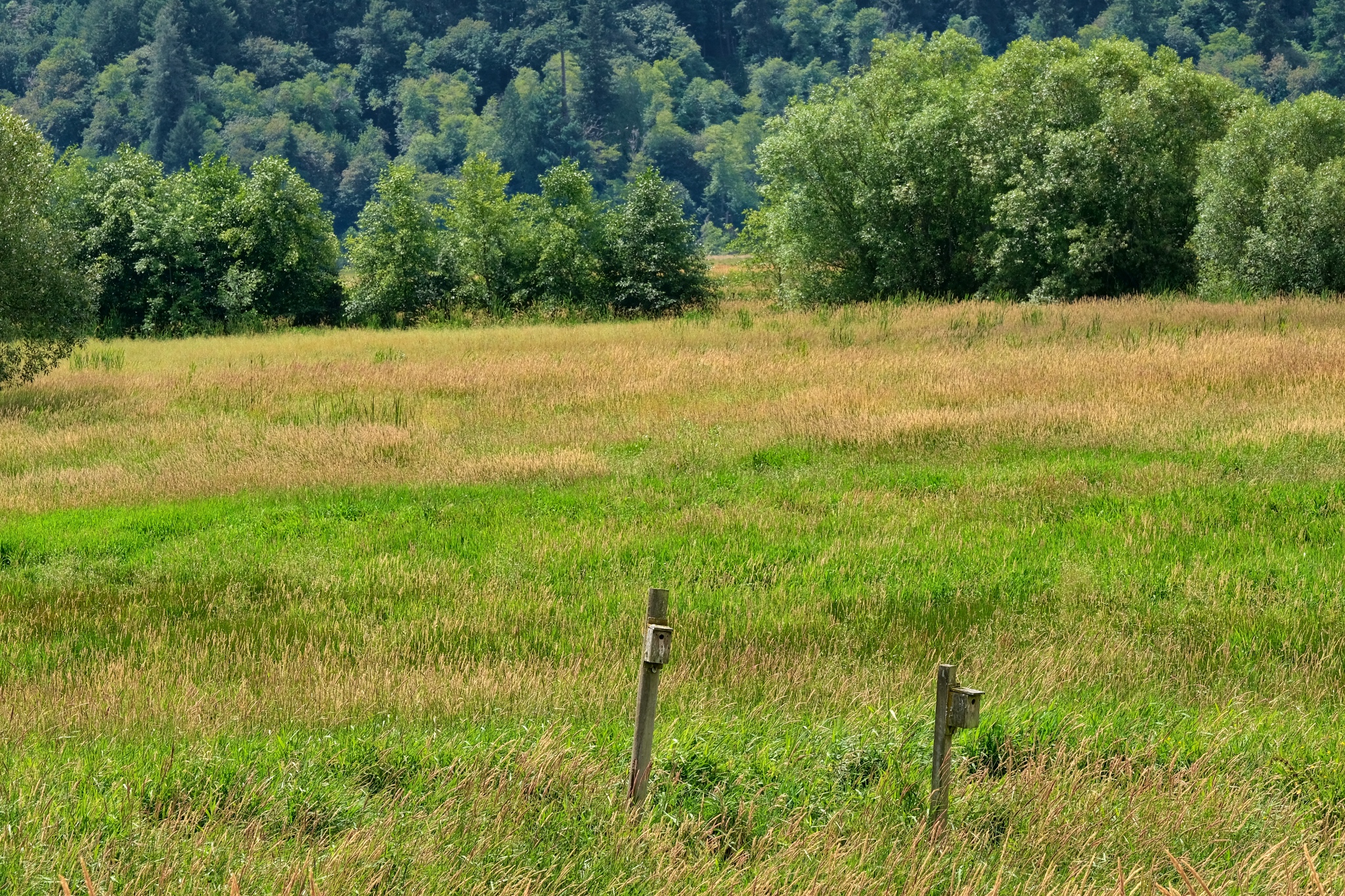 The colors of the fields and surrounding hills were breathtaking!
The colors of the fields and surrounding hills were breathtaking!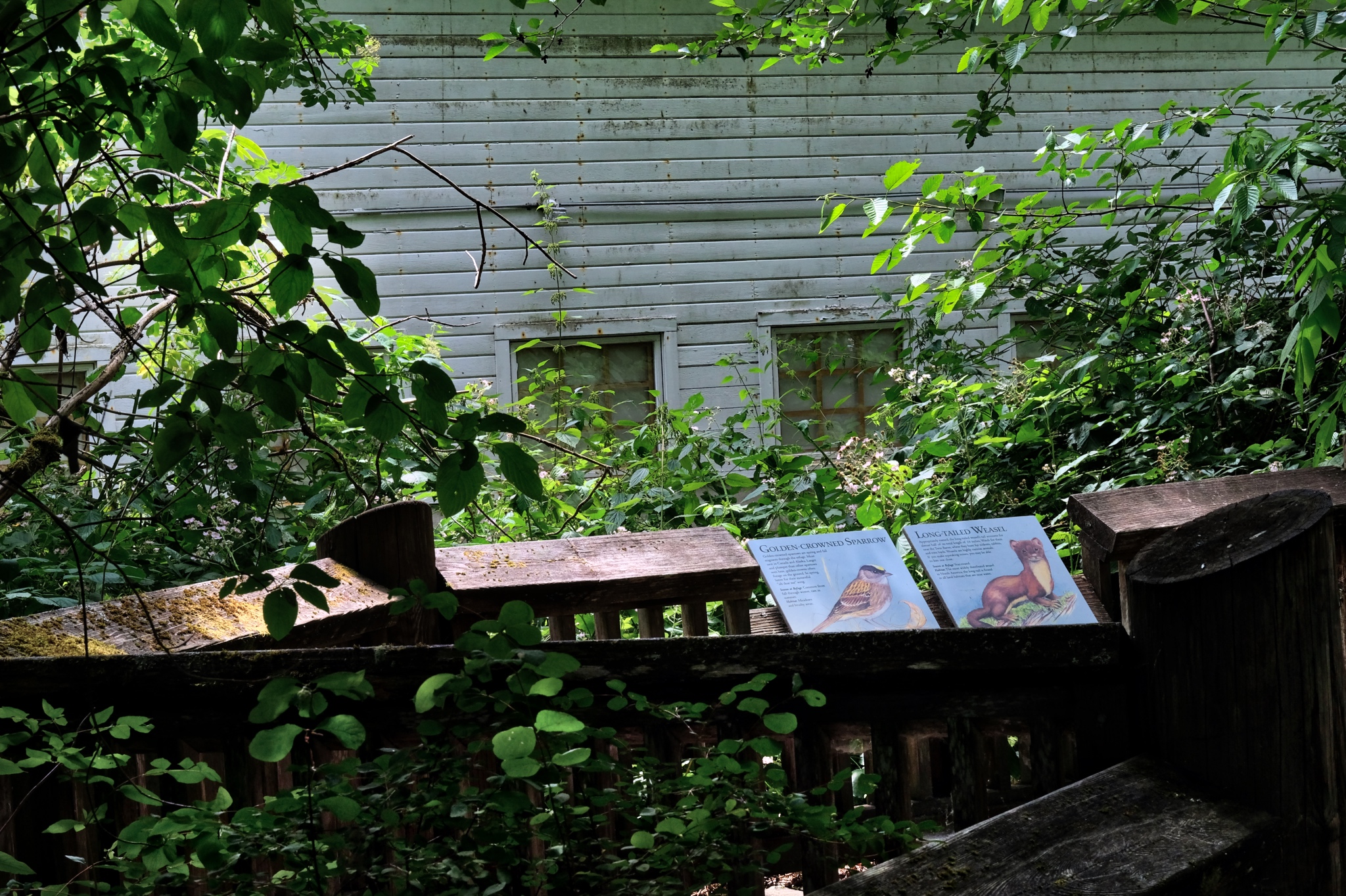 All the paths were well marked with informational signage about the indigenous flora, fauna, and local geology.
All the paths were well marked with informational signage about the indigenous flora, fauna, and local geology.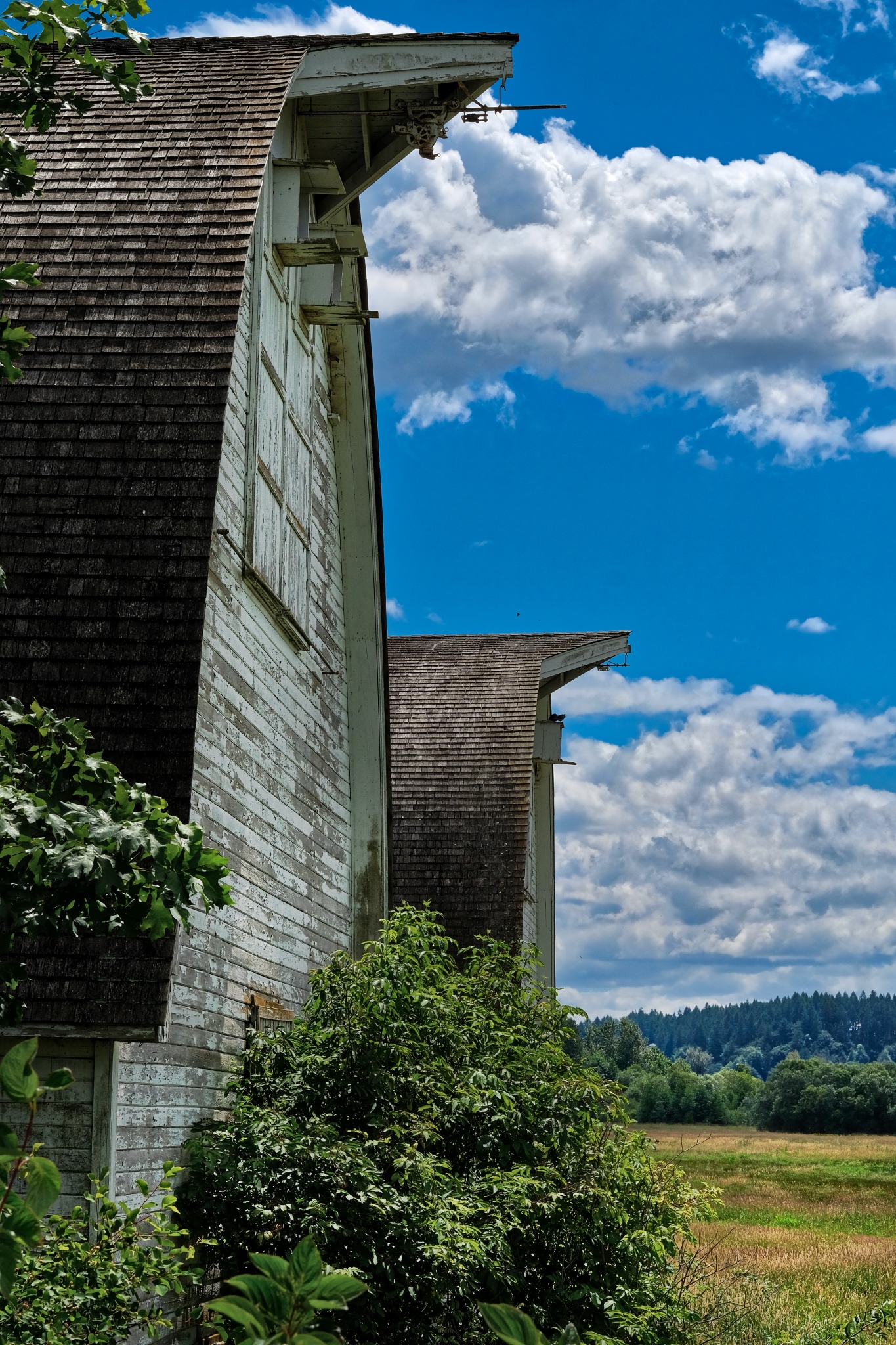 A wonderful angle from which to view the mammoth barns!
A wonderful angle from which to view the mammoth barns!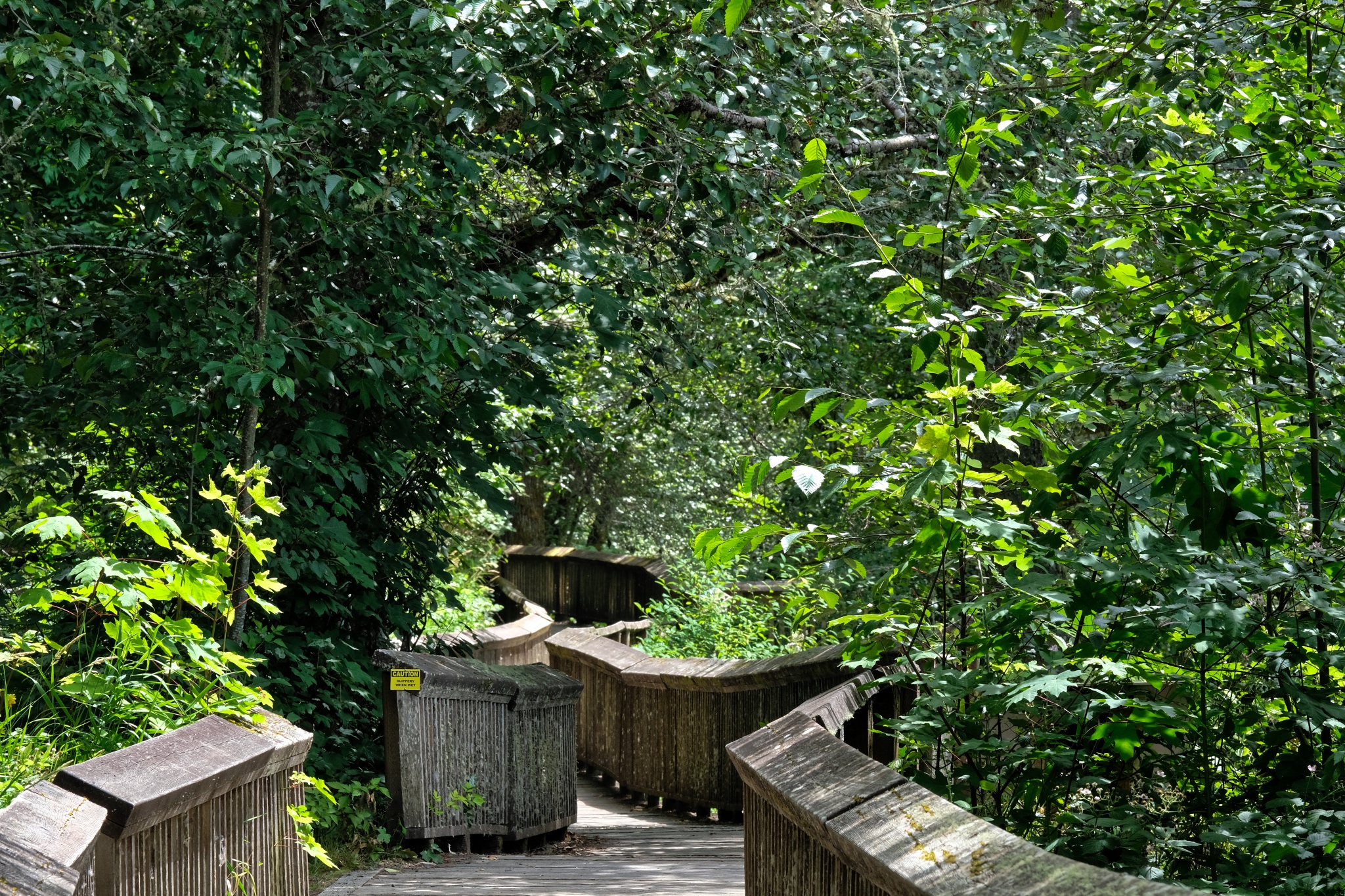 I wandered around some more on the elevated walkways, stopping here and there to take flower photos.
I wandered around some more on the elevated walkways, stopping here and there to take flower photos.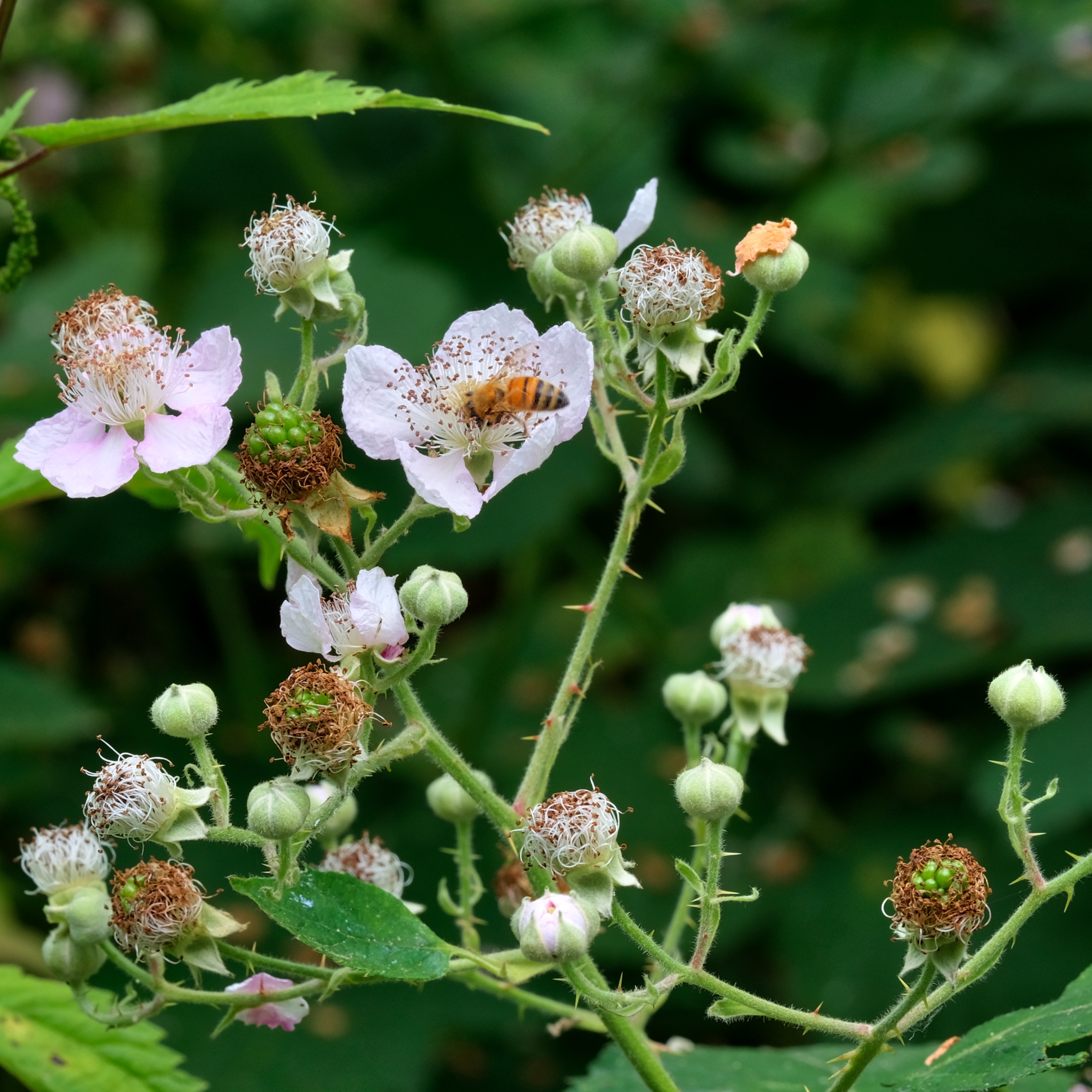 Busy bees . . . and . . .
Busy bees . . . and . . .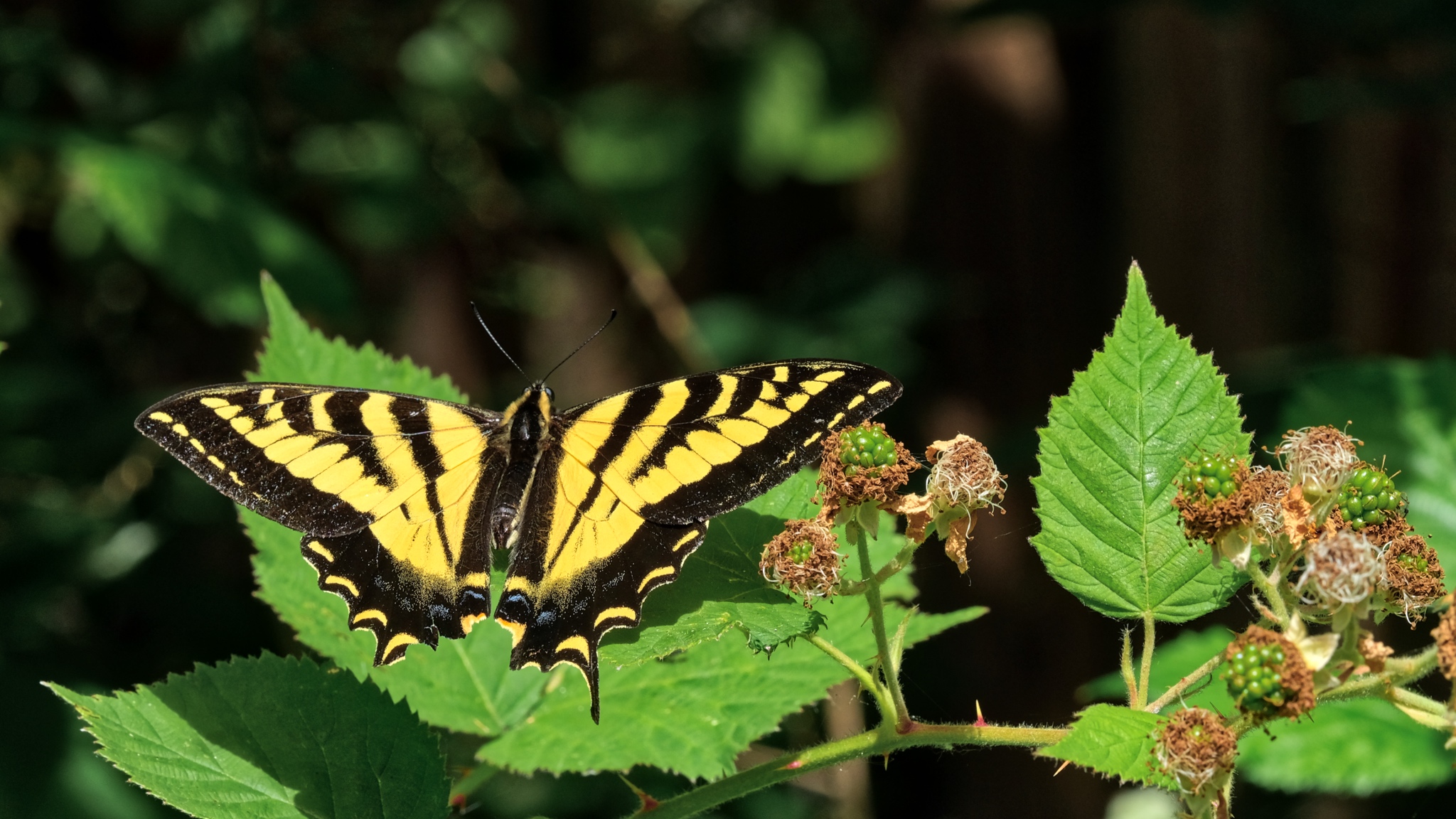 Busy butterflies too!
Busy butterflies too!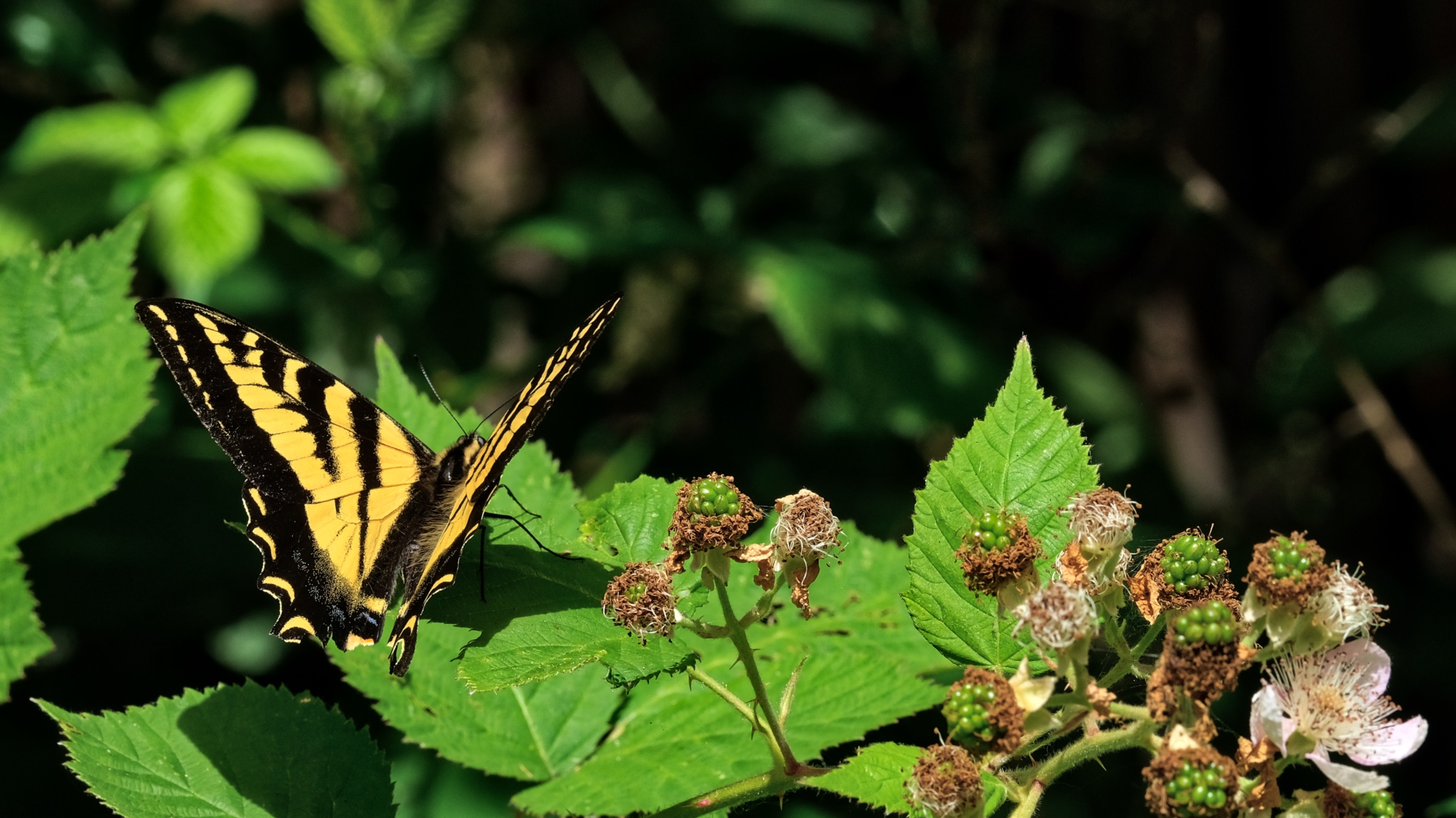 This one seemed to stay around just so I could photograph it!
This one seemed to stay around just so I could photograph it!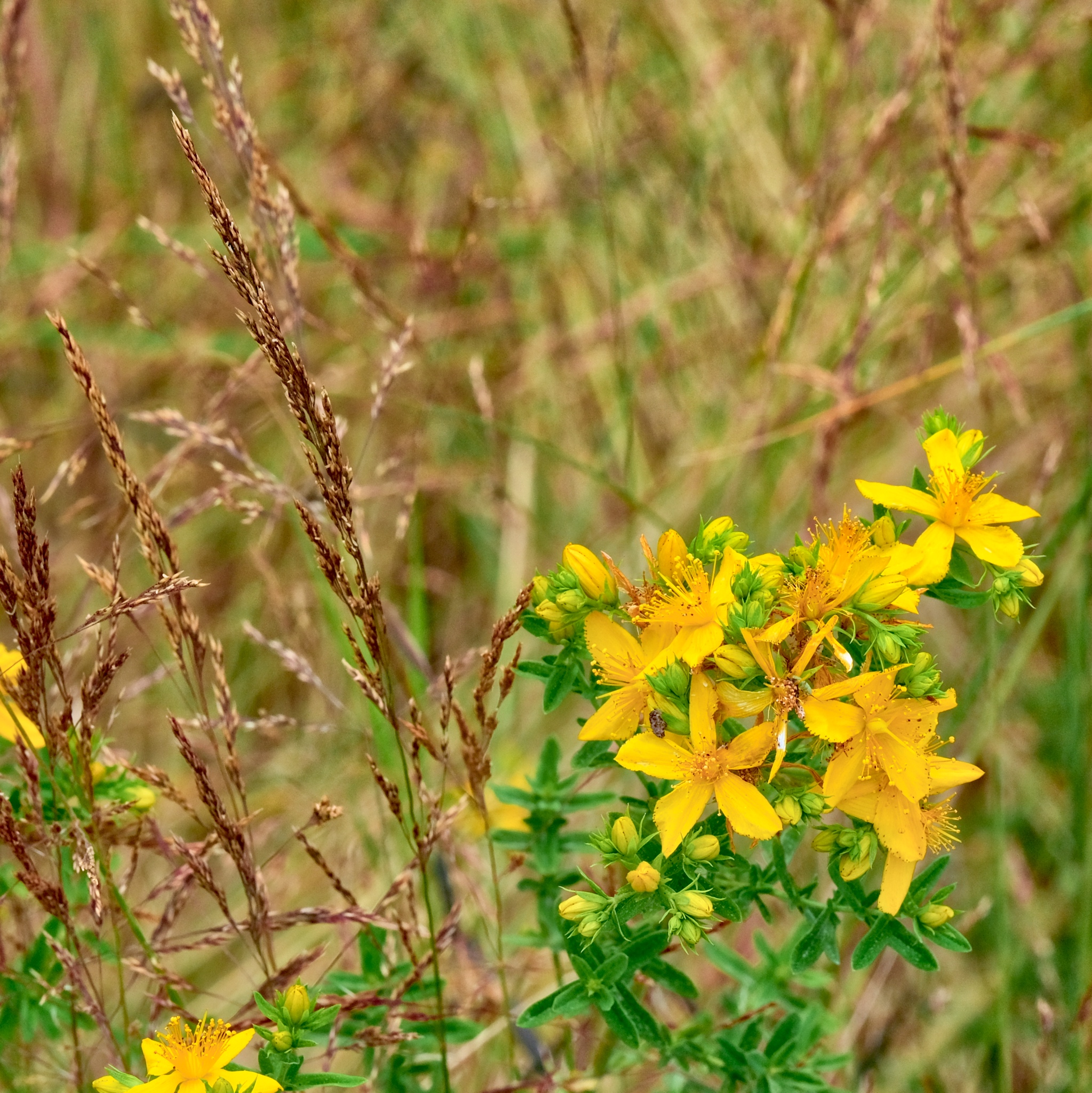 I left the cool shade of the forest for the dry gravel path through the fields and onward toward the estuary . . .
I left the cool shade of the forest for the dry gravel path through the fields and onward toward the estuary . . .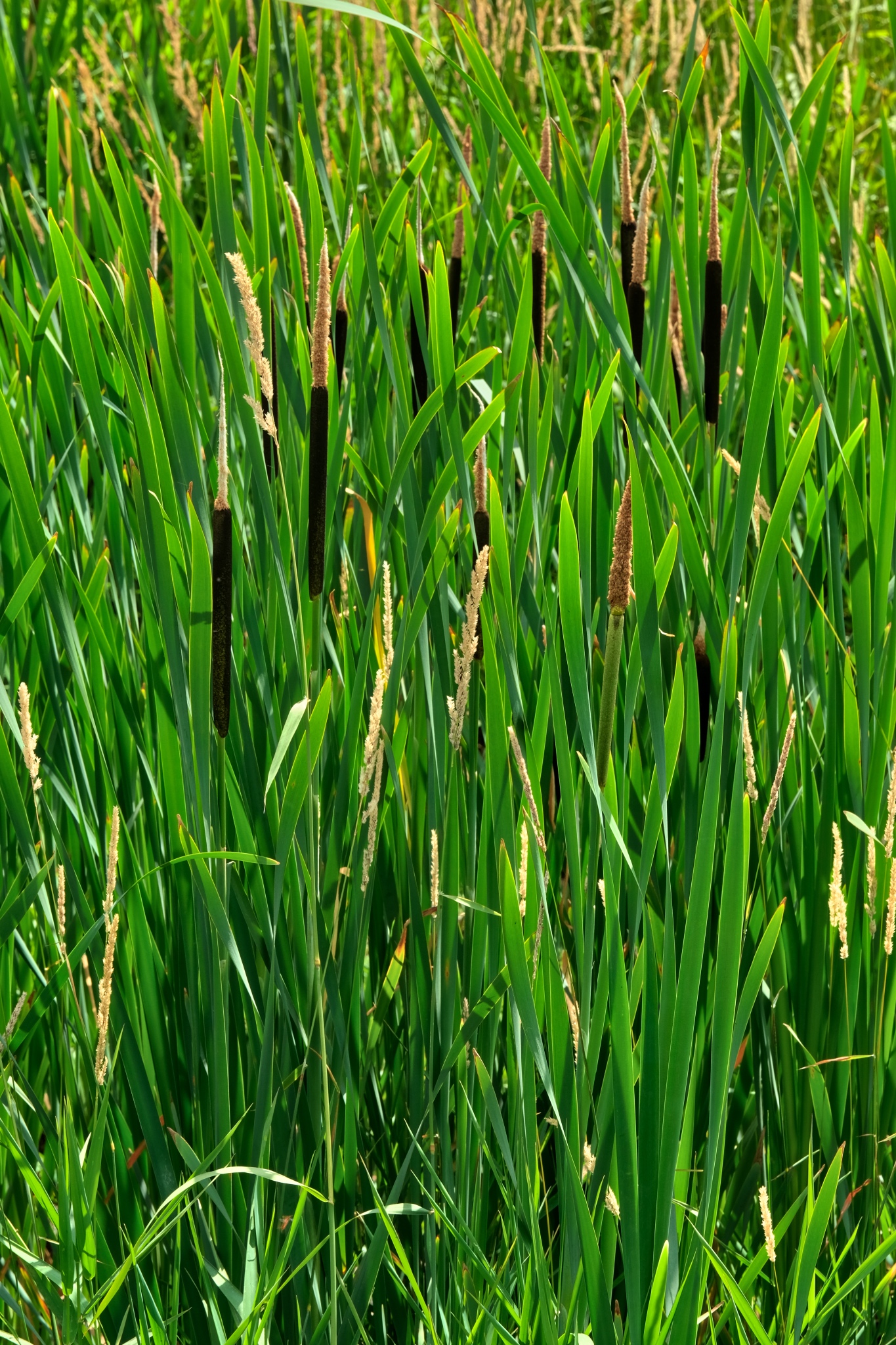 The old field drainage canals astride the dyke was full of thick bull rushes.
The old field drainage canals astride the dyke was full of thick bull rushes.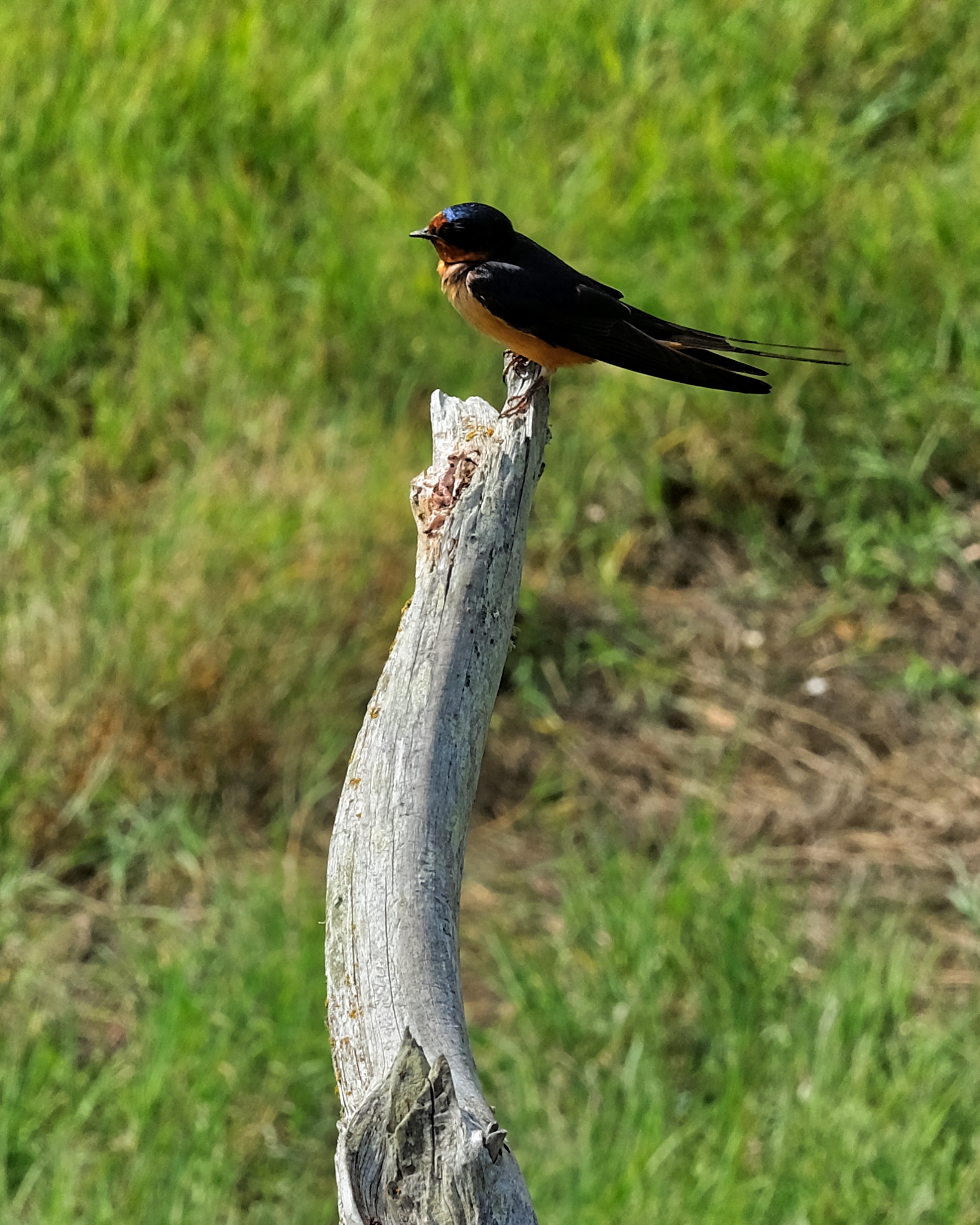 Many birds on the forest edge.
Many birds on the forest edge.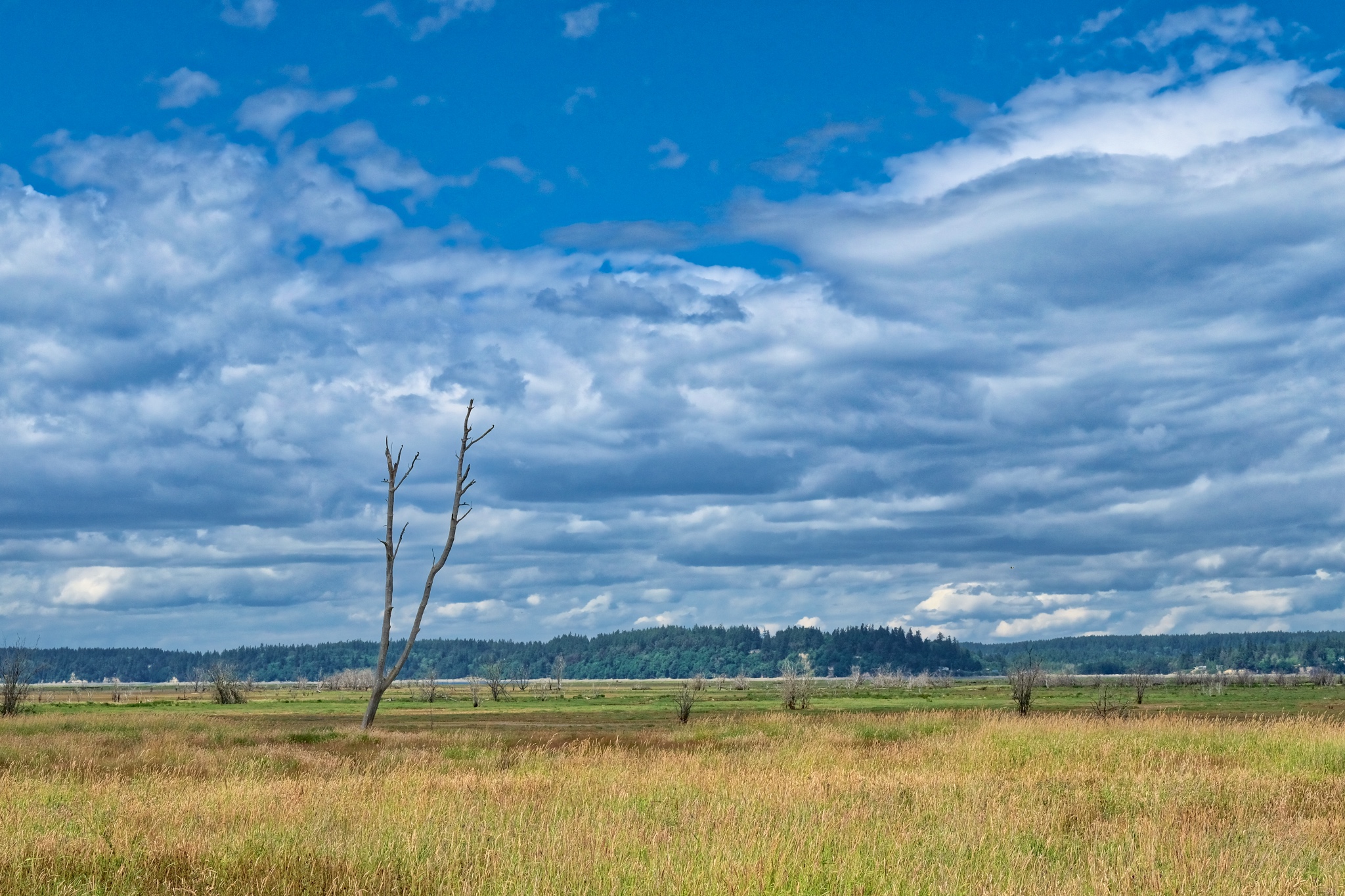 The grassy fields gradually gave way to estuarial flats.
The grassy fields gradually gave way to estuarial flats.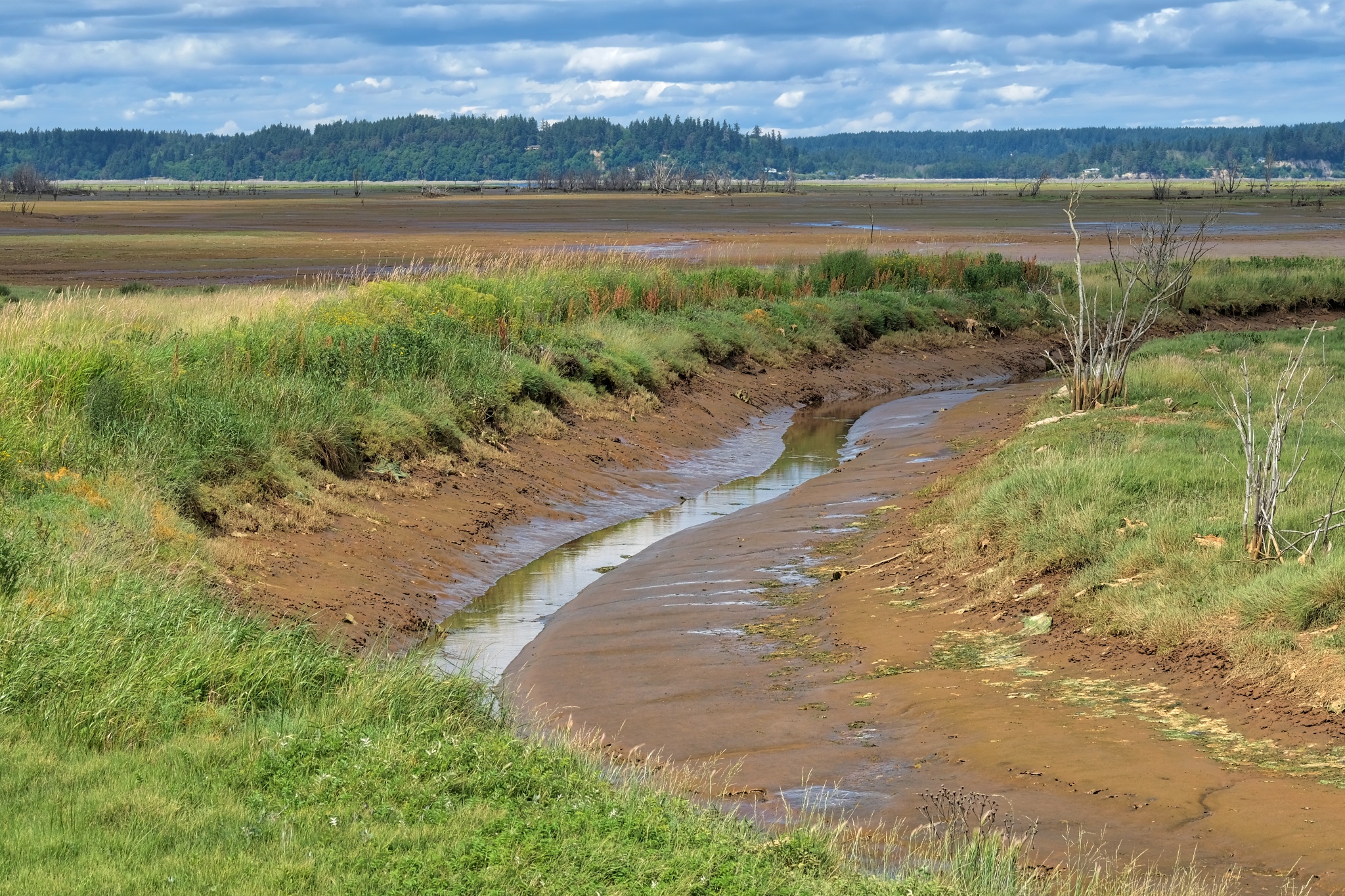 I knew the tide was going to be out when I saw these small bay arterial channels.
I knew the tide was going to be out when I saw these small bay arterial channels.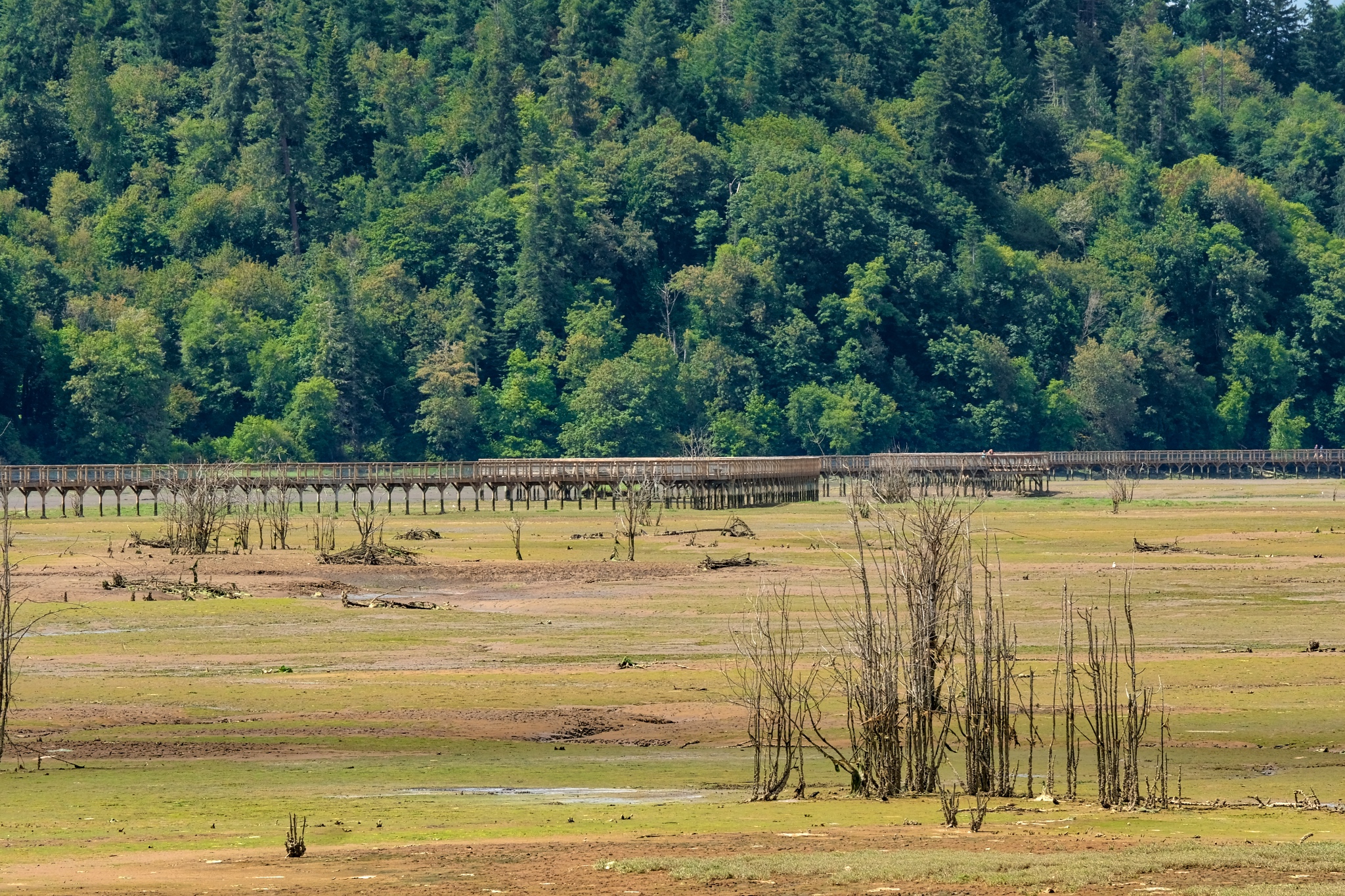 My first view across the wetlands toward the elevated observation walkway.
My first view across the wetlands toward the elevated observation walkway.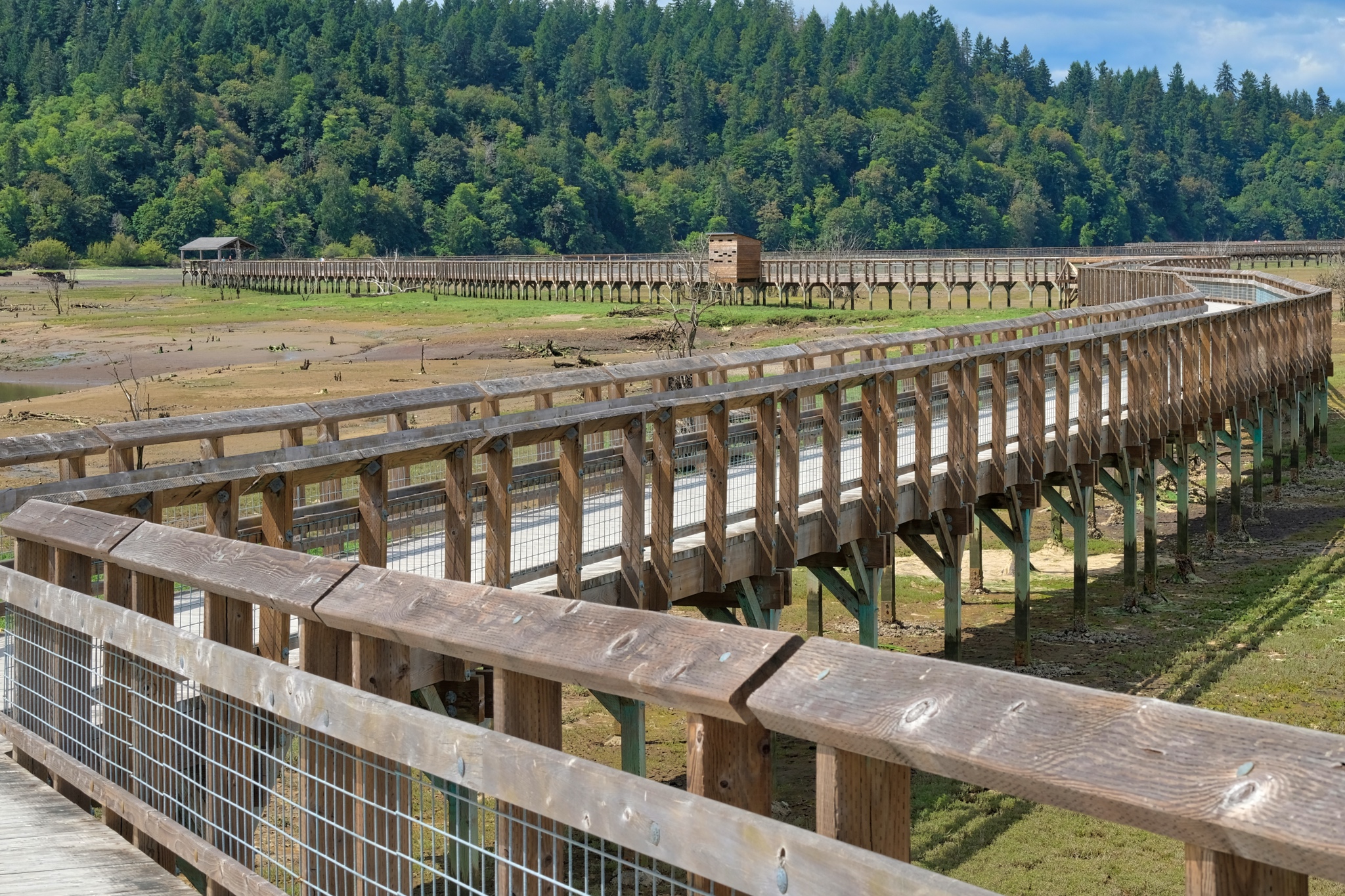 I climbed the ramp up onto the observation walkway . . . an incredible piece wooden construction in its own right.
I climbed the ramp up onto the observation walkway . . . an incredible piece wooden construction in its own right. The view back up the Nisqually River across dry sand bars.
The view back up the Nisqually River across dry sand bars.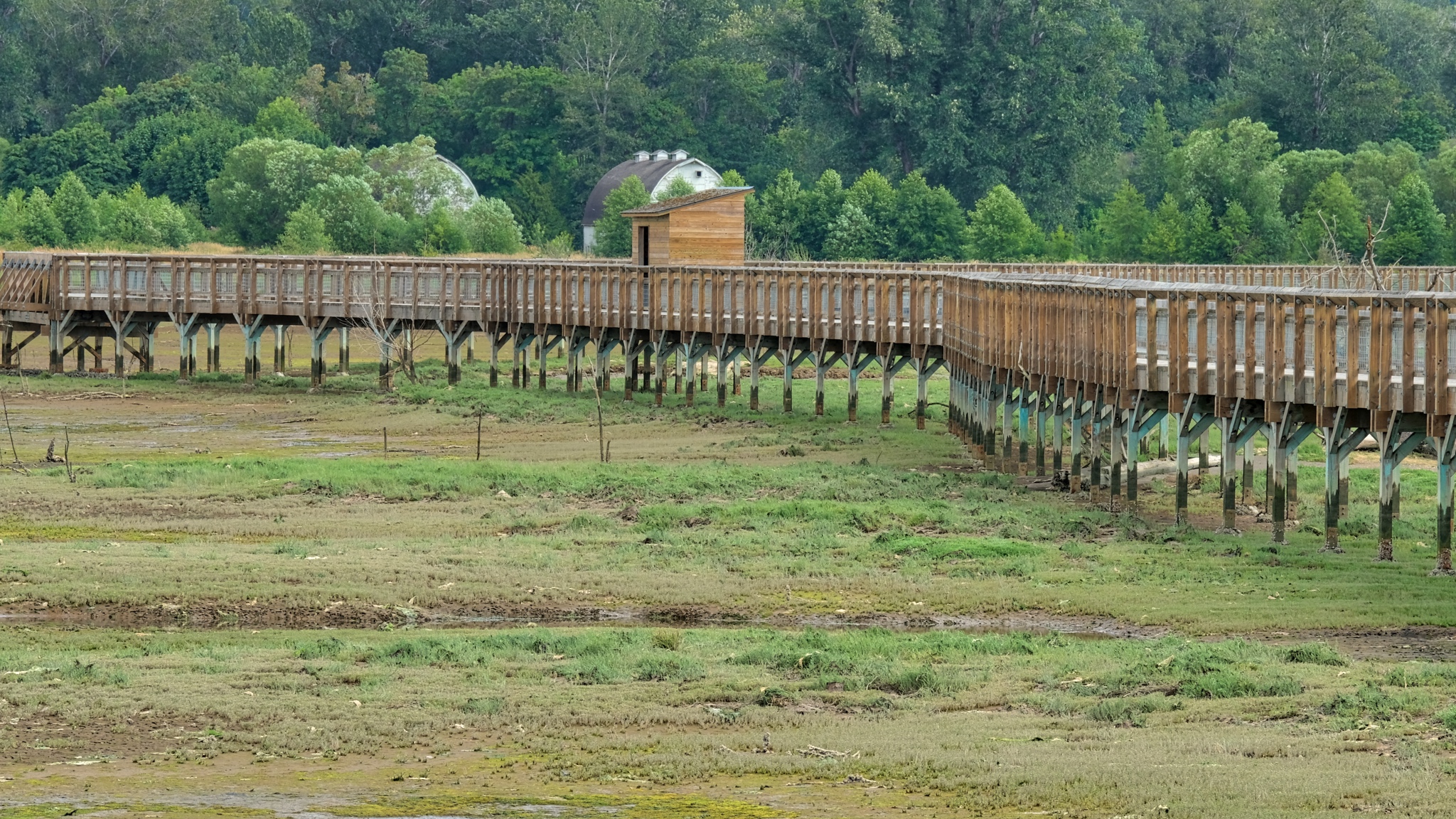 Looking back toward the tree line and the old ban from the walkway.
Looking back toward the tree line and the old ban from the walkway.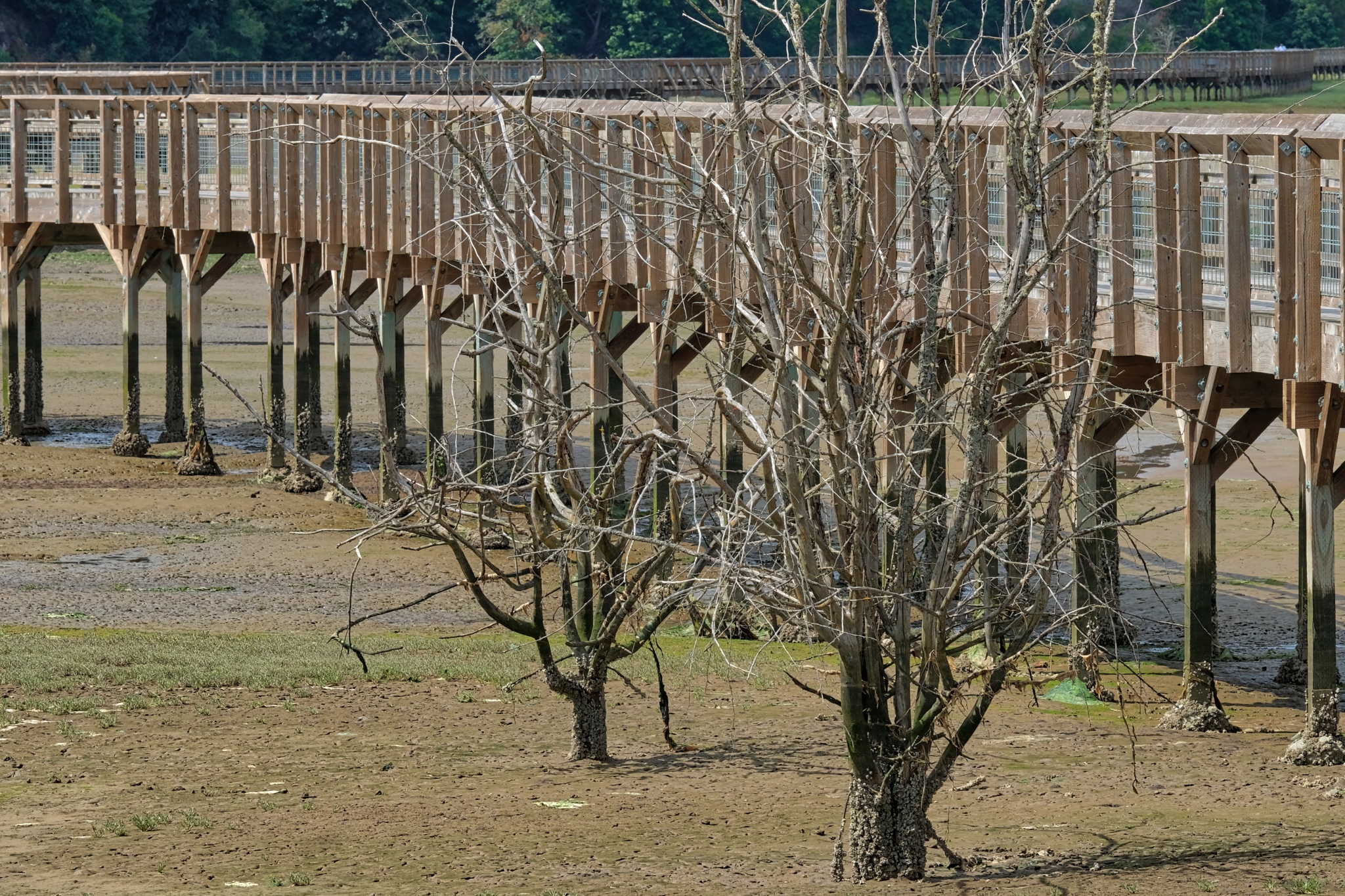 The sights from the walkway were both strange and captivating. You cannot visit these low tide estuarial landscapes any other way.
The sights from the walkway were both strange and captivating. You cannot visit these low tide estuarial landscapes any other way.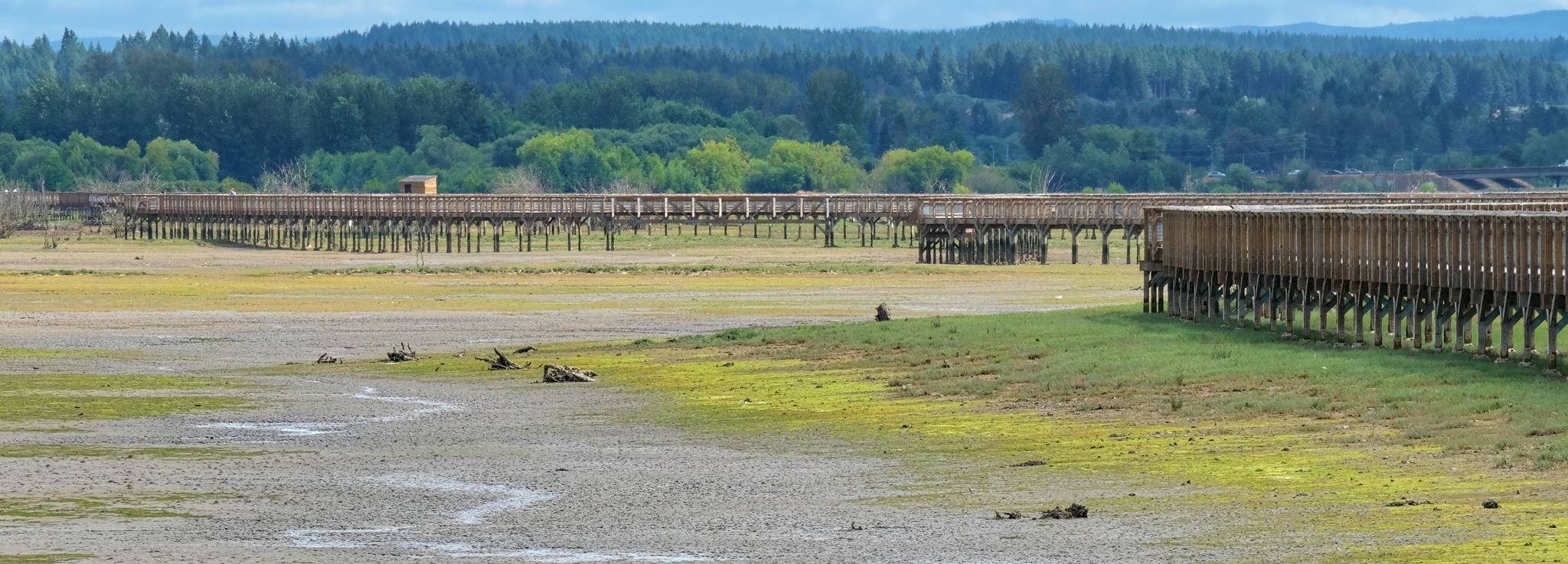 A mega-walkway!
A mega-walkway!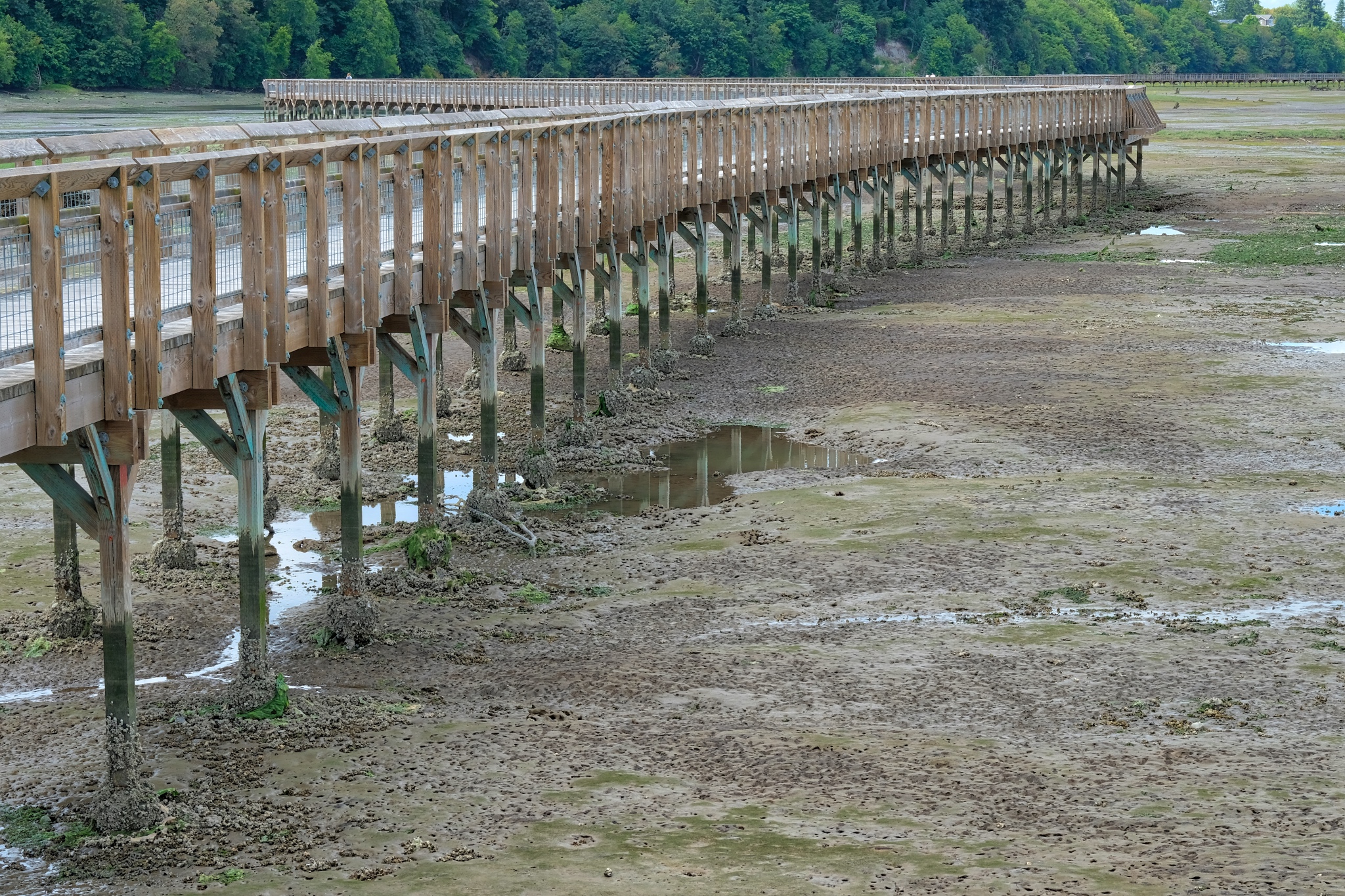 The further out I went the more it became an exposed bay floor.
The further out I went the more it became an exposed bay floor. On one side of the walkway was the Nisqually River . . . with evidence of the pilings of old commercial structures.
On one side of the walkway was the Nisqually River . . . with evidence of the pilings of old commercial structures. Some commercial project lost to time.
Some commercial project lost to time.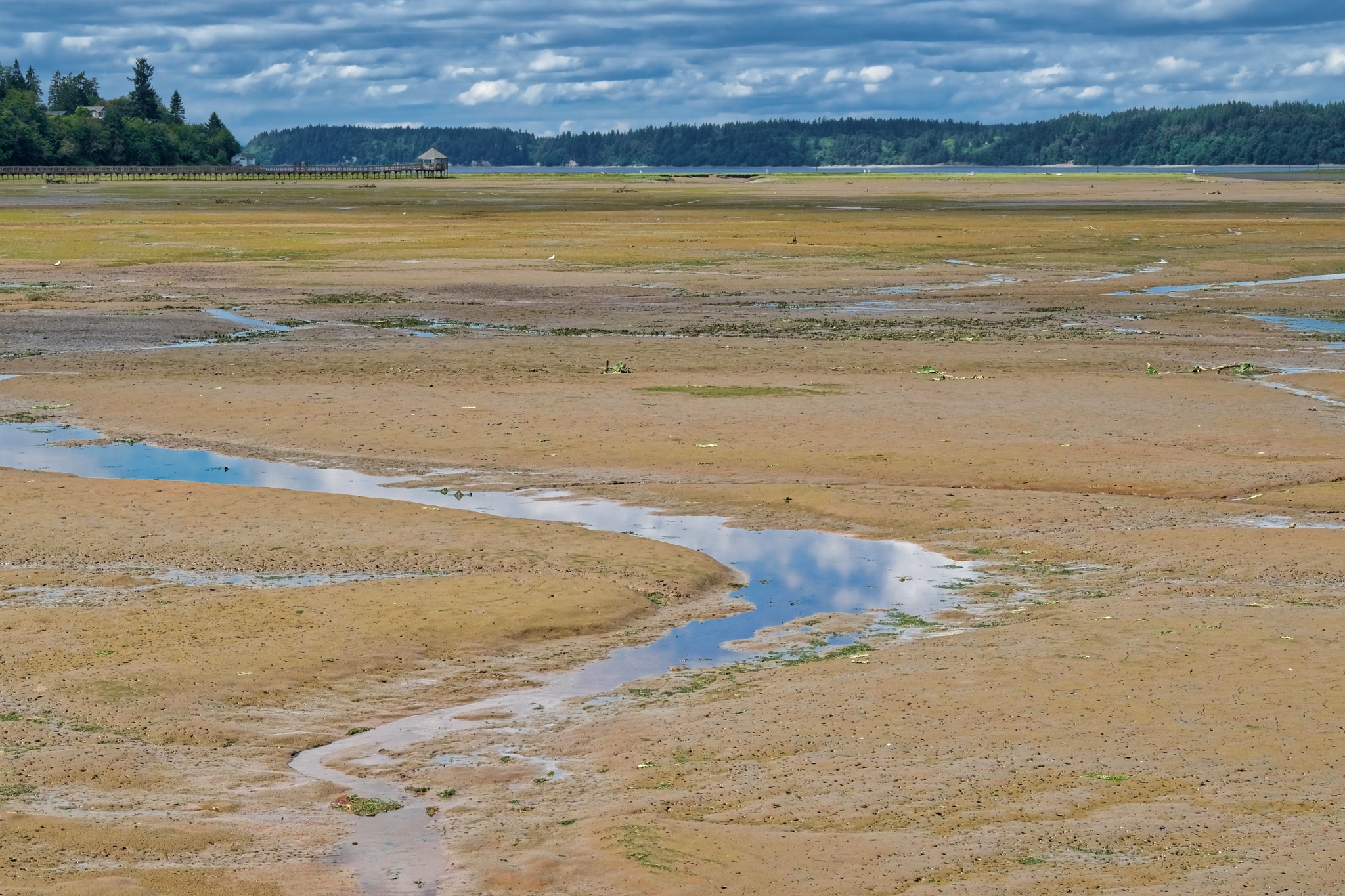 On the other side of the walkway was a vista across vast mud flats . . . loaded with very interesting objects!
On the other side of the walkway was a vista across vast mud flats . . . loaded with very interesting objects!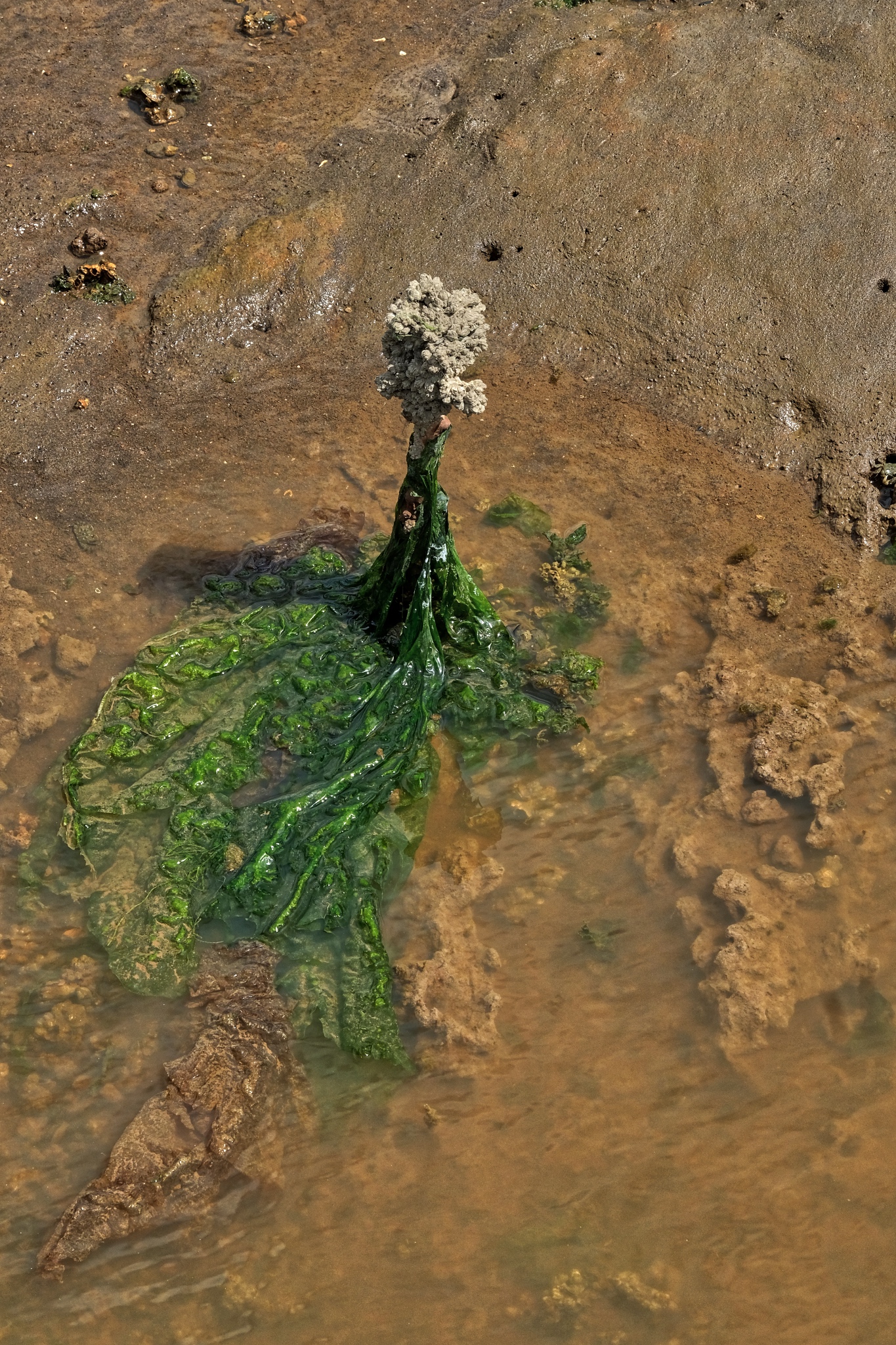 Strange things . . . . and, unfortunately all too many plastic bags!
Strange things . . . . and, unfortunately all too many plastic bags!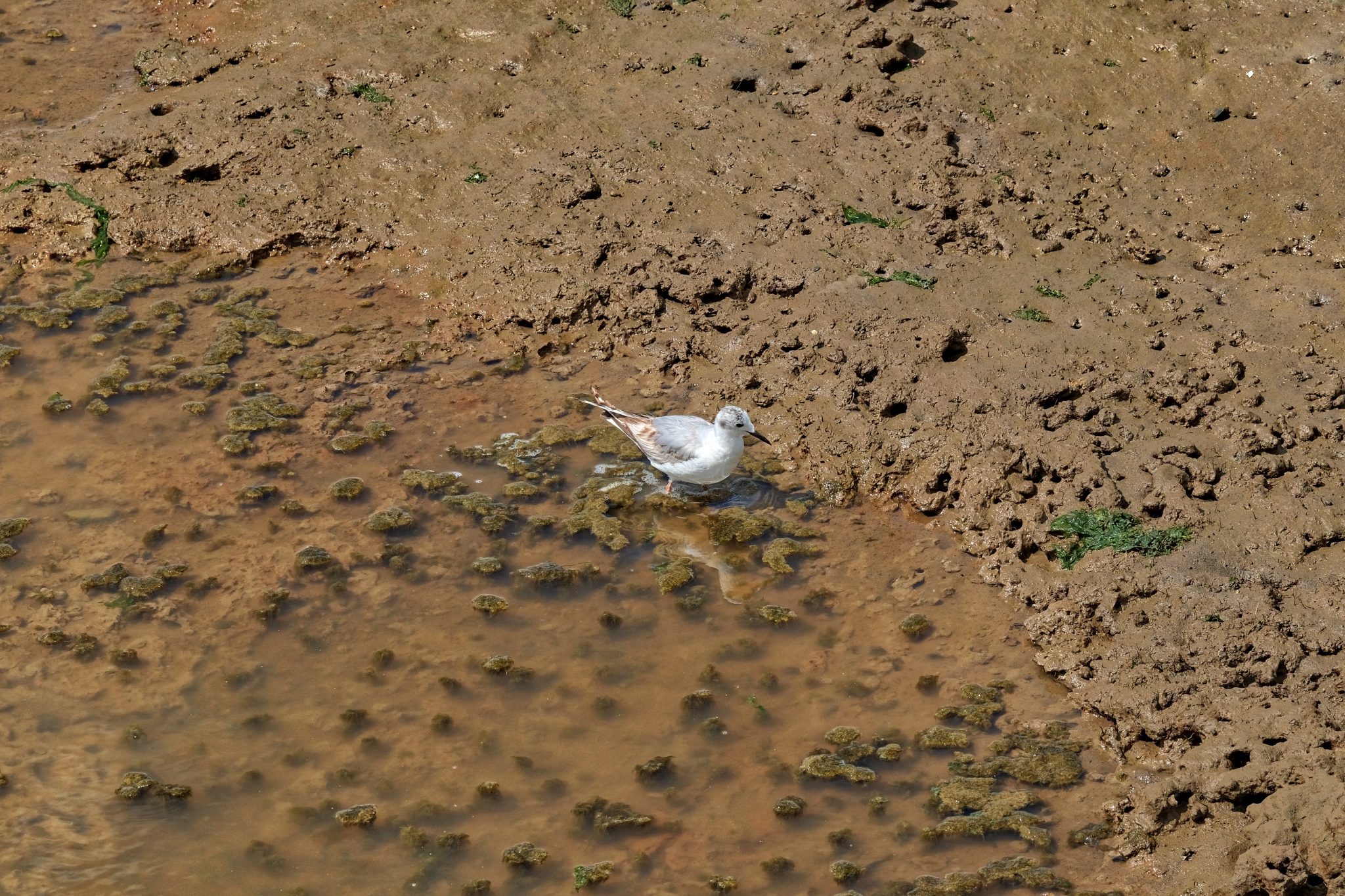 There were not as many birds as I somehow had expected . . . but there were birds.
There were not as many birds as I somehow had expected . . . but there were birds. A gull loitering in the muddy estuary . . .
A gull loitering in the muddy estuary . . . 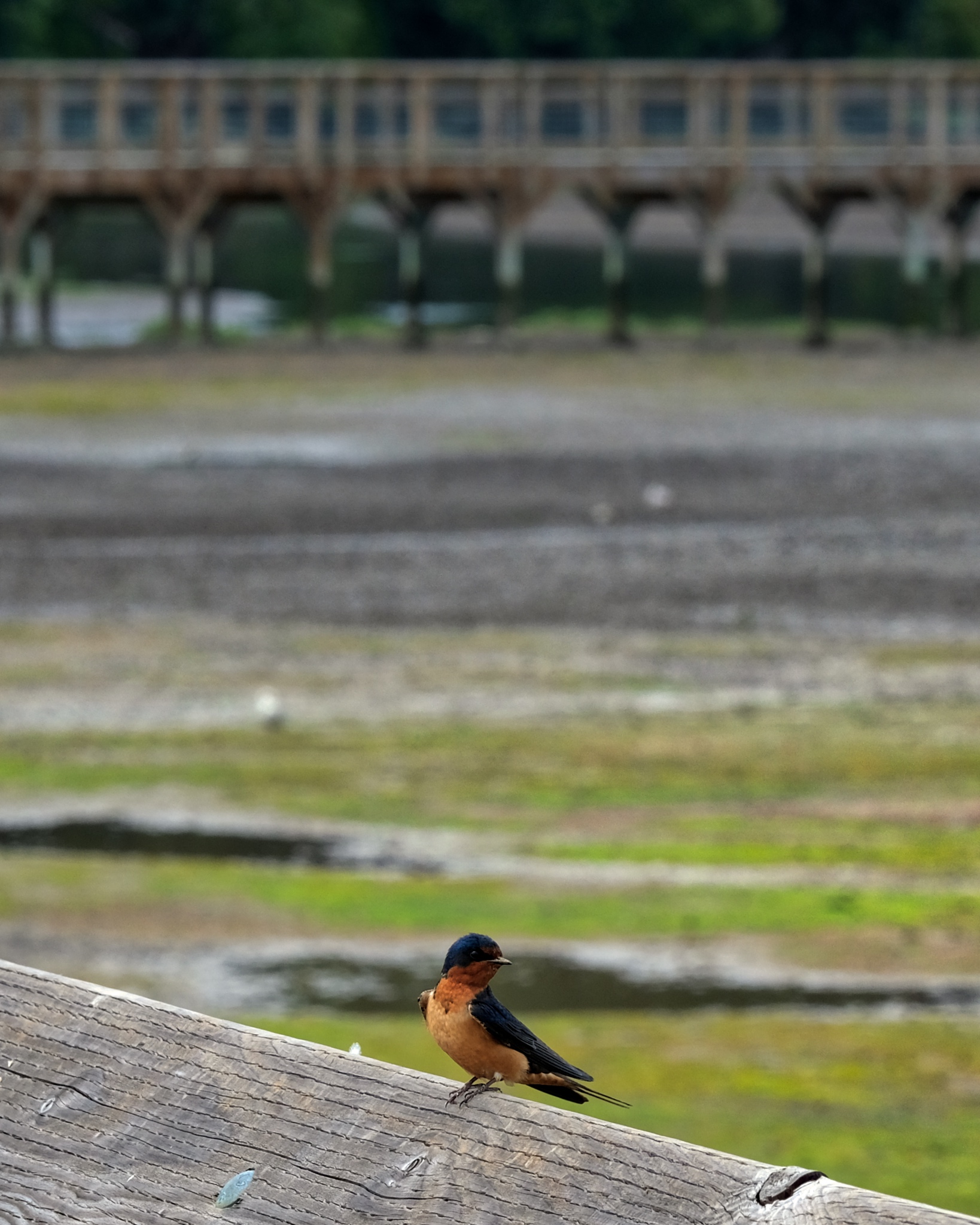 A friendly little fellow!
A friendly little fellow!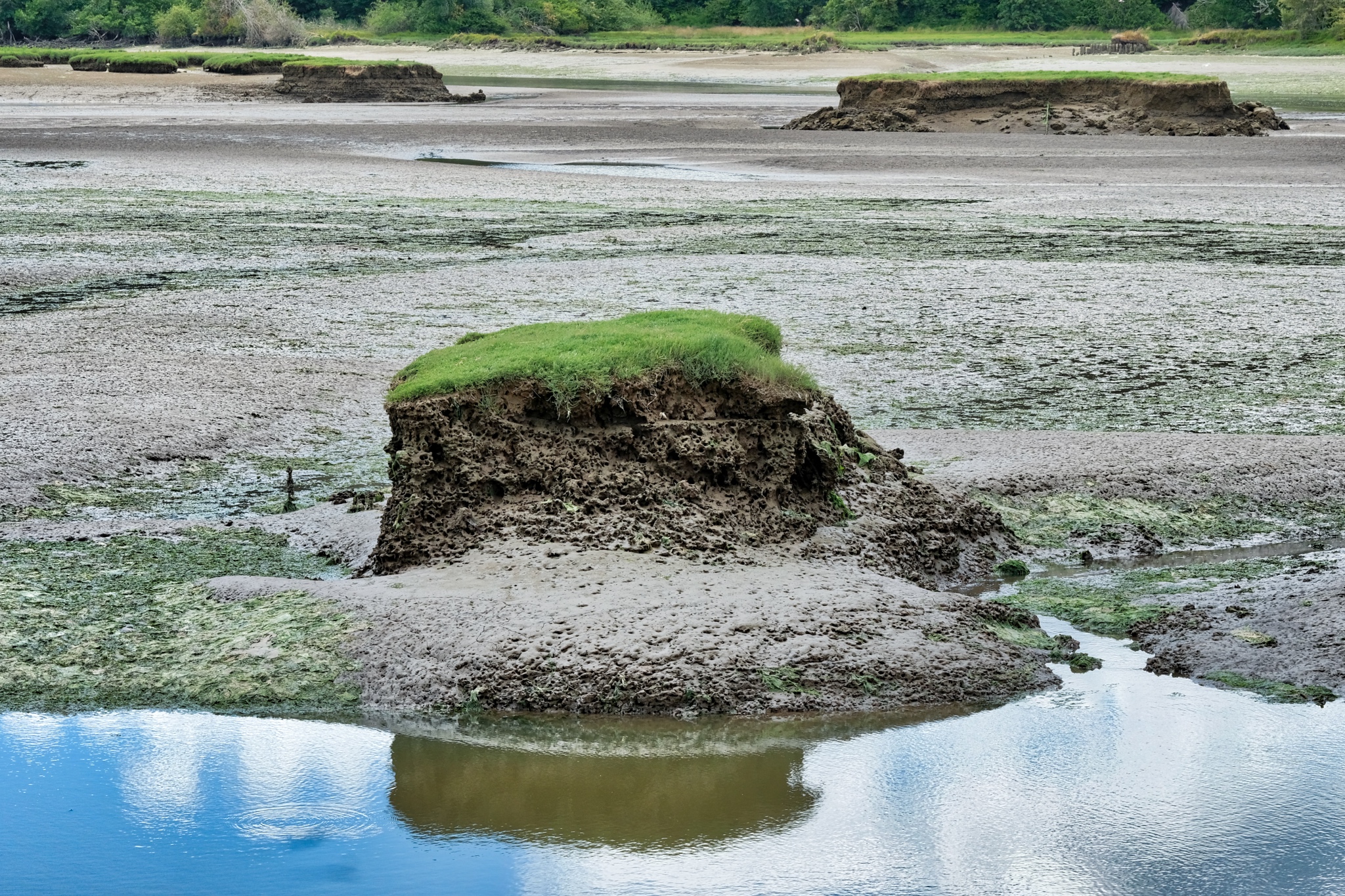 Evidence of sea level rise: the old level of the fields and 'dry' flats are eroding away with only a few small 'islands' of the old land level left. Only a few inches of sea level rise can cause this kind of erosion of wetlands.
Evidence of sea level rise: the old level of the fields and 'dry' flats are eroding away with only a few small 'islands' of the old land level left. Only a few inches of sea level rise can cause this kind of erosion of wetlands.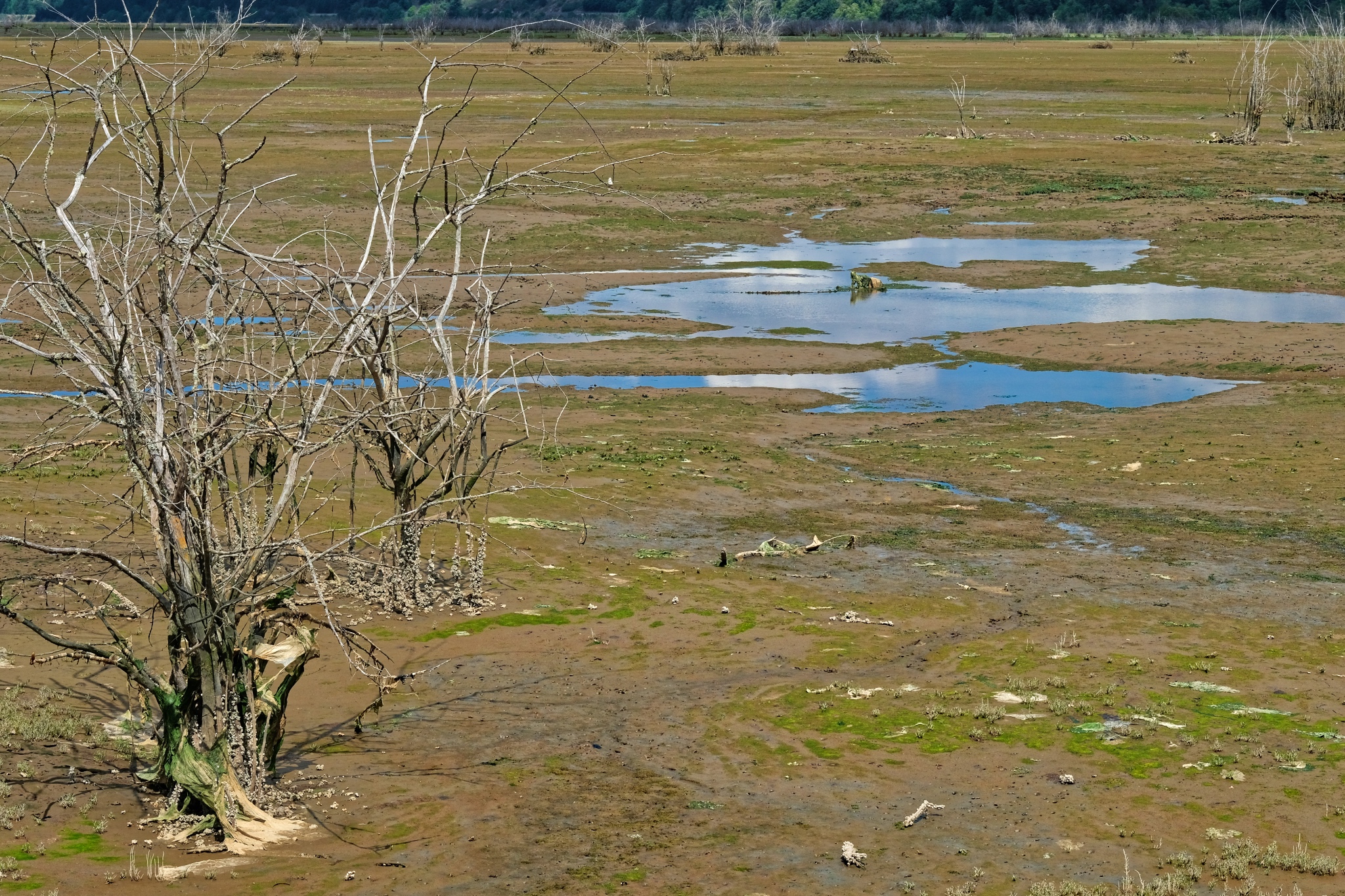 Sea water inundation into previously 'dry' areas.
Sea water inundation into previously 'dry' areas.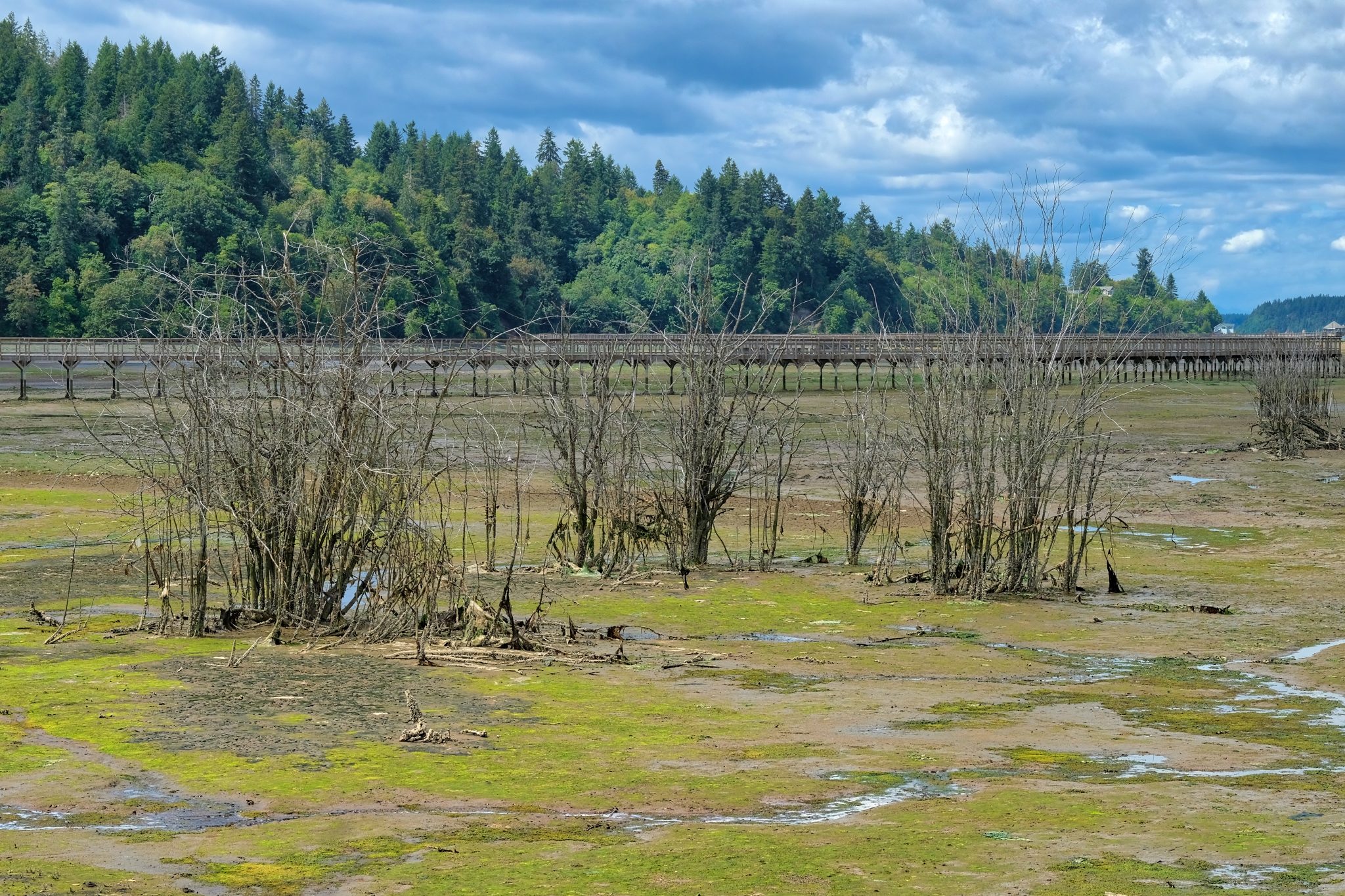 A new ecology is beginning to develop.
A new ecology is beginning to develop.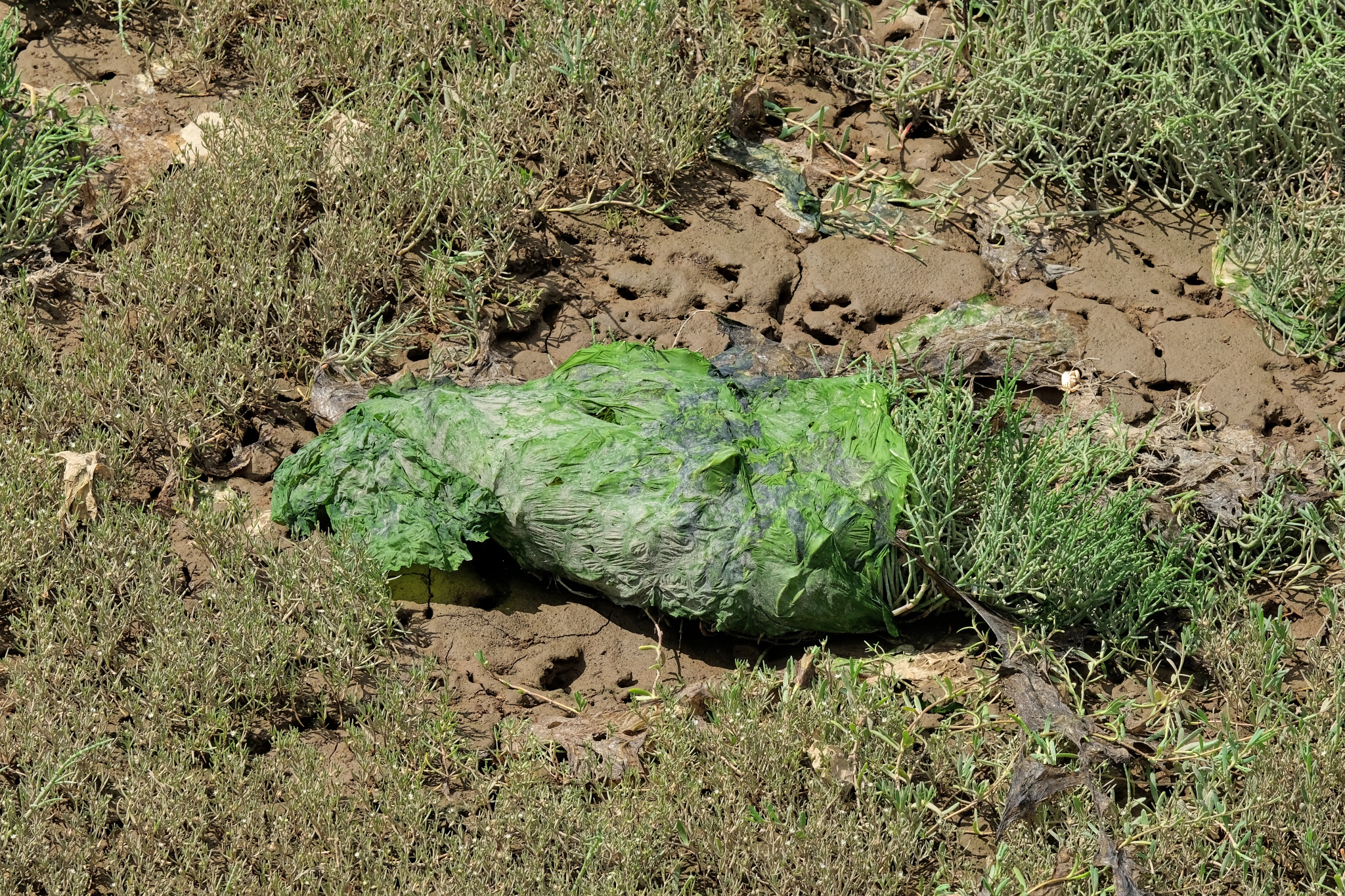 Altogether too much plastic. The Human Being!!!
Altogether too much plastic. The Human Being!!! Here and there were sand bag earthworks to direct the drainage flow under the walkway to the Nisqually River.
Here and there were sand bag earthworks to direct the drainage flow under the walkway to the Nisqually River.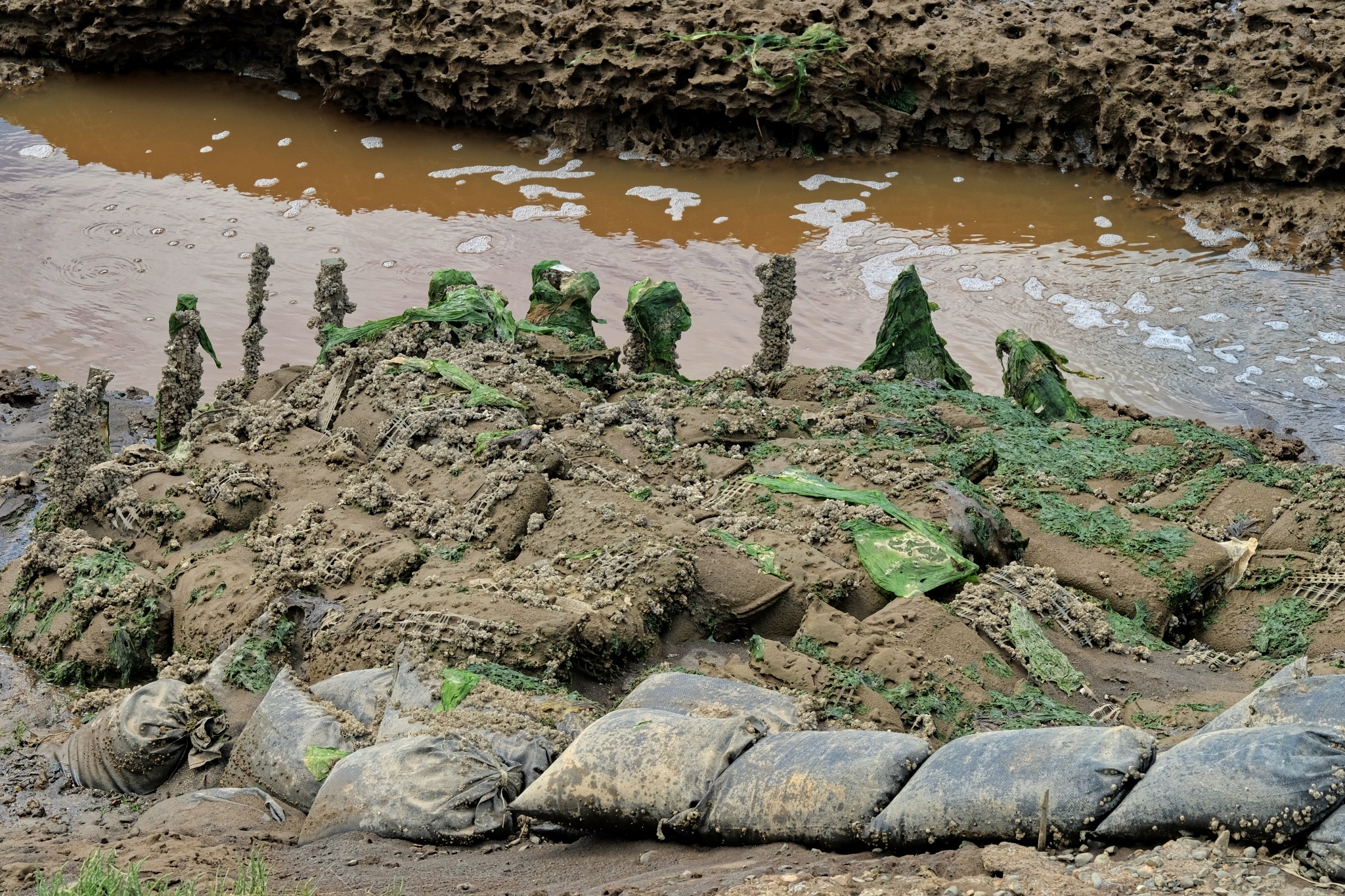 I imagine this water redirection effort to save the walkway is a never-ending chore.
I imagine this water redirection effort to save the walkway is a never-ending chore. Stumps washed down the river when it raged in winter.
Stumps washed down the river when it raged in winter.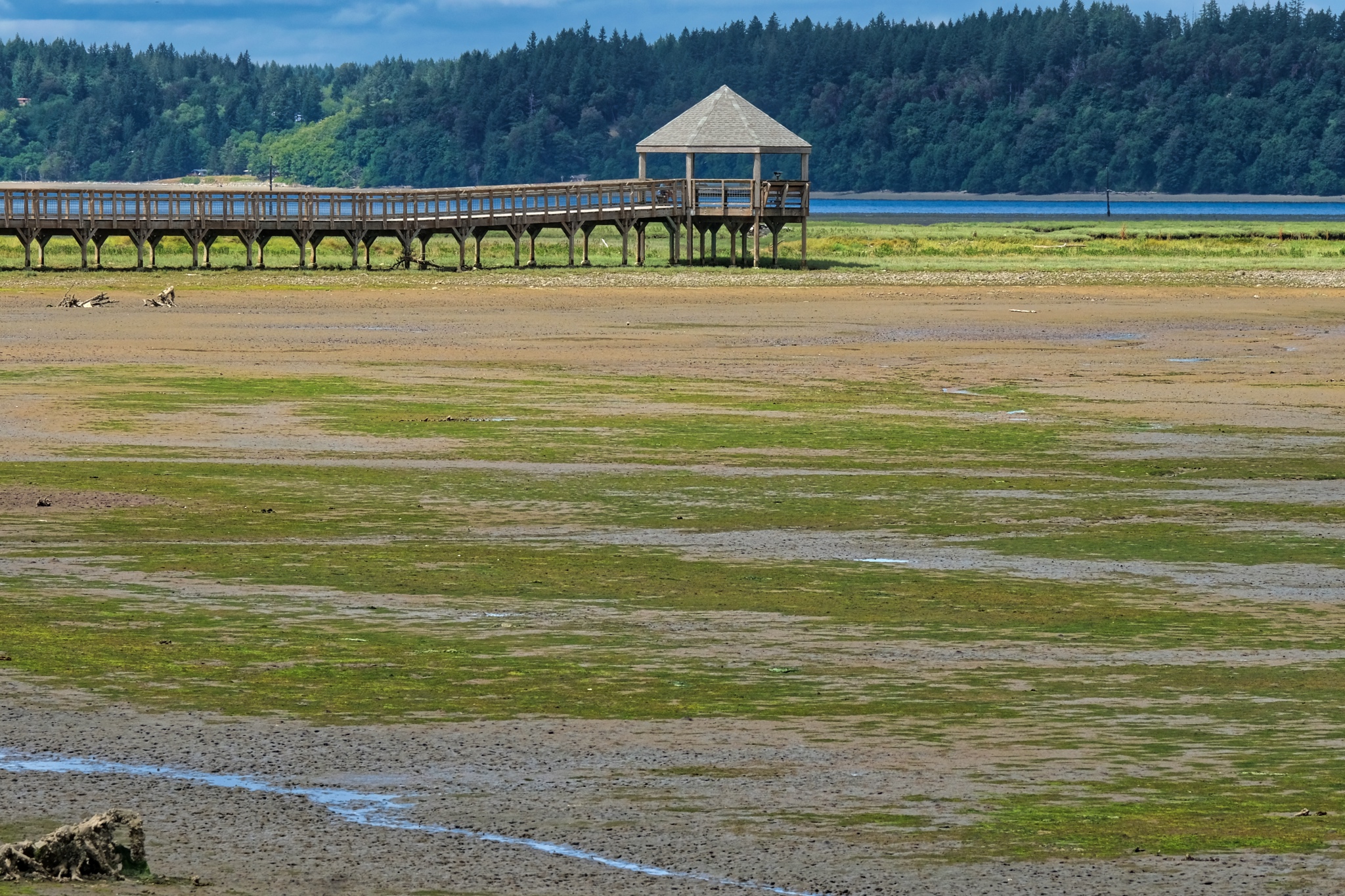 My ultimate goal, and the terminus of the walkway, was several miles from dry land!
My ultimate goal, and the terminus of the walkway, was several miles from dry land!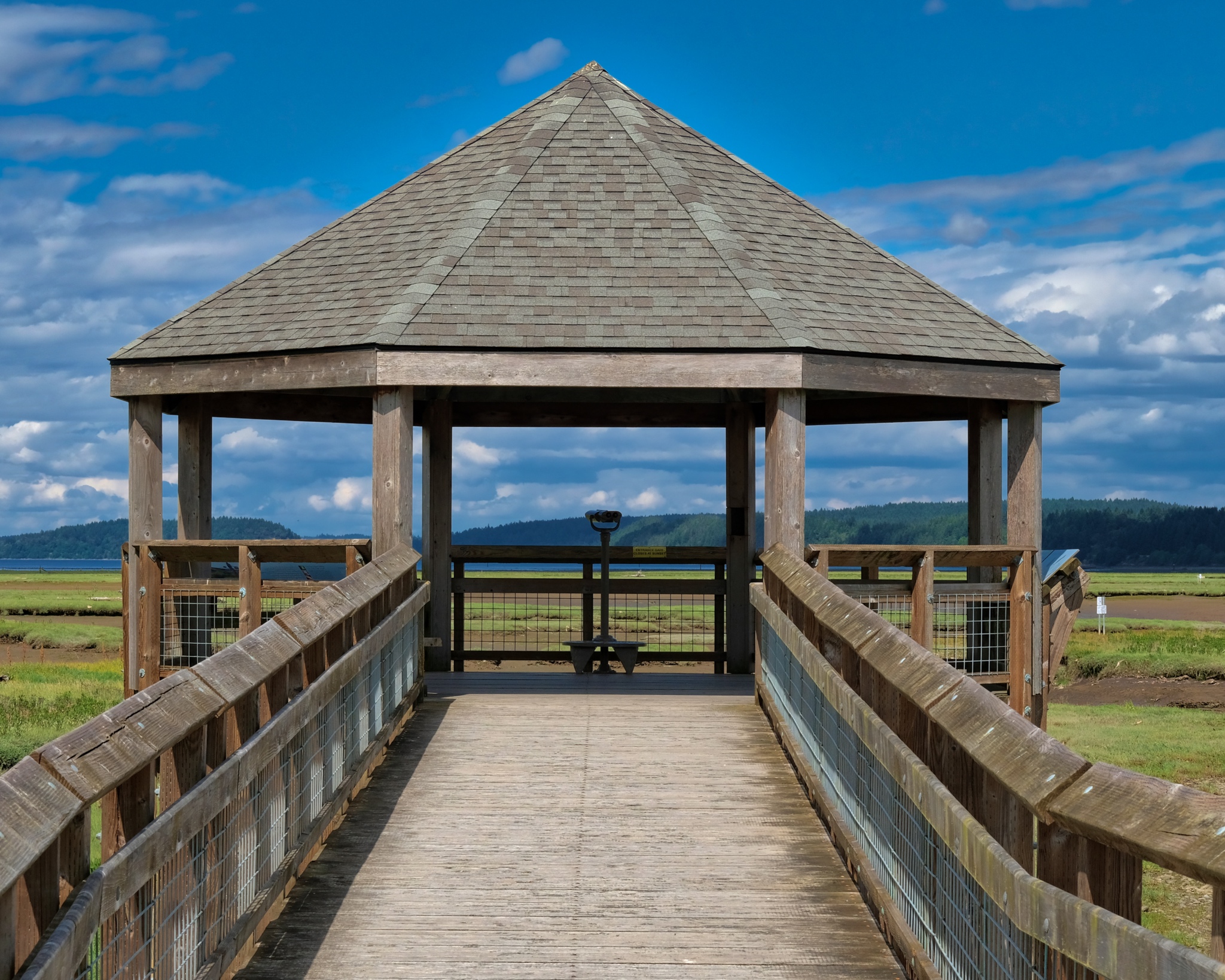 The final observation pavilion was not too far from the actual Puget Sound.
The final observation pavilion was not too far from the actual Puget Sound.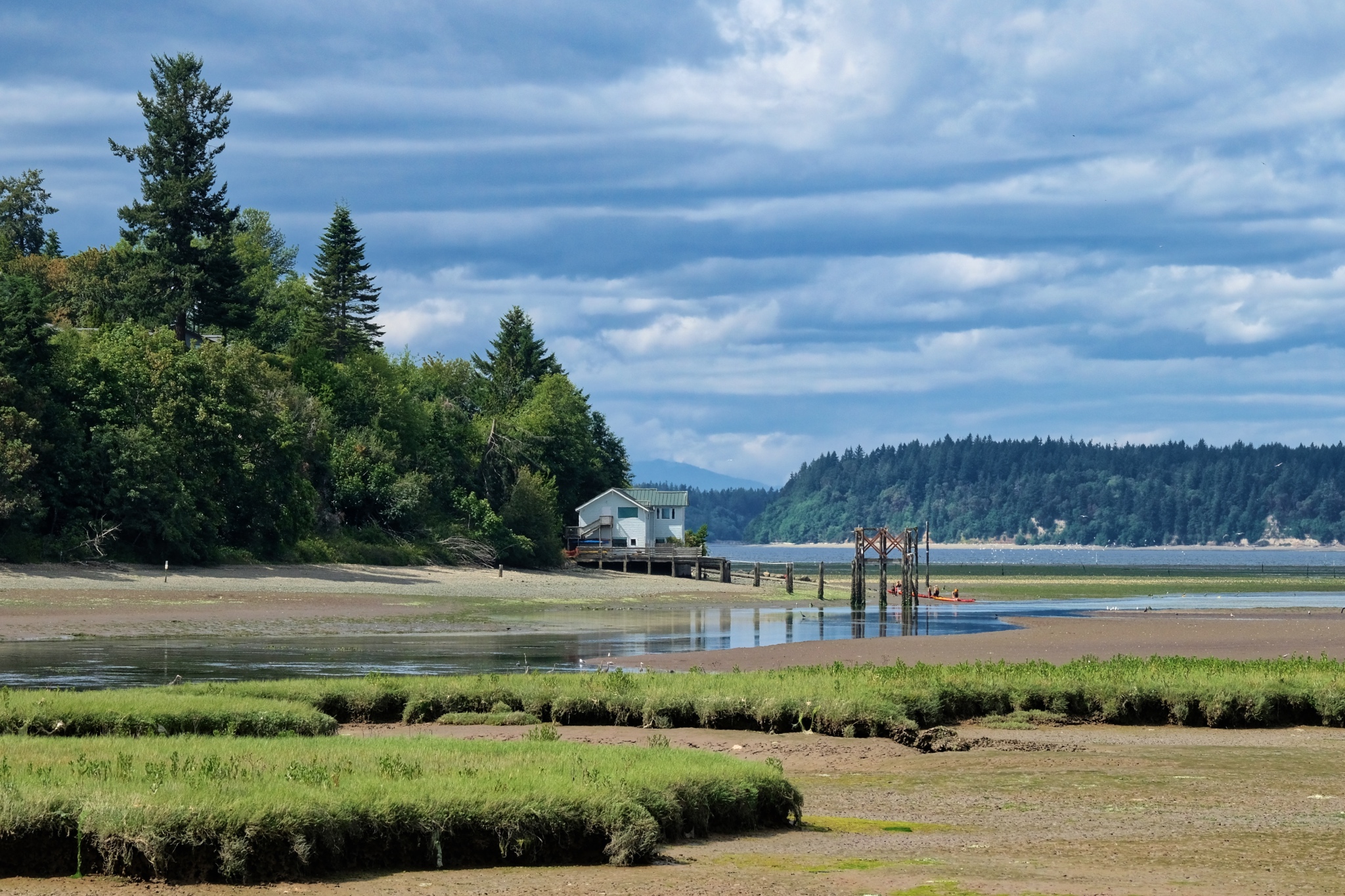
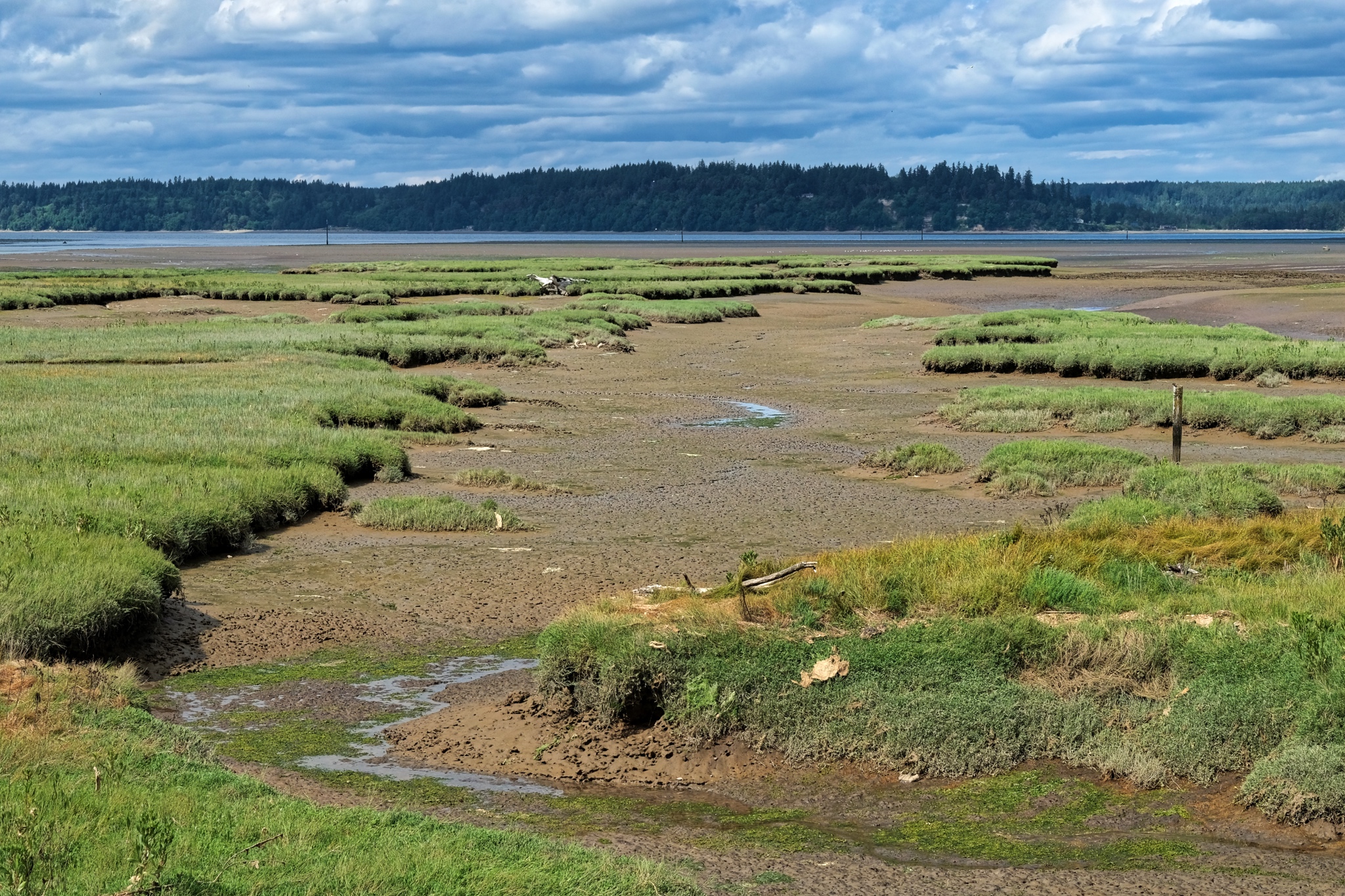 Puget Sound in the background.
Puget Sound in the background.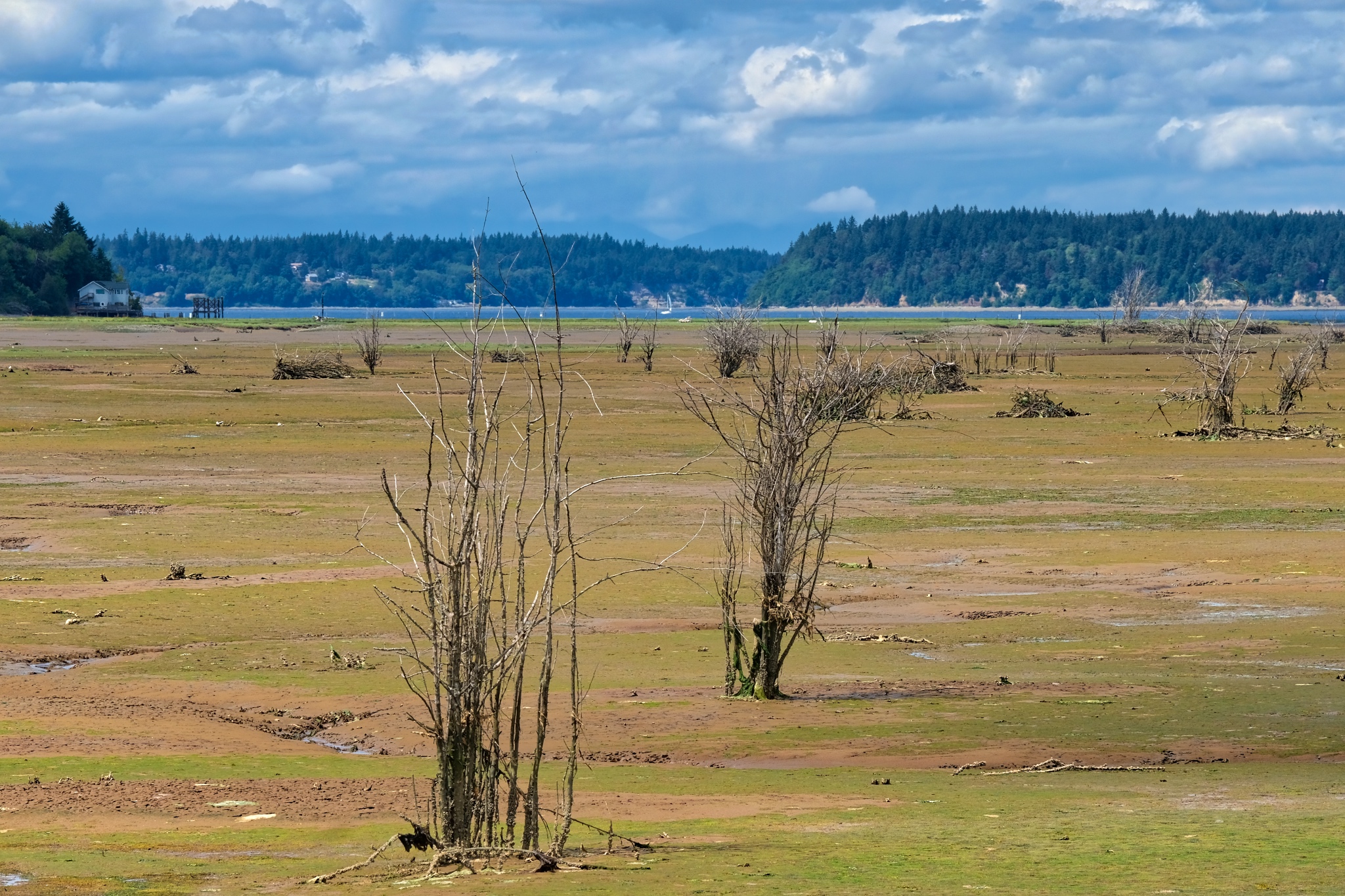 It was a beautiful day to be out in the world . . . making the most of the supramundane.
It was a beautiful day to be out in the world . . . making the most of the supramundane.On an Oregon Filbert Farm
 Wednesday, May 23, 2018 at 7:15AM
Wednesday, May 23, 2018 at 7:15AM  Out n the farm, just north of Keizer, Oregon, a storm approaches.
Out n the farm, just north of Keizer, Oregon, a storm approaches.
 Western Oregon in mid-Spring . . . breathtaking beauty.
Western Oregon in mid-Spring . . . breathtaking beauty.
 I am staying with a friend who keeps bees on his 'hobby' filbert farm.
I am staying with a friend who keeps bees on his 'hobby' filbert farm.
 A large puff of flowers being pollinated . . .
A large puff of flowers being pollinated . . .
 Busy bees from the farm's bee hives.
Busy bees from the farm's bee hives.
 Bees are not the only insects that carry out pollination duties . . . flies do to.
Bees are not the only insects that carry out pollination duties . . . flies do to.
 Wild clover growing at the fringes of the orchard and gardens.
Wild clover growing at the fringes of the orchard and gardens.
 Late in the afternoon . . . one small shaft of light found it's way through the bushes to find this one hidden flower. WOW!
Late in the afternoon . . . one small shaft of light found it's way through the bushes to find this one hidden flower. WOW!
 Such a lovely variety of magnificent flowers all around the farm.
Such a lovely variety of magnificent flowers all around the farm.
 A whole world in one flower . . .
A whole world in one flower . . .
 Ravishingly beautiful . . .
Ravishingly beautiful . . .

So many flowers . . . I wish I knew the names of all of them.
 Many flowers showed signs of flowering for a long time . . . as there were many stages of development all on the same stalk.
Many flowers showed signs of flowering for a long time . . . as there were many stages of development all on the same stalk.
 Deep red . . .
Deep red . . .
 And a salmon rose . . .
And a salmon rose . . .
 A yellow marvel hidden deep in the reeds . . .
A yellow marvel hidden deep in the reeds . . .
 Oh my! The patterns!!!
Oh my! The patterns!!!
 I have to always keep an eye open for this mean, aggressive rooster. He will attack without eating!
I have to always keep an eye open for this mean, aggressive rooster. He will attack without eating!
 Nature's flower arrangements . . .
Nature's flower arrangements . . .
 Busy bees all across the many flowers in the garden . . .
Busy bees all across the many flowers in the garden . . .
 I love these bursts of life . . .
I love these bursts of life . . .
 A never-ending landscape of flowery bouquets . . .
A never-ending landscape of flowery bouquets . . .
 It is hard to believe these waxy flowers are real . . .
It is hard to believe these waxy flowers are real . . .
 Tiny flowers in the deep grasses.
Tiny flowers in the deep grasses.
 While some plants throw out many, many blossoms, others offer only a few brilliant targets for pollination.
While some plants throw out many, many blossoms, others offer only a few brilliant targets for pollination.
 The back garden . . .
The back garden . . .
 Busy bees . . .
Busy bees . . .
 A busy bee getting lost in the white folds . . .
A busy bee getting lost in the white folds . . .
 Lovely green . . .
Lovely green . . .
 Lovely berry blossoms . . .
Lovely berry blossoms . . .
 It has been lovely staying out in the Oregon countryside.
It has been lovely staying out in the Oregon countryside.
 Flowers everywhere . . . down in the bottom of the garden's ground cover too.
Flowers everywhere . . . down in the bottom of the garden's ground cover too.
 A tiny world of flowers.
A tiny world of flowers.
 Afternoon . . . .
Afternoon . . . .
 Late afternoon puffs of white . . .
Late afternoon puffs of white . . .
 Oregon is known for its rhododendrons . . .
Oregon is known for its rhododendrons . . .
 The farmhouse.
The farmhouse.
 A nutty farmer . . . er . . . a farmer of nuts.
A nutty farmer . . . er . . . a farmer of nuts.
 Some of the filbert orchards.
Some of the filbert orchards.
 Specialized filbert harvesting equipment: sweeper (left) and harvester (right)
Specialized filbert harvesting equipment: sweeper (left) and harvester (right)
 The last of this kind of early-blossoming flower . . .
The last of this kind of early-blossoming flower . . .
 I was completely infatuated with these purple beauties!
I was completely infatuated with these purple beauties!
 There were so many of these on one bush.
There were so many of these on one bush.
 Fantastic!
Fantastic!
 So green . . . it becomes purple!!!
So green . . . it becomes purple!!!
 The last of these messy orange flowers.
The last of these messy orange flowers.
 Astonishing beauty!
Astonishing beauty!
 Ready to burst.
Ready to burst.
 Morning opening . . .
Morning opening . . .
 Opening in morning's first light . . . fully open by afternoon!
Opening in morning's first light . . . fully open by afternoon!
 In all phases . . .
In all phases . . .
 The center exposed.
The center exposed.
 . . . and fully open!
. . . and fully open!
 More pink wonders.
More pink wonders.
 I LOVE these happy little things . . .
I LOVE these happy little things . . .
 A magnificent purple Iris!
A magnificent purple Iris!
 Remarkable variety of flowers in the garden.
Remarkable variety of flowers in the garden.
 Many different kinds of rhododendrons all over the garden.
Many different kinds of rhododendrons all over the garden.
 Gorgeous rhodies!
Gorgeous rhodies!
 The rhododendron must be the most 'flower-full' of all bushes!
The rhododendron must be the most 'flower-full' of all bushes!
 The variety of colors of the rhodies is amazing.
The variety of colors of the rhodies is amazing.
 Red rhododendrons too.
Red rhododendrons too.
 Bright salmon-colored rhodies . . .
Bright salmon-colored rhodies . . .
 I sometimes took photos of the same flower at different times of the day . . . in different light.
I sometimes took photos of the same flower at different times of the day . . . in different light.
 Small delicate little sprites of color!
Small delicate little sprites of color!
 A spray of pretty pink flowers.
A spray of pretty pink flowers.
 I was sometimes surprised by new bursts of blossoms . . . where there had been none only a few days before!
I was sometimes surprised by new bursts of blossoms . . . where there had been none only a few days before!
 These beautiful 'ornamental cherry' flowers came right out of the trunk only a foot off the ground . . . not on the limbs and branches!
These beautiful 'ornamental cherry' flowers came right out of the trunk only a foot off the ground . . . not on the limbs and branches!
 I LOVE flowers and am always happy when I am in a garden . . .
I LOVE flowers and am always happy when I am in a garden . . .

